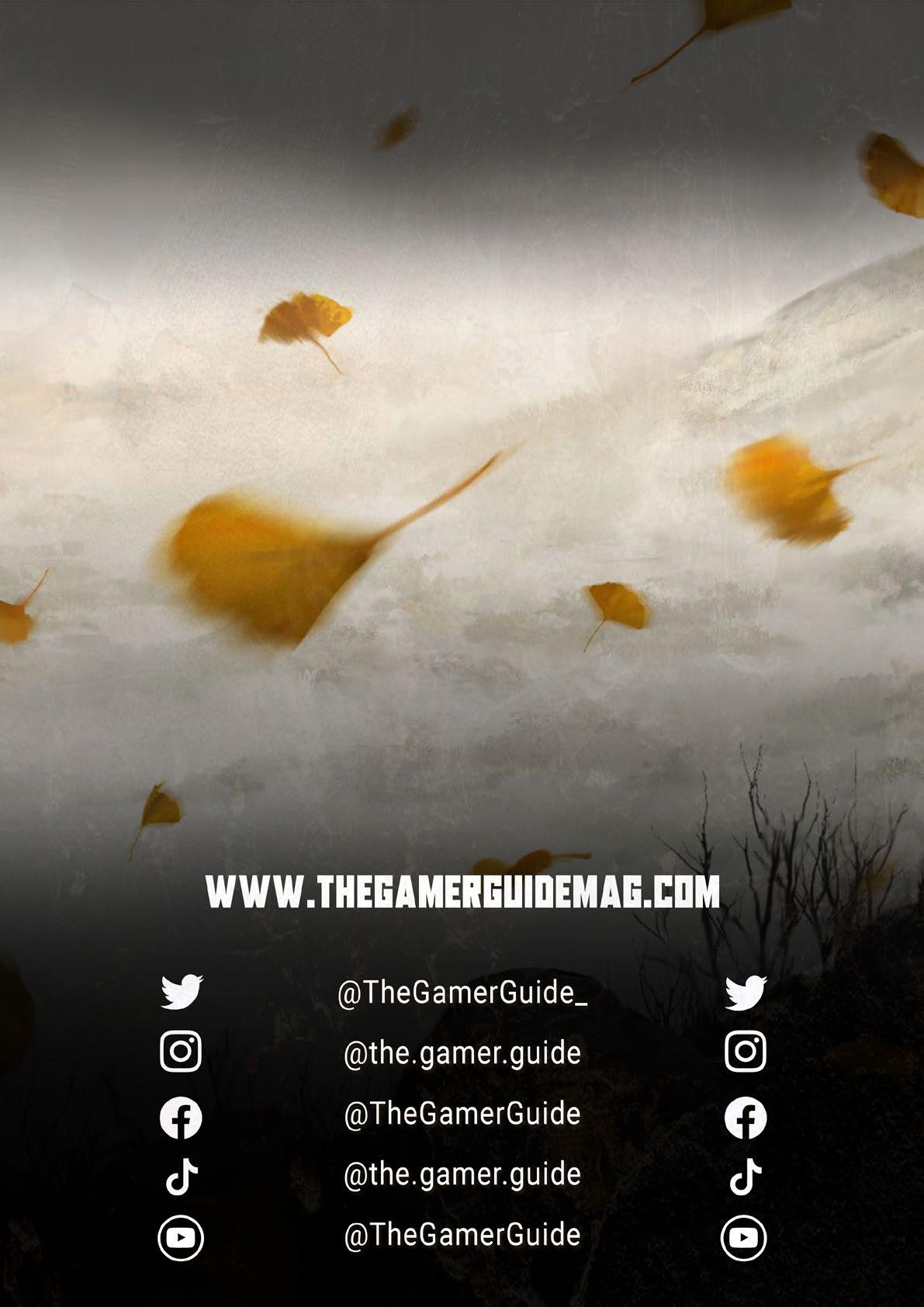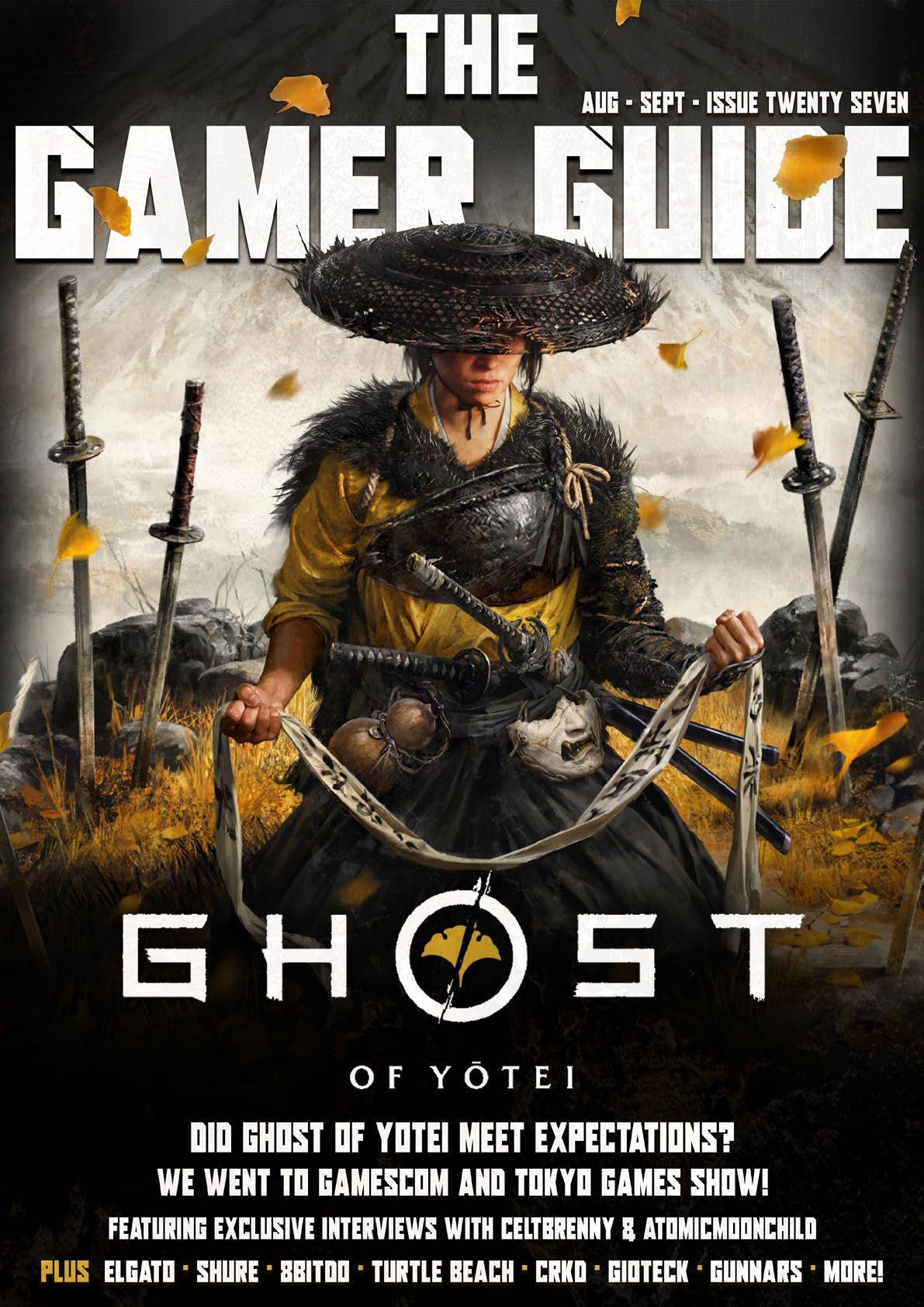




So, you have stumbled across The Gamer Guide and you are wondering, “Why do I need a guide to gaming?” Well, we will not guide you on how to game, but we will keep you informed as to what the gaming industry has to offer to get you the best gaming experience! Now, the second thing you are probably wondering is, “How did The Gamer Guide start?” Well, it can be a slightly long story. However, the shortened version is that the journey of three Twitch streamers brought them together, and with their passion for gaming, their experiences of streaming, and their love for everything within the world of entertainment… The Gamer Guide was born.
But what exactly is The Gamer Guide? The Gamer Guide is a digital magazine that focuses on everything gaming and streaming. This includes the latest/upcoming releases, reviews on gaming accessories, streaming tips, and even interviews with streamers and industry professionals from across the globe. Our readership is predominantly other gamers and streamers, just like us! We understand that the love and passion for gaming extends far beyond just playing a game, and that is what we are all about!
So, who are the people behind this magazine?
Brandon who goes by the name of Sawyer is the Co Owner & Content Director of The Gamer Guide. Predominantly Sawyer is an Xbox Gamer where he mostly plays his Xbox Series X but also has a Gaming PC, a Nintendo Switch, and even a Playstation 5, with a variety of platforms this gives Sawyer the ability to review the latest games for TGG. Sawyers main gaming love is Gears of war and RPGs because who doesn’t love an adventure or some chainsaw slaying with a cheeky blind fire or wall bounce. Due to Sawyers vast knowledge and background within the industry he came together with Emily to form The Gamer Guide.
Emily, also known as CreativeTrashGaming, came together with Sawyer to form the Gamer Guide, bringing her creative knowledge. Her favourite types of games are those with a compelling story, or those that just make her inner Fantasy Nerd go ballistic. She also likes spooky stuff, not just in the gaming realm but in general, and has a podcast with her two sisters where they discuss all things horror. Emily loves to dabble in the art world often, creating digital art pieces and learning new crafts. A graphics designer in her full time job, Emily is an integral part of the team whom designs the entire layout of our magazines from top to bottom!


tabletop corner elgato shure turtle beach crkd
8bitdo gunnar gioteck pixl
target components
mousepads
timeless 2025 gamescom 2025
tokyo game show 2025 interview with render cube playstation state of play
nintendo direct mafia: old country borderlands 4 hell is us
hollow knight: silksong
cronos: the new dawn
fata deum

above snakes gears of war: reloaded chipz'n'claws dying light: the beast ghost of yotei mgs: snake eater nicktoons: dice of destiny puzzle quest nba bounce celt brenny atomic moonchild



A brand new event landed in London this summer, and that is World's Lair! Located at the Between The Bridges venue on Southbank, World's Lair boasted a four-day festival of all things fantasy and RPG, with special guests, amazing performances, and unique vendors. We of course just had to attend and see for ourselves what this event was all about!
The event has two different time slots per day: Dawn and Dusk. Dawn tickets allowed entry from 12pm to 5:30pm, with its own unique shows, activities and performances. Dusk was the evening ticket, with entry from 6:30pm to 11pm, with one large show on the stage from the likes of Dark Dice, Oxventure and many more amazing performances. We attended on the Friday, which was the last day of festival, having started on the Tuesday that week. The venue itself was easy to get to and very accessible, which was important for both the attendees and organisers. Whilst it didn't take place in the entire Between The Bridges venue and was only in one section of it, it was completely closed off via a ramp, so there wasn't any confusion in regards to other businesses opening in the other sections. Upon getting there, we were greeted by an awning that was decorated with ivy, flowers and trinkets, akin to that of an elven party of sorts. It suited the theme of the event so well, having its own private bar and well-lit stage. Tables littered the majority of the space, some already occupied with tabletop RPG players either playing their first ever game or enjoying their on-going campaigns. Along the edges were a few vendors, including the likes of RPG Taverns, a live LARPing experience, calligraphy classes and so much more! Quizzes, shows and panels were also held on the stage throughout both sessions, including an amazing performance from The Nonstick Pans at the beginning of the evening segment of the day. We were lucky enough to catch Oxventure for our RPG show that evening, whilst other days had Rotating Heroes, Dark Dice and many other special guests.











Cosplayers were also encouraged to attend, with the organisers also taking part, not to mention the incredible creatures that were roaming around! We really wanted to try and bring the dragon home but, alas, he had his own cave of treasures to return to. During the Dawn segment of the day, there were multiple opportunities to win various prizes via a game of rollies (Three attempts to roll a D20, if you get a natural 20 you get a prize!) where even participating got you a sweet treat or a little badge, interactive mystery trails, and a quiz that we were extremely good at (We came last). There was even a segment in the quiz where each team were given a ball of blu-tac and were tasked with creating a Dungeons and Dragons monster of our choice. Naturally we chose a Beholder but with a twist: we gave him a little top hat. I think that's what got us the win! Our prize was an exclusive gold-plated Dungeons and Dragons coin, among a bunch of other prizes that were handed out throughout the day.
Overall this event was incredible, and this was just the start! There have already been talks of another World's Lair taking place next year, and we will keep our fingers crossed that it's going to happen! A huge thank you to the organisers of World's Lair for inviting us along. We had a tremendous time and cannot wait to see what next year brings!
If you want to find out more about World's Lair, check out their website below and follow their social media pages:
Photograph credits: Jon D Barker: @jondbarker | Jamie Yong: @jamiesyong




Reviewed by: Brandon Sawyer
The content creation landscape has never been more competitive. Audiences are sharper, expectations are higher, and the days when a grainy 720p feed could pass for “good enough” are long gone. In 2025, your camera is more than a tool — it’s your handshake, your stage lighting, your first impression. For streamers, YouTubers, podcasters, and event hosts, the webcam has become the beating heart of their visual identity. And while the market is flooded with options, from budget-friendly 1080p workhorses to AI-driven 4K marvels, one device has stepped forward with a clear message: you don’t have to choose between convenience and uncompromising quality. That device is the Elgato Facecam 4K.
From the moment you unbox it, the Facecam 4K feels like a product designed by people who get creators. The build is sleek but purposeful, with a reassuring weight that speaks to the quality of the glass and sensor inside. At its core is a 1/1.8-inch Sony STARVIS 2 CMOS sensor — a component usually reserved for high-end broadcast cameras — paired with Elgato’s custom Prime Lens. This combination delivers true 4K resolution at a buttery-smooth 60 frames per second, without the compression compromises that plague lesser webcams. HDR at 4K/30 adds depth and nuance to your image, balancing bright studio lights with shadow detail so your feed looks cinematic rather than clinical. The fixed-focus f/4.0 lens offers a 90-degree field of view that’s wide enough to capture your environment but tight enough to keep you as the focal point. Colours are rich without being oversaturated, skin tones are natural, and the sharpness is consistent edge-to-edge — no soft corners, no distracting warping. It’s the kind of image that makes you forget you’re looking at a webcam feed at all.
Where the Facecam 4K really separates itself is in its creator-first design philosophy. The inclusion of a 49mm filter thread is a masterstroke — something no other mainstream webcam offers. This single feature unlocks a world of creative control: slap on a polarizing filter to tame glare from glossy monitors, use an ND filter to keep your exposure perfect under bright key lights, or add a diffusion filter to give your stream a soft, filmic glow. It’s a nod to the DSLR world, but without the bulk, cables, or capture cards. Elgato’s decision to omit a built-in microphone is equally telling. This isn’t a webcam trying to be a jack-of-all-trades; it’s a specialist. By assuming you already have a dedicated mic, Elgato frees up internal space for better optics and processing, ensuring every pixel is working in your favour. The Camera Hub software completes the package, offering manual control over shutter speed, ISO, white balance, and even LUT support for custom colour grading. Paired with NVIDIA Broadcast integration for AIpowered background effects and face tracking, the Facecam 4K feels less like a peripheral and more like a personal broadcast studio.
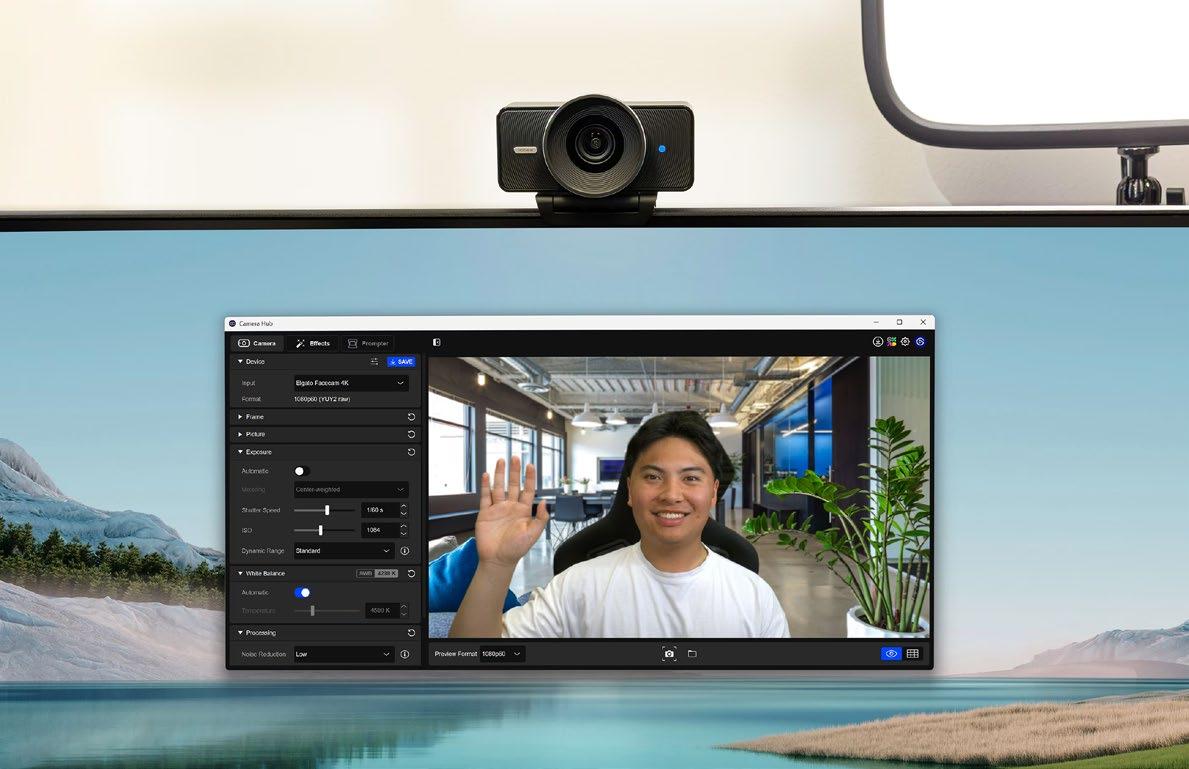
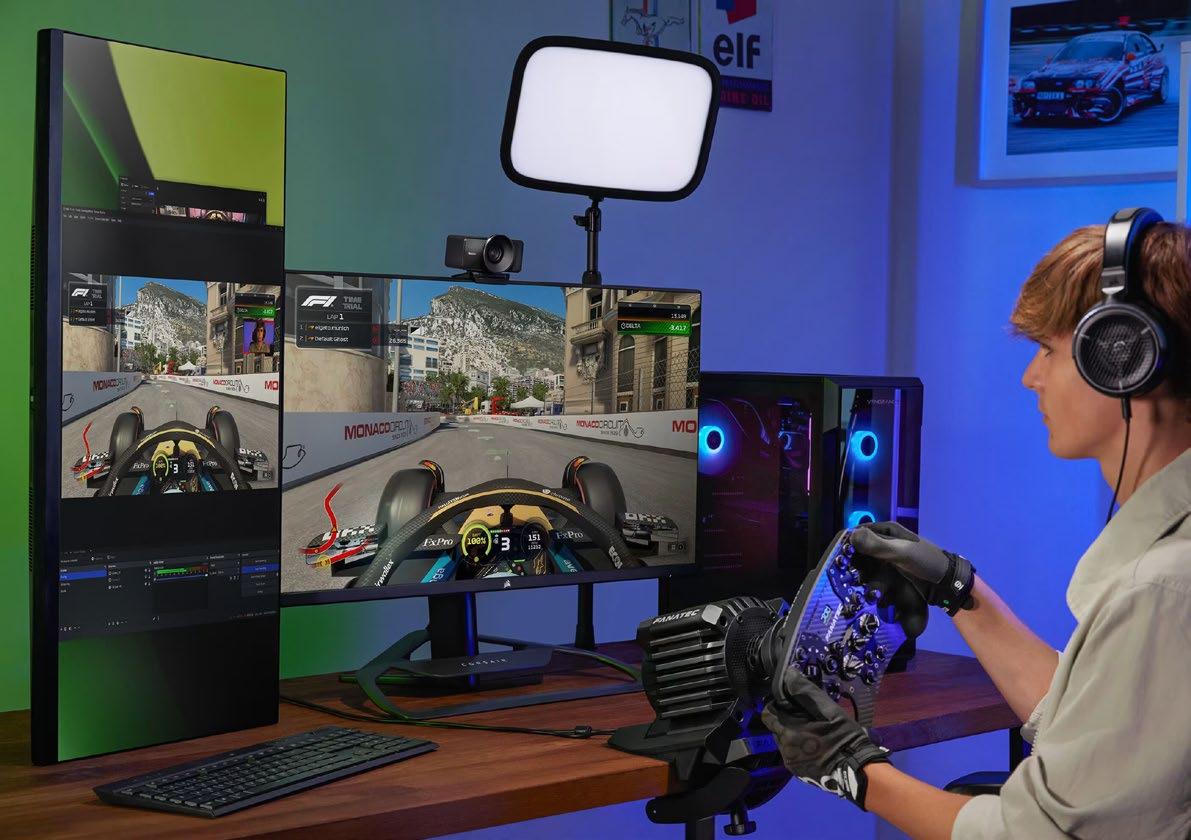


We put the Elgato Facecam 4K through its paces during the live esports hosting segment at one of our events. Under intense stage lighting, the HDR mode kept skin tones perfectly balanced while preserving the glow of the LED backdrop — no blown highlights, no crushed shadows. Switching to a tighter crop in Camera Hub for a mid-match interview took seconds, and the 4K/60 feed stayed razor-sharp even when streamed to a 20foot projection screen for the crowd.
In a remote creator interview lead-footage setup, the Facecam 4K became our primary “hero” shot. The guest joined from their home studio, and the wide 90-degree field of view captured both them and their creative workspace in perfect detail. The fixed focus kept them tack-sharp while the background remained naturally soft, and a quick LUT adjustment in Camera Hub gave the footage a warm, inviting tone that matched our brand aesthetic. When we cut to this feed during the live broadcast, it looked indistinguishable from our mirrorless camera angles — a testament to the Facecam’s broadcast-ready quality.
For one-on-one creator coaching sessions, we found the Facecam 4K’s manual controls invaluable. Adjusting ISO and shutter speed on the fly meant we could adapt instantly to changing daylight without breaking the flow of the conversation. The lack of a built-in mic meant no accidental audio bleed — their dedicated XLR mic handled sound, while the Facecam delivered flawless visuals.
Joe Findlay of CGMagazine praised it as “a quality image that nobody else in the space could match”, noting that the filter thread “opens up creative possibilities usually reserved for professional cameras.”
Popular Twitch streamer LilyPichu recently told her audience, “I swapped to the Facecam 4K for my music streams — the colours are so true-to-life, it actually feels like you’re in the room with me.”
YouTube tech reviewer EposVox called it “the first webcam that genuinely feels like a camera upgrade, not just a spec bump.”
Even esports host Goldenboy weighed in on social media, saying, “Used the Facecam 4K for a remote Valorant desk — zero fuss, perfect image, and my producer thought I was on a mirrorless.”
Against its rivals, the Facecam 4K holds its ground with quiet confidence. The Razer Kiyo Pro Ultra, at $299 / £289, boasts a larger 1/1.2-inch sensor and a bright f/1.7 aperture that thrives in near-darkness, but it’s bulkier, pricier, and lacks the filter compatibility that makes the Elgato so adaptable. The Insta360 Link 2, at around $200 / £199, brings clever AI tracking and overhead shooting modes, but its 4K tops out at 30fps and its colour reproduction can feel clinical. Logitech’s Brio 500, at $130 / £119, is a dependable budget choice, but its 1080p/30fps ceiling makes it less future-proof for creators chasing the sharpest possible image. Even the OBSBOT Tiny SE, with its AI tracking and high-frame-rate 1080p, can’t match the Facecam’s combination of clarity, control, and creative flexibility.
At $199.99 / £179.99, the Elgato Facecam 4K lands in a sweet spot that’s rare in creator gear. It’s a serious upgrade over entry-level webcams without straying into the price territory of ultrapremium models, yet it delivers features they simply don’t offer. For streamers, podcasters, and event hosts, it’s an investment that won’t bottleneck your production quality for years to come. It’s the kind of gear that grows with you — plug-and-play when you need it to be, but deep enough to reward you the more you learn.
If you want to unlock the full potential of the Facecam 4K, start with your lighting. Even though the Sony STARVIS 2 sensor handles low light impressively, pairing it with a soft key light at a 45-degree angle will give you that polished, studio-ready look. Experiment with the 49mm filter thread — a simple diffusion filter can take the edge off harsh LEDs, while a polarizer can eliminate distracting reflections from glasses or glossy backdrops.
In Camera Hub, don’t be afraid to switch to full
manual mode. Locking your shutter speed to double your frame rate (for example, 1/120 for 60fps) will give you natural motion blur, while manually setting white balance ensures your colours stay consistent across sessions. Save multiple presets — one for bright daylight, one for evening streams, and one for HDR interviews — so you can switch instantly without fiddling midbroadcast. Finally, if you’re streaming in 1080p, still capture in 4K internally. Downscaling from 4K to 1080p produces a sharper, cleaner image than shooting natively at 1080p, and gives you the flexibility to crop in for close-ups without losing quality.
Elgato has ever made — it’s a statement piece for the entire category. It proves that you can have DSLR-level control and image quality in a device that sits neatly on your monitor. It’s sharp, it’s fast, it’s adaptable, and it’s built with a clear understanding of what modern creators need. While a largeraperture competitor might edge it out in extreme low-light scenarios, no other webcam in 2025 offers this balance of performance, flexibility, and value. For that reason, it earns a confident 9.5 out of 10 and a well-deserved place at the top of any serious creator’s toolkit.
If you too want to get a hold of this awesome new Facecam 4k by Elgato or check out many other products that Elgato creates then you can do so at the link below.
Facebook: @Elgato
Instagram: @elgato
Twitter/X: @elgato
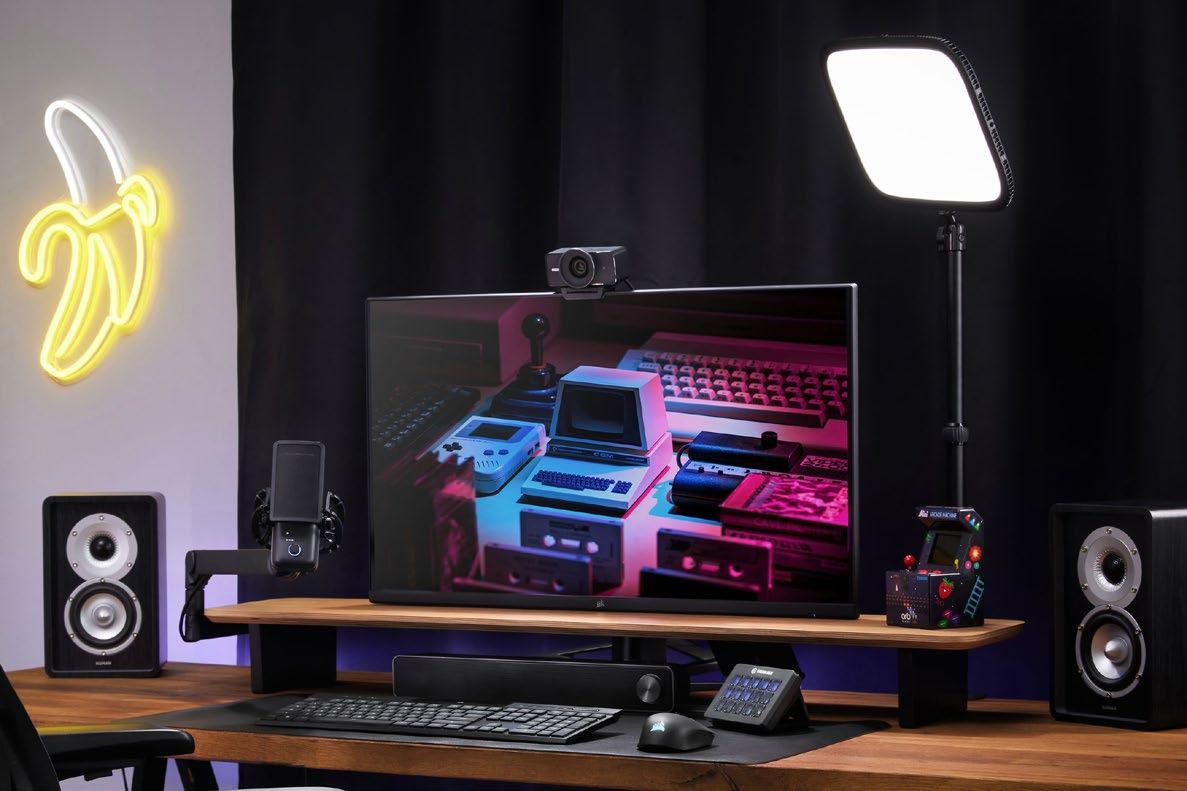


In the age of hybrid work, live streaming, and on-the-move content creation, your headphones are more than just a way to listen — they’re your personal control room. Whether you’re editing a podcast in a coffee shop, monitoring a live stream backstage, or zoning in on a game review draft in a noisy convention hall, the right pair can make or break your focus. Shure, a name synonymous with professional audio since 1925, has long been trusted by musicians, broadcasters, and engineers. With the AONIC 40, they’ve distilled much of the DNA from their flagship AONIC 50 into a more portable, more affordable package — without losing the sonic accuracy that’s made the brand a studio staple.
Available in sleek black or a striking white/tan finish, the AONIC 40 immediately feels like a tool for serious listeners. At $249 / £215, it undercuts many premium ANC headphones while still offering a feature set that rivals them. Inside, dynamic drivers deliver a frequency range of 20Hz to 20kHz, tuned for Shure’s signature accurate, slightly bass-forward sound. Bluetooth 5.0 connectivity supports SBC, AAC, aptX, and aptX HD codecs, ensuring high-quality wireless audio across devices, and you can also connect via USB-C or the included 3.5mm cable for lossless listening. The earcups are generously padded with memory foam and faux leather, providing a snug seal that enhances both passive isolation and bass response. The headband is cushioned, though after very long sessions some users may feel a touch of pressure — a trade-off for the secure fit. The collapsible design is a welcome improvement over the AONIC 50, making these far easier to pack into a creator’s travel kit.
The AONIC 40’s Active Noise Cancellation isn’t the most aggressive in the category — Bose and Sony still lead there — but it’s more than capable of taming the hum of an airplane cabin or the
chatter of a busy café. The Environmental Mode is particularly useful for creators who need to stay aware of their surroundings during shoots or events, letting in just enough ambient sound without removing the headphones.
Shure’s Play+ app is where the AONIC 40 really shines for audio tinkerers. You can fine-tune the EQ to your exact taste, save multiple profiles, and even adjust the ANC strength. For creators who work across different environments — from quiet editing suites to noisy convention floors — this flexibility is invaluable.
We first put the AONIC 40 to work during onsite video editing at a gaming expo. With ANC engaged, the roar of the show floor faded into a low murmur, letting us focus on fine-tuning audio levels without distraction. The accurate midrange made dialogue editing a breeze, while the slightly boosted low end gave game trailers and highlight reels the cinematic punch they needed.
During a remote podcast recording, the AONIC 40’s wired USB-C connection proved a lifesaver. Not only did it deliver pristine, latency-free




monitoring, but it also kept the headphones powered throughout the two-hour session. Switching to Environmental Mode between takes allowed for quick, natural conversation with the co-host without removing the cans. In a creator interview lead-footage setup, we used the AONIC 40 as our monitoring headphones while capturing audio from a Shure SM7B. The isolation was strong enough to catch subtle plosives and mic handling noise in real time, saving us from post-production headaches.
YouTube audio reviewer Oluv’s Gadgets praised the AONIC 40’s tuning, calling it “one of the most accurate wireless headphones I’ve tested — it’s like having studio monitors on your head.”
Streamer and musician Harris Heller noted, “For music production on the road, the AONIC 40 hits a sweet spot — portable, comfortable, and honest in its sound.”
Tech journalist Tim Gideon at PCMag highlighted its versatility, saying it offers “accurate, highly customizable audio performance and multiple connectivity methods” while acknowledging that ANC isn’t its strongest suit.
Against its rivals, the AONIC 40 plays to its strengths. The Sony WH-1000XM5 ($399 / £379) delivers stronger ANC and a more relaxed fit, but its sound signature is warmer and less neutral. The Bose QuietComfort 45 ($329 / £319) remains the ANC king but lacks the same level of EQ customization. The Sennheiser Momentum 4 Wireless ($349 / £299) offers longer battery life, but its bass-tilted tuning won’t appeal to everyone. The AONIC 40’s advantage lies in its studio-grade accuracy, multi-connection flexibility, and travel-friendly design at a lower price point.
At $249 / £215, the Shure AONIC 40 is a
compelling choice for creators who prioritise sound accuracy and flexibility over maximum ANC strength.
It’s a headphone that can move seamlessly from the editing desk to the airport lounge to the live event floor, all while delivering a consistent, trustworthy sound. For those who want Shure’s audio pedigree without the bulk or cost of the AONIC 50, it’s a smart investment.
If you’re editing or mixing, connect via USB-C to bypass Bluetooth compression and enjoy fullresolution audio. In the Shure Play+ app, create separate EQ profiles for different tasks — one flat for editing, one with a slight bass lift for casual listening, and one with a treble boost for noisy environments.
When travelling, keep ANC on its medium setting to balance noise reduction with battery life, which can stretch up to 25 hours. And don’t overlook Environmental Mode during shoots — it’s perfect for quick check-ins with crew without breaking your monitoring flow.
The Shure AONIC 40 isn’t trying to be the flashiest headphone on the market — it’s aiming to be the most dependable in its class. With accurate, customizable sound, multiple connection options, and a foldable, travelfriendly build, it’s a workhorse for creators who need their gear to perform anywhere. While its ANC won’t dethrone the category leaders, its audio quality and versatility more than make up for it. For creators who live between the studio and the road, it earns a confident 9 out of 10 and a spot in the everyday carry bag.
If you too want to get a hold of these awesome AONIC 40 Wireless Noise Cancelling headphones by Shure or check out many other products that Shure creates then you can do so at the link below.




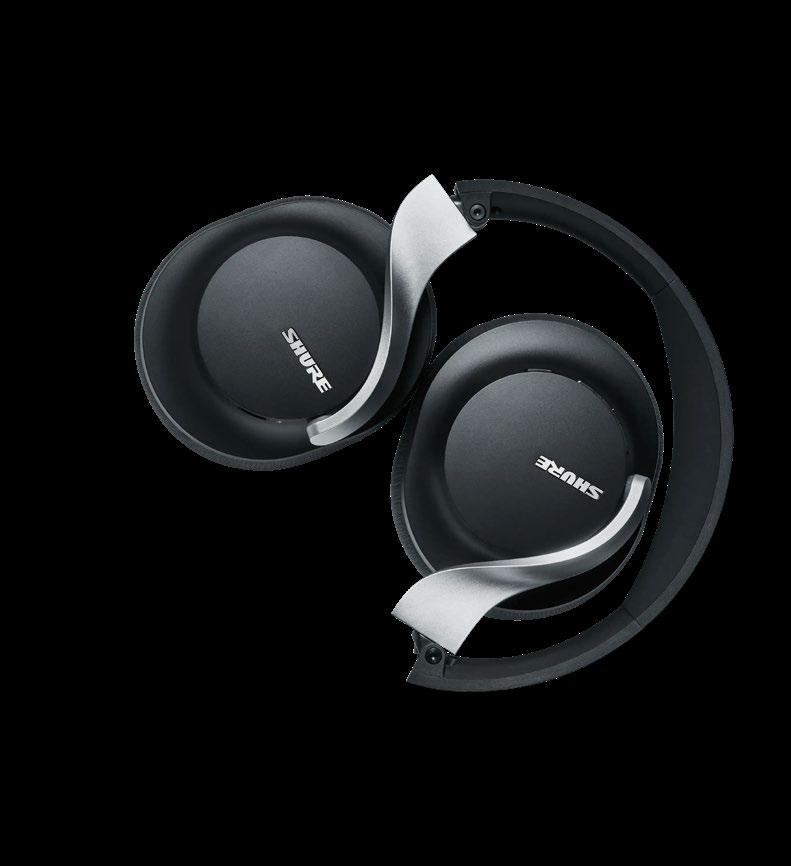


Reviewed by: Brandon Sawyer
The click of the 3.5mm jack sliding into the Nintendo Switch 2’s port is almost ceremonial. The console’s screen glows in your hands, the world around you fades, and the soft embrace of the Turtle Beach Airlite Fit Charcoal settles over your ears. In an instant, the chatter of the room is gone, replaced by the rustle of wind through Zelda’s fields, the splash of ink in Splatoon 4, and the distant roar of engines in Mario Kart 9. It is not just sound, it is presence. The Airlite Fit does not announce itself with flashy features or overengineered gimmicks, it simply disappears, leaving you alone with the game in a way that feels personal and uninterrupted.
The Nintendo Switch 2 has ushered in a new wave of handheld-console hybrid gaming, and the Turtle Beach Airlite Fit Charcoal feels like it was designed to slot seamlessly into that ecosystem. Officially licensed by Nintendo and priced at a modest £19.99, it sits in the budget category, yet from the moment we connected it to the Switch 2, it became clear this is not a throwaway accessory. Over weeks of testing, from sprawling The Legend of Zelda exploration to high-octane Splatoon 4 turf wars, the Airlite Fit proved itself as a headset that understands the needs of Switch 2 players, comfort, clarity, and convenience without the clutter.
The Airlite Fit’s design philosophy is simple, make it light enough to disappear on your head, but sturdy enough to survive daily use. The adjustable headband clicks into place with a reassuring firmness, and the matte charcoal finish gives it a subtle, modern aesthetic that pairs beautifully with the Switch 2’s sleeker profile. The over-ear jerseyknit cushions are a highlight, soft and breathable yet firm enough to maintain shape and provide decent passive noise isolation. During our longest session, a five-hour Mario Kart 9 tournament, there
was no ear fatigue, no heat build-up, just consistent comfort.
For a wired headset at this price, the Airlite Fit’s 40mm drivers deliver a surprisingly full-bodied sound. Highs are crisp without being sharp, mids are warm and balanced, and the bass has enough punch to give Metroid Prime 4’s soundtrack real weight without drowning out detail. It is not a surround sound powerhouse, but for the Switch 2’s stereo output, it feels perfectly tuned. The noise-cancelling, bi-directional microphone is another win, keeping voice chat in Fortnite and Overwatch 2 clean and free from background noise. The flip-to-mute function is instant and intuitive, a small but vital quality-of-life feature during competitive play.
The Airlite Fit thrives in its simplicity. No wireless pairing, no charging, no software, just plug it into the Switch 2’s audio jack and you are ready to go. This makes it the perfect “grab-and-go” headset, whether you are gaming on the sofa, in handheld mode on a train, or at a friend’s house for a local multiplayer night. Its lightweight




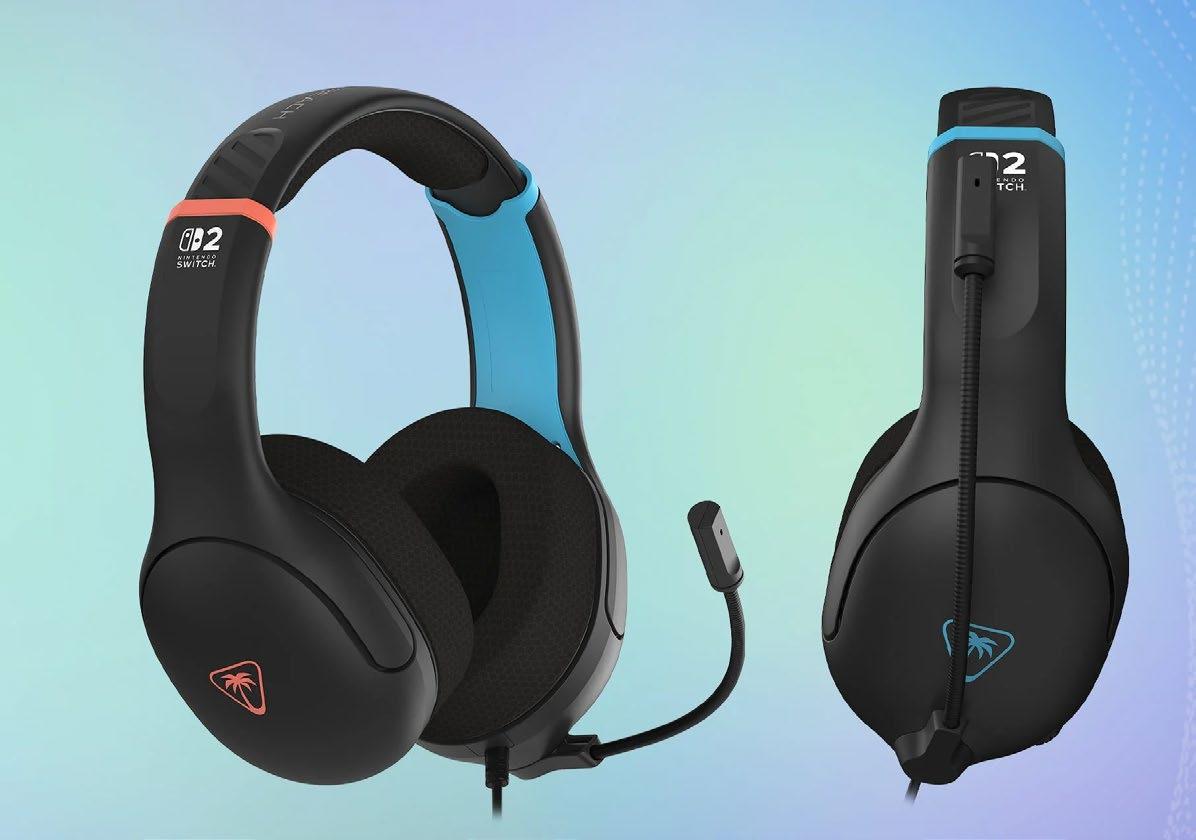


build means you can wear it for hours without noticing, and its durability means you can toss it in a backpack without worry.
At under £20, the Airlite Fit is a rare find. It does not pretend to compete with high-end headsets, but it nails the essentials, comfort, clarity, and build quality, in a way that feels far more premium than its price tag suggests. For younger players, casual gamers, or anyone looking for a dependable secondary headset, it is an easy recommendation. The lack of advanced features like wireless connectivity or EQ customisation is not a drawback here, it is a conscious choice to keep the experience streamlined and accessible.
After weeks of daily use, the Airlite Fit has earned a permanent spot in our Switch 2 setup. It is the headset we reach for without thinking, the one that is always ready, always comfortable, and always reliable. It may not wow audiophiles, but it nails the fundamentals so well that it becomes invisible in the best possible way, letting the games themselves take centre stage. Whether it was the roar of engines in Mario Kart, the atmospheric hum of Zelda’s open world, or the chaotic chatter of Splatoon, the Airlite Fit delivered every time.
Price £19.99 RRP
Platform Tested Nintendo Switch 2
Type Officially licensed wired over-ear gaming headset
Specs at a Glance • Drivers 40mm neodymium
• Connection 3.5mm wired • Microphone
Noise-cancelling, bi-directional, flip-to-mute• Cushions Over-ear, breathable jersey-knit fabric
• Weight Ultra-light frame for extended comfort
• Compatibility Nintendo Switch 2, Switch, and any 3.5mm audio device
Pros • Comfortable for marathon sessions, no ear fatigue • Crisp, balanced audio tuned well for Nintendo’s library • Clear, reliable mic with instant flip-to-mute • Lightweight yet sturdy build • Exceptional value for money
Cons • No wireless option • Lacks surround sound or EQ customisation • Feature set is minimal by design
Best For Switch 2 players who want a dependable, comfortable, and affordable headset for everyday gaming without the fuss of charging or pairing.
Final Verdict, 8 out of 10
The Turtle Beach Airlite Fit Charcoal for Nintendo Switch 2 is proof that a budget headset can still feel special. It is comfortable, durable, and tuned beautifully for Nintendo’s library, making it an ideal everyday companion for Switch 2 gaming. For the price, it is hard to beat, and while it will not replace high-end audio gear, it delivers exactly what most players need and do it with style.
A budget headset that feels anything but cheap, delivering comfort, clarity, and convenience in a package that fits perfectly into the Switch 2 lifestyle.
If you too want to secure one of these then you can check out Turtle Beach and their other products below.



Reviewed by: Brandon Sawyer
The rhythm gaming revival has been bubbling under the surface for years, but the CRKD x Gibson Blueberry Burst Pro Edition feels like the moment it truly breaks through. This isn’t just a controller, it’s a statement piece, a bridge between the golden age of Guitar Hero and the modern, cross-platform world of Fortnite Festival. It’s the kind of hardware that makes you want to play longer, perform harder, and maybe even leave it on display when you’re done.
CRKD’s team is made up of veterans who helped define the rhythm gaming boom in the mid-2000s, and Gibson’s Les Paul is one of the most iconic guitar designs in music history. The partnership feels inevitable in hindsight, a perfect marriage of gaming precision and rock ‘n’ roll heritage. The Blueberry Burst finish isn’t a loose imitation; it’s pulled directly from Gibson’s real-world catalogue, giving the controller a premium, stage-ready look that feels authentic to the brand. This is not a novelty tie-in. It’s a genuine collaboration where both sides brought their best.
The Blueberry Burst Pro is a visual knockout. The deep blue melting into rich purple catches the light in a way that makes it look alive, shifting subtly as you move. The carved top and clean binding lines mirror Gibson’s craftsmanship, while the absence of a scratch plate keeps the look sleek and modern. In the hands, it feels solid but not heavy, the kind of balance that lets you play for hours without fatigue. The detachable neck clicks into place with reassuring precision, making it easy to transport without sacrificing stability
From the first strum, it’s clear this is built for serious play. The mechanical fret buttons have a

crisp, tactile response that makes hammer-ons and pull-offs feel effortless. The Hall Effect strum bar is smooth and silent, with adjustable sensitivity through CRKD’s companion software, allowing you to fine-tune it for your style. The whammy bar has just the right amount of resistance, and the integrated Navigation Hub, cleverly disguised as guitar knobs, makes menu navigation seamless without breaking immersion. Even the RGB lighting feels purposeful, whether you set it to a static colour or let it pulse in time with the music.
Where the Blueberry Burst Pro really separates itself from older rhythm game controllers is in its deep integration with the CRKD CTRL app. This isn’t a throwaway companion tool; it’s a full control centre for your guitar.
From the app, you can adjust the strum bar’s sensitivity down to fine increments, which is invaluable if you switch between games with different note timing demands. You can remap fret functions to suit your muscle memory, save multiple profiles for different titles, and even tweak the dead zones on the whammy bar. The RGB lighting system is fully programmable, you can set it to match your stage outfit, pulse to the beat, or create layered effects that shift as you play.



The app also handles firmware updates, meaning the guitar can evolve over time with new features or optimisations. For competitive players, this level of control is a game-changer; for casual players, it’s an easy way to make the guitar feel truly personal.
The Blueberry Burst Pro works seamlessly across PC, Nintendo Switch, Android, and cloud gaming platforms. In my own testing, it handled Guitar Hero III (via Clone Hero) and Fortnite Festival without a hitch. There’s no driver wrangling or setup headaches, it’s plug-and-play, instantly recognised and ready to go.
In Guitar Hero III, the mechanical frets were a revelation. Fast solos felt cleaner, and the strum bar’s precision meant no more frustrating overstrums. The tactile feedback of each fret press added a satisfying rhythm to my own movements, almost like playing a real instrument. In Fortnite Festival, the Navigation Hub came into its own. Swapping songs, triggering emotes, and navigating menus mid-performance felt natural, and the RGB lighting synced to the beat added a layer of showmanship that made the performance feel bigger than the screen.
If you want this guitar to truly sing, spend time in the CRKD CTRL app before your first serious session. Lowering the strum bar sensitivity slightly can help prevent accidental inputs during frantic alt-strumming, while raising it benefits players with a lighter touch. For Fortnite Festival, create a dedicated profile with your RGB
lighting set to reactive mode, it not only looks incredible but also gives subtle visual cues during complex sections. In Guitar Hero or Clone Hero, experiment with remapping the fret layout if you’re transitioning from older controllers; even a small change can shave milliseconds off your reaction time. And don’t overlook firmware updates — CRKD has already shown a willingness to refine performance post-launch, so keeping your guitar up to date ensures you’re always playing at its peak.
At £119.99 / $124.99, the Blueberry Burst Pro sits just £10 above the Tribal Encore Edition, which swaps the mechanical frets for standard ones. That small price difference makes the Pro Edition the obvious choice for anyone serious about performance. The build quality, modular neck system, and cross-platform compatibility make it a smart buy for both competitive players and collectors.
The CRKD x Gibson Blueberry Burst Pro Edition is the most refined rhythm game controller available today. It blends heritage design, modern engineering, and a level of customisation that makes it feel like your guitar, not just a generic peripheral. Whether you’re chasing full combos in Guitar Hero or putting on a show in Fortnite Festival, it delivers on every front.
Final Rating: 9.5 / 10 — An instant classic that feels as good to play as it looks to display.
If you too want to secure one of these which to use should be in every gamer’s arsenal, then head to CRKDs web below.
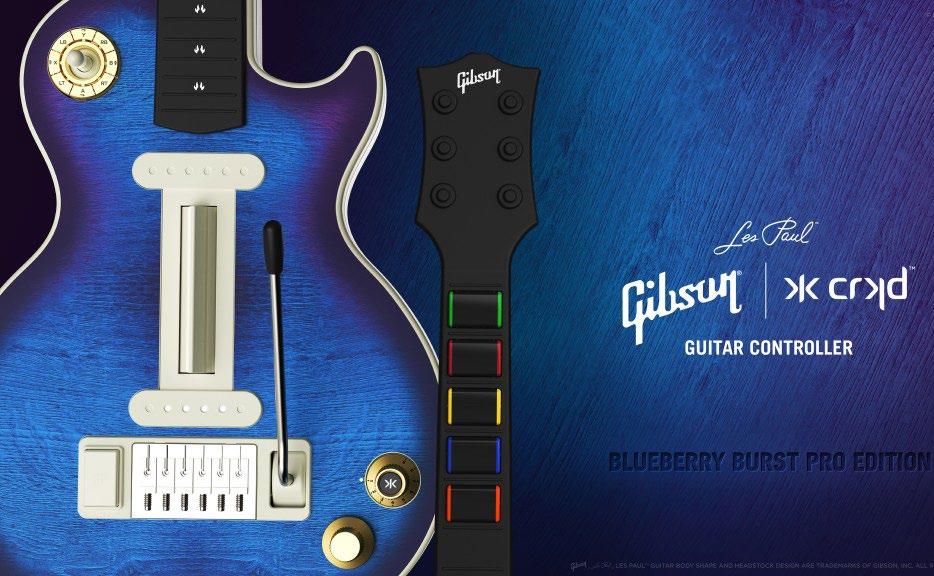



Reviewed by: Brandon Sawyer
The 8BitDo All-Button Arcade Controller arrives as a confident statement from a brand already trusted for its blend of retro sensibility and modern engineering. In a market where leverless controllers are no longer a niche curiosity but a competitive standard, 8BitDo has chosen not to simply imitate the established “hitbox” formula. Instead, it has reimagined it, producing a device that feels purpose-built for the fighting game community while carrying the company’s signature attention to design and detail.
From the moment you unbox it, the AllButton’s ultra-slim profile is striking. At just 1.6 centimetres thick, it is roughly a third of the height of 8BitDo’s own Arcade Stick, yet it feels solid and reassuring in the hands. The tempered glass faceplate is more than a visual flourish; it resists fingerprints and smudges, maintaining a clean, professional look even after hours of heated play. The underside is anchored by a non-slip silicone mat, while magnetic foldable metal feet allow for two incline settings, giving players the choice between a flat, desk-level stance or a more traditional angled posture. It is a controller that feels equally at home on a tournament stage or a hotel desk between pools.
The most distinctive feature is its directional input system. Instead of a joystick, the All-Button uses four bean-shaped directional buttons, each slightly slanted to match the natural angle of the fingers. This subtle ergonomic choice pays dividends in comfort and precision, reducing strain over long sessions and making diagonal

inputs cleaner and more consistent.
Creator Insight:
“The bean caps felt odd for the first 10 minutes, then I realised I was hitting cleaner diagonals than on my usual hitbox. It’s like they trick your fingers into better form.” — @PixelParry, FGC streamer
Beneath those caps lie low-profile Kailh Wizard mechanical switches, chosen for their crisp, tactile response and light actuation force. They are hot-swappable, allowing players to replace them with alternatives to suit personal preference without any soldering.
Through 8BitDo’s Ultimate Software X, every button can be remapped, RGB lighting can be customised across six modes, and SOCD cleaning modes can be switched to ensure tournament compliance. Firmware updates are supported, ensuring the controller can evolve alongside the games and rulesets it is built for. The inclusion of a tournament lock knob, which disables menu and system buttons mid-match,
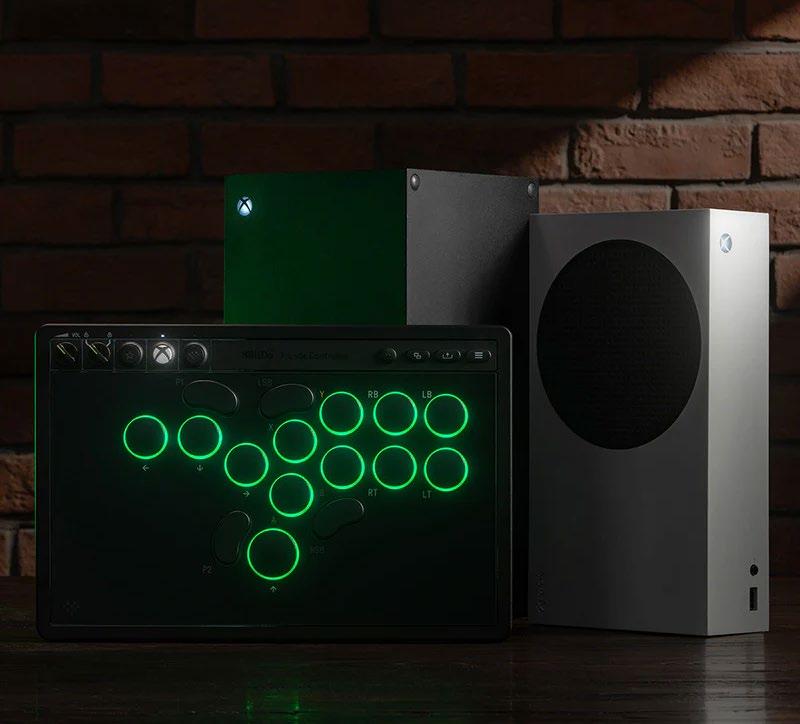

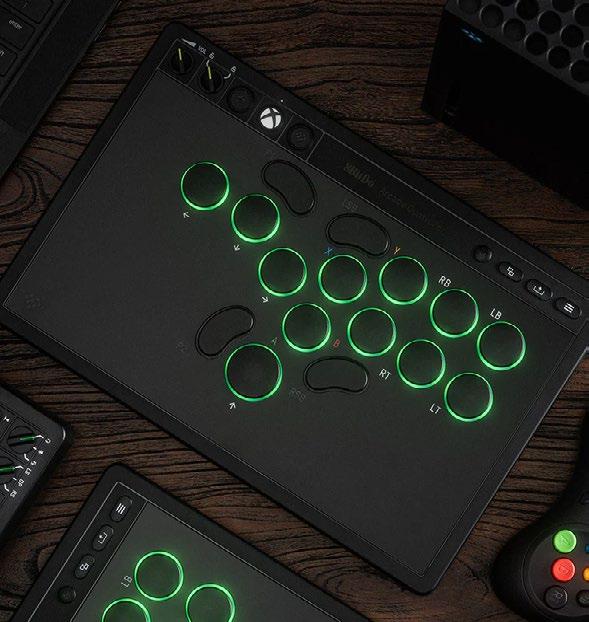


is a small but vital safeguard against costly accidental inputs.
In competitive play, the All-Button proves itself quickly. Latency is impressively low, measuring as little as four milliseconds when wired, and the SOCD handling is flawless. Charge characters in Street Fighter 6 feel snappier, while complex motions in Tekken 8 and Mortal Kombat 1 are executed with a consistency that inspires confidence.
Creator Insight:
“I shaved frames off my punishes instantly. It’s not just about speed — the consistency is unreal. This thing’s a weapon.” —
@FramePerfectDan, Pro FGC competitor
Creator Spotlight: Voices from the FGC
The All-Button has already made its way into the hands of respected players and reviewers across the fighting game scene, and the early impressions are telling.
PixelParry – FGC Streamer
“The bean caps felt odd for the first 10 minutes, then I realised I was hitting cleaner diagonals than on my usual hitbox. It’s like they trick your fingers into better form.”
@FramePerfectDan – Pro FGC Competitor
“I shaved frames off my punishes instantly. It’s not just about speed — the consistency is unreal. This thing’s a weapon.”
Ariel Suave – Content Creator & Reviewer
“After two weeks of testing, I can confidently say this is one of the most comfortable leverless controllers I’ve used. The build quality is exceptional, and the software customisation makes it feel truly personal.”
Christian Cawley – Gaming Retro UK
“It’s impressively slim, beautifully built, and clearly aimed at the FGC. The programmable buttons and lock caps make it a serious tool for competitive play.”
Aesthetically, the All-Button strikes a balance between understated professionalism and subtle flair. The RGB light ring adds a gentle glow without overwhelming the minimalist design, and the magnetic compartment for storing wireless adapters is a clever touch for travelling players. Portability is one of its strongest assets; the slim form factor means it can slip into a backpack alongside a laptop or console without the bulk that plagues many arcade controllers.
In the United States, the 8BitDo All-Button Arcade Controller launches at $99.99, while in the United Kingdom it retails between £89.99 and £94.99 depending on the retailer. This positions it competitively against other highend leverless controllers, many of which cost significantly more while offering similar or fewer features. Considering its premium materials, hot-swappable switches, and tournamentready design, it represents strong value for both aspiring competitors and seasoned veterans.
After extended use, this is more than a stylish alternative to a fight stick. It is a precision instrument, designed with the realities of competitive play in mind, but also with the portability and durability that travelling players demand. The bean-shaped directional buttons may divide opinion at first, but for those willing to adapt, they offer genuine ergonomic benefits. For anyone seeking a travel-friendly, highly customisable, and tournament-legal leverless controller, the 8BitDo All-Button is one of the most compelling options available in 2025.
Final Score: 9 out of 10 — a near-perfect blend of style, speed, and competitive edge, and a worthy addition to any serious player’s arsenal.
If you too would love to secure one of these or check out many other products that 8Bitdo creates then you can check them out now!
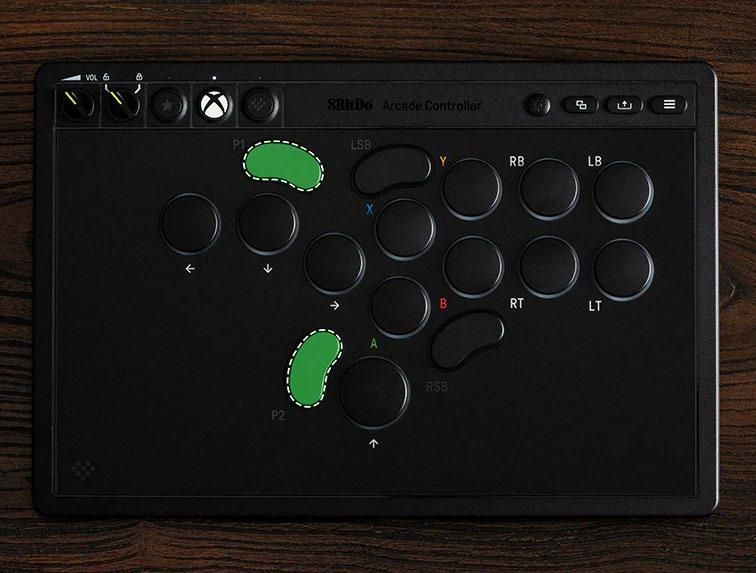




In a market flooded with look-alike controllers, the 8BitDo Pro 3 arrives as a breath of fresh, retro-tinged air where classic aesthetics collide with cutting-edge performance. From its halleffect triggers to its swappable magnetic buttons, this pad is engineered to satisfy both purists who crave SNES-style charm and competitive gamers who demand precision.
The Pro 3’s silhouette nods to 1990s nostalgia without sacrificing comfort. Its matte shell repels fingerprints while the subtle rubberized grips lock onto your hands during marathon sessions. At just 8.5 ounces, it feels substantial yet light enough to prevent wrist fatigue. Every curve and contour are thoughtfully sculpted whether you’re tackling platformers or grinding raids, the controller melts into your grip like a custom-fit accessory.
Switching between devices is effortless. A three-second hold of the pairing button let me hop from Mario Kart 8 Deluxe on Nintendo Switch to Hades on PC via Bluetooth, then onto my Android handheld without any hiccups. For tournament-grade responsiveness, the included 2.4 GHz USB-C dongle snaps into the magnetic dock, delivering rock-solid, near-zero latency on Steam Deck and Windows. When I needed wired reliability, the USB-C port engaged instantly zero noticeable lag in every mode.
Where the Pro 3 truly stands out is in its modularity. Inside the box are four extra magnetic ABXY buttons and two ball-top joystick caps, all swapped in seconds with the magnetic puller. I remapped the layout midsession on Doom Eternal—assigning dodge and reload to the back paddles via 8BitDo’s Ultimate Software—and never missed a beat. Each button click-snaps into place with satisfying precision, ensuring your custom setup feels and performs exactly as intended.
Whether I was threading sniper shots in Call of Duty or chaining combos in Street Fighter VI, the Pro 3 delivered unwavering reliability. Its Hall Effect triggers offer consistent resistance and zero drift, even after dozens of hours. The TMR analogue sticks move with buttery smoothness under tension, and the clicky D-pad never wobbles during frantic directional inputs. This controller doesn’t just survive intense play it excels under it.
With an average of 25 hours of continuous gameplay per charge, the Pro 3 outlasted my busiest days. The included magnetic charging dock doubles as secure storage for the 2.4 GHz dongle and keeps the controller ready overnight. A discreet LED under the right shoulder glows red while charging, switching to green when you’re primed for action.
• Inside the retail package you’ll find:
• 8BitDo Pro 3 Bluetooth Gamepad
• Magnetic charging and storage dock for the 2.4 GHz USB-C dongle
• Braided USB-C to USB-A charging cable
• Four swappable magnetic ABXY buttons
• Two ball-top joystick caps
• Magnetic button puller
• Quick start guide and link to Ultimate Software
At $70 USD (approximately £56 GBP), the Pro 3 sits squarely between first-party controllers and premium third-party options. Given its retroinspired design, rock-solid build quality, crossplatform compatibility, and deep customization suite, it represents outstanding value. Few controllers in this price range match its blend of form and function.
The 8BitDo Pro 3 Bluetooth Gamepad masterfully bridges nostalgia and modern performance. It excels across every test whether you’re swapping custom layouts on the fly, diving into high-speed shooters, or perfecting speedruns. For gamers seeking one pad that conquers Switch, PC, and mobile, this is the one to beat.
A huge thank you to 8BitDo for providing the Pro 3 for this review. Game on, stay precise, and may every session feel as timeless as your favourite classics.



Forged in collaboration with Mecha Break, the Retro 87 Panther Edition transforms your desk into a command centre. Its charcoal-and-orange livery, laser-etched logos, and razor-sharp lines pay tribute to the PANTHER mech’s precision strikes. Underneath the striking aesthetics lies a hot-swappable, wireless mechanical powerhouse that excels in both work and play.
The Panther Edition was born from a shared vision between 8BitDo’s hardware engineers and Mecha Break’s mech-obsessed modders. Mecha Break provided detailed concept art and colour schematics inspired by their flagship PANTHER design, including the charcoal chassis, metallic orange highlights, and angular accents. Over successive prototype rounds, 8BitDo translated these motifs into an aluminium top-mount frame, securing each panel with industrial-grade fasteners to evoke that mech-like toughness. Joint testing sessions ensured the keycaps, side panels, and Dual Super Buttons not only looked striking but also withstood intense typing and gaming sessions. This partnership elevated the Retro 87 from a standard mechanical keyboard to a limited-run collector’s piece that embodies both brands’ passion for precision engineering.
The Retro 87 Panther Edition’s aluminium topmount chassis feel rock-solid, resisting flex during furious typing or gaming sessions. At 376.6 × 169.6 × 46.8 mm and 1.47 kg, it balances substantial heft with desktop stealth. Double-layered ABS keycaps sit atop Kailh Glaze Jellyfish Pro linear switches, offering 45 cN actuation and a muted “thock” thanks to multi-layer sound dampening. Metallic orange accents on the side panels and laser-etched PANTHER insignias reinforce the collaboration’s industrial theme.
Switch seamlessly between Bluetooth LE 5.0,
2.4 GHz wireless, and wired USB-C. Pairing with Windows, macOS, Android, or iOS takes seconds via a single Fn-press. The 4,000 mAh battery delivers up to 300 hours on Bluetooth or 280 hours on 2.4 GHz, keeping you powered through back-to-back development sprints and extended raid nights without a recharge.
Two magnetic “Dual Super Buttons” on the right flank register complex macros instantly— no software required. For deeper remapping, 8BitDo’s Ultimate Software V2 unlocks per-key RGB patterns, macro sequences, and Fn-layer assignments. I bound build orders in Age of Empires IV to a Super Button, shaving crucial milliseconds off competitive skirmishes.
N-key rollover and anti-ghosting ensure every keystroke registers under pressure. The Kailh Glaze Jellyfish Pro switches glide with silky smoothness, while the UV-coated PBT side-printed keycaps resist oil buildup during marathon typing sessions. RGB lighting transforms your workspace into a dynamic battlefield without ever feeling gimmicky.
The massive Li-ion cell powers the keyboard for days on end—no mid-week power panic here. When it’s time to recharge, the braided USB-C to USB-A cable refuels the Retro 87 in under four hours, ensuring minimal downtime between sessions.
Inside the Panther-themed box you’ll find:
• Retro 87 Mecha Break Panther Edition keyboard
• Set of 21 extra dye-sublimation PBT keycaps
• Dual Super Buttons module
• 2.4 GHz USB-C adapter
• Braided USB-C to USB-A cable
• Keycap puller and three collectible stickers
• Quick-start guide with Ultimate Software link
At $119.99 USD (approximately £96 GBP), this keyboard sits above entry-level models but below boutique customs. Its limited-run collaboration status, robust feature set, and high-end materials justify the premium for enthusiasts and serious typists alike.
The 8BitDo Retro 87 Mecha Break Panther Edition blends thematic flair with uncompromising

performance. From its industrial design and hot-swappable switches to its multi-mode wireless and programmable macros, it delivers on every front. Whether you’re coding, contentcreating, or conquering digital battlefields, this keyboard stands as a testament to what thoughtful collaboration can achieve.
Rating: 9 / 10
A massive thank you to 8BitDo and Mecha Break for providing this extraordinary keyboard for review. May every keystroke feel as unstoppable as its namesake.


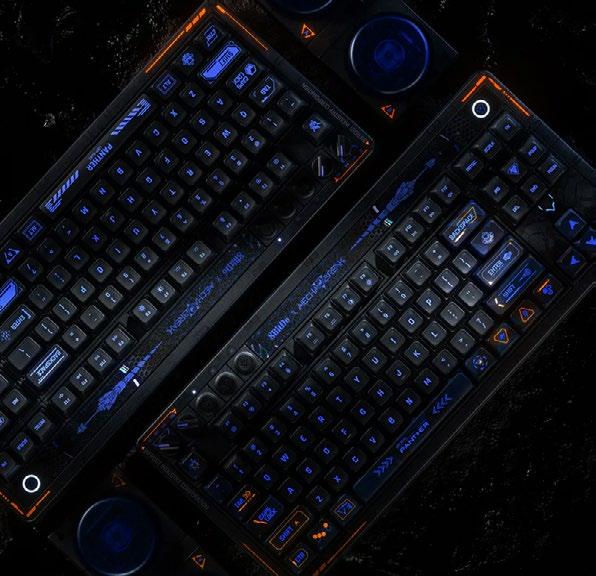


When 8BitDo unveiled the Ultimate 3-Mode Controller – Rare 40th Anniversary Edition, it promised more than a swanky cosmetic upgrade. This controller is a celebration of four decades of Rare’s genre-defining games, marrying collector-worthy aesthetics with competitive-grade hardware. After weeks of hands-on testing across Xbox Series X, PC, Switch, and mobile devices, here’s why this limited-edition pad isn’t just a tribute—it’s a toptier performer.
At first touch, the Rare 40th Anniversary Edition feels unexpectedly weighty yet perfectly balanced. Machined from zinc alloy and plated in lustrous gold on the face buttons, D-pad, and trigger frames, the controller conveys premium heft without ever feeling cumbersome. The signature cobalt blue shell carries subtle laseretched silhouettes: Banjo’s jiggy puzzle pieces, a Battletoads stomp mark, and the skull motif from Sea of Thieves, each nod drawn from Rare’s classic IP. Matte plastic grips flank the alloy body, ensuring marathon sessions remain slip-free. Every seam is flawlessly flush, every button sits with intentional precision—this is craftsmanship you can see and feel.
Behind the scenes, this edition was born from “Project Kong,” an ambitious partnership between 8BitDo, Rare Ltd., and Xbox’s licensing division. Announced in September 2025, Rare artists supplied original color swatches, iconic artwork, and in-game Easter-egg designs. 8BitDo’s engineering team translated those assets into physical form through multiple prototype iterations, each vetted by Rare to ensure authenticity. The gold plating and zinc alloy construction underwent rigorous stress testing to guarantee the controller stood up to everyday use. Meanwhile, Microsoft’s compliance rounds ensured the 2.4 GHz wireless module met Xbox’s strict performance and security standards. The result is more than
a commemorative item—it’s a fully licensed, three-mode controller that respects both Rare’s heritage and modern gameplay demands.
True to its name, the Ultimate 3-Mode Controller adapts seamlessly to any platform. In 2.4 GHz mode, it pairs wirelessly with Xbox Series X|S and Xbox One or connects via the included USB-C cable for zero-latency play. Bluetooth mode links effortlessly with Nintendo Switch, Apple, Android, macOS, and tvOS devices, automatically reconnecting when lifted from the magnetic charging dock. USB-C wired mode offers the most straightforward option for PC users seeking absolute reliability. Across all three modes, pairing was intuitive and rocksolid, whether I was sailing in Sea of Thieves on console or speed-running Celeste on Steam Deck.
Out of the box, the controller offers two prostyle back paddles and three onboard profiles toggled by the Profile button. Diving into 8BitDo’s Ultimate Software unlocks full remapping capabilities, trigger travel adjustments, stick sensitivity curves, and button-hold macros. During competitive Halo Infinite matches, I reassigned the paddles to melee and grenade throw, shaving precious milliseconds off my reaction time. Switching between precision shooters and high-octane platformers was as simple as holding Profile + X for two seconds— no reboot or driver install required.
The hallmark Hall Effect magnetic joysticks and triggers deliver drift-resistant precision that remained unshaken after dozens of hours. Each click of the plated face buttons carries a satisfying snap, while the D-pad’s bevelled edges and crisp directional clicks made 2D inputs in Donkey Kong Country Tropical Freeze feel pixel-perfect. Xbox-style impulse triggers add nuanced vibration feedback on compatible
titles, letting me feel every cannon blast in Perfect Dark Zero and the rumble of Kraken attacks in Sea of Thieves. Under sustained stress tests—rapid alternate firing in Gears 5 and furious dodge timings in Killer Instinct—the controller never skipped a beat.
Equipped with a 1,000 mAh Li-ion cell, this controller powered through over 20 hours of continuous play on a single charge. Replenishing its power via the magnetic charging dock took about four hours, and the dock’s hidden slot for the 2.4 GHz adapter means you never lose track of the dongle. Lifting the pad off the dock instantly reignites the wireless connection, ensuring you’re back in the action without fumbling through menus.
The retail box reveals the Rare 40th Anniversary Edition controller nestled in custom foam, alongside a matching magnetic charging dock with integrated 2.4 GHz adapter storage, two interchangeable joystick caps etched with Rare logos, a braided USB-C to USB-A charging cable, and a concise instruction manual directing you to the Ultimate Software download page.
At $89.99 USD (approximately £72 GBP), this limited-run controller sits at the premium end of third-party peripherals. Yet its collector appeal, combined with Hall Effect triggers, driftfree sticks, and three-mode versatility, justifies the investment for both Rare enthusiasts and competitive gamers. In many ways, it outshines Microsoft’s first-party pads by marrying nostalgic design with hardware flexibility that adapts to any setup.
The 8BitDo Ultimate 3-Mode Controller – Rare 40th Anniversary Edition transcends mere nostalgia. It stands as a testament to what happens when a storied studio and a retroinspired hardware specialist collaborate without compromise. Whether you’re honouring Rare’s storied past or chasing flawless inputs in modern esports, this controller delivers on every front.
Rating: 9.5 / 10
A heartfelt thank you to 8BitDo and Rare Ltd. for crafting this golden celebration of gaming history. Here’s to many more decades of innovation and play.



Blending console-grade precision with true mobile convenience, 8BitDo’s officially licensed Xbox Edition controller transforms any smartphone into a pocket-sized battlefield commander. From its Hall Effect joysticks to its stretchable grip, this pad promises to elevate cloud and native mobile gaming alike. Over two weeks of marathon sessions on Apple Arcade and Xbox Cloud Gaming, here’s how it held up, why it stands out at its $49.99 price point, and where it earns its place in your mobile arsenal.
Crafted from durable ABS plastic with enhanced rubberized grips, the Ultimate Mobile Gaming Controller stretches to fit devices from 100 mm to 170 mm in length, accommodating everything from an iPhone 15 Pro to a Pixel 8 Pro. Tipping the scales at 236 g and measuring 198 × 103 × 53.5 mm, it feels substantial without inducing hand fatigue during extended sessions. Its refined bumpers and clicky D-pad blend tactile reassurance with smooth actuation, making menu navigation in Genshin Impact feel as precise as on a home console.
Pairing is handled through Bluetooth LE 5.0, offering a rock-solid link to iOS, Android, and even tvOS devices without resorting to wires. Official support for Xbox Cloud Gaming means you can launch Forza Horizon 5 on your iPhone via Game Pass Ultimate and immediately feel the difference in input fidelity. Whether you’re switching between Apple Arcade on iPadOS and native Android titles, the controller maintains a seamless handshake, reconnecting in under three seconds each time.
Two pro-style back paddles and a dedicated Profile button let you toggle between on-thefly mappings, while wear-resistant metal rings around each Hall Effect joystick guarantee consistent centring and zero drift—even after marathon Diablo Immortal raids. Dive into
8BitDo’s Ultimate Software V2 to remap buttons, adjust stick sensitivity, and redefine trigger travel, storing up to four profiles that switch instantly with a long press of the profile selector. This deep configurability allows me to assign jump and dodge to the paddles during Hades runs without lifting a thumb.
In action, the Xbox Edition controller delivered precision targeting in Gears 5 streamed via Cloud, with Hall Effect triggers offering uniform resistance and instantaneous actuation on every shot. The clicky yet smooth bumpers made reloads feel tactilely satisfying, and the D-pad’s distinct directional clicks ensured zero misreads during complex fighting-game inputs. Even high scores in Geometry Dash improved noticeably thanks to the controller’s rock-steady feedback loop.
Equipped with a 300 mAh Li-ion battery, the controller powered through up to 13 hours of continuous play on a single 1.5-hour charge. An LED indicator beneath the right bumper glows red while charging via the included USB-C cable and switches to green when full. Overnight topoffs meant I never had to interrupt sessions, and quick 15-minute boosts provided enough juice for an evening’s worth of gaming when time was tight.
• Ultimate Mobile Gaming Controller – Xbox Edition
• Braided USB-C to USB-A charging cable
• Quick-start instruction manual
At $49.99 USD (approximately £40 GBP), the Ultimate Mobile Gaming Controller – Xbox Edition undercuts many first-party mobile pads while delivering premium features like Hall Effect sticks, pro paddle buttons, and officially
licensed Xbox support. Its build quality and deep customization suite position it as one of the best values for serious mobile gamers seeking console-grade controls on the go.
8BitDo’s Ultimate Mobile Gaming Controller –Xbox Edition skilfully bridges the gap between handheld freedom and console-level fidelity. Its thoughtful ergonomics, rock-solid connectivity, and expansive remapping options make it the
definitive choice for Xbox Cloud and native mobile gaming. Whether you’re chasing perfect lap times in Forza or unleashing combos in Mortal Kombat Mobile, this controller keeps you in total command.
Rating: 9 / 10
A huge thank you to 8BitDo again for providing the Ultimate Mobile Gaming Controller – Xbox Edition for review. Here’s to more epic mobile sessions ahead!

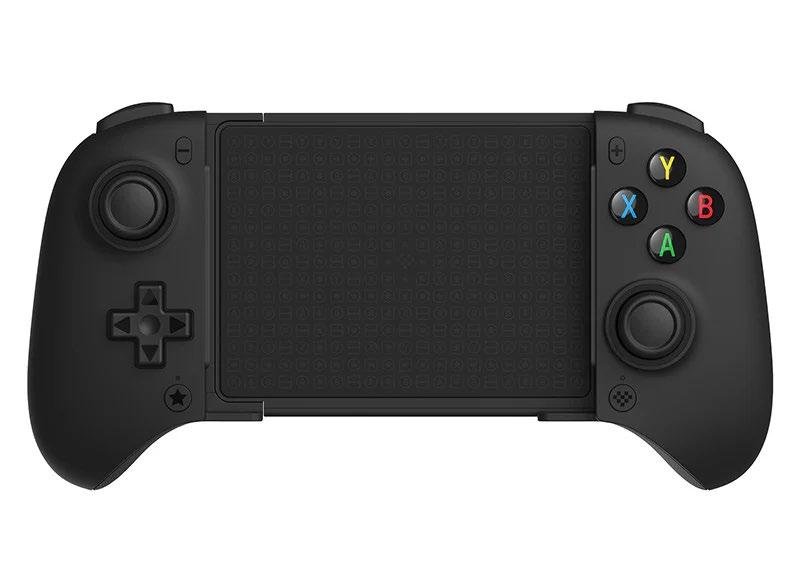

Reviewed by: Brandon Sawyer
In the digital age, where screen time is increasing in both duration and intensity, the importance of eye protection has come sharply into focus. Gunnar Optiks, a pioneer in digital eye strain reduction, has carved a revered niche with its patented blue light filtering technology and a portfolio of collaborations that marry functionality to fan-favourite game universes. This review delves into Gunnar’s blue light gaming glasses, focusing in detail on seven coveted collaboration models.
Prolonged exposure to screens, whether through gaming, office work, or multimedia consumption has been conclusively linked to a spectrum of symptoms from digital eye strain to sleep disruption. Artificial high-energy blue light, particularly in the 400-450nm (HEV) range, carries more energy than other visible wavelengths and is known to influence circadian rhythm, increase fatigue, and cause discomfort. Even with the proliferation of built-in software filters on devices, supplementary protection during daylight hours remains critical for many users.
Gunnar’s multi-pronged approach tackles the predominant axes of digital eye fatigue: blue light filtration, anti-glare, humidity retention (to mitigate dry eyes), and reduction of ocular muscle strain. At the core are their proprietary lens materials with selective tints, optimized focusing power, and a sophisticated coating stack—G-Shield®—designed for antireflective, smudge-resistant, and oleophobic performance.
Gunnar rates its eyewear across a widely recognized Performance Tier System:
• Signature: Precision polymer frames paired
• with impact-resistant polycarbonate lenses and classic G-Shield®.
• Epic: Upgraded with hybrid materials, G-Shield® Plus enhanced coatings, and refined anti-reflective/hard coat stacks.
• Legendary: Exotic materials, spring hinges, proprietary polyamide lenses for low aberration, G-Shield® Premium with hydrophobic and oleophobic layers, and extended warranty.
• Mythic & Pro eSPORTS: Limited-edition or esports-tuned variants, pushing boundaries in materials, fit, and face coverage.
Gunnar addresses diverse user needs via distinct tints, each rated by the Gunnar Blue Light Filter (GBLF):
• Clear (GBLF 35): Minimal colour distortion, suitable for colour-critical environments like design studios.
• Amber (GBLF 65): Gunnar’s most popular option, optimal for gaming and prolonged screen exposure; noticeable warm tint increases perceived contrast and comfort.
• Sun (GBLF 90): For outdoor use, robust blue light and UV protection, not polarized to preserve device screen usability.






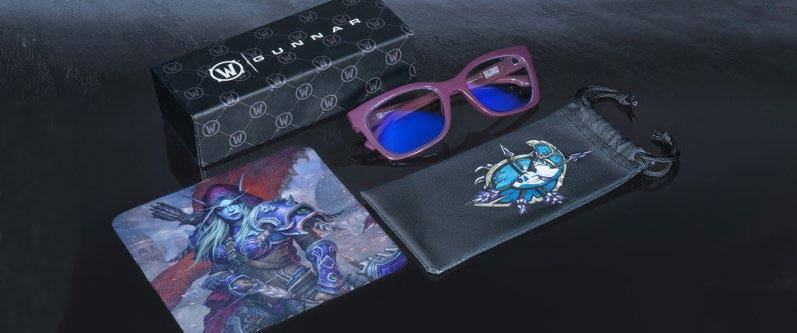


• Amber Max (GBLF 98): Maximum protection for extreme sensitivity or late-night sessions.
• Photochromic/Transition (Amber/Neutral Sun Shift): Adaptive tints that darken under sunlight, shifting from indoor to outdoor utility.
• Prescription Options: Gunnar’s technology is available across single vision, progressives, and specialized reading prescriptions, ensuring inclusivity for gamers and professionals with vision requirements.
The Fallout–Vault 33 model is more than an accessory; it is a masterful fusion of postapocalyptic, 1940s-retro style and contemporary eye protection. The stainless steel and nylon frame is finished elegantly with olive metal temples, evoking a rugged, utilitarian look derived from the iconic Vault-Tec aesthetic. Integrated side shields, square lens shape, and subtle "Vault 33" branding further the immersive effect.
Specs:
• Frame: Retro-futuristic square; stainless steel and nylon with olive metal accents
• Lens Options: Amber (GBLF 65), Clear (GBLF 35), prescription available
• Dimensions: 52 mm lens width, 42 mm lens height, 22 mm bridge, 139 mm frame width, 145 mm temple length, 20 g weight
• Hinges: Durable, flexible spring loaded
• Extras: 24-month warranty, collector’s metal case modelled after Fallout loot chests, Vault Boy motif microfiber pouch, cleaning cloth.
The Vault 33 glasses deliver a palpable reduction in digital eye strain. During extended play or work sessions, eyes felt significantly less fatigued, even under harsh overhead fluorescents. The amber lenses do introduce a warm tint, but
contrast is noticeably improved and reading even in outdoor or high-glare settings is far more comfortable. The fit is secure but lightweight; flexible hinges accommodate extended wear, and the build feels robust, suitable for both large and small faces. The integrated side shields enhance focus by limiting peripheral distractions and minor airflow, maintaining a subtle 'ocular microclimate' a boon for those prone to dry eyes.
Perhaps no other model in the current Gunnar roster matches Vault 33 in collector appeal and thoughtful branding. The glasses walk a fine line between overt fandom and everyday wearability; branding is discreet, yet the included accessories are opulent, complete with vibrant blue and yellow Vault-Tec colourways. For cosplayers, enthusiasts, or anyone seeking a stylish yet practical tribute to Fallout, this collaboration stands tall.
• US: $99 USD
• UK: £93.82
Rating
9.5/10. The Vault 33 glasses impress with their superb build, tangible comfort improvements, stellar packaging, and restrained yet iconic design. They feel like a must-own for fans and an ideal everyday performer for heavy screen users.
Drawing inspiration from the formidable Sylvanas Windrunner, this model leverages a slimmer Wayfarer silhouette crafted in a deep, "Forsaken Red" premium engineered polymer. Brushed silver accents, strong lines, and a memorable signature colour create a premium aesthetic that nods to both Horde loyalty and eyewear fashion.

Specs:
• Frame: Smart round/Wayfarer; premium engineered polymer; Forsaken Red hue
• Lens Options: Amber (GBLF 65), prescription available
• Dimensions: 56 mm lens width, 42 mm lens height, 19 mm bridge, 138 mm frame width, 140 mm temple length, 33 g weight
• Hinges: Multi-barrel, robust for daily use
• Extras: Collector’s case, matching pouch, and microfiber cloth, official Blizzard licensing, 12-month warranty.
The Sylvanas model exemplifies why Gunnar glasses are esteemed by those who spend long nights in Azeroth. The amber-tinted lenses noticeably reduce digital eye strain, especially in poorly lit rooms common to late-night raids or grinding sessions. The fit is secure yet lightweight, with springy hinges ensuring flexibility. Polycarbonate build quality means they withstand some rough handling, while the wayfarer shape accommodates a wide facial range. Over multiple days, these glasses alleviated headaches and provided focus without noticeable pressure buildup.
The design fuses the eye-catching Forsaken theme with a fashion-forward, understated style, just enough vivid colour and silver detailing to stand out, without screaming “merchandise.” The branding is both subtle and effective, elevating rather than overwhelming. Accessories are thoughtfully executed, echoing the hues and motifs of World of Warcraft's beloved character while remaining practical.
Pricing
• US: $84 USD
• UK: £85.29
Rating
8.5/10. Excellent for those who want immersive theming without sacrificing everyday utility, the Sylvanas glasses blend comfort, protection, and
a measured dose of Warcraft-inspired drama. The colour may prove bold for some, but that’s part of their unique charm.
With its military aviator aesthetic in an Onyx/ Mercury colour scheme, the Call of Duty –Ghosts glasses look as tactical as they feel. This collaboration model showcases Gunnar’s novel Amber Sun Shift photochromatic lens technology: indoors, they present with the familiar amber for optimal blue light blocking (GBLF 65), but step outside, and in around 15 seconds, they transition to a darker, neutral grey filter with stronger blue light and UV protection (up to GBLF 90), providing true sunglasses-level comfort.
• Frame: Aviator style; premium polymer front, stainless steel temples
• Lens Options: Amber or Amber Sun Shift photochromatic, prescription available
• Dimensions: 56 mm lens width, 50 mm lens height, 15 mm bridge, 136 mm frame width, 145 mm temple length, 30 g weight
• Hinges: Multi-barrel, sturdy, low-pressure fit for headphone compatibility
• Extras: Collector’s case, cleaning cloth, microfiber pouch, in-game digital item (limited markets), 12-month warranty.
The standout feature is the rapid sunlight adaptation. In the field, whether walking the dog, switching between indoor gaming and outdoor errands, or managing on the fly content creator scenarios, the ability to seamlessly shift to darker tint is invaluable. Blue light and UV filtering is robust in both modes. The aviator frame provides expansive coverage, and the stainless steel and polymer combo manages both durability and comfort, with barely-there pressure even under over-ear headphones, a major plus for streamers and esports competitors.





Lens clarity remains vitreous and sharp in both indoor and outdoor settings. While the full grey tint may obscure colour accuracy for designers, it’s a tremendous asset for mobile users and gamers in bright environments. The included focusing power (+0.20 diopters) noticeably reduces muscular fatigue for those with (or near) 20/20 vision.
Branding and Collector Value
Call of Duty aficionados will appreciate the subtle but unmistakable logo elements on the temples, as well as the limited game tie-in depending on retailer and location. Packaging and presentation speak the same high-quality visual language associated with Gunnar’s licensed collaborations.
Pricing
• US: $74 USD
• UK: Price conversion typically around £71 (using current exchange and factoring VAT/import) though may fluctuate based on distributor and some prescription surcharges.
Rating
9/10. The Sun Shift lens sets this model apart among gaming eyewear for versatility, and the comfort is impressive even in prolonged wear. A top choice for urban, mobile, or multienvironment gamers and anyone who wants a single pair that handles both blue light and sunlight with equal mastery.
Borderlands – Ripper (Amber Variant): Channelling Mayhem
Design and Specifications
The “Ripper” is a direct homage to Borderlands’ over-the-top visual style and chaotic energy. Frames feature a high-wrap silhouette in rugged "Bandit Smoke" coloration, with comic book-inspired bold outlines and flat shading for a graphic, unmistakably Borderlands look. The eyewear is constructed from precisionengineered polymer and fitted with industrystandard G-Shield lens coating.
Specs:
• Frame: High-wrap; precision-engineered polymer; Bandit Smoke finish
• Lens Options: Amber (GBLF 65)
• Dimensions: 60 mm lens width, 41 mm lens height, 18 mm bridge, 138 mm frame width, 130 mm temple length, 33 g weight
• Hinges: Multi-barrel, secure and headsetcompatible
• Extras: Collector’s Borderlands 4-themed pouch and cleaning cloth, 12-month warranty.
The high-wrap design is a blessing for marathon gaming: it offers notable coverage and minimizes peripheral glare and distractions. Comfort is secured for all-day wear, and multibarrel hinges ensure the Ripper handles repeated flexing, a distinct asset for those alternating between screen and headset. The amber lens exudes warmth, enhances contrast, and meaningfully reduces digital eye fatigue, with relief noted during hours-long looting sessions (or spreadsheet sprints). The visual clarity was excellent even as light levels varied; only slight yellowing of colour was noticed, but the benefit to comfort outweighed any trade-off.
Borderlands’ anarchic character is fully realized: “Kairos” bandit theming and the associated accessories foster a premium collector experience. The frame’s aggressive visual statement may not blend in at a corporate desk but that is precisely its appeal for fans. The included cleaning package maintains the visual motif, further reinforcing its value to the intended audience.
Pricing
US: $74 USD
UK: £63.97
Rating
8.5/10. Style won’t be for everyone, but for Borderlands fans and those seeking all-around

blue light protection, performance and comfort meet a unique aesthetic making this one of the most characterful releases yet.
For players needing corrective lenses, the Ripper is fully prescription-compatible, including single vision, standard and high index, and progressive options (including distance and intermediatefocused progressives, ideal for focus zones of up to 14 feet). Notably, Gunnar’s prescription program uses advanced analogue or robotic lens customization, and when ordering, a precise current prescription and PD measurement must be supplied. Delivery times are typically 4–6 weeks, with all sales final due to the custom nature of the product.
For those in bright environments or on the go, the Sun variant employs a GBLF 90 sun lens non-polarized to ensure digital screens remain visible while filtering much of the blue light and all UV. The frame remains the same, with neutral focus for the sunglasses.
Prescription variants retain all the cosmetic appeal and wrap-around comfort of the standard Ripper, with the key differentiating factor being the tailored corrective lens. Performance for screen use is superb, with all the anti-glare, contrast, and focusing benefits of Gunnar optics. The sunglasses version is especially effective at reducing glare and fatigue from sunlight—a true asset for esports tournaments, outdoor gaming events, and everyday digital device use outdoors.
Pricing
• UK Prescription: £221.79
• US Prescription: $229 USD (typical), but varies based on customization
• US/UK Sun: $74 USD / ~£63.97
Rating
8/10. The prescription process is clear (if lengthy), and the result is comfortable, high-
performing eyewear for those who would otherwise need to double up glasses. The sunglasses variant especially excels in outdoor, high-glare use. A must for Borderlands devotees with vision correction needs.
The Witcher Collection – White Wolf for Geralt: Masterful Elegance for the Monster Slayer
White Wolf, inspired by Geralt of Rivia, evokes a sophisticated stainless steel aviator silhouette with rugged, leather-wrapped temples, deep laser-etched Witcher signs, and the Wolf School emblem for a stately, immersive finish. The frame exudes both minimalist and robust design language, a true artifact for Witcher fans and style aficionados alike.
Specs:
• Frame: Brushed nickel/steel aviator; stainless steel with leather wrap
• Lens Options: Amber (GBLF 65), Clear (GBLF 35), prescription and sunglasses variants available
• Dimensions: 51 mm lens width, 18 mm bridge, 134 mm temple length, approx. 31.75 g weight (without packaging)
• Hinges: Flexible spring, high-quality for longterm use
• Extras: Collector’s case, premium pouch, cleaning cloth, officially licensed with CD PROJEKT RED, 12–24 month warranty.
The premium stainless steel delivers exceptional durability while keeping the weight well-balanced for all-day comfort. The leather wrapping aids in reducing slippage and pressure, a subtle but noticeable ergonomic advantage. Amber lenses once again provide Gunnar’s signature blue light relief, with the added benefit of increased contrast and perceived sharpness essential for long reading or editing sessions. The aviator style offers ample screen coverage, and clear lens options enable those requiring unaltered colour work to participate in the fandom without compromise.




The Witcher theme is etched into every aspect, but in an elegant, non-garish manner. The weathered, leather-style case, Witcher emblem emblazoning, and fine accessories elevate the product well above simple merchandise status. For cosplayers, streamers, or office professionals, White Wolf hits a sweet spot of recognizability and versatility.
Pricing
US: $99 USD
UK: ~£78–£99 (subject to exchange and retailer, sunglasses variant slightly more)
Rating
9/10. Easily the most refined collaboration in appearance, with all the Gunnar optical hallmarks. The White Wolf is an ideal convergence of collector’s item and daily wearable artistry impressively executed.
The Witcher Collection – Ciri: Adventurous Spirit in a Delicate Package
The Ciri model embodies regality and dynamism, with an elegant, brushed gold, round stainless steel frame. Temples are adorned with laseretched Zireael sword motifs and Crazy Horse leather-wrapped accents, encapsulating Ciri’s mythic narrative and importance within The Witcher saga.
Specs:
• Frame: Brushed gold round; stainless steel with Crazy Horse leather accents
• Lens Options: Amber (GBLF 65), Clear (GBLF 35), prescription available
• Dimensions: 51 mm lens width, 18 mm bridge, 134 mm temple length, 30.9 g weight
• Hinges: Flexible spring
• Extras: Collector’s case, cleaning cloth, microfiber pouch, 12–24 month warranty, official CD PROJEKT RED licensing.
Despite its elegant build, the Ciri model is robust enough for regular gaming and work. The round lens, narrower in silhouette than the aviator, suits a wide array of faces, especially those preferring more accentuated, classic lines. Comfort is further improved by the flexible hinges and soft leather accents, providing a gentle grip and luxurious hand-feel. The amber lenses, true to Gunnar’s legacy, swiftly ease eye strain in both long, narrative-driven games and more demanding eSports titles. The clear lens alternative again accommodates professionals working in colour-sensitive environments.
True to The Witcher x Gunnar ethos, Ciri’s motifs are executed with artisanal precision, never overwhelming, always elegant. The accessories, too, stand out, providing a complete unboxing and user experience for fans and newcomers alike. As with its sibling, the Ciri model feels as much a piece of jewellery as an optical device.
• US: $99 USD
• UK: ~£78–£99 (typical; varies with import, exchange, and prescription surcharges)
Rating
8.8/10. A graceful, gender-neutral frame exuding both adventure and refinement. Ciri’s glasses excel among themed collaborations for subtlety and everyday chic, while still providing Gunnar’s full protection suite.
Each of the models discussed features core Gunnar lens options, and the lens tint chosen dramatically shapes user experience. The Amber (GBLF 65) is the flagship, providing a visually distinctive but highly practical blue light barrier, making the biggest difference for all-day users, gamers, and anyone sensitive to LED lighting. Clear (GBLF 35) is subtler, better for colour work, but will provide less subjective relief and contrast enhancement. Where

the Sun/Amber Sun Shift (GBLF 90, or 65/90 for transitions) is optimal for outdoor EDC, streamers, and those blending gaming with travel.
Gunnar prescription services are robust and increasingly seamless; users order online, upload a current prescription, and specify PD. Single vision is universally available, while select frames support advanced progressives. The process typically takes 4-6 weeks (US or Europe), and all prescription sales are final, but performance and satisfaction levels are excellent. Reviews highlight both accuracy and comfort, noting the benefit for those who cannot otherwise use blue light filtering solutions with corrective needs.
• Non-Prescription Range: $74–$99 USD / £63.97–£99 GBP (amber and special collaboration editions)
• Prescription Range: $229–$285 USD / £221–£265 GBP (depending on features, not including potential surcharges for highindex or progressives)
These prices are at the upper end of the blue light market, but are justified for those invested in quality, brand, and eye health. Prescription offerings command a premium but perform at or above the expectations set by top prescription eyewear retailers.
Gunnar employs a sophisticated performance tiering to set expectations and justify price points:
• Epic: Superior hybrid frames, G-Shield® Plus, hard coat; mid-premium pricing (as seen in Fallout Vault 33, WoW Sylvanas, CoD Ghosts, Witcher Collection).
• Signature: High-quality polymer frames, essential G-Shield™ anti-reflective and smudge resistance; value tier that still
• performs admirably (as seen in Borderlands Ripper).
• Legendary/Mythic/Pro eSPORTS: Ultimate in materials (titanium, polyamide), customized hinges, and longest warranties, infrequent in standard collaborations.
In practice, even Signature frames provide better durability than the average blue light eyewear, while Epic frames offer superior longevity, enhanced coatings, and more stylish physical flourishes.
One of Gunnar’s distinguishing features is the focus on a collector-grade experience. Each collaboration boasts:
• Sturdy, themed collector cases that pay homage to the respective franchise.
• Matching microfiber pouches (always visually consistent with the frame/brand).
• Microfiber cleaning cloths with unique or limited artwork.
• Robust manufacturer warranties (ranging from 12 to 24 months, with prescription lens coverage).
• Marketing and packaging consistent with major game launches, reinforcing the “fan artifact” status.
This attention to presentation is frequently cited in reviews as a reason why Gunnar feels worthy of both the price point and collectible status.
Gunnar has cultivated a sterling reputation, not just as a health accessory maker but as a partner to major brands. Their collaborations extend from Overwatch and Fallout to Marvel and Diablo, always tying lens protection to authentic, immersive branding. This unique position bridging optical technology and pop culture places Gunnar at the forefront of eyewear innovation, offering pieces that are as much aspirations as they are solutions.
Gunnar’s collaboration models transcend mere licensing: they actively enhance digital wellness with best-in-class optical engineering, all while celebrating the worlds that have defined gaming culture. Each pair of glasses model offers robust blue light and UV protection, thoughtful ergonomic design, exclusive collector appeal, and functional upgrades suitable for professional and recreational use. The availability of prescription and multiple lens options ensures inclusivity for all users.
If you’re a fan of Fallout’s chic retro-futurism, WoW’s high fantasy, Call of Duty’s tactical edge, Borderland’s chaotic universe, or The Witcher’s storied saga, Gunnar’s blue light glasses offer a compelling intersection of artistry and science.
For anyone who values their vision and digital experience, these collaborations mark the gold standard—both for eye health and personal expression.
Recommendation: For the discerning gamer, creator, or digital professional who treasures their screen time and franchise loyalties alike, Gunnar delivers an optically and emotionally rewarding experience. The collaborative models featured here stand as not just prescription or protective eyewear, but as wearable tributes to the worlds we love. Gunnar’s blue light glasses truly earn their reputation, and in my experience, are more than worthy of a place both on your face and in your collection.
If you are in the market for Blue light Glasses that do work and save your eyes, head on over to Gunnar Optiks and their website below.



Reviewed by: Brandon Sawyer
Next-gen features at an accessible price; Hall-effect sticks and triggers, programmable shortcuts, RGB and twin back buttons tailored for Switch 2 and PC The Gioteck WX5+ is built to bridge the gap between budget third-party pads and premium boutique controllers by packing modern hardware and useful conveniences into an affordable wireless package. Designed with the Switch 2 era in mind, it promises cross-generation compatibility, drift-resistant Hall-effect sensors, motion and vibration support, programmable inputs and a Shortcut Button aimed squarely at the Switch 2’s new social features. In everyday use the WX5+ aims to be unflashy but effective: a controller that removes friction from sessions, whether you’re cruising through single-player campaigns, squad-chatting with friends or switching to PC for a quick session.
Gioteck’s shape language here favours comfort over bravado. The shell fits a broad range of hand sizes without pinching the palm and the surface texture gives reliable grip during long sessions. Button placement is familiar and predictable, keeping muscle memory consistent with Nintendo’s layout while adding extra inputs where they matter. The programmable back buttons are placed for easy reach without upsetting standard finger positions, and the RGB accents (on WX5+ models that include them) are tasteful rather than distracting. Build quality is solid for the price point; the unit feels reassuringly robust without approaching premium heft.
The headline hardware upgrade is the move to Hall-effect analogue sticks and magnetic triggers, a step that eliminates traditional potentiometer wear and the stick-drift problems that have plagued many third-party pads. In practice the sticks give smooth, predictable thumb-tracking with no perceptible dead zones out of the box, and the triggers register consistently whether you’re feathering a shot

or applying steady throttle. Motion controls are present and work cleanly in supported titles, and vibration provides satisfying feedback for action and immersion. Latency in wireless mode is low enough for the majority of Switch playstyles; highly timing-sensitive competitive players should still test their preferred titles, but the WX5+ performs confidently in most realworld scenarios.
Where the WX5+ differentiates itself is in thoughtful extras aimed at modern multiplayer life. The Shortcut Button — designed to give instant access to Switch 2 chat — is a clever convenience for anyone who spends time coordinating parties; it can also be remapped, which turns it into a one-tap macro for whatever you need. The twin programmable back buttons allow quick access to frequent commands without stretching thumbs or rearranging grip, and the controller’s customization options extend to RGB lighting on applicable SKUs so players can personalise their setup. A wired USB-C mode and a 3.5 mm audio option in that mode round out the social and streamingfriendly feature set.
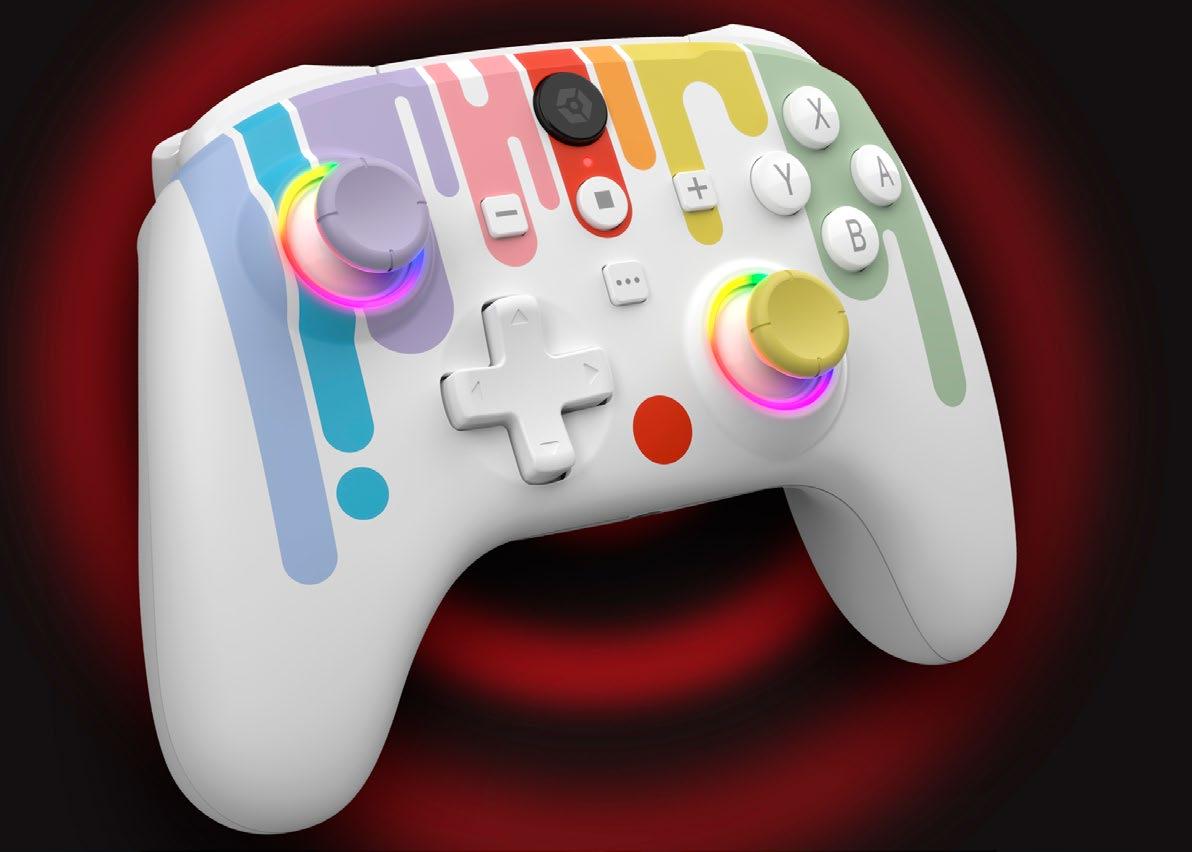


The WX5+ is built to work with both the original Switch and the incoming Switch 2, plus PC, making it a flexible alternative to singleecosystem pads. Battery life is competitive: a full charge comfortably covers several long sessions, and the rechargeable battery removes the nuisance of disposables. USB-C charging is convenient and modern, and the wired mode is useful for tournaments or when ultra-low latency is required.
In everyday gameplay the WX5+ excels as a comfortable, dependable workhorse. Casual and mid-core players will appreciate the drift resilience, programmable shortcuts and low latency for co-op and online play. The controller shines in social and streaming scenarios
Gioteck positions the WX5+ to undercut higherpriced alternatives while offering hardware parity on the most important fronts: Hall-effect sensors, programmable inputs and modern connectivity. Its combination of comfort, resilient sticks/triggers and social features makes it an excellent mid-range option for Switch 2 owners who also want PC compatibility. The controller doesn’t pretend to be a boutique competitive tool, but it delivers reliable, modern performance and a suite of conveniences that matter to everyday players.
I rate the Gioteck WX5+ 8 out of 10. It earns that score for bringing sensible, future-facing hardware to an accessible price band, for practical ergonomics, and for features that genuinely improve the Switch 2 experience. Points are lost only where specialist competitive
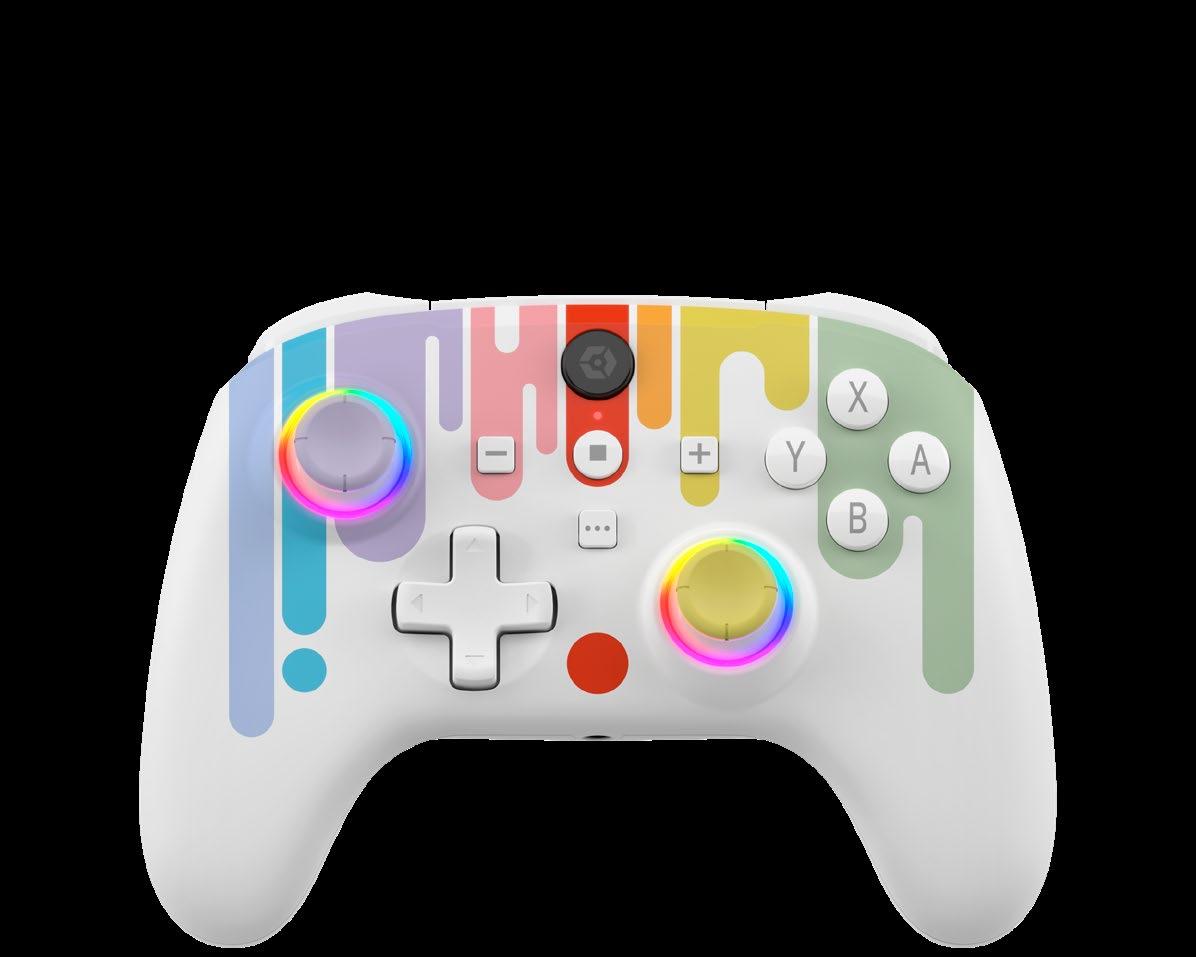






Reviewed by: Brandon Sawyer
Compact, colour-forward and battle-tested on a 9,000-mile trip to the Tokyo Game Show; USB-C simplicity with Mini-HDMI flexibility for laptops, phones, consoles and capture rigs. The piXL PM156C is a focused, no-nonsense portable monitor engineered to give travelling creators a dependable, lightweight second screen that works everywhere. I tested a retail unit taken on a nine-day press run to the Tokyo Game Show, where it served as a constant companion for editorial work, on-site asset checks, livestream monitoring and casual gaming between appointments. Its combination of portability, connectivity and out-of-the-box readiness makes it a rare utility for creators who rarely sit in one place.
The PM156C’s enclosure is thin and featherlight, and the supplied foldable magnetic case doubles as a stable stand that locks the display into sensible viewing angles for desk work or group viewings at a booth. The unit slips easily into a carry bag and survives the bumps and handoffs of event travel without fuss. For journalists and creators who move between cramped press desks and hotel rooms, the monitor’s ergonomics and protective cover transform a single-screen laptop setup into a two-screen workflow in seconds.
At 15.6 inches the Full HD 1920×1080 IPS panel delivers crisp text, clean video playback and wide 178° viewing angles. Colours are neutral and consistent for everyday editorial work and reference checks, and panel uniformity is respectable for a budget portable. The 60 Hz refresh rate and moderate response time position the PM156C clearly for productivity

and casual gaming rather than competitive play. Single-player titles, streaming and handson demos look engaging and natural; players chasing higher frame rates or ultra-low motion blur will find those limitations apparent.
The PM156C’s native USB-C input supports single-cable video and power from hosts with Alt Mode, and a Mini-HDMI port provides easy compatibility with consoles, capture devices and older laptops via a small adapter. Built-in stereo speakers and a 3.5 mm headphone jack remove the need for extra audio hardware in many onsite situations. This breadth of connection options makes the monitor genuinely universal for modern ultra books, USB-C phones and tablets, Nintendo Switch, PS4/PS5, streaming hardware and DSLRs with clean HDMI outputs.
In active use at Tokyo Game Show, the PM156C proved invaluable for multitasking: it held chat windows, livestream overlays, reference images



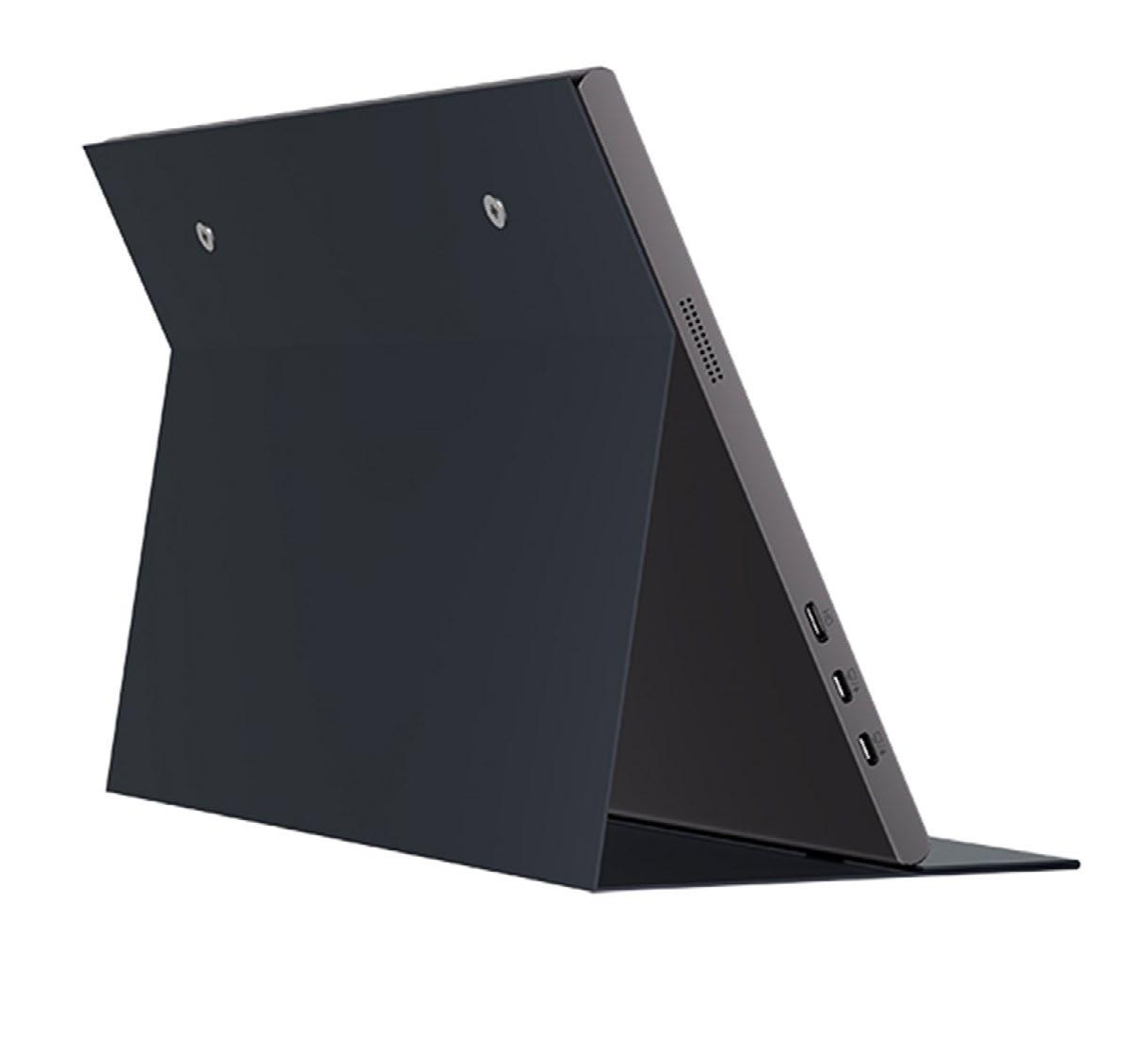



and editorial notes while the primary laptop handled heavy editing and capture duties. For quick approvals, client demos and timeline checks it is exceptionally useful. Final colour grading still belongs on a calibrated desktop monitor, but the PM156C is perfectly adequate for rough colour passes, compositional checks and rapid editorial decisions in the field.
Paired with a USB-C enabled gaming laptop, a Switch or a console via Mini-HDMI, the PM156C offers satisfying portable gaming. Image clarity and colour are strong for single-player and co-op sessions; social multiplayer and hands-on demos benefit from the convenience. Competitive gamers will note the 60 Hz ceiling, but for the majority of on-the-go play the monitor’s picture and convenience outweigh that limitation.
The monitor’s low power draw and USB-C single-cable workflow keep luggage and cable clutter minimal. Expect increased battery consumption on phones and ultra portables during long sessions; carrying a compact USB-C power bank mitigates this. The included case and cables mean you rarely need to hunt for adapters mid-trip, which saves time on press runs and event days.
At £79.99 the PM156C undercuts many premium portable panels while including a protective case and the necessary cables.
For creators, journalists and event attendees who need a reliable second screen without a large outlay, the monitor represents strong value: it trades high-end refresh rates and factory calibration for portability, versatility and practicality, delivering immediate utility for onthe-go workflows.
The piXL PM156C earns an 8 out of 10. It stands out as a travel-ready tool that genuinely expands on-site workflows, speeds up editorial checks and keeps gaming and livestream monitoring portable and painless. The score reflects excellent portability, broad device compatibility and thoughtful inclusions at a keen price point. The deductions are specific and measured: the 60 Hz panel and basic colour calibration limit pro esports play and final colour grading. For the majority of creators who move between laptops, consoles and cameras at events or on the road, the PM156C is not a luxury, it is a practical essential that performs exactly where it needs to.
The review unit arrived with the piXL PM156C monitor, a foldable protective case that doubles as a stand, a USB-C cable for single-cable video and power, a Mini-HDMI cable and a quick start guide. Thanks to Target Components for supplying the review unit and support during testing; more information can be found at:
www.targetcomponents.co.uk.


Reviewed by: Brandon Sawyer
In an age where work happens everywhere — from bustling coffee shops to open-plan offices — keeping your screen to yourself has become as important as keeping your passwords safe. Privacy screens have quietly evolved from clunky, adhesive nightmares into sleek, removable filters that protect your data without compromising your workflow. Two standout options in this space are the Prevo 15.6" Anti-Glare Laptop Privacy Screen Filter and the piXL Privacy Screens for 24" and 27" monitors. Both promises to keep prying eyes at bay, but they do so with a level of ease and polish that makes them genuinely worth considering.
The Prevo 15.6" model is designed for laptops with a 16:9 aspect ratio, but it’s far from a onesize-only solution. The range is available in multiple screen sizes, allowing you to choose the exact fit for your laptop — whether you’re using a compact 13-inch ultra book, a standard 15.6-inch workhorse, or a larger 17-inch powerhouse. This flexibility means you can enjoy the same privacy, anti-glare, and antistatic benefits no matter what device you work on.
What sets it apart is its precision-engineered louvers that restrict the viewing angle to 60 degrees. Sit directly in front of your screen and everything is crystal clear; move even slightly off-centre and the display fades to black. This makes it ideal for professionals handling sensitive data — think financial reports, legal documents, or exam materials — in public or semi-public spaces.
The anti-glare coating is a welcome touch, cutting down on reflections in bright environments, while the anti-static layer helps repel dust. Installation is refreshingly simple:

no messy adhesives, just a static-cling fit that grips the screen securely but can be removed in seconds when you need to share your display.
For desktop setups, piXL offers privacy filters tailored to 24-inch and 27-inch widescreen monitors. Both sizes share the same core design philosophy: a frameless, anti-glare, anti-peep filter that limits the viewing angle to 60 degrees, ensuring only the person directly in front of the monitor can see what’s on screen. Like the Prevo, these piXL filters avoid adhesives entirely, instead using the natural static of the screen to stay in place. This means you can fit or remove them in seconds — a huge advantage if you alternate between solo work and collaborative sessions. The matte finish reduces glare and eye strain, while also adding a layer of protection against scratches and dust.
The 24-inch version is perfect for standard office monitors, while the 27-inch caters to larger creative or gaming displays. Both are particularly useful in shared workspaces, reception areas, or any environment where sensitive information might be visible to passers-by.
One of the biggest barriers to adopting privacy screens in the past was the hassle of installation. Adhesive strips left residue, rigid frames didn’t fit flush and removing them often meant damaging the filter or the screen. Both Prevo and piXL have solved this elegantly. Fitting either brand’s filter is as simple as aligning it with your display and letting the static cling do the work. Need to clean it? Lift it off, wipe it down, and reapply. Switching between private and shared viewing takes seconds, making these filters genuinely practical for everyday use.
United Kingdom:
• Prevo 15.6" Anti-Glare Laptop Privacy Screen Filter – around £19.99–£20.77
• piXL 24" Privacy Screen – around £23.90–£33.95
• piXL 27" Privacy Screen – around £38.00–£60.99
United States (approximate conversions):
• Prevo 15.6" – around $25–$27 USD
• piXL 24" – around $30–$43 USD
• piXL 27" – around $48–$78 USD

and residue-free installation.
piXL 24" Privacy Screen Target Components: 24-inch widescreen desktop monitors. Best For: Office workers, reception desks, and shared workspace setups. Why Choose It: Quick fit and removal, glare reduction, and scratch protection for standard-sized monitors.
piXL 27" Privacy Screen Target Components: 27-inch widescreen desktop monitors. Best For: Designers, gamers, and professionals using large displays in shared environments. Why Choose It: Maintains clarity for the user while blocking side views, with the same easy-fit design as the 24-inch model.
Both the Prevo and piXL privacy screens deliver on their promises with a combination of effective privacy protection, anti-glare comfort, and effortless installation. The Prevo is a superb choice for mobile professionals who need a portable, residue-free solution, while the piXL range brings the same benefits to fixed workstations, scaling up to larger displays without sacrificing clarity or ease of use.
In a world where your screen is often as exposed as your workspace, these filters offer peace of mind without the pain of permanent fixtures. They’re discreet, durable, and — most importantly — they just work.
Rating: 9/10 — Practical, well-designed, and surprisingly affordable privacy solutions for both laptops and monitors.
Prevo 15.6" Anti-Glare Laptop Privacy Screen Filter Target Components: Laptops (16:9 aspect ratio) — available in multiple sizes to match your exact laptop dimensions. Best For: Mobile professionals, students, and anyone working on sensitive documents in public spaces. Why Choose It: Ultra-portable, anti-glare, anti-static, www.targetcomponents.co.uk
If you too would love to source one of these screens, then we recommend you head over to Target Components to secure one or many other products that they sell in which you can do so at the link below.

Reviewed by: Brandon Sawyer
Dongguan Padmat Rubber Co., Ltd was founded in July 2009 and has deep roots in natural rubber research and manufacturing. Their facility combines automated production with partnerships in industry-university research, ensuring every batch meets ISO9001 quality standards and international environmental certifications like RoHS and REACH.
The company operates multiple advanced mixing, calendaring, and automatic cutting lines, boasting a daily capacity exceeding 15,000 units. This scale lets them customize thickness, colour, surface materials, and even bottom-side hues to precise customer demands.
Every Padmat mouse pad features a 4 mmthick x-soft rubber base engineered for vibration damping, ergonomic support, and strong desk adhesion. This cushiony layer adapts to your hand pressure, reducing fatigue during marathon gaming sessions while preventing slippage under rapid wrist movements. The natural rubber compound also offers a subtle tack that anchors the pad without leaving residue, striking the ideal balance between permanence and portability.
Padmat understands that different playstyles need distinct surfaces. Their portfolio includes:
• Speed-Oriented Cloth: Ultra-tight weaves minimize resistance for lightning-fast flicks and broad sweeps.
• Control-Focused Micro-Texture: Fine, low-gloss patterns enhance pixel-perfect tracking, making headshots intuitive.
• Hybrid Weaves: Balanced weaves that blend swift glide with reliable stopping power, ideal for adaptive players.
By adjusting thread density and surface coatings, Padmat delivers consistent glide across large sweeps and crisp feedback for tiny adjustments.
Valorant players often favor a stable, balanced pad that supports both precise crosshair placements and quick peeks. Padmat’s mid-density hybrid cloth offers that sweet spot: enough friction for pinpoint flicks, yet enough glide to reposition instantly. For titles demanding extreme speed like CS:GO or Apex Legends choose the low-pile speed cloth with Poron foam infusion. And in strategy shooters such as Rainbow Six Siege, the control pad’s micro-textured finish gives you the minute adjustments crucial for breaching and clearing.
Padmat embraces artistry by printing mouse pads that resonate with Chinese heritage:
• Calligraphic Brushwork: Swirling ink–wash strokes over a muted background evoke classical scroll paintings.
• Dragon Scale Patterns: Subtle, repeating scales in metallic inks capture mythic power without overwhelming the desk.
• Modern Cityscapes: Neon-lit skylines of Shenzhen or Shanghai blend urban vibrancy with high-tech aesthetics.
These themed pads use fade-resistant dyes and silk-screening methods to ensure cultural motifs stay crisp through thousands of hours of gameplay.
I’ve spent weeks testing all three Padmat surfaces during late-night Valorant scrims and marathon CS:GO sessions. The x-soft rubber base really cushions my wrist, and I’ve noticed less soreness after 6-hour runs. Each surface offers a distinct feel:
• Speed Cloth: Slick glide lets me flick across my 27-inch monitor without hesitation. Rating: 9/10
• Control Micro-Texture: I nailed headshots with surgical precision, though it takes a few sweeps to warm up. Rating: 8.5/10
• Hybrid Weave: The best of both worlds smooth repositioning and crisp stopping power made adaptation seamless. Rating: 9/10
On aesthetics, the dragon-scale print has become a conversation piece at LAN parties, and the ink-wash brushwork adds elegance to my desk. Overall, I’d give Padmat mouse pads a solid 9/10 for performance, comfort, and style.
Whether you’re chasing Valorant ranks, executing flick headshots in CS:GO, or simply craving a desk mat that blends comfort with cultural flair, Dongguan Padmat Rubber offers:
• Custom thickness options starting at 2 mm up to 6 mm
• A choice of speed, control, or hybrid cloth surfaces
• Vibrant, long-lasting prints inspired by Chinese art and beyond
• Automated quality controls for consistent feel and durability
Looking ahead, Padmat is exploring eco-friendly rubber blends, anti-microbial surface treatments, and interactive RGB underglow edges. If you’re ready to elevate both your desk’s performance and its aesthetic story, keep a close eye on their upcoming releases.

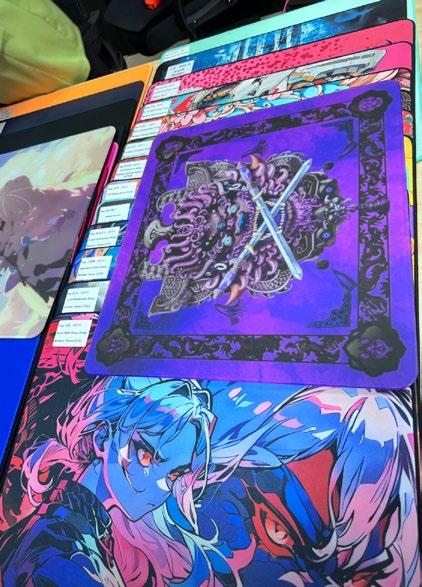


On Wednesday, 13 August 2025, Liverpool’s Cains Brewery Village once again transformed into a living celebration of all things gaming.
The cobbled-brick courtyards, historic industrial walls, and buzzing indoor halls formed the backdrop for Timeless Gaming Convention — now in its fourth year — an event created and helmed by Middle Aged Gamer Guy (MAGG).
Before the public floodgates opened, MAGG hosted an exclusive VIP Night in the heart of Cains Brewery. This invite-only gathering brought together content creators, industry partners, and special guests for an evening of connection, conversation, and a sneak peek at what Timeless 2025 had in store.
Guests explored select areas of the show floor before anyone else, chatted over drinks, and swapped stories about their own journeys in gaming. MAGG used the opportunity to share the philosophy and origin story of Timeless — his vision of a convention that celebrates play first, marketing second, and champions both grassroots creators and industry icons.
The night set the tone for the entire event: collaborative, inclusive, and buzzing with possibility. Deals were discussed, collaborations were sparked, and old online friendships became face-to-face reunions.
“It’s these moments, before the noise and the lights, where the real magic happens,” said MAGG during his welcome toast. “This community builds itself when you give it the right space.”
Born in the wake of lockdown, Timeless was MAGG’s answer to “walk-and-look” conventions. His approach was hands-on first — a space where you could play retro, indie, AAA, and experimental games without spending hours in a queue, and where conversations with developers felt like chats between friends. That ethos is everywhere — from the warmth of the volunteer team to competitions designed to be as fun for newcomers as for competitive veterans.
This year, The Gamer Guide wasn’t just running a show-stopping Special Gaming Zone — they were also the driving force behind inviting the army of content creators who descended on the convention. Streamers, YouTubers, TikTok personalities and journalists from across the UK joined the fun, capturing the event from every angle and sharing it live with their audiences. Every one of them left with stories, footage, and collaborations sparked on the show floor.
Within the zone itself, the energy never dipped:
• Aim Lab Showdowns on Custom Tecware Gaming PCs, with Daily High Score Winners claiming a Logitech G G535 Wireless Headset.
• Split Fiction: Lazer Hell Co-Op Challenge with Tecware Gaming Mouse prizes for teams reaching Level 3.


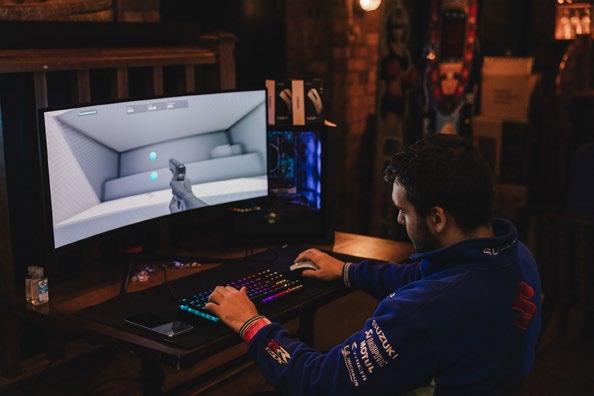
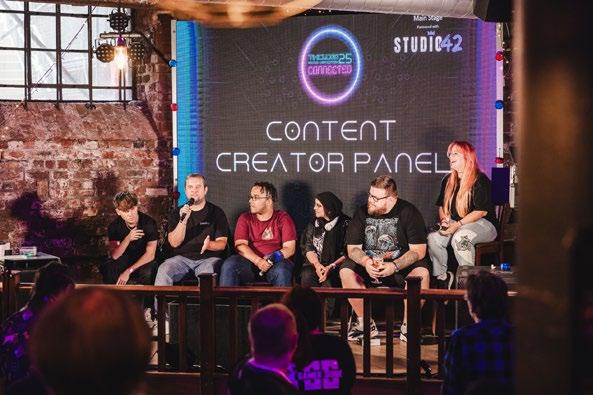
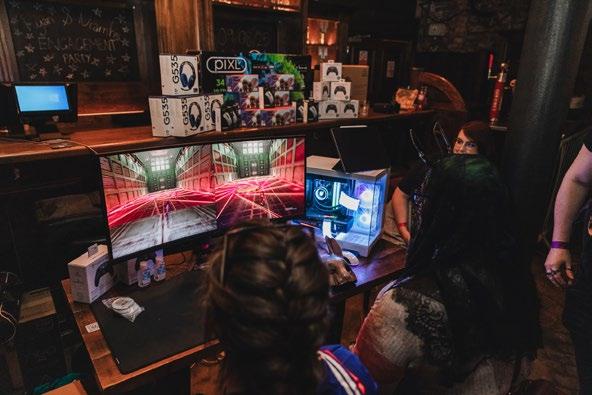









• A piXL Ultra-Wide Gaming Monitor claimed via the main stage draw.
• Sawyer from The Gamer Guide working the crowd, tossing React-R Controllers from Turtle Beach between matches.
• Plus — a steady flow of extra prizes handed out across the day for surprise comps, quick-fire challenges, and special moments — meaning you never knew when you might walk away a winner.
“The best event I’ve been to in a long time. 10/10 — going again next year,” said attendee LoopyLuGaming02.
Part of the ticket, part of the magic — Arcains Arcade offered walls of retro cabinets, rhythm games, and modern hits. It became the social hub between panels and matches, where strangers became co-op partners.
“Great atmosphere and great competitions! Well and truly got my geek on,” smiled attendee Bondie78.
Panels, Stalls & Show Floor Highlights
• WhatCulture Gaming Panel — Scott Tailford, Psy White, Josh Brown, and ex-host Ash Millman, moderated by Stuart “Ashens” Ashen.
• Tomb Raider 1-6 Retrospective — remaster team insights and nostalgia bombs.
• Cosplay Showcase — judged by pro cosplayer SJ Jinxx.
• Just Dance Competition — hosted by Ubisoft Creator Emzy Leigh, crowd-pleasing and high-energy.
• Show Floor Stalls — indie devs, retro resellers, merch, art, magazines, and hardware showcases.
“Timeless is a wonderful gathering for people passionate about gaming. Inclusive, safe, interactive, passionate,” said DJ Mike Storm.
In an industry where “community” is often just a buzzword, Timeless makes it real. It’s in the handshakes after tournaments, the laughter in the arcade, the late-night conversations at VIP Night that carry into new projects, and the sight of creators collaborating in real-time on the convention floor.
For The Gamer Guide, it was more than a presence — it was about building the bridge between creators, fans, and brands, amplifying the energy of the day across livestreams, feeds, and videos. Judging by the cheers, collaborations, and content already making the rounds online, the legacy of Timeless 2025 is set to resonate far beyond Liverpool.
The Gamer Guide will be back at Timeless Gaming Convention next year, bigger, bolder, and ready to bring even more competitions, prizes, and creator collaborations to the show floor. To stay in the loop on dates, announcements, and what’s coming for the next chapter, keep an eye on the official Timeless website for all the latest updates.

As Cologne’s Koelnmesse filled with a pulse-quickening energy and audiences worldwide tuned in to Geoff Keighley’s highly anticipated Opening Night Live (ONL), Gamescom 2025 once again staked its claim as the ultimate hub for gaming’s future. Far from a mere lineup of release dates, ONL 2025 was a pageant of ambitious sequels, genre-defining reboots, and awe-inspiring original IPs— each announcement accompanied by cinematic trailers, dazzling gameplay reveals, and thunderous applause both online and in-person. The show did more than set the tone for the week ahead; it set the tone for the year in gaming, showcasing an industry maturing into its creative prime, unafraid of myth, mayhem, or bold experiments.
This is the definitive recap of Gamescom 2025’s Opening Night Live: a unique, in-depth guide to every major game revealed, dripping with the same anticipation, curiosity, and raw excitement that electrified the show’s two-hour runtime. We’ll spotlight the spectacle, the stage presence, and every “world premiere”—but more importantly, we’ll dig into the heart of each title, bringing you detailed insights into their developers, genres, platforms, and defining features.
As the lights dimmed and Opening Night Live began, Geoff Keighley’s signature blend of calmness and enthusiasm set the scene—not just for the bombastic AAA reveals, but for a show that delivered emotional narrative arcs, kinetic gameplay showcases, moments of nostalgia, and ambitions that spanned the globe. In a world where E3’s absence has left an industry gap, Gamescom 2025 confidently filled the void with a resounding statement: gaming is more creative, diverse, and unpredictable

than ever.
This year’s ONL lineup was framed by a spirit of boldness—sequels to fan favourites rubbing shoulders with fiercely original projects and crossovers that traversed fantasy and reality, East and West, indie and triple-A.
The crowd erupted as trailers rolled and new worlds unfolded, not just via staid press releases, but with cinematic bravado and immediate audience feedback. Let’s relive that energy, one major reveal at a time.
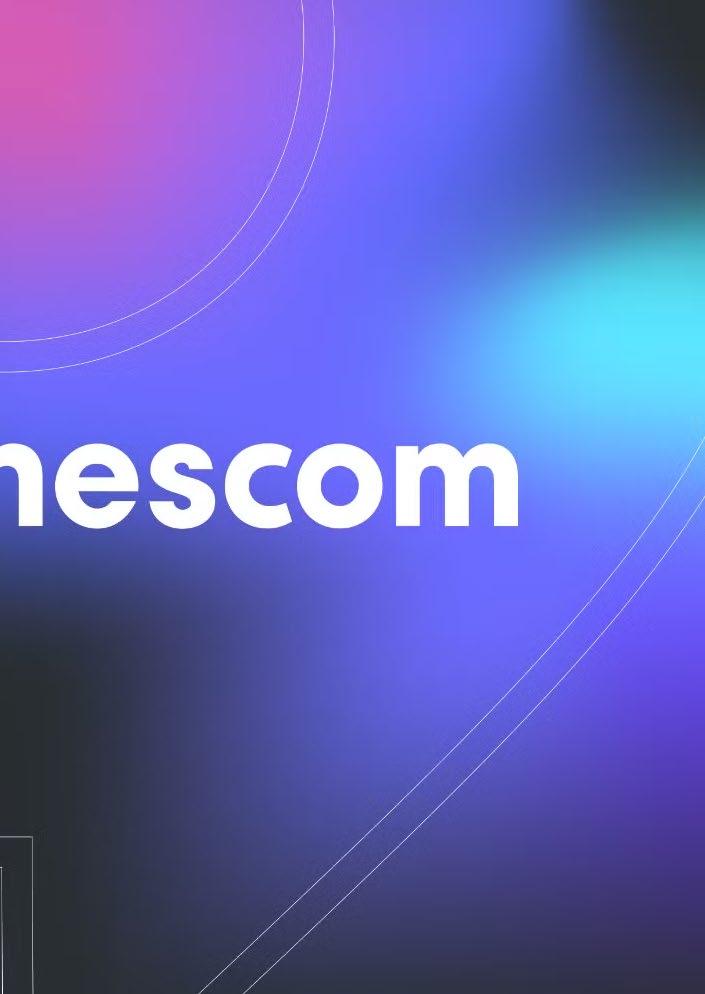
Black Myth: Zhong Kui – The Next Epic from
The ceremonial closer for ONL 2025—and perhaps its most tantalizing long-term promise—was Game Science’s unveiling of Black Myth: Zhong Kui. Rising on the momentum of 2024’s chart-topping Black Myth: Wukong, the new entry dives even deeper into Chinese mythology by shifting the spotlight to the legendary demon-queller Zhong Kui. This sequel eschews the Monkey King for a new mythic protagonist, trading acrobatic stafffighting for tiger-mounted ghost-banishment in a world equally rich in ancient folklore.
Visually, the reveal trailer was a love letter to dark fantasy and spectral wonder. Amid flickering lanterns and spectral pagodas, Zhong Kui’s arrival—in full mythic regalia and astride a massive tiger—oozed authority and grandeur, instantly setting the stage for a new saga that promises both action-packed combat and a more psychological, narrative-driven quest.
Key Details:
• Developer/Publisher: Game Science
• Genre: Single-player Action RPG, Mythological Fantasy
• Platforms: PC and all next-gen consoles (release timing TBA)
• Notable Features: Playing as Zhong Kui, the “ghost-catching god” of legend—expect demon armies, a massive explorable world, narrative depth, and a fresh take on combat (with hints at even more ambitious mechanics than its predecessor).
What makes this reveal so significant, beyond the dazzling spectacle, is Game Science’s promise of learning from “past flaws and regrets,” a pledge to both innovate and retain what made Wukong a phenomenon. The fanbase, ravenous for more mythological action, will have plenty to speculate about as Black Myth: Zhong Kui ascends from early teaser to eventual gameplay deep-dive.
Few franchises can command the audience’s attention like Capcom’s Resident Evil, and Resident Evil Requiem (the series’ ninth mainline entry) delivered a new story trailer thick with dread and tension. This time, the narrative orbits around Grace Ashcroft, an FBI analyst whose investigation into outbreaks dredges up traumas tied to her mother Alyssa. The gameplay trailer, a deft blend of third- and first-person survival horror, positioned the game as both an evolution and a gruesome homage to the series’ roots.
The footage oscillated from pulse-pounding close-quarters survival to unnerving, near-silent exploration—Grace and Alyssa moving through a powerless building, stalked by monsters both metaphorical and literal. Every sequence felt penned with atmospheric dread: as lights flickered and horrors crept just out of frame, it was clear Capcom is doubling down on immersion and psychological complexity.
Key Details:
Developer/Publisher: Capcom
Genre: Survival Horror (Third & First Person)
Platforms: PC, PS5, Xbox Series X|S
Release Date: February 27, 2026
Features: New protagonist (Grace Ashcroft), multi-generational trauma, hybrid gameplay perspectives, advanced graphics and sound, and what appears to be a chilling, labyrinthine new threat.
There’s no doubt that Requiem aims to satisfy longtime fans while reeling in newcomers hungry for next-gen frights. While details about specific mechanics were kept under wraps, the game’s dark and familial focus promises another twist on the Resident Evil formula—one that had the ONL audience holding its collective breath.

Ghost of Yotei – Vengeance Writ Large in
Sucker Punch's much-anticipated sequel to Ghost of Tsushima, Ghost of Yotei, made a stunning impression with its "Song of Vengeance" trailer. Stepping into the shoes of Atsu, a new protagonist driven by the trauma of family tragedy, players will traverse the haunting landscapes of Ezo—snowbound fields, storm-lashed forests, and bloodied battlegrounds teeming with spectral threat and personal vendetta. The trailer highlighted Atsu’s journey to track the infamous Yotei Six, deploying acrobatic rope-climbing, horseback traversal, and a wealth of freshly animated swordplay. The combat sequences—fluid, heavy, and brutally visceral—recalled the series’ samurai authenticity but hinted at mechanical evolutions and a more sombre antiheroic arc. The haunting closing voice-over (“Sometimes I feel like that is what I am—a ruthless spirit, driven by vengeance”) set the mood for the played-up focus on psychological depth and mythic stakes.
Key Details:
• Developer/Publisher: Sucker Punch Productions / Sony
• Genre: Action-Adventure, Open World
• Platforms: PlayStation 5 (and likely future PC port)
• Release Date: October 2, 2025
• Notable Additions: Co-op mode "Ghost of Yotei Legends" (coming 2026, echoing Ghost of Tsushima’s own Legends), expanded traversal and combat, richly detailed landscapes.
The sequel seems poised to marry its forerunner's deft swordplay with even grander emotional stakes and innovative multiplayer— the crowd’s reaction spoke for itself, a raucous mixture of awe and impatience for more.
Cult of the Lamb: Woolhaven – Winter Comes to the Cult
One of indie gaming’s most infectious genre mashups returns with a full-length DLC
expansion, Cult of the Lamb: Woolhaven. Massive Monster’s latest chapter whisks the adorable-yet-demented Lamb and their flock up a mysterious, snow-laden mountain at the behest of a forgotten God. The expansion introduces harsh winter survival mechanics, new dungeons, freezing weather that can threaten (or strengthen) your flock, and a ranching system for rare animal husbandry.
If the original game mixed base building, action roguelite dungeons, and darkly cute cult sim features, Woolhaven doubles down with challenges that test both management and morality—enduring blizzards, taming and riding rare beasts, and reclaiming the mountain from malevolent corruption.
Key Details:
• Developer/Publisher: Massive Monster / Devolver Digital
• Genre: Action, Adventure, Strategy Roguelike (DLC expansion)
• Platforms: PC, PS5, PS4, Xbox Series X|S, Xbox One, Switch, Switch 2 (likely cross-gen support)
• Release Window: Early 2026
• Notable Features: Two vast new snow dungeons, harsh winter survival, animal ranching, new storylines about lambkind’s origins, and more.
Woolhaven’s reveal not only sent a shiver through the room, but it also showed how fearless indies are in evolving their formula— and how much ONL has become a showcase as much for creative indies as for the blockbuster giants.
Kingdom Come Deliverance II: Legacy of the Forge – Blacksmithing the Future
History nerds and RPG aficionados were delighted by the reveal of the second DLC for Kingdom Come: Deliverance II: Legacy of the Forge. The expansion places players in the boots of Henry, newly inducted as Kuttenberg’s master blacksmith, on a quest to rebuild and personalize a fallen forge. But this isn’t merely cosmetic; the DLC presents a full workshop

mechanic, questlines about Henry’s surrogate father Martin, and the emotional journey of resurrecting his legacy.
Forge customization isn’t just for show— players will receive commissions, craft unique weapons and armor, and interact with a bustling Blacksmiths’ Guild. Over 100 million home customization combinations are promised. It’s a substantial addition blending narrative depth, systems mastery, and a layer of cozy medieval life rarely seen in RPGs.
Key Details:
• Developer/Publisher: Warhorse Studios / Deep Silver
• Genre: Historical RPG, DLC Expansion
• Platforms: PC, PS5, Xbox Series X|S
• Release: September 9, 2025
• Features: Workshop crafting, homebuilding, expanded narrative, side activities, new mechanics.
With this pack, the already authentic world of Kuttenberg gets even richer, reflecting the series’ drive toward immersive simulation and organic player agency.
One of the most awarded real-time strategy franchises boldly marched into a new domain: Age of Empires IV: Anniversary Edition lands on PlayStation 5, bringing its sophisticated strategic systems to a console-friendly UI for the first time. Announced alongside its “Dynasties of the East” expansion, PS5 players can soon sink their teeth into four campaigns spanning 500 years of history with 10 diverse civilizations. The transition to consoles, with fully redesigned controller schemes, accessibility features, and new multiplayer modes, aims to bring a new generation of players (and casual couch tacticians) into the fold.
Key Details:
• Developer/Publisher: World’s Edge Studio, Relic, Climax, Forgotten Empires / Microsoft
• Genre: Real-Time Strategy
• Platform: PlayStation 5
• Release: November 4, 2025
With PlayStation exclusivity for the console version (at least for launch), this reveal conjured applause from PC and console strategists alike, celebrating decades of series tradition with a new battlefront.
Silent Hill f – Horrors Blossom in the Fog
Konami’s latest horror epic, Silent Hill f, haunted the stage with a chilling narrative trailer set in 1960s Japan. Written by visual novel legend Ryukishi and scored by Akira Yamaoka, the story follows Hinako Shimizu as her town, Ebisugaoka, dissolves into a supernatural nightmare, rippling with grotesque monsters and doppelgängers.
With gameplay that balances puzzle-solving, psychological unraveling, and desperate combat, this title promises a return to the series’ psychological roots, but with a new cultural lens and a modern engine. Multiple endings and New Game+ add replayability.
Key Details:
• Developer/Publisher: Neobards Entertainment / Konami
• Genre: Psychological Horror, Survival Horror
• Platforms: PC, PS5, Xbox Series X|S
• Release: September 25, 2025
The gothic, mossy visuals and story-rich trailer gripped the audience—many noting how Silent Hill f’s Eastern horror sensibilities mark a bold step for the franchise’s evolution.
Delta Force – Tactical FPS Gets a New Lease on All Platforms
The tactical legacy shooter returned with a vengeance: Delta Force is now available on almost every modern platform, complete with large-scale PvP, extraction-style PvEvP ("Operations"), and classic Black Hawk Down campaign missions.
This release balances nostalgia with modernized gunplay, map design, and full crossplay support.

Key Details:
• Developer/Publisher: TiMi Studio Group / Team Jade
• Genre: Tactical FPS, Multiplayer
• Platforms: PS5, Xbox Series X|S, PC, iOS, Android
With options for both competitive, cooperative, and solo play, Delta Force’s return was a nostalgic highlight for FPS veterans and newcomers alike.
Obsidian’s irreverent space-faring RPG saga continues with The Outer Worlds 2, set for October 29, 2025. The ONL trailer spotlighted both companion-centric narrative (with six new sidekicks like Niles the engineer and Tristan the arbiter) and flexible mission navigation— stealth, hacking, and conversations as nuanced as ever.
Obsidian doubled down on its trademark humour, declaring that “you can’t romance the companions,” but fans expressed excitement for even deeper replayability and narrative freedom, along with greatly expanded environmental interaction and weapon modding.
Key Details:
• Developer/Publisher: Obsidian Entertainment / Xbox Game Studios
• Genre: Sci-Fi RPG
• Platforms: PC, PS5, Xbox Series X|S (Game Pass Day 1)
• Release: October 29, 2025
• Notable Features: New companions, expansion pass, destructible environments, improved stealth, robust skill trees.
With player-driven chaos and absurdist corporate satire intact, The Outer Worlds 2 is poised to be one of 2025’s most replayable RPGs.
Cronos: The New Dawn – Horror’s Next Evolution
Bloober Team delivered a new breed of horror with Cronos: The New Dawn, blending survival horror with dual timelines (dystopian future and 1980s Poland) and creature design inspired by Resident Evil, Dead Space, and The Thing23. The trailer’s blend of eerie cats, shifting realities, and monstrous “Orphans” underscored a uniquely cinematic approach to narrative and jump scares.
Key Details:
• Developer/Publisher: Bloober Team
• Genre: Survival Horror, Sci-Fi
• Platforms: PC, PS5, Xbox Series X|S, Switch 2
• Release: September 5, 2025
Cronos is poised to challenge even the most iron-nerved horror fans with its branching timelines and relentless psychological torment.
Ninja Gaiden 4 – Fast, Furious, and Modernized
A surge of nostalgia met a modern edge as Ninja Gaiden stormed back into action. Ninja Gaiden 4 blended the franchise’s precision hack-and-slash combat with new story depth and adrenaline-fueled, seamless transitions between platforming and combat25.
Key Details:
• Developer/Publisher: Team Ninja, PlatinumGames, Koei Tecmo
• Genre: Action-Adventure, Hack-and-Slash
• Platforms: PC, PS5, Xbox Series X|S, Xbox Cloud, Steam
• Release: October 21, 2025
Pre-orders unlock the exclusive Dark Dragon Descendant Yakumo Skin.
Neverness to Everness – Urban Exploration Meets Anomaly Hunting
Perfect World Games and Hotta Studio’s Neverness to Everness introduced a supernatural urban open world where players double as “Anomaly Hunters” unraveling the mysteries of Hethereau—part detective story, part gachaaction, all stylish and frenetic.
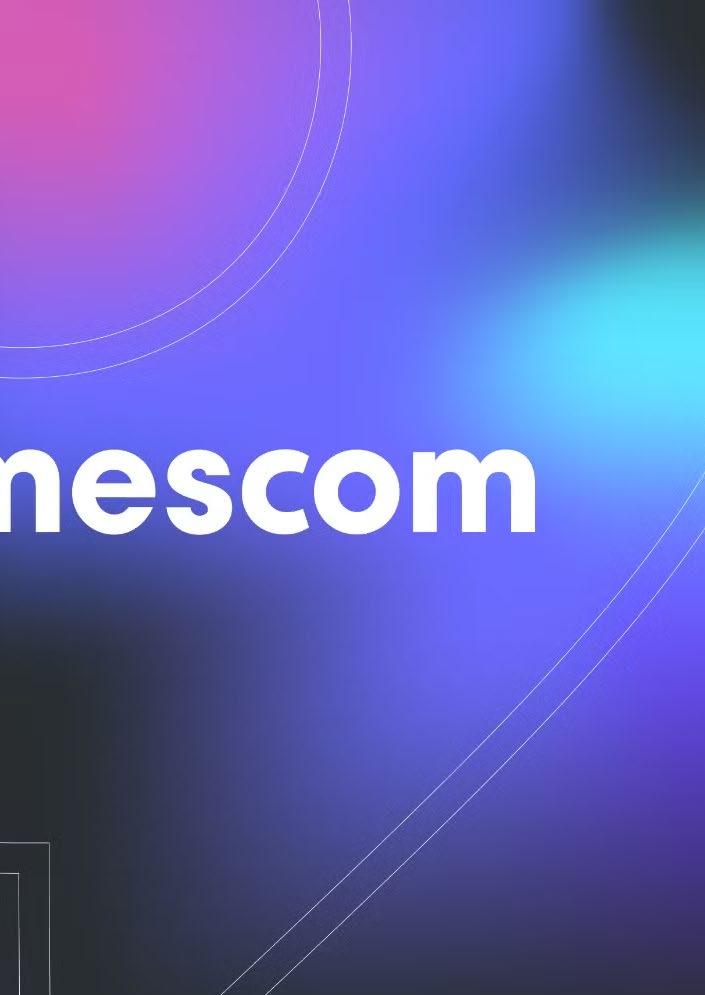
Key Details:
• Developer/Publisher: Hotta Studio / Perfect World Games
• Genre: Open-World RPG, Free-to-Play
• Platforms: PC, PS5, iOS, Android
Pre-registration and demo participation unlock real-world merch, adding a playful community edge to its stylish digital experience.
Onimusha: Way of the Sword – Capcom’s Samurai Horror Returns
Capcom’s Onimusha returns in full swing with Way of the Sword, focusing on thrilling swordplay, parry mechanics, and chilling Genma experiments. The third trailer highlighted ghastly monsters, brutal bosses, and a return to the Japanese atmosphere—not a Soulslike, but a kinetic action-adventure.
Key Details:
• Developer/Publisher: Capcom
• Genre: Action
• Platforms: PC, PS5, Xbox Series X|S
• Release: 2026
The game’s return after years of dormancy was met with both relief and excitement by the ONL crowd.
Marvel’s Deadpool VR – Fourth-Wall-Breaking Mayhem in Virtual Reality
Twisted Pixel and Meta raised the curtain on Marvel’s Deadpool VR, thrusting players directly into the chaotic mindscape of the “Merc with a Mouth”—now with parkour, freeform combat, and a galaxy-spanning streaming contract with Mojo. Neil Patrick Harris voices Deadpool; John Leguizamo, Mojo.
Key Details:
• Developer/Publisher: Twisted Pixel / Meta
• Genre: VR Action/Comedy
• Platforms: Meta Quest 3, 3S
• Release: November 18, 2025
On the show floor, the demo’s blend of laugh-outloud narration and visceral VR antics made this a favourite for both Marvel and VR communities.
Indiana Jones: The Order of Giants – Rome’s Secret Catacombs Unveiled
Indiana’s latest downloadable adventure, The Order of Giants, drops players into the dangerous depths of Rome—combining gladiator games, mythic creatures, and cryptic puzzles33. With new enemies, winding sewers, and the Cult of Mithras, Indy’s cerebral wit is matched only by the game’s twisting narrative.
Key Details:
• Developer/Publisher: MachineGames / Bethesda
• Genre: Action-Adventure DLC
• Platforms: PC, PS5, Xbox Series X|S
• Release: September 4, 2025
For fans of classic treasure-hunting, the next Indiana Jones chapter promises riddles, rival factions, and fresh DLC momentum.
VOID/BREAKER – Roguelite FPS with Custom Weapon Builds
Stubby Games and Playstack’s VOID/BREAKER launched straight into early access, dazzling fans of run-based shooters with destructible environments and a dizzying array of customizable gun mods.
Key Details:
• Developer/Publisher: Stubby Games / Playstack
• Genre: Roguelite FPS
• Platforms: PC (Steam), Xbox (Game Pass Early Access)
The constant loop of AI-driven enemies and creative weapon combos promises relentless replayability.
Monster Hunter Wilds x Final Fantasy XIV –Legendary Crossover Hunts
Capcom and Square Enix finally delivered a much-anticipated crossover: Monster Hunter

Wilds x Final Fantasy XIV. Players can hunt FF XIV’s Omega Planetes, and ride mounts such as Chocobos and Palicos—while FF XIV gets Monster Hunter’s Arkveld.
Key Details:
• Developers: Capcom, Square Enix
• Features: Crossover event, new mounts, pets, dungeons/hunts, two-way unlockables
• Release: Update launching SeptemberOctober 2025
This collaboration is a wish fulfilled for the fanbases of both gaming titans.
Arknights: Endfield – Base Building Evolves the Gacha Strategy Formula
Hypergryph and Montagne Studio revealed fresh gameplay for Arknights: Endfield, an evolution of the mobile strategy RPG built for a console and PC audience. The trailer spotlighted the new “AIC facility”—blending factory-building with real-time combat and wide-open exploration.
Key Details:
• Developer/Publisher: Hypergryph
• Genre: Action RPG/Base Building
• Platforms: PC, PS5, iOS, Android
• Release: 2026
The game promises to push the boundaries of the gacha/strategy template with open worlds and dynamic systems.
Warhammer 40,000: Dawn of War IV – RTS Kings Return
After years of speculation, Dawn of War IV was announced as a triumphant return for one of strategy gaming’s most beloved franchises. The gameplay trailer offered glimpses of massive, faction-based warfare, epic sync kills, a new Combat Director system, and sprawling campaigns featuring Space Marines, Orks, Necrons, and Adeptus Mechanicus.
Key Details:
• Developer/Publisher: Deep Silver, KING Art
• Genre: Real-Time Strategy
• Platform: PC
• Release: 2026
Over 70 missions, cinematic melee battles, and robust multiplayer put Dawn of War firmly back on the competitive RTS map.
LEGO Batman: Legacy of the Dark Knight – An Epic, Brick-Built Gotham
TT Games and Warner Bros. are finally bringing LEGO Batman back—this time with a massive open-world Gotham, a dynamic new fighting system inspired by Arkham, and storylines spanning every era of Batman, from Adam West to Robert Pattinson.
Key Details:
• Developer/Publisher: TT Games / Warner Bros.
• Genre: Action-Adventure, Open World
• Platforms: PC, PS5, Xbox Series X|S, Switch 2
• Release: 2026
Expect combat depth, cooperative play, vehicle customization, a rogues’ gallery, and more Easter eggs than you could possibly count.
Lords of the Fallen II – Soulslike Darkness Deepens
CI Games and Hexworks announced Lords of the Fallen II, setting the sequel 100 years after the 2023 reboot, promising deeper, more brutal soulslike combat, a dual-world system, and community-influenced design choices.
Key Details:
• Developer/Publisher: CI Games / Hexworks
• Genre: Action RPG (Soulslike)
• Platforms: PC, PS5, Xbox Series X|S
• Release: 2026
Shared co-op progression and custom PvP round out a feature list tailored for both purists and genre newcomers.
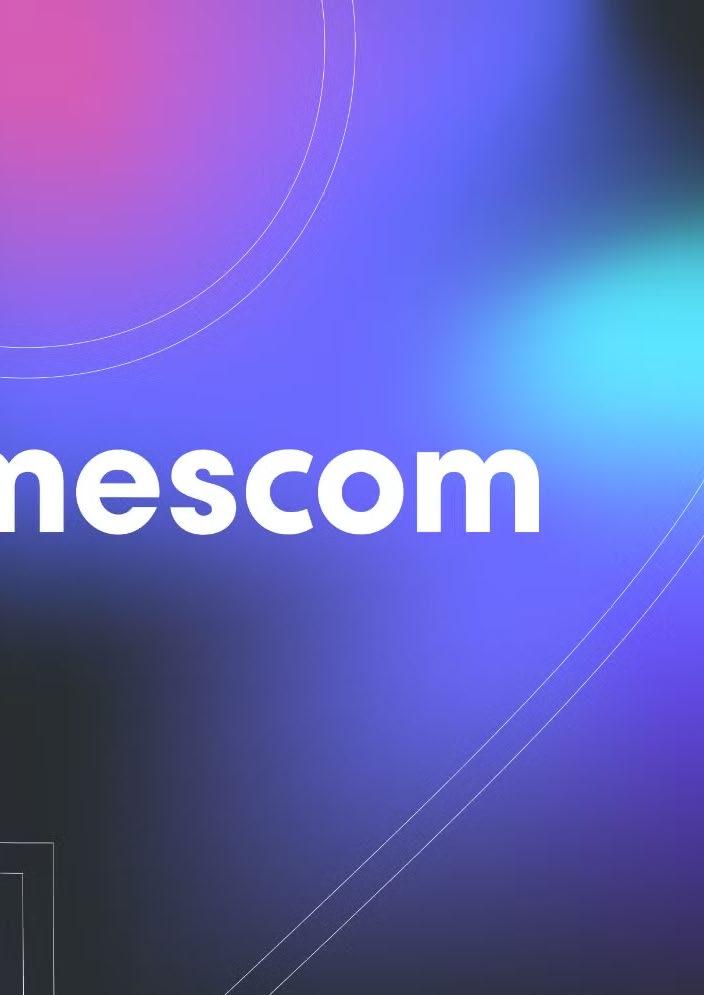
Call of Duty: Black Ops 7 – A Mind-Bending Co-op Campaign, Massive Zombies, and More
The Call of Duty juggernaut pressed forward with Black Ops 7—and Treyarch made sure to shake things up. The campaign, set in 2035, is fully co-operative (up to four players), with missions spanning neon-lit cities, surreal mindscapes, and gigantic, timeline-bending set pieces. Multiplayer debuts 18 launch maps, while Zombies resurrects the round-based mode, with returning and new characters colliding.
Key Details:
• Developer/Publisher: Treyarch / Raven / Activision Blizzard
• Genre: First-Person Shooter
• Platforms: PC, PS4, PS5, Xbox One, Xbox Series X|S
• Release: November 14, 2025 (Beta October 2–8)
Notable: Overclocked gear, new Skirmish mode, returning Zombies legends, massive content. With new movement, weapon overhauls, and wild narrative ambition, Black Ops 7 is aiming for franchise reinvention while honouring its roots.
Swords of Legends – Chinese Myth Reborn for a Worldwide Audience
Aurogon Shanghai’s globally focused reveal, Swords of Legends, marks the first time the legendary Gujian universe comes to Western consoles and PC. Play as Si Pan, the Underworld Enforcer, exploring a hauntingly beautiful realm steeped in undead Chinese myth, weaving fast-
paced combat, legendary artifact-crafting, and a narrative that honors centuries of folklore.
Key Details:
• Developer/Publisher: Aurogon Shanghai
• Genre: Third-Person Action RPG
• Platforms: PC, PS5, Xbox Series X|S (others TBA)
• Features: Mythology-inspired world, accessible combat (not a “Soulslike”)
The combination of Eastern myth, underworld adventure, and Unreal-engine scale positions this as a flagship for Chinese game development reaching new heights abroad.
Summing up the ONL experience in a single word simply wouldn’t do it justice. The air was thick with surprise and anticipation, as new heroes took up sacred mantles and legendary worlds expanded their boundaries. Whether you came to see history retold, horror reborn, cybernetic rebellion, ancient magic unleashed, or simply to ride a chocobo in a world not its own, Gamescom 2025 Opening Night Live delivered, and then some.
The night ended not on finality, but on a challenge—a call to stay curious, to revisit old favorites with fresh eyes, and to keep pushing at the boundaries of what games (and gamers) can be. As the curtain fell and the buzz lingered, one thing was certain: the next era of gaming has never looked so thrilling
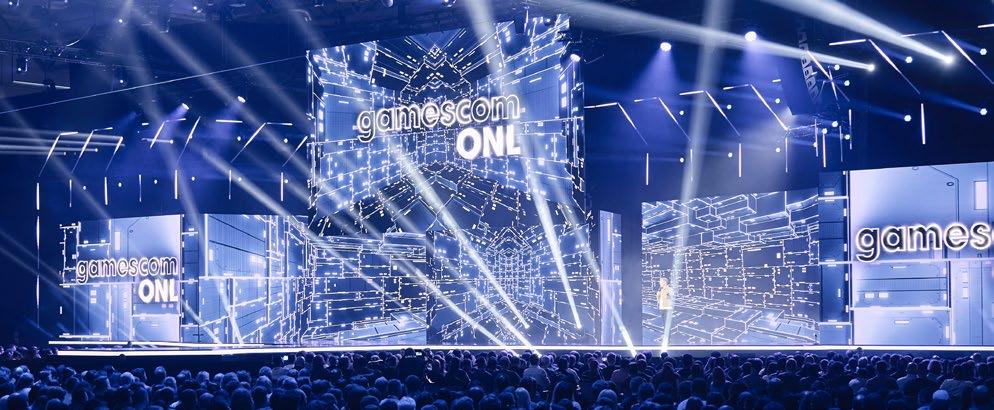

Gamescom 2025—Cologne transformed into a sprawling city of gaming magic, and being there as press for The Gamer Guide was electrifying beyond words. For me, Sawyer, the event was more than just a convention—it was a tapestry of genre-defining moments, surprise reveals, interviews with legendary devs, and hands-on time with gear and games we’ll all be talking about for years. From wild indie experiments to bombastic AAA showcases, and from intimate closed-doors meetings to the thunderous cheer of the 10th Xbox Fan Fest, every hall and every booth felt packed with promise and possibility. Strap in here’s my exhaustive, passionate, and deeply personal account of everything that made Gamescom 2025 the most exhilarating week of my career.
Walking into Koelnmesse for the very first time this year and our second year covering the event, I was instantly struck by the scale and diversity. Even compared to previous years, 2025 felt bigger and more ambitious, with a truly international crowd—a satisfying sign of Gamescom’s growing role as the heart of the gaming world post-E3.
The atmosphere before Opening Night Live (ONL) was electric, buzzing with rumours and expectations: everyone speculated about elusive sequels, hardware reveals, and, of course, surprise guest appearances.

ONL, hosted by the inimitable Geoff Keighley, was packed with absolutely everything from new teasers (Hollow Knight: Silksong! Call of Duty: Black Ops 7! Ghost of Yotei! Silent Hill f!) to world premiere trailers for the likes of Resident Evil Requiem, Metal Gear Solid Δ: Snake Eater, and Black Myth: Zhongkui. Both press and fans were hyped up for what felt, more than ever, like a crossroads for the next era of the medium.
For those not on the ground, the hall layout itself is a marvel that shapes every Gamescom journey. Halls 6, 7, 8, and 9 made up the heart of the entertainment area, each one bursting with its own blockbuster booths and interactive


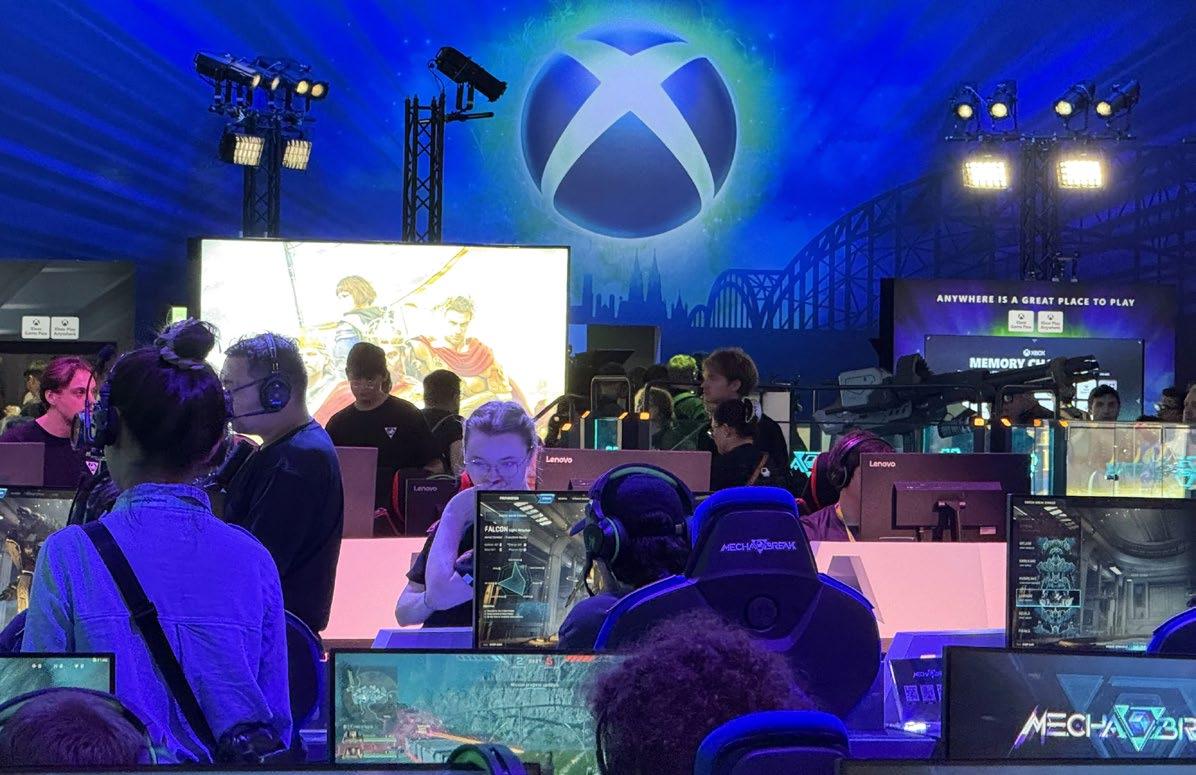
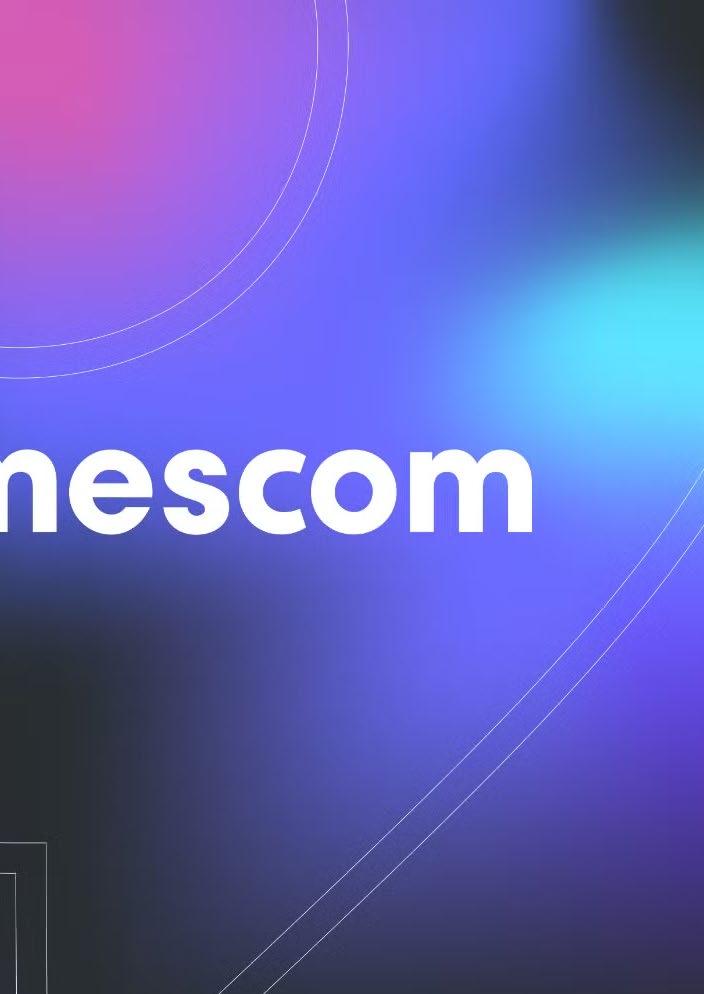

setups. Hall 6 played host to top-tier publishers like Bandai Namco and Ubisoft. Hall 7 was the kingdom of action—with SEGA, Roblox, Xbox, Konami, and the ever-crowded Kojima Productions display. Hall 8 roared with Blizzard, the eSport Pro Arena, and Netflix—yes, streaming giants now anchor gaming’s biggest live shows. Hall 9 was a family-friendly paradise with Nintendo leading the charge.
Meanwhile, up the escalators in 10.2 was the Indie Arena—the raucous, colourful bazaar where future cult classics elbow for space alongside nostalgia-fuelled surprises. Across the entire venue, themed areas offered cosplay, signing zones, and a well-stocked food plaza (crucial for late afternoons after a 12,000-step sprint). This year, the event arena shifted to Hall 1 to make additional room, a subtle tweak that made navigating the show surprisingly breezy.
My meeting with Supermassive Games for Directive 8020 was a definite highlight—one that doubled as a masterclass in event presentation and narrative intrigue. The demo suite was elegantly decked out—dim lighting, futuristic props, and a carefully curated tension that matched the game’s mood. The team walked me through not only a 13-minute gameplay prologue but also a collection of never-beforeseen environment renders and behind-thescenes ‘making of’ snippets.
Directive 8020’s “A Dark Pictures” DNA is unmistakable—branching narrative, gut-punch choices, and a mounting sense of paranoia as you guide five crew members stranded on Tau Ceti f. But what blew me away were the expanded stealth mechanics and tools: the scanner for electronic distractions, the multipurpose wedge tool, and the sense of dread when using your flashlight, knowing the lurking alien mimics your crew. The developers revealed even more about the “Messenger” system—an in-game device letting you communicate and strategize while trying to determine who (or what) among your friends is still human.
We discussed the delay to 2026, but this was framed as wholly positive: the team is
perfecting every scare, every branching path, and AI-driven enemy behaviour. The tone was clear—if Until Dawn modernized the slasher interactive drama, Directive 8020 looks to be the template for hard sci-fi horror in games.
One of the standout indie booths I visited was for The Midnight Walkers, a gritty first-person extraction shooter set in the zombie-infested mega-complex of Liberty Grand Center. Entering their booth felt like stepping into a survivor’s hideout—grimy walls, scavenged props, and a palpable sense of dread. The devs walked me through the core gameplay loop: fight through undead hordes and hostile players, scavenge valuable loot, and extract before the poison gas rolls in or you’re overwhelmed.
I got hands-on with the current build and was immediately drawn to the environmental hazards—particularly the randomized poison gas system that forces constant movement and tactical adaptation. While there’s no daynight cycle, the tension ramps up dynamically through shifting threats and permadeath stakes: lose your life, and everything you’ve collected is gone. The devs were buzzing about their weapon crafting system, which lets you modify melee and ranged weapons to suit your playstyle, and the hideout management mechanics that add depth between runs.
Though some features were still under wraps, I glimpsed a robust gear progression system and a locker room hub designed to foster longterm strategy and community interaction. With its punishing PvPvE structure and emergent combat scenarios, The Midnight Walkers feels like a love letter to fans of high-stakes survival gameplay.
The most adrenaline-pumping hands-on was with Dying Light: The Beast. Here, Kyle Crane— returning at last—seeks vengeance after years of captivity and experimentation. The playable demo dropped me into Castor Woods, a square mile of Swiss Alps gone rotten, open for free
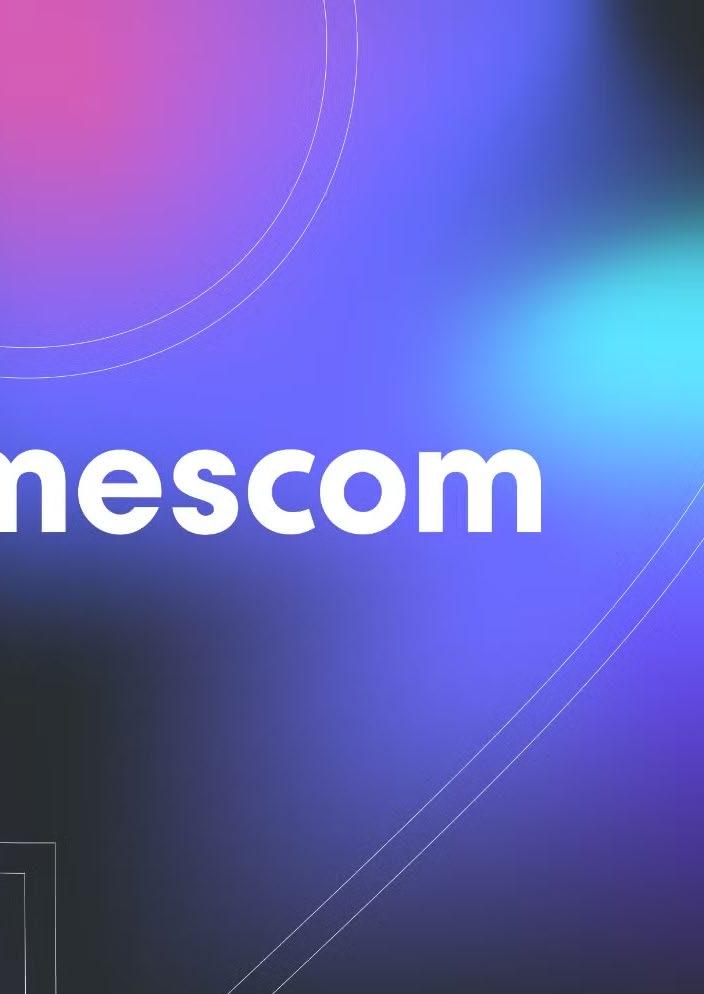
running and bloody parkour. Techland’s devs guided me through a revamped movement system: parkour is even more fluid, wall-running is expanded, and combat is sharper, with Crane’s mutations unleashing brutal takedowns that now feel like an evolution on Dying Light’s already genre-leading physicality.
The valley pulsed with danger. Hordes are smarter, and the day-night shifts bring both environmental and enemy behavioural changes: UV-sensitive nests, mutated bosses, even dynamic weather that impacts traversal and stealth. Immersing myself in the ten-minute on-floor demo, the refined atmosphere—the overwhelming sense of being hunted but also empowered—was palpable.
Afterwards, the Dying Light: The Beast mixer helped me connect with other journalists and Techland leads. Sipping German pilsners and sampling hearty local fare, conversations bounced from development anecdotes to gory E3 behind-the-scenes. It didn’t hurt that Techland teased some upcoming content only for those at the mixer: the revelation of a surprise “Berserk” gameplay mode and a sizzle real of unannounced boss enemies—which, for embargo reasons, I can't spoil, but trust me, the internet will lose its mind when it drops.
If you’ve ever wondered what it’s like to get a proper Bond experience in a game, IO Interactive’s 007 First Light is set to answer that call. My closed-door meeting started with an atmospheric montage: Pinewood Studios archival footage, Bond’s iconic theme, and a confident presentation by the game’s director. At the core is a truly original Bond origin story, following a 26-year-old, pre-007 James through MI6 training, global adventures, and the gruelling “first kill” that defines him.
What immediately stood out was the team’s commitment to a Bond untethered from existing actors—this is a wholly new face, designed for gaming. We talked about how Bond’s journey might become a trilogy, and how player agency is more than a promise: brute force, social engineering, high-tech gadgets, or classic
stealth all blend seamlessly—IO’s HITMAN legacy is evident in the intricate level design and multifaceted mission objectives.
My absolute favourite detail? The teased “Q-Lab” sandbox, where you’ll experiment with gadgets in missions your way, all while Bond’s persona grows through in-game decisions. Exclusive studio concept art showed me a Bond game poised to become both a love letter to the franchise and the start of a new chapter in interactive storytelling. And the bonus: those who sign up for an IOI account get a launchexclusive in-game item—another layer of playerfacing care that IO Interactive is known for.
Hardware buffs flock to Gamescom for reveals as much as for games, and my scheduled session with Turtle Beach was one of the most anticipated product previews on the floor15. In a soundproof VIP area, Turtle Beach’s team unpacked their entire 2025-26 roadmap: the highlight being the Atlas 200 Wired Gaming Headset, a PlayStation-licensed accessory with new 50mm Nanoclear drivers for ultraimmersive spatial audio. We demoed it sideby-side with last year’s model—tiny nuances in enemy footsteps and open-world ambiance were shockingly clear.
Even more exclusive was the hands-on with unreleased wireless headsets crafted for next-gen Xbox and PC, sporting an adaptive AI-driven EQ and real-time voice assistant integration. The team teased future cross-title compatibility modes, further closing the gap between console and PC gear. Rounding out the closed-doors session were sneak peeks at a modular controller lineup and a new latencyzero soundbar for living room setups—details on these were under NDA, but I can assure you, Turtle Beach has a few hardware tricks up their sleeve for the next cycle.
Jumping genres, the most original pitch I heard all week was from the creative leads on God Save Birmingham. This is a post-plague survival

sim set in 14th-century England—a medieval hellscape awash in zombies. From the prealpha trailer to live pre-Alpha playtest signups, the experience is as much about rebuilding as it is about surviving. Clad in chainmail in the developer pod, I tried out barricade-building and tested the game’s blend of base defence, day-night cycle attacks, and ‘cast-iron stomach’ gruesome gore mechanics.
The game’s core: outsmarting the undead and human rivals alike, in an era before modern weaponry. The creative director described borrowing inspiration not only from classic zombie media, but also from the city-building and social simulation genres, with emergent character dramas playing out as you try to restore order to England. Even after the demo, I hung around to discuss the hidden resource systems and NPC relationships—everything feeding into a branching crisis narrative. This one’s squarely on my watchlist for 2026.
The team at Saber and Focus Entertainment gave me an unprecedented deep-dive into Road Kings, their next-gen, American Southset trucking simulation—complete with a lush biomes demo and a developer Q&A. Road Kings stands as a hybrid: think the meticulous technical weight of Snowrunner, fused with the open-world freedom and drama of American Truck Simulator. From Jacksonville to Savannah, the landscapes are lovingly detailed—rain, mud, breakdowns, and a reactive world that poses both natural and human hazards.
The Road Kings systems were shown off through dynamic weather impact, timed deliveries, and an evolving reputation system: are you solo, or building a haulage empire in asynchronous multiplayer with global leaderboards? The developers noted a narrative angle involving a “ruthless corporation” threatening the region, giving even the most routine delivery some existential stakes. The realism—even down to truck maintenance and personalized upgrades—suggests this is one sim that wants to do more than emulate truck driving; it wants to make you feel the risk, the journey, and the
career of being a road king. I can see both hardcore sim fans and newcomers sinking full weekends into this one when it launches.
Every year, Zotac grabs attention in hardware, and this year’s display was a showstopper. Centre stage: the GeForce RTX 50 Series GPUs—with their signature gunmetal finish, geometric design, and “infinity mirror” lighting, these weren’t just powerhouses, but statement pieces built to be showpieces in next-gen PC cases. On the floor, I admired how the golden structural accents blend style with support. Performance, as always, was cited as “beastly,” with a live demo on high-refresh monitors, showcasing buttery smooth gameplay and AIdriven rendering.
What I loved to see was the ZOTAC GAMING ZONE handheld console which we previously reviewed. Boasting a 7-inch AMOLED, dualstage triggers, radial dial controls, and, in its “White Edition” prototype, an AMD AI 9 HX 370 chip and Radeon 890M graphics, this handheld feels like a future-ready Steam Deck rival, now leveraging both Windows and Linux OS for versatility. The ergonomic feel, combined with the ability to output AAA games to a connected monitor seamlessly, makes this a contender not just for portable gaming, but as a modular piece of your home setup. The team’s passion for pushing the form factor was palpable—expect Zotac to challenge every expectation for both desktop and mobile gaming in 2025 and beyond.
Few booths matched Capcom's atmosphere: moody lighting, a recreation of Raccoon City, and a relentless fog machine. My meeting for Resident Evil Requiem (internally dubbed RE9 by some staffers) felt exclusive, set apart for media with private demo stations and a side room where developers fielded questions.
This was the first time I played as Grace Ashcroft, a brand-new protagonist who's a visibly terrified and vulnerable human—the polar opposite of


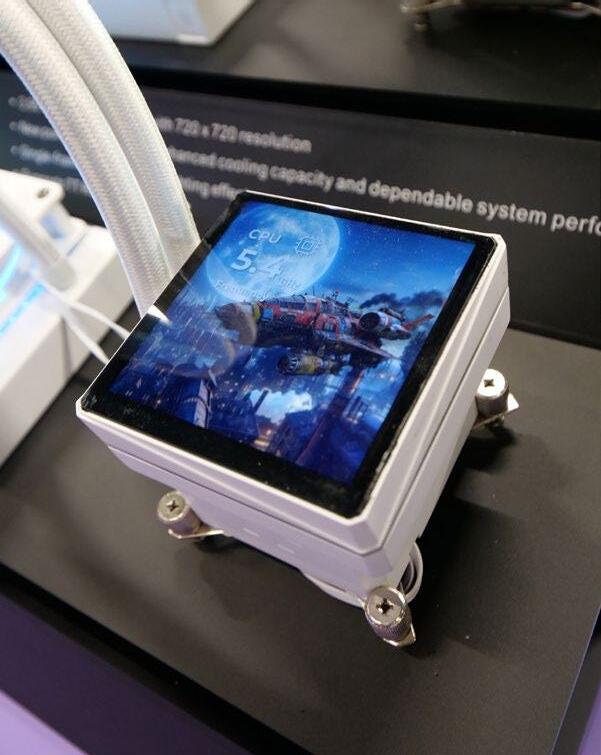



some past RE leads. From her anxious muttering to her ragged breathing, Grace genuinely sells the horror. The Gamescom-exclusive demo brought classic fuse box puzzles, a chilling new stalker enemy, and dual first- and third-person perspectives. The stalker, in first-person, raised the tension to a franchise high—I found myself sweating through escape sequences, heart pounding, unable to run at full sprint just like every fan joke about Resident Evil heroes. Developers teased this dual perspective as core to replayability and psychological horror, promising that fans will never again call Resident Evil “predictable.”
As a bonus, the devs dropped that public demos (eventually) are likely before the February launch and teased (with a sly smile) a never-beforeseen boss in the final game that, according to them, “will have the internet talking for years.
Konami – Metal Gear Solid Δ: Snake Eater & Silent Hill f
Konami’s double-edged showcase was arguably among the busiest of the event. In Hall 7, I queued up alongside press and VIPs for a hands-on with both Metal Gear Solid Δ: Snake Eater and the latest, intensely surreal Silent Hill f.
Snake Eater is the best remake anyone could’ve hoped for. The jungle shimmered, character models were astoundingly expressive, and classic scenes (The Fury, The End) came alive with modern detail and sound. I tried both stealth routes and full-on firefights, each with updated controls that felt like Metal Gear for a new era—all while preserving the original’s soul. Developers discussed their collaboration with Virtuos Games and their aim to let returning fans and new players experience “peak Kojima vibes” with 2025’s high fidelity. Trust me, the opening Virtuous Mission is more intense, heartbreaking, and cinematic than ever.
Silent Hill f was offered as both a handsoff story trailer and an “atmospheric horror experience”—think guided house of horrors with reactive sound design and environmental puzzles. The new trailer, penned by Ryukishi (of Higurashi fame), sees Hinako Shimizu’s tranquil
life melt into a ghastly fog, and the playable snippet offered both mind-bending visuals and a palpable terror that left me shaken. The developers confirmed an aggressive focus on psychological terror, intricate narratives, and the interplay of puzzle-solving under pressure, with Akira Yamaoka’s soundtrack as the chilling backbone.
During our time at Gamescom we had the chance to meet with the PNY team and explore their stunning showcase celebrating 40 years of innovation. Their booth featured a jaw-dropping custom crate-themed PC build that blended rugged industrial design with high-performance hardware. But the real showstopper was their limited-edition chrome graphics card, part of the Iron Core and ARGB OC Chrome series, gleaming under the lights with a mirror-like finish and ARGB accents that turned heads across the hall. It was a perfect fusion of engineering and artistry, and a highlight of the event.
The Blood of the Dawnwalker – Bandai’s Vampire RPG with Bite
Nestled in Bandai Namco’s corner, I previewed The Blood of the Dawnwalker, an RPG blending gothic horror with a highly malleable time mechanic. The devs, led by former Witcher 3 alumni, walked me through the new explorable camera mechanics and dual form play as Coen, a “dawnwalker” tormented by a curse and silver poisoning. This is as far from a generic fantasy RPG as you get: every action eats away at your limited time to save your family, and the pushpull of day versus night forms (human versus vampire) shapes quests, combat, and story outcomes in truly dramatic ways.
The on-site demo inside a dark, arched cathedral set the stage for an immersive quest—get into a crypt using human cunning by day or brute vampiric force by night. Directional parrying, plane shifting traversal, and skill trees for both forms offer layers of complexity. Staying past my timeslot discussing narrative sandboxes, I learned the world is built for player-driven outcomes: play slow and careful or burn time and risk unforeseen consequences. Even the
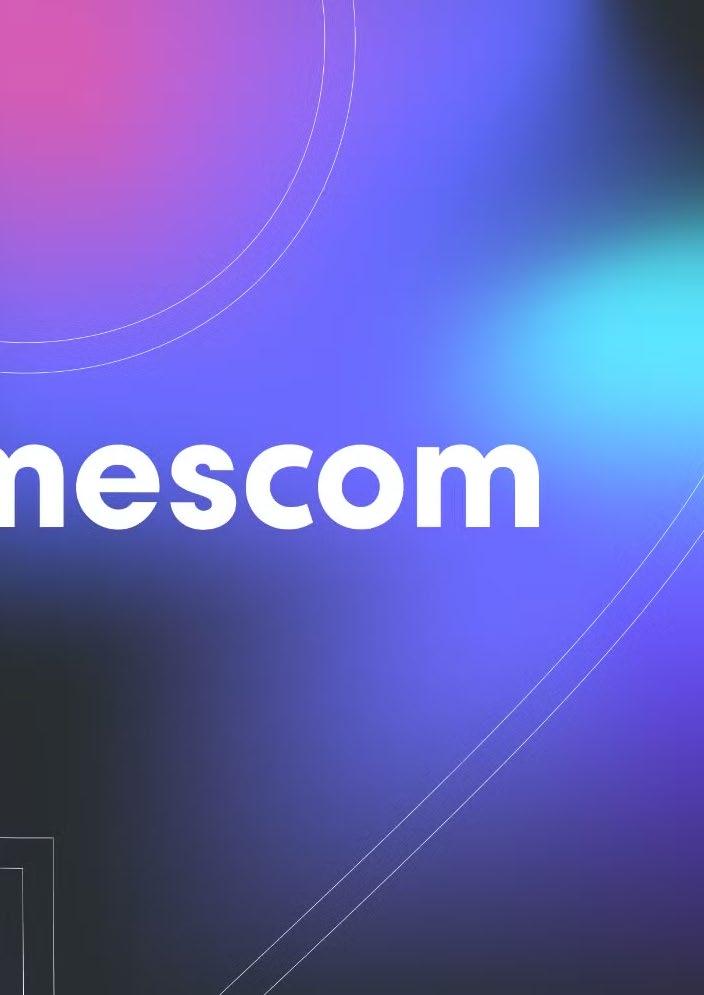
developers admitted nervousness about the innovations, but focus testing gave the “most innovative game in years” feedback—a sign The Blood of the Dawnwalker could be 2026's RPG revelation.
A favourite for families and content creators, Outright Games staged a vibrant, energetic showcase featuring a bevy of new and updated titles perfect for all ages. This year, I previewed:
This upcoming title expands on the hit Netflix series with interactive mini-games, customizable dollhouse rooms, and characterdriven storytelling. You got a sneak peek at new environments and gameplay mechanics that encourage creativity and exploration—ideal for co-op play between parents and kids.
A surprise hit in the booth, NBA Bounce mixes arcade-style basketball with rhythm-based mechanics and stylized visuals. You previewed a new mode that lets players build their own courts and unlock gear through challenges— Outright’s most dynamic sports title yet.
Expanding on their holiday-themed platformer, the new Grinch DLC adds snowy levels, stealth mechanics, and a mischievous twist on giftstealing gameplay. You saw exclusive footage of Whoville under winter siege, with new voice lines and animations that bring the classic character to life.
A high-energy racing game starring Chase, Skye, Marshall, and the full Rescue Wheels crew. You previewed epic stunts, turbo boosts, and puppowered abilities across tracks in Adventure Bay, Foggy Bottom, and the Jungle. Multiplayer mayhem and signature tricks made this one a standout for younger racers.
A wholesome open-world adventure set in Canterbury Trails Park. You played as Brooklyn and Malibu Barbie, caring for your horse Lucky, completing wildlife photography quests, and restoring nature through Junior Ranger missions. Cozy, creative, and surprisingly immersive.
What I particularly enjoyed in this session was the publisher’s focus on accessibility— easy controls, party-style pick-up-and-play modes, and content that scales for both young newcomers and experienced players. Staff highlighted the multi-platform strategy, ensuring no young gamer (or parent) gets left out.
I took a deep dive at 8BitDo’s bustling booth on the floor, getting hands-on with the Ultimate 2 Wireless Controller and the brand-new Pro 3— and, to my delight, the Rare 40th Anniversary Xbox Wireless, the first 8BitDo with native Xbox Wireless support. The booth was retro-cool, with throwback designs and wall-mounted displays showing off every colourway since the company started. The Ultimate 2 wowed me with TMR thumb sticks (an upgrade even over the drift-resistant Hall sensors), booming polling rates, RGB rings, and quick-swap profiles. For modders and tournament players, the rear button mapping and adjustable triggers were game changers. Demo stations let me test it out on fighting, racing, and platforming titles, and the improved precision was immediately apparent. The Pro 3, meanwhile, is now my favourite symmetrical controller for fighting games, with a featherweight feel and blisteringly fast response time—plus custom trigger locks, which tournament pros will love.
What stood out in conversation with 8BitDo staff was futureproofing: almost every product is built with advances in both hardware and connectivity, ready to tackle emerging consoles and high-speed PC play.
Xbox Backstage – ROG Ally, Ally X, and Xbox Game Library Magic
Inside Xbox’s sleek press booth in Hall 4, I got

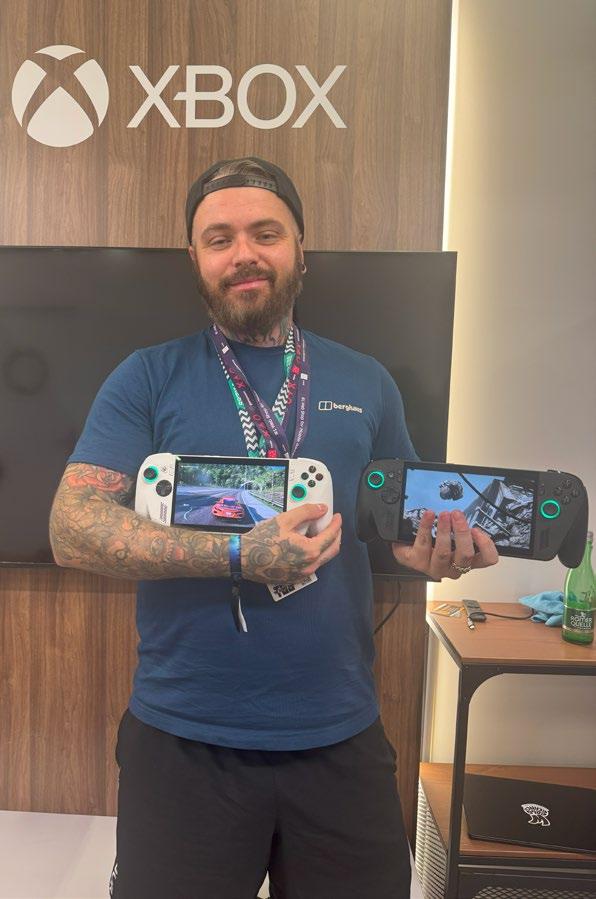


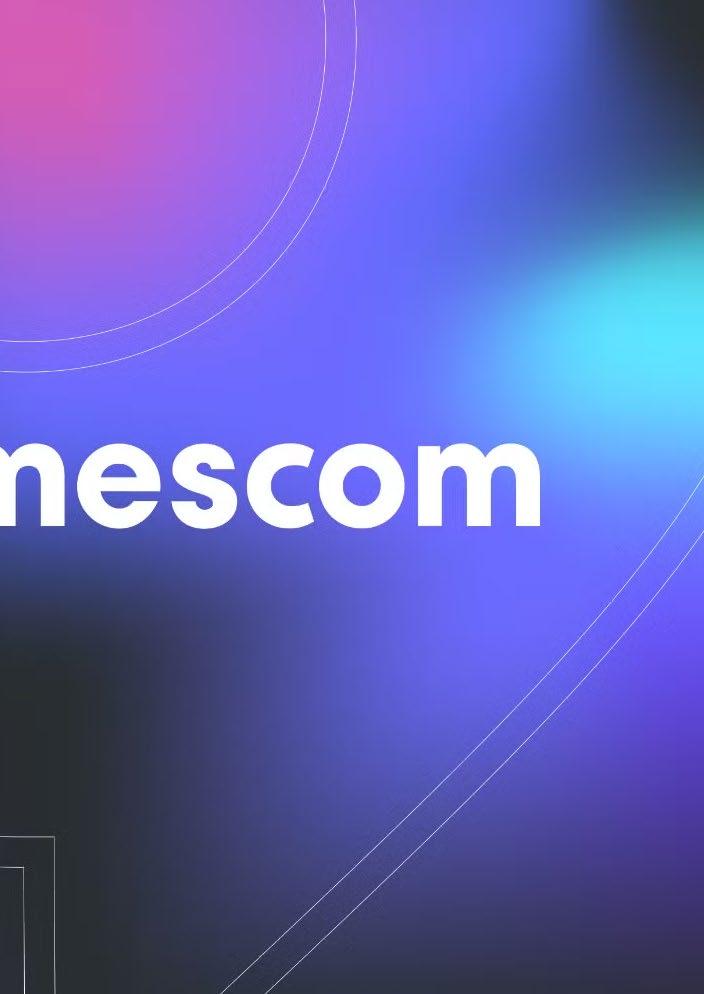
exclusive hands-on time with the Xbox ROG Ally and the newly unveiled Ally X. These handhelds are more than portable—they’re performance beasts. The Ally X stunned with its upgraded cooling system, expanded storage, and seamless integration with Xbox Game Pass.
Xbox reps walked me through the design philosophy, showing off never-before-seen UI enhancements and ecosystem features that make these devices a serious contender in the handheld space. It was a rare opportunity to test hardware in a quiet, focused setting— exactly what the Business Area was built for.
This year, though, the infrastructure and features of the ROG Xbox Ally and Ally X handhelds took centre stage. I got my hands on both: the affordable base model packs an AMD Ryzen Z2 A processor, 16GB RAM, and a massive 60Wh battery for long on-the-go sessions, while the X model ups the ante to a Zen 5 CPU, 24GB RAM, and an 80Wh battery.
A standout innovation: the new Handheld Compatibility Program, which tests and optimizes thousands of Xbox games for the unique needs of handheld play—yes, games with the “handheld optimized” badge just work out of the box. The consoles run full Windows 11, with a streamlined Xbox interface, dedicated Game Bar, and easy access to your cloud library, local installs, and remote play. During the hands-on, I demoed Hogwarts Legacy running at stable 60fps, Tony Hawk’s Pro Skater 3+4 in glorious motion, and even Forza Horizon 5, which looked shockingly sharp on the compact AMOLED panel.
Developers talked up the future: AI-powered super-resolution for handhelds (arriving in 2026), shader delivery for speedier load times, and ever-expanding hardware tweaks via special editions. Consensus on the floor was clear: Xbox Ally is positioned to finally bridge the gap between PC, console, and true portable play.
Razer continually sets the bar high for cool gear, but 2025 may be its most innovative year
yet34. Their Gamescom display wowed with everything from thinnest-ever laptops (Razer Blade 16, now just 0.59 inches with RTX 5090 Laptop GPUs) to AI-driven peripherals and the world’s first gaming chair (Project Arielle) with integrated heating and cooling.
On the floor, I tested the new Viper V3 HyperSpeed Pro mouse—insanely light and responsive, built for esports—alongside the Kraken Nova 2025 headset with improved spatial audio and haptic feedback. The BlackWidow V5 mechanical keyboard, now with opto-mechanical switches and a lush new wrist rest, swiftly became my desk wish-list item. The demo of Project AVA, an AI esports coach, was mesmerizing: it analysed my Street Fighter VI game in real-time, recommending strategies just like a pro coach would.
Accessibility and sustainability also took centre stage: all new peripherals boast eco-friendly materials, recycled plastics, and plastic-free packaging. The AI Synapse ecosystem— intelligent, game-specific optimizations plus voice control—felt like a leap into a smarter, greener gaming future. Razer didn’t just show new tech, they showed how gaming can push innovation beyond the screen.
Kingdom Come Deliverance 2: Legacy of the Forge DLC – Medieval Grit Returns
Capping my RPG adventure, I attended the Kingdom Come Deliverance 2: Legacy of the Forge press session. The medieval sim’s latest DLC lets players take Henry—now a master blacksmith—back to Kuttenberg to not just rebuild his father’s forge but to shape the city’s fate through skilful crafting, questlines, and even custom home upgrades. The mechanics let me balance workshop improvements with fulfilling offbeat local requests, all of it layered atop Kingdom Come’s impeccable simulation of real-world medieval life, equipment, and politics.
Developers confirmed that “Legacy of the Forge” launches September 9, bundled into a new expansion pass which includes further DLC through the year. It’s a gift for both diehard and returning fans, with new achievements, weapon/ armor forging, and some delightfully quirky

side quests. For a story-driven deep dive into medieval Europe, there’s still nothing quite like it.
The 10th Xbox Fan Fest: The Heartbeat of the Community
Finally, nothing matched the camaraderie, joy, and pure energy of the 10th Xbox Fan Fest. Whether you’re a streamer, a developer, or a fan who queued for hours, Fan Fest is where Xbox brings the heat, celebrating not just products but the entire community.
This year’s event was jam-packed: live developer Q&As, exclusive swag (I walked away with a signed controller), indie game tournaments, a ton of gameplay stations, and live-streamed competitions. I cheered with hardcore fans during a “Surprise Beta Drop” session and watched as new devs were mobbed for photos and autographs by fans dressed as emerging Xbox heroes. From walking the “Wall of Generations” (every Xbox console, every controller variant) to watching the main stage spotlight new ID@Xbox wonders, Fan Fest reminded me—and the industry—of what drives this business: shared love, nostalgia, and the anticipation of what’s next. Few things rival the collective shout when Phil Spencer himself dropped a heartfelt message about the future of gaming.
Gamescom’s magic is unexpected. I ducked out of big booths to sample hidden gems in the Indie Arena, exchanged theories with fellow press about the mysterious “Project Spectrum,” and traded tips for best street food (the bratwurst queue near Hall 7, every time). In the cosplay alley, I met a dozen Metal Gear Snakes, two perfect Barbie Dreamhouses, and more Hollow Knight Hornets than I could count.
By the week’s end, my notebook was overflowing rumours of a surprise Hollow Knight: Silksong DLC, devs teasing untitled Switch 2 exclusives, and a hundred screenshots of screens and floors bursting with new content. From the (literal) high-octane launches in the Pro Arena
to late-night city concerts and food trucks at the City Festival, Cologne itself became an extension of the event—a city-wide arcade I won’t forget.
This year, I had the chance to explore Gamescom 2025 alongside my creator friend Battle Rigs, showing him the ropes and diving into the event’s creator ecosystem together. From navigating the Business Area to hitting up press booths and fan zones, it was a blast sharing the experience and watching him soak it all in. We also crossed paths with several well-known creators—including the always insightful Dan Kam Knows—whose presence added to the electric atmosphere. Whether it was spontaneous meetups, late-night mixers, or collaborative content moments, the creator community at Gamescom was thriving, and it felt like being part of something truly global.
Final Takeaways: Why Gamescom 2025 Was Unforgettable
Looking back at every hands-on, every conversation, and every surprise, I can say without a doubt that Gamescom 2025 has solidified itself as the most essential gaming event on Earth.
Insider Access: Press meetings brought me faceto-face with legends and rising stars. Seeing embargoed footage and asking devs “why this, why now” made every reveal hit harder.
Show Floor Community: From fans to devs, the love was palpable. Everyone was excited not just to show, but to share—debating, cosplaying, creating, and learning.
Next-Gen Hardware and Games: The leap in technology—ROG Ally, RTX 50, 8BitDo TMR, Razer Synapse AI—was as impressive as the narrative and design innovation in games like Directive 8020, Silent Hill f, and The Blood of the Dawnwalker. Gaming’s future looks equal parts bold, and player driven.
Personal Memories: There’s no better thrill than getting exclusive hands-on time with games the world hasn’t seen, or seeing developers’ faces light up when their innovations land with the crowd.
For me as Sawyer, The Gamer Guide’s Gamescom 2025 journey wasn’t just about chasing scoops—it was about soaking in possibility and passion. If you’re reading this, you’ve got the itch just as I do, and Gamescom is where dreams for those who play—and those who create—come true.
Gamescom 2025 wasn’t just an event—it was a celebration of everything gaming stands for. From exclusive reveals and hands-on demos to unforgettable community moments and behind-the-scenes access, it delivered on every front. Whether you're a developer, journalist,
creator, or lifelong fan, Gamescom is the ultimate destination. It’s the beating heart of the global gaming industry, and this year proved once again why it’s the best gaming event in the world. A solid 10/10 experience—and if you’ve never been, make it your mission. Everyone should attend at least once.
See you next year, in Cologne. Until then—keep gaming, keep guiding, and never stop chasing what’s around that next event hall corner.
Make sure to stay up to date with Gamescom which you can do so below and be notified when next year's tickets are available!
www.gamescom.global/en
Instagram: @gamescom | Facebook: @gamescom.cologne | TikTok: @gamescom




Tokyo Game Show 2025 drew 263,000 passionate gamers, developers, and media from September 25–28 to Makuhari Messe, transforming the venue into a pulsating epicenter of innovation. Eleven sprawling halls housed 1,138 exhibitors from 38 countries, showcasing everything from blockbuster AAA titles to handcrafted indie gems. This year’s theme, “Unlimited, Neverending Playground,” rang true as attendees queued around the block for demos, panel talks, and immersive experiences that blurred the line between reality and virtual worlds.
Arriving in Tokyo two days before doors opened, I immediately felt the city’s electric pulse. Dawn broke with the high-speed hum of Shinkansen trains weaving through glass skyscrapers and centuries-old shrines. Afternoons began with steaming bowls of tonkotsu ramen in bustling food alleys, then a quick detour to Akihabara’s neon labyrinth of retro arcades and holographic game-show stages. Evenings ended high above the skyline on Tokyo Skytree’s observation deck, watching the city’s lights mirror the vibrant consoles below. Each moment outside the expo reinforced why Japan’s fusion of tradition and tech fuels the gaming world.
In Halls 1–2, Korean giants Nexon and Netmarble brought festival-style cosplay performances and interactive raid encounters
for titles like Goddess of Victory: NIKKE and Seven Knights 3, while Chinese studios such as Level Infinite showcased cinematic trailers for console-bound RPGs alongside speedrun challenge kiosks. Over in Hall 3, Square Enix impressed with a deep strategy demo of Final Fantasy Tactics: The Ivalice Chronicles and unveiled the stunning HD-2D Ocean Floor chapter in Dragon Quest I & II’s remake, capped by photo booths with lifelike Aerith cosplayers. Hall 4 housed SEGA/ATLUS’s Persona 3 Reload, whose social-link cinematics drew fans into long dungeon queues, while Sony’s Ghost of Yōtei blend of live shadow-puppet storytelling and motion-capture combat turned heads. Konami’s Hall 5 revival of Silent Hill f and Metal Gear Solid Δ: Snake Eater showcased nextgen visuals and VR stealth challenges that left journalists whispering in awe. Bandai Namco’s Hall 6 community hub invited players to solve the bioluminescent puzzles of Little Nightmares III and debate boss-rush tactics in Code Vein II panels. Capcom’s Hall 7 leapfrogged into nextgen tech with Resident Evil Requiem’s vintagefilm VR filters and a dynamic hunt demo of Monster Hunter Wilds on Unreal Engine 5. The third-party, indie, and VR zone in Halls 8–11 offered everything from the cozy wood-cabin world of Winter Burrow to full-body swordplay in Echoes of Eden, plus nonstop esports showmatches for Street Fighter VI and Guilty Gear Strive.
Our first sit-down was with DICE senior designer



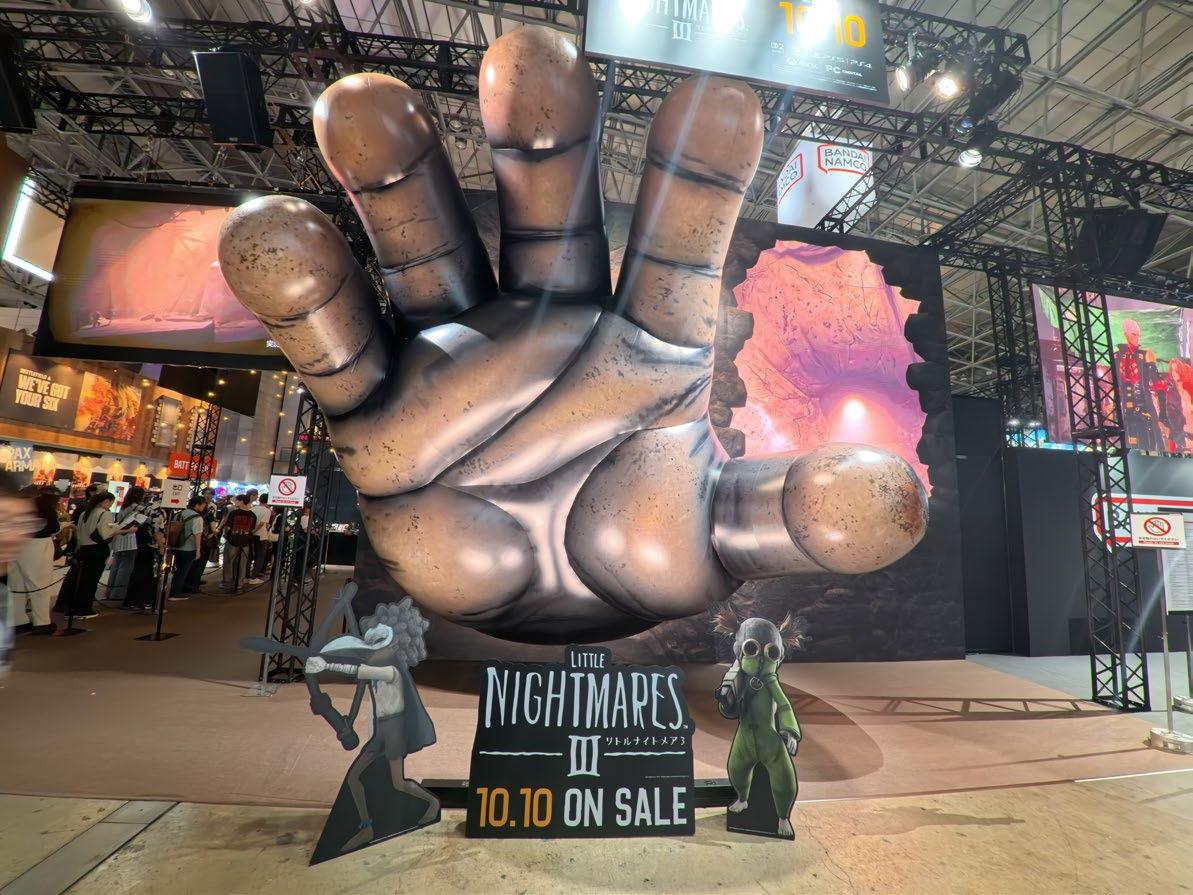
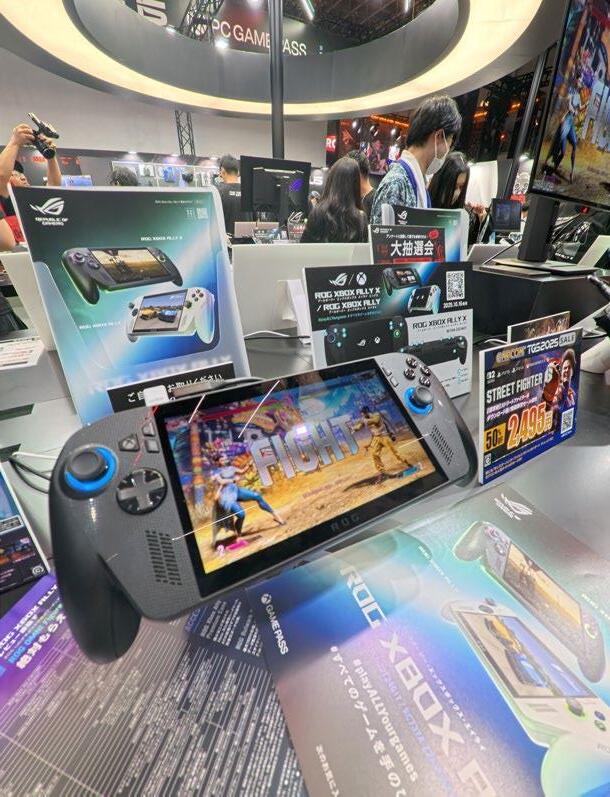
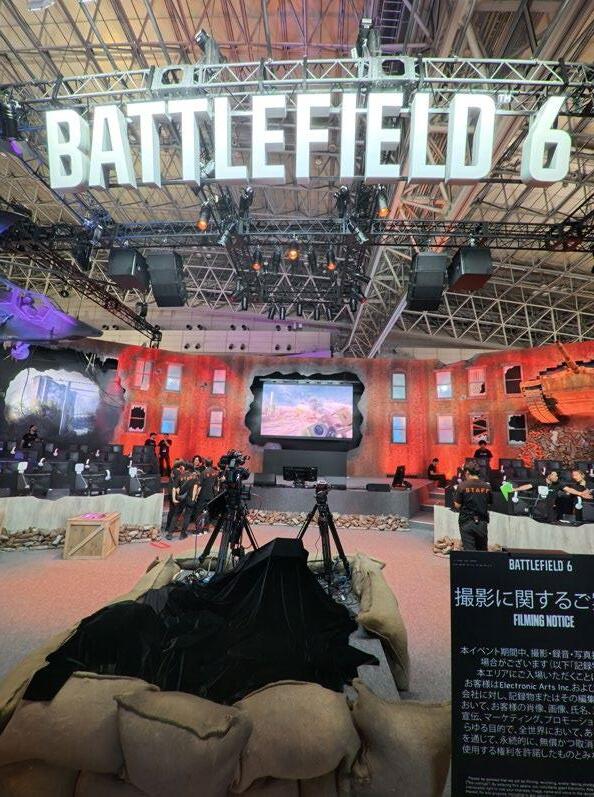




Mia Tanaka, who guided us through Battlefield 6’s dynamic weather system. She described how shifting monsoon rains alter vehicle traction and obscure sniper sightlines, forcing squads to rethink strategy on the fly. Each thunderclap not only drenches the map but also resets the flow of combat, she explained, turning familiar landmarks into volatile battle zones where adaptability wins the day.
Next, we spoke with Lucas Chen, lead producer on the upcoming Delta Force reboot. Lucas walked us through the game’s realtime destructibility grid, detailing how every wall, table, and vehicle can fracture under sustained fire. He emphasized that this level of environmental fidelity isn’t just for spectacle: it drives player choice, whether you’re blasting through cover or coaxing enemies into trapladen ruin. According to Lucas, the goal is a living battlefield that remembers your decisions long after the smoke clears. At Elgato’s sleek booth, product vice president Clara Kim unveiled the all-new Stream Deck OLED. She demonstrated how creators can dynamically reassign macro keys mid-stream, displaying live stats, fan messages, and sound cues without breaking immersion. Clara stressed that this upgrade comes from direct feedback gathered at last year’s TGS, where streamers asked for more responsive hardware that could keep pace with unpredictable live broadcasts.
Our most anticipated encounter was an exclusive session with Damian Szymanski, creative director at Render Cube, the studio behind Medieval Dynasty. Damian revealed that the upcoming expansion introduces a robust heir and lineage system, allowing players to court potential partners, witness pregnancies, and guide newborn villagers through infancy. He detailed how you can track each family’s bloodline, designate successors to manage estates, and host seasonal naming festivals that strengthen village morale. This personal, life-simulation layer deepens the Medieval Dynasty’s sense of legacy, inviting players to forge generational narratives in a physically tangible world. Look for our full “Dev Chats” segment with Damian Szymanski, where he dives even deeper into balancing emergent family stories with core survival mechanics.
Battlefield 6’s sprawling Porto Novo map tested our squad under simulated monsoon conditions, complete with synchronized thunder rolls and flood-swept streets. We found ourselves adapting tactics on the fly as knee-deep water rerouted vehicle convoys and masked fellow soldiers in low-visibility mist. In Delta Force’s Urban Siege mission, team objectives branched dynamically based on how we neutralized enemy outposts, rewarding stealth takedowns as much as all-out assaults. Ninja Gaiden 4’s Hero difficulty demanded pixelperfect parries and relentless precision, each combat encounter feeling like a high-wire act with no safety net. Little Nightmares III’s alpha build revealed bioluminescent caverns where shifting shadows became part of the puzzle, while indie darling Terminull Brigade overturned shooter conventions by letting players switch characters mid-round, creating a strategic relay of roles in every match.
Between panels, I discovered Asakusa’s Sensoji Temple at dawn, catching incense smoke drifting above vermilion gates as silent prayer beads clacked through the morning mist. A ride on the Yamanote Line led me to tucked-away yakitori stalls grilling skewers over crackling coals in seconds, each bite a revelation of umami. A midday stroll through Meiji Shrine’s forest trails felt worlds apart from the neon frenzy, restoring calm before diving back into the expo halls. Sampling Osaka-style okonomiyaki in a narrow alleyway diner and losing afternoons in retro manga cafés reminded me that Japan’s everyday warmth powers its grandest creative exports.
Nostalgia-driven remakes and HD-2D remasters dominated major booths, illustrating how publishers balance beloved IP with modern engines. Cross-platform parity and cloud streaming proved baseline expectations, with live demos switching seamlessly between PC, console, and mobile. Korean and Chinese studios increasingly used TGS as a springboard
for global console launches, challenging incumbents on their home turf. The XR and VR showcase nearly doubled in footprint, signaling that immersive tech is no longer niche but core to future experiences. Fueled by record business attendance, organizers have already earmarked a new Hall 12 for 2026 to expand B2B networking spaces.
Tokyo Game Show 2025 delivered a masterclass in scale, storytelling, and cultural synergy. From
dawn visits to ancient temples to neon-soaked cosplay parades, the event proved why Japan remains gaming’s beating heart.
As we look toward TGS 2026, expect deeper VR integrations, AI-driven game masters, and evolving partnerships between indie visionaries and global publishers. Plus make sure to check out our in-depth Dev Chats reveal with Damian Szymanski from Render Cube, which you can see on the next page.





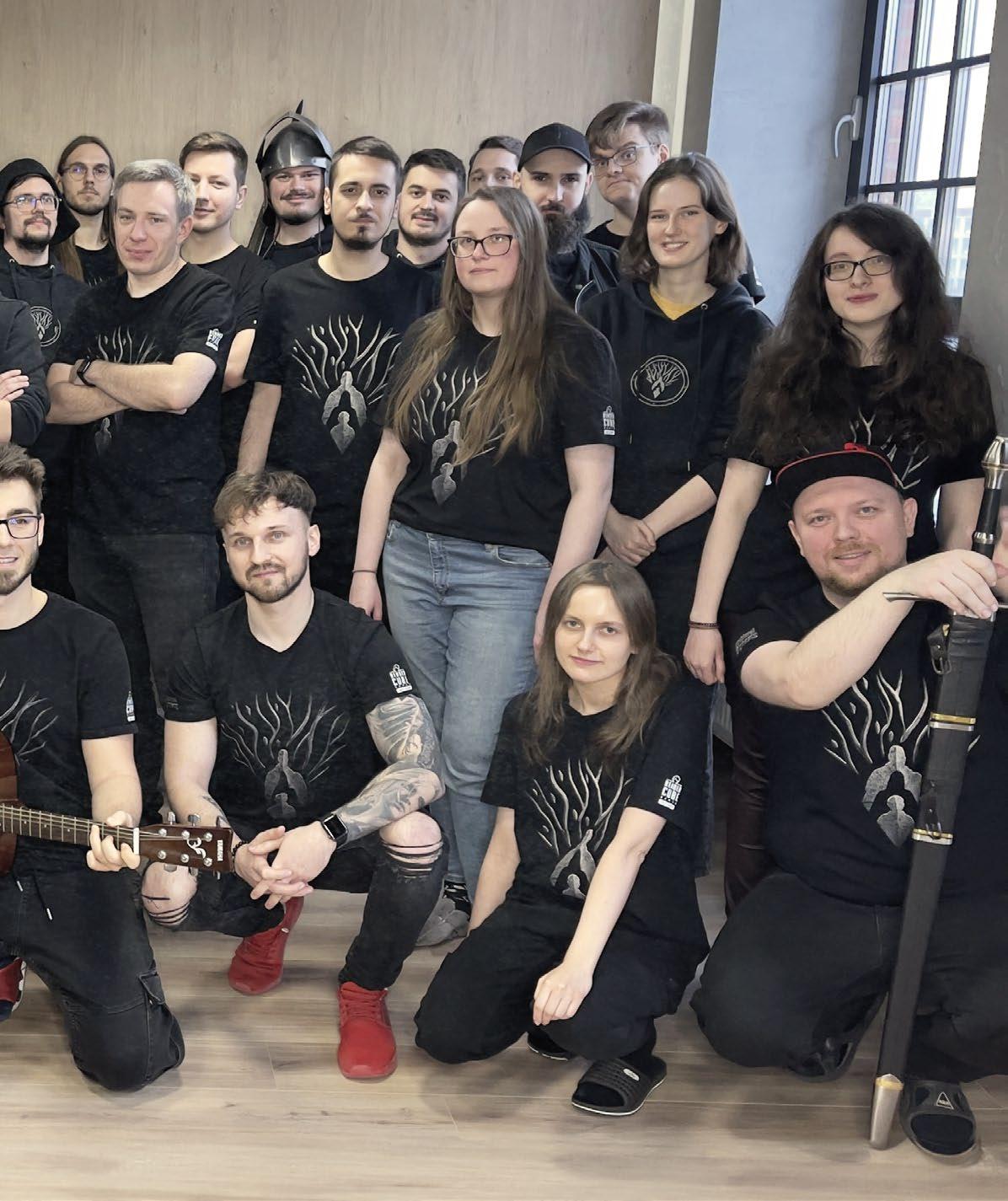

During our time at Tokyo Game Show 2025 we met with Damian Szymański, CEO of Render Cube, it was clear from the start that Medieval Dynasty is more than just a game it’s a passion project, a genre-defying experience, and a testament to what indie studios can achieve with vision, grit, and community.
Render Cube is a Polish game development studio known for its dedication to immersive, player-driven experiences. Their flagship title, Medieval Dynasty, blends survival mechanics, town-building strategy and historical roleplay into a richly detailed medieval world. Set in the heart of Europe’s feudal era, players begin as a lone settler and gradually build a thriving village, manage resources, forge relationships, and shape a legacy across generations. What sets Medieval Dynasty apart is its seamless fusion of genres combining open-world exploration, realistic crafting, and dynamic NPC systems with a narrative that evolves through player choices. With ongoing updates, including co-op mode and seasonal expansions like “Echoes of Nature,” Render Cube continues to expand the game’s depth and replayability.
What began as a survival-RPG hybrid quietly evolved into one of the most unique city-building experiences on the market. “City-building wasn’t even part of the original concept,” Damian admitted. “But as we developed the game, we saw an opportunity. No one else was doing it quite like this so we leaned in.”
That decision proved pivotal. The city-building mechanics became a cornerstone of Medieval Dynasty, allowing players to not only survive and explore but to shape thriving medieval communities from the ground up. The blend of sandbox freedom, strategic planning, and immersive storytelling created a gameplay loop that resonated deeply with players.
Medieval Dynasty doesn’t fit neatly into one box. It’s part survival, part RPG, part simulation and now, undeniably, part city-builder. “We didn’t set
out to make an RPG,” Damian explained. “But the genre elements clicked naturally. Players wanted progression, relationships, quests and we listened.”
The result is a game that offers over 58 hours of core gameplay, with layers of depth added through community-driven features like mod support, difficulty toggles, and even the ability to switch off bandits for a more relaxed experience. It’s a game that adapts to your playstyle, whether you’re a hardcore strategist or a casual explorer.
Launched on Steam in 2020, Medieval Dynasty quickly gained traction. Microsoft took notice, inviting Render Cube to bring the game to Game Pass. Initially available on PC, the game later launched on Xbox consoles in 2022. While Game Pass helped expand the player base, Damian noted that its financial impact was modest, especially compared to the momentum gained from PlayStation releases.
Still, the exposure was invaluable. “Game Pass helped us reach players who might never have found us otherwise,” Damian said. “It was a stepping stone, not the finish line.”
Render Cube’s journey is a classic indie tale. With just 10 developers during Early Access, the team faced financial constraints, technical hurdles, and a steep learning curve. “We didn’t have support from big publishers,” Damian shared. “But we had passion and that made all the difference.”
Their previous project, Monster League, laid the groundwork. Though small in scale, it helped the team refine their tools and build the foundation for Medieval Dynasty. Intel’s developer support also played a role, making implementation smoother and more scalable.
Launching in Early Access was a calculated risk and it paid off. “We needed to show the market something different,” Damian said. “Early Access lets us polish the game while building a community. The feedback was incredible.”
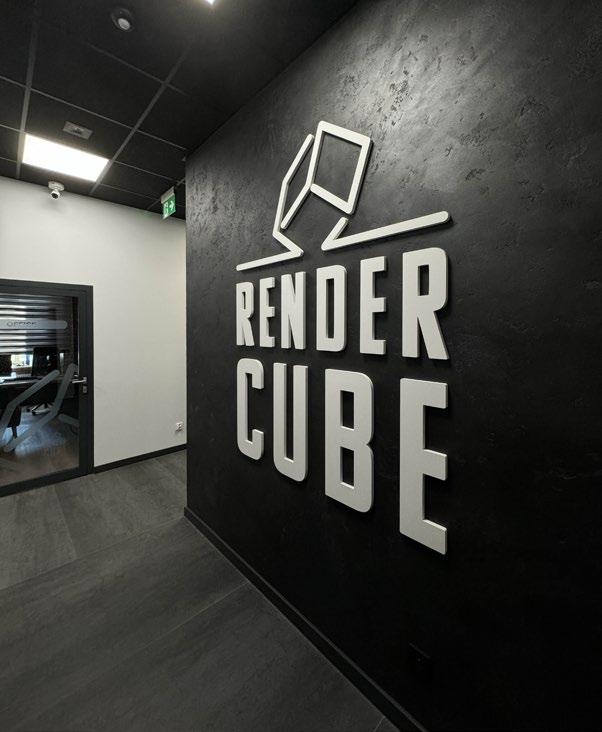
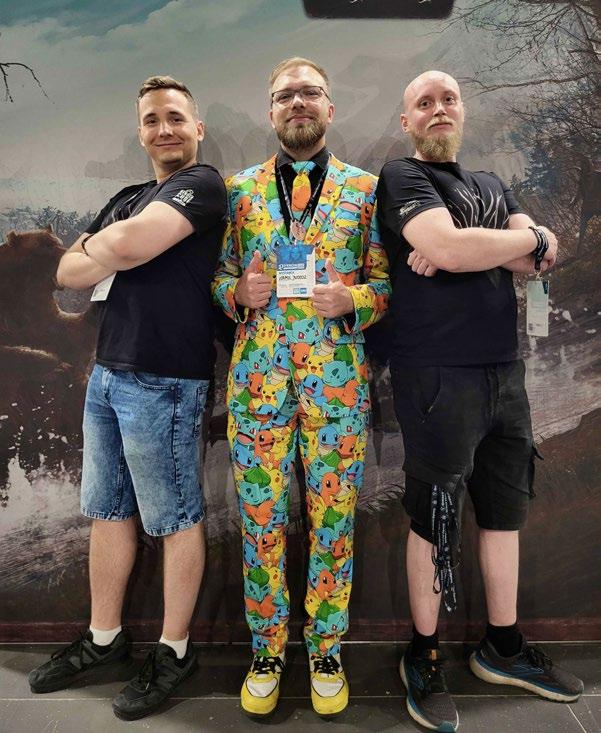





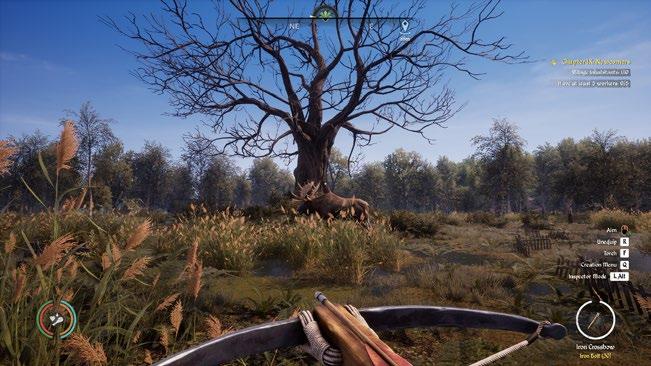


In an industry plagued by burnout, Render Cube stands out. “We don’t crunch,” Damian stated proudly. “We take our time, support each other, and focus on quality. It’s not perfect but it works.”
That philosophy shows in the game’s pacing. Releases are spaced out, development is thoughtful, and the team plays as much as they build. “Sometimes the best ideas come when you’re not working,” Damian said. “We trust the process.”
From Discord servers to Steam forums, the Medieval Dynasty community is deeply involved. Community managers monitor feedback, developers respond directly, and updates reflect player priorities. “We’ve rewritten entire systems based on feedback,” Damian said. “Co-op mode alone took around a year and over 100,000 words to get right.”
The roadmap is shaped by this dialogue. Every suggestion, bug report, and idea is considered. “Our players know the game inside out,” Damian said. “And we listen.”
The upcoming Q4 update adds pregnancy and heir mechanics, deepening the realism of family life in the game. “Before, you never saw
your wife pregnant,” Damian explained. “Now, it’s part of the story.”
Cosmetic additions are also on the way, priced modestly and designed to enhance immersion without affecting gameplay. And while there’s no sequel planned yet, a new title is in development, one that promises to build on everything Render Cube has learned.
Damian’s final words were heartfelt: “If you’re a hard worker coming home after a long day, and you just want to unwind in a beautiful, peaceful world, Medieval Dynasty is for you.”
It’s more than a game. It’s a place to breathe, build, and belong.
As our conversation with Damian Szymański draws to a close, one thing is clear. Render Cube isn’t just building games, they’re crafting legacies. From the evolving world of Medieval Dynasty to the studio’s commitment to playerdriven storytelling, Damian’s insights reveal a team deeply invested in authenticity, innovation, and community.
Whether you're a seasoned dynasty-builder or just stepping into the medieval wilds, Render Cube’s vision offers a rare blend of realism and heart. And with Damian at the helm, the future of their worlds feels as dynamic and enduring as the ones they’ve already brought to life.
Stay tuned, this is a studio worth watching.
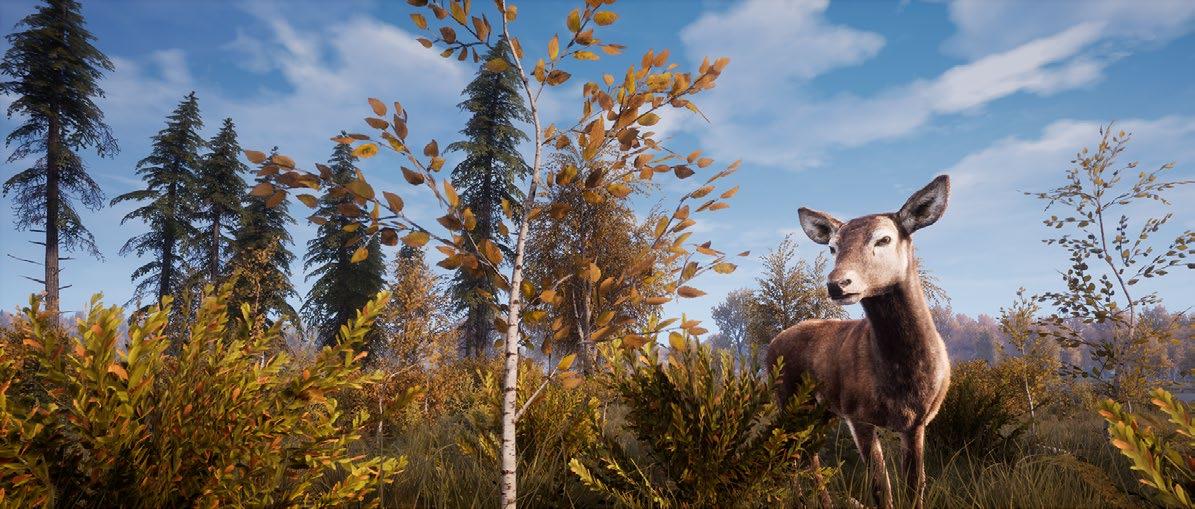


Sony’s latest State of Play delivered a powerhouse lineup of exclusive titles, hardware reveals, and service updates—anchored by the first deep dive into Insomniac’s Marvel’s Wolverine. From brutal mutant combat to ambitious new franchises and commemorative peripherals, here is every announcement you need to know.
Insomniac Games, in collaboration with Marvel Games and Sony Interactive Entertainment, unveiled a bloody, M-rated reimagining of Logan’s origin. Fall 2026 on PlayStation 5 will see Wolverine unleash savage claw combos, tap into a berserker rage meter, and unravel the mystery of his forgotten past. Accompanied by arresting cover art from Jock and full descriptive audio support, this all-new take promises to redefine what a superhero action game can be.
From the studio behind Returnal comes Saros, a fast-paced action epic set on the doomed colony of Carcosa under an eternal eclipse. Players assume the role of Soltari enforcer Arjun Devraj (voiced by Rahul Kohli), mastering precision dodges, shield parries, and a hybrid human-alien arsenal. Saros’s “Second Chance” system and permanent upgrade paths ensure every death fuels your ascent, arriving on PS5 and PS5 Pro next spring.
To honour two decades of Kratos, Sony revealed a limited-edition DualSense controller in Spartan red and ashen stone grips. Subtle Norse iconography adorns the touchpad, and adaptive triggers simulate the tension of drawing the Leviathan Axe. Preorders open next week, with availability timed to coincide
with the series’ November celebrations.
Commemorating over 100 million units sold, Gran Turismo 7’s Spec III update brings new tracks, fresh car models, and an expanded suite of features to deepen racing immersion. This free update ushers in the next chapter of Sony’s flagship driving simulator, sharpening its commitment to realism and competitive play.
Battlefield 6 marks the series’ return to singleplayer with an elite Marine Raiders squad, Dagger 13, on a globe-spanning mission to stop Pax Armata. From the beaches of Gibraltar to Brooklyn’s urban warfare and a high-altitude HALO jump, destruction and tight squad tactics define each cinematic encounter.
October’s PlayStation Plus lineup includes the narrative horror of Alan Wake II, the absurd physics mayhem of Goat Simulator 3, and the serene puzzle world of Cocoon. Subscribers can download these titles upon the October rotation.
Sony introduced PULSE Elevate speakers to bring console-grade audio to desktops. Featuring PlayStation Link™ ultra-low latency, lossless wireless connectivity, and Bluetooth support,

these speakers promise lifelike soundscapes for games, music, and voice chat.
Desert (March 19, 2026)
Pearl Abyss’s open-world action RPG Crimson Desert rides onto PS5 on March 19, 2026. Captured on PS5 Pro hardware, the cinematic trailer showcases tribal conflict, political intrigue, and sprawling landscapes in the kingdom of Pywel.
Chronoscript: The Endless End (2026)
Chronoscript: The Endless End, an explorationfocused action-adventure, casts players as the “Editor” trapped within an ancient manuscript. Tasked with guiding a thousand-year narrative to its conclusion, the game promises surreal puzzles and meta storytelling when it launches next year.
3, 2025)
The next entry in the Let It Die universe, Let It Die: Inferno, arrives December 3, 2025, on PS5 and Steam. This rogue-lite survival action title debuts alongside a playable TOKYO GAME SHOW 2025 demo, challenging players with brutal abyssal arenas.
Vein II (January 30, 2026)
Bandai Namco confirmed Code Vein II for January 30, 2026. Revenants will assemble a vast arsenal of weapons and abilities, forge alliances with new partners, and confront nightmarish foes in a haunting post-apocalyptic world.
Dynasty Warriors 3: Complete Edition
Remastered (March 19, 2026) ]
Koei Tecmo returns to the series’ roots by remastering Dynasty Warriors 3 and its Xtreme Legends expansion in modern detail. Arriving March 19, 2026, this Complete Edition revitalizes the original 1 vs 1,000 spectacle with enhanced visuals and refined gameplay.
Nioh 3 (February 6, 2026)
Team Ninja’s dark Sengoku action RPG returns with Nioh 3 on February 6, 2026. Players assume the role of Tokugawa Takechiyo, thrust from the shogunate throne to battle his brother
and supernatural horrors across time.
Sonic Racing: CrossWorlds – Mega Man DLC
Sonic Racing: CrossWorlds welcomes Mega Man and Proto Man as playable riders. Racers will zoom through a reimagined Wily Castle track aboard Rush Roadsters, blending platforming speed with karting chaos in free DLC.
The Seven Deadly Sins: Origin (January 28, 2026)
This free-to-play open-world RPG arrives January 28, 2026, on PS5. Players become Tristan, unearthing new stories in Britannia, engaging in real-time combat, and teaming up in a vibrant multiverse.
Last Epoch’s first major expansion, Orobyss, brings 15 mastery classes, perilous dungeons, and transformative skill trees to the upcoming PS5 version. Action RPG fans can prepare for lore-rich loot hunts next year.
Halloween (September 8, 2026)
Michael Myers returns in Halloween, a tense cat-and-mouse survival experience on PS5. Launching September 8, 2026, players can embody the unstoppable Boogeyman or his would-be victims in authentic Haddonfield terror.
Ex Remastered (2026)
Ion Storm’s cyberpunk classic returns as Deus Ex Remastered, featuring upgraded visuals, modern UI enhancements, and quality-of-life improvements. New operatives will infiltrate shadow governments when it launches next year.
For the first time on PS5, Microsoft Flight Simulator 2024 arrives Fall 2025 with dynamic missions, competitive leaderboards, and the largest fleet of aircraft yet. This digital twin of our world promises unprecedented realism for aerial adventurers.
Disco Elysium’s studio revealed Zero Parades: For Dead Spies, a narrative-driven espionage RPG steeped in paranoia and surrealism. As operant Hershel, players will navigate betrayal and redemption in a stylistic world when the game launches next year.
From Wolverine’s brutal M-rated foray to the soaring realism of Microsoft Flight Simulator
2024, this State of Play underscored Sony’s commitment to delivering groundbreaking exclusives, beloved revivals, and innovative hardware for every corner of the PlayStation community.
Whether you’re sharpening your claws for Fall 2026, fine-tuning your race lines in Gran Turismo’s Spec III, or battling through Carcosa’s eclipse in Saros come March, there’s no shortage of epic journeys on the horizon. Gear up, mark your calendars, and prepare to dive into the next chapter of PlayStation adventures.

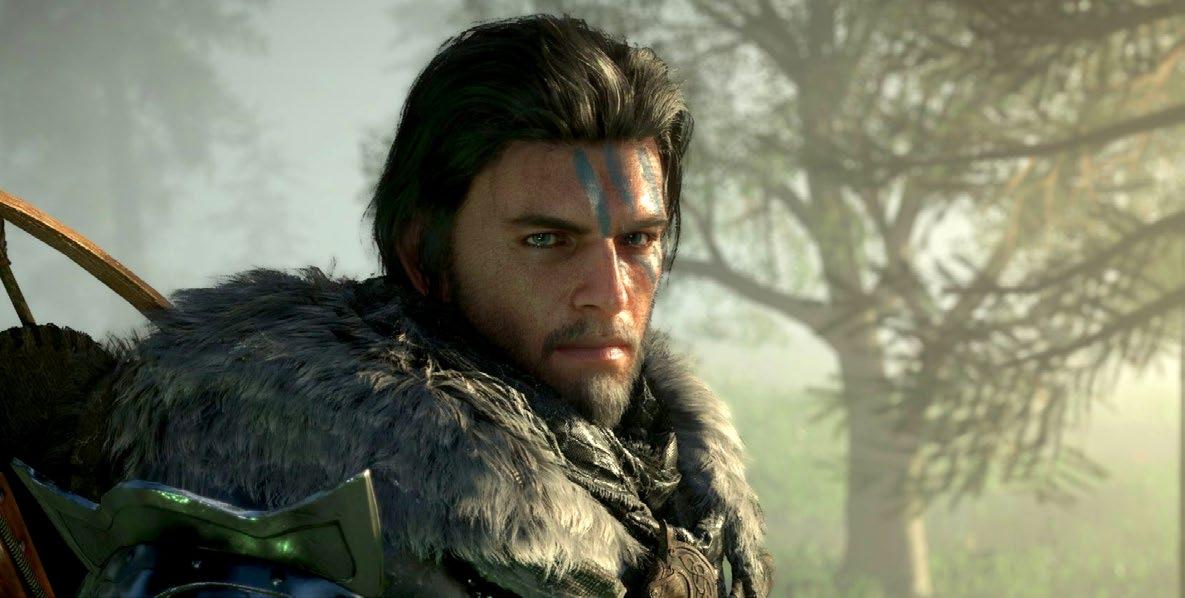





Nintendo opened the Direct by unveiling a grand celebration for Super Mario Bros.’ 40th anniversary. The Kyoto Nintendo Museum will host an immersive light installation in December 2025, where visitors can experience iconic scenes from the original platformer projected onto soaring walls and walk through interactive exhibits showcasing Mario’s evolution. Attendees who purchase the special 40th-anniversary ticket will gain access to rare concept art, early prototype hardware, and a commemorative gallery book that traces four decades of the franchise’s design milestones. Alongside the museum festivities, Nintendo confirmed that Super Mario Galaxy and Super Mario Galaxy 2 will launch as a bundled release on Nintendo Switch on October 2, 2025. Both games have been fully optimized for Switch 2, featuring higher-resolution visuals, an optional Assist Mode for newcomers, refined motioncontrol integration, and brand-new Rosalina Storybook chapters that expand the lore between levels. To extend the celebration, two amiibo will arrive on April 2, 2026—Mario & Luma, which grants players a Life Mushroom boost, and Rosalina & Lumas, offering a one-up mushroom in-game.
The Direct concluded its anniversary segment with a first look at The Super Mario Galaxy Movie, slated for release on April 3, 2026. The teaser showcased Princess Peach’s celestial castle bathed in starlight, along with brief glimpses of whimsical Luma interactions. Nintendo confirmed that the original voice cast will return, promising a faithful continuation of the animated adventures that began with The Super Mario Bros. Movie.
The lineup of new Nintendo titles spanned

genres from sports to RPGs. Mario Tennis Fever served up its signature brand of frantic court action, arriving on Switch 2 this February. With 38 playable characters and 30 distinct “Fever Rackets,” the game introduces powershot mechanics like curve volleys and team doubles strategies. Dynamic arena hazards— ranging from shifting sand traps to gusting wind tunnels—keep matches unpredictable and demanding.
Spring 2026 will bring two highly anticipated releases to Switch 2. Super Mario Bros. Wonder: Nintendo Switch 2 Edition expands the classic 2D formula with cooperative and competitive modes, innovative power-ups such as the Flowerfeather seed that sprouts platformshifting flora, and the Wonder Totem dash that warps players through hidden subzones. A companion Talking Flower accessory, complete with authentic in-game voice lines, will let fans bring the game’s key mascot into the real world.
Also on the horizon is Yoshi and the Mysterious Book, a fresh platforming odyssey where every level unfolds like a page in an enchanted tome. Scheduled for Spring 2026, the game tasks Yoshi with redrawing obstacles using a magic quill, seamlessly blending hand-drawn 2D sketches with vibrant 3D environments. Early demonstrations revealed ink-based puzzles, shape-shifting eggs, and secret passages that only appear when players flip the book’s digital pages.
The anticipation reached its peak with Metroid Prime 4: Beyond, confirmed for December 4, 2025 on Nintendo Switch. The Direct unveiled Samus soaring across crimson dunes atop her new hoverbike, the Vi-O-La, capable of high-speed boosts, drift attacks, and midair wheelies. Fans will be able to collect two amiibo figures—Samus & Vi-O-La on November 6 and the enigmatic bounty hunter Sylux on December
4—each unlocking bonus challenge missions and unique arena encounters. Complementing the release, the “Metroid Prime 1–3: A Visual Retrospective” artbook, packed with concept sketches and behind-the-scenes commentary, will hit shelves on October 28, 2025.
Nintendo closed its first-party showcase with Fire Emblem: Fortune’s Weave, arriving in 2026. Set against the grand Heroic Games tournament, the story follows customizable avatars vying for the Divine Sovereign’s ultimate prize: a granted wish for the champion who claims victory on the final stage. The Direct highlighted real-time tactical battles, dynamic arena modifiers, and branching narrative paths that hinge on the player’s choices and allegiances.
Beyond blockbuster premieres, Nintendo revealed a host of smaller-scale experiences and expansions. Pokémon Pokopia introduces a cozy life-simulation twist to the franchise, casting players as a Ditto with human form who cultivates bespoke farms where crops can spontaneously mutate into Pokémon
companions. Donkey Kong Bananza: DK Island& Emerald Rush DLC is available immediately, adding emerald-charged puzzles, time-attack leaderboards, and new DK moves powered by collectible gems.
The Direct also teased forthcoming content for Pokémon Legends: Z-A with the Mega Dimension Stars expansion, which grants Raichu two new Mega Evolutions—Mega Raichu X and Mega Raichu Y—each boasting distinct battle abilities and aesthetic flair. Rounding out firstparty reveals, Kirby Air Riders was announced as a Switch 2 exclusive, arriving November 20, 2025. This high-octane vehicle combat title allows players to charge, boost, and spin their way across airborne tracks, with amiibo that swap Kirby’s riders on the fly to grant unique ability loadouts.
In an unexpected nod to Nintendo’s hardware legacy, the company confirmed a faithful physical remake of the Virtual Boy headset. Launching February 17, 2026 as part of the Nintendo Switch Online + Expansion Pack, the


standalone unit replicates the original red-visor aesthetic and supports over 14 classic titles, including Wario Land: VB and Mario’s Tennis. Subscribers will be able to dock the headset on their Switch or Switch 2 and play compatible games with updated display filters and savestate functionality.
Capcom’s Resident Evil Requiem received a chilling new trailer and locked in its Switch 2 release date, promising remastered environments and enhanced lighting for the anthology’s most horrifying chapters. Supergiant Games announced that Hades II reaches official 1.0 status on Switch 2 later this month, expanding its pantheon with fresh gods, narrative epilogues, and a reworked infernal underworld.
Indie darlings and global publishers also filled out the Direct. Suika Game Planet, a fruitevolving puzzle co-op experience, invites players to merge and pop oversized watermelons in timed arenas. Monster Hunter Stories 3: Twisted Reflection will land on Switch 2 next March, allowing Riders to soar on Rathalos and customize battle bonds in a story-driven campaign. Legacy revivals such as Hyrule Warriors: Age of Imprisonment (November 2025) will delve deeper into Tears

of the Kingdom lore, while Final Fantasy VII Remake Intergrade storms onto Switch 2 on January 22, 2026 with upgraded visuals and performance modes. Lighthearted reissues popped up throughout the showcase: Tomodachi Life: Living the Dream returns in Spring 2026 to reunite Miis in whimsical social misadventures, and Mortal Kombat: Legacy Kollection compiles classic fighters alongside an interactive museum mode, arriving digitally October 30, 2025, with a physical edition following December 12. New arrivals like Storm Lancers (an ’80s-style roguelike from WayForward), Dinkum (an outback-themed farming sim), and Popucom (a paint-powered platformer) round out a diverse slate that underscores the Direct’s theme: there truly is something for every Nintendo fan in the months ahead.
This Direct was more than a lineup, it was a declaration. Nintendo is entering a new era with clarity, confidence, and a renewed commitment to its community. From cinematic expansions to creator-first tools, the September 2025 showcase set the tone for what’s next: a future where play, creation, and connection converge. Make sure you stay up to date with Nintendo to find out more on these upcoming titles by visiting their website below.





Mafia: The Old Country opens not with a bang, but with a whisper—a quiet nod to the weight of tradition and the rituals of blood. Set in 1920s–30s Sicily, it trades the American neon of previous entries for candlelit chapels and narrow stone alleyways where every glance carries a story. You begin not as a don, but as the son of a humble port worker, caught in a web of debt, honour, and subtle persuasion. The narrative doesn’t rush; it unfolds like a confession in real time. The scripting is sparse but powerful, where shared meals say more than monologues and a withheld handshake can foretell betrayal. Interwoven through its chapters are moments of festival joy turned into smuggling routes, vineyard picnics cut short by turf wars, and religious rites weaponized for clandestine rendezvous.
Firefights here are intimate and unforgiving. Weapons reflect the era—revolvers, pumpaction shotguns, and bolt rifles that demand precision and timing. Reloading feels like a risk, not a routine. Melee combat favours timing over brute force, with parries and well-placed finishers serving as punctuation rather than flourish. This isn’t power fantasy—it’s survival choreography. Health is scarce, every bullet counts, and winning a battle only matters if you survive the aftermath. The game leans into realism without dragging pace, rewarding you for restraint as much as aggression. It’s elegant in its danger, honest in its mechanics.
One of The Old Country’s most brilliant systems is its take on social stealth and reputation. The Omertà meter measures how tightly you adhere to the unwritten rules of the underworld—how quietly you operate, how few loose ends you leave. The witness system adds a layer of fear to every public act. Bribes, intimidation, and silent removal all become tools of trade. Dress and demeanour matter. Show up clean to a funeral, you're safe. Show up with a blood-stained shirt, and the crowd will murmur. These systems aren’t gimmicks; they’re architectural threads, shaping outcomes, access, and story branches.
Rackets and Territory: Building Power Through Precision, Not Sprawl
Instead of cluttering your map with endless waypoints, The Old Country focuses on a few deeply interwoven territories—each one home to rackets that function more like living economies than static objectives. Citrus exports, quarry labour deals, and cigarette smuggling all require finesse. You’ll intercept rival contracts, sabotage machinery under the cloak of night, and coerce local artisans to launder profits through handmade goods. Taking over a racket doesn’t mean blowing up a warehouse—it means owning every step from supply chain to storefront while maintaining appearances. It’s strategic, rewarding, and deeply immersive.
Driving and Pursuit: Respecting the Road and Who Follows It
Driving in Mafia: The Old Country is an art form steeped in realism. The cars demand your full

attention—sensitive brakes, weighty turns, and weathered mechanics make every pursuit feel earned. Police don’t just chase speed; they trace familiarity. Drive cautiously through familiar streets after a hit and patrols will begin to trail, not attack—waiting for a slip-up, a pattern, a moment of weakness. The Series X version benefits from smoother handling, particularly with assistive toggles for players who prefer style over simulation.
Every mission in The Old Country feels handcrafted. A mountain ambush turns into a tactical ballet as you use mirrors to blind headlights and ignite explosives in the fog. One standout sequence unfolds during a cathedral mass, requiring you to blend with worshippers while plotting an interception so close it borders on spiritual. Later, a vineyard shootout plays out under a fireworks display, where joy and death blur in the smoke. These moments don’t just serve as high points—they reverberate, influencing allies, territory control, and the final tone of your ascent.
Visually, the game leans into tangible authenticity. Stucco crumbles, candle smoke layers the screen, and characters carry their history in their clothing. Dogs bark at closed doors the night after you move a body, and
the soundscape supports this beautifully. The score dances between mandolin laments and quiet jazz, drifting in from ports and back alleys. Spatial audio is tight—creaks, coughs, and the soft brush of leather boots help build an invisible network of tension. You hear everything you need to fear before you see it.
On Xbox Series X, the game runs with elegance. Performance Mode hits a steady 60fps at dynamic 4K; Quality Mode delivers stunning native 4K with ray tracing, ideal for candlelit interiors and dusky plazas. Quick Resume is seamless, dropping you back into stakeouts like you never left. A few visual hiccups appear— pathing AI occasionally loops awkwardly in tight hallways, and minor texture streaming falters at speed—but these are nicks on an otherwise polished blade.
The game offers a wide range of accessibility options—scalable text, speaker ID tags, aim assistance, and robust UI filters. Its difficulty modes respect pacing and player preference, with a narrative setting for those who want story over struggle. Replay ability is meaningful; choices echo in New Game Plus, and the Omertà system subtly reshapes the world based on your prior actions. This isn’t a checkbox open world— it’s a re-readable novel of consequence.


Mafia: The Old Country is a stunning exploration of tradition, loyalty, and the slow descent into shadows. It trades bombast for atmosphere, systems for storytelling, and opens its world like a folded letter filled with secrets. Its moments of friction—minor AI quirks and texture hiccups—are forgivable distractions in a world that otherwise feels wholly alive. On Xbox Series X, it sings.
9/10
The audio in Mafia: The Old Country earns its high praise for crafting an atmosphere that is as tactile as it is emotional. From the gentle brush of leather soles echoing through candlelit chapels to the layered mandolin score that shifts with mood and narrative weight, the sound design becomes a storyteller. Spatial audio cues elevate stealth gameplay, allowing you to perceive threats before you see them, while ambient details—dogs barking at doors, crowd murmurs, the clink of rosaries—add a haunting realism that pulls you deeper into its world. It doesn’t just support the game’s immersion—it deepens it, embodying the tension, tradition, and texture that define the experience.
9/10
The visuals in Mafia: The Old Country earn their high score by embracing texture over spectacle, grounding the experience in a rich, era-authentic aesthetic. Every detail—from crumbling stucco and salt-washed storefronts to candlelit chapels layered in smoke—feels deliberately chosen to reinforce the story's mood and setting. Characters wear their histories on their sleeves, quite literally, with torn cuffs, wine-stained garments, and sun-weathered skin that tell tales before a word is spoken. Lighting plays a starring role, shifting from soft golden hues in vineyards to stark silhouettes during confessions and confrontations. On Xbox Series X, this visual tapestry is brought to life with sharp resolution and ray-traced depth that never overwhelms but always immerses, making every street, every wrinkle, and every shadow feel like part of a world long buried—and now painfully remembered.
9/10
Playability in Mafia: The Old Country excels by prioritizing agency, atmosphere, and layered mechanics that challenge without overwhelming. Every system—from stealth and combat to rackets and reputation—feels intentionally interwoven, creating gameplay that's as strategic as it is story-driven. The smaller map doesn't limit opportunities; it deepens them, ensuring that each mission, racket, and district interaction carries weight. Difficulty scaling is thoughtful, catering to both narrative-driven players and tactical purists, while accessibility settings make core mechanics widely approachable. What elevates the playability most is the game’s respect for your choices— your actions shape not just outcomes, but the tone of your experience, reinforcing a feeling of personal authorship over your rise through Sicily’s shadowed alleys.

The overall delivery of Mafia: The Old Country is a masterclass in tonal consistency, mechanical cohesion, and narrative depth. Every aspect—from its haunting score and deliberate pacing to the layered systems of racketeering, combat, and consequence—feels sculpted with a singular vision: to immerse the player in a living, breathing Sicily bound by silence and blood. Its choice to focus on intimacy over sprawl ensures that no moment feels wasted, and every decision resonates beyond its immediate impact. While small technical hiccups exist, they never fracture the game's ability to transport, challenge, and emotionally engage. On Xbox Series X, the game isn’t just delivered—it’s curated, like a tale passed down, whispered between generations and finally given voice.
Version tested: Xbox Series X
Reviewed by: Brandon Sawyer







Borderlands 4 expands the vault hunter saga onto the fractured moons and rusted plains of Kairos with unprecedented scale and ambition. From my first step onto the planet’s scorched surface, I felt the gravity of discovery weigh heavy, the horizon stretching into jagged spires and roving fungal groves that hinted at secrets begging to be unearthed. The opening assault on an Atlas research facility serves as a perfectly calibrated prologue, marrying explosive combat with environmental storytelling as audio logs narrate the downfall of overzealous scientists. This entry builds on the series’ hallmarks, raucous humour, frenetic gunplay and relentless loot hunting, while layering in deep skill crafting systems and high, octane traversal mechanics that propel every encounter beyond mere shoot, loot, repeat.
Kairos feels alive in ways past Borderlands worlds rarely managed. Sandstorms carve shifting paths through the Ashfall Cliffs and neon spores’ glow beneath the jungles of Veilwood, each region introducing new hazards and factions vying for control. Side quests stray from simple fetch tasks to telling small stories about displaced colonists, corrupt corporate overseers and mutated wildlife. In one memorable mission I aided a scavenger clan in rigging a crashed dropship as a makeshift base, watching their scrappy fortifications spring to life under my gunsight. Dialogue between Harlowe and newly introduced rogue engineer Draven delivers genuine emotional weight, her grief over a lost sibling tempered by his cynical one liners. Even Claptrap’s chaotic commentary feels sharper, skewering corporate doublespeak as he unearths forbidden data caches in ancient Atlas vaults.
Combat encounters in Borderlands 4 feel choreographed yet wildly unpredictable. The build crafting suite lets me customize Vex’s time, warp shotgun with a ricochet module that sends slowed enemies careening into their pack mates, then switch mid skirmish to Rafa’s electrified glaive that arcs lightning chains through tightly clustered Psychos. I mapped vault slide combos to summon a temporary energy shield when diving into cover and layered grenade mods that either summoned healing totems or released sticky decoys luring enemies away from my allies. Verticality plays a starring role, grappling hooks on survey drones lifted me into sniper perches overlooking sprawling bases and sky, bikes carved gliding arcs over canyon ravines. Boss battles spark with strategic nuance as you manipulate terrain, timing a shockwave finisher to interrupt a siege turret’s salvo or using time warp to evade a planetary core collapse sequence.
Every level gained in Borderlands 4 feels meaningful as skill tree’s branch into razor sharp specializations. One path transforms your standard melee finisher into a concussive seismic smash that staggers nearby foes while another rewards precision shots with temporary phase shields absorbing incoming damage. Salvage components now tie directly into anvil crafting, enabling you to reforge legendary weapons with altered affixes or boost elemental damage at the cost of rare catalysts. Loot drops carry emotional resonance, the first time I unearthed an orange, framed revolver that literally burned living Armor on impact, it felt like uncovering a buried vault of raw potential. Side missions vary from high stakes
rescues to sabotage runs inside corporate citadels, though a handful still lean into repetitive clear, rebuild tasks that briefly stall the narrative momentum.
Visually Kairos dazzles but under the hood the game strains its own ambitions. On PC I saw frame dips in sweeping open areas when particle effects from multiple energy weapons lit up the sky, and a handful of texture pop ins in dense undergrowth momentarily broke immersion. A day, one patch smoothed out fatal crashes though invisible collision walls and occasional quest triggers that failed to register persisted in remote caves. Console versions run steadily but endure load times between zones that stretch longer than they should, especially when fast, traveling during co-op sessions. Network desync remains rare

yet jarring, prompting you to reload checkpoints after vault, hunter squads veer off into uncharted ruins. These hiccups never derail the core experience but serve as reminders that Gearbox is charting unfamiliar territory with this scale.
Borderlands 4 stakes its claim as the franchise’s most expansive and nuanced adventure since the landmark sequel. Its open world bristles with environmental storytelling, its combat loop crackles with inventive build crafting and fluid traversal, and its loot economy remains addictive enough to draw you back long after the credits fade. Though occasional side quest monotony and technical rough edges temper the thrill, the joy of discovering new synergies between weapons and skills and of carving your own legend across Kairos’s fractured moons never fades.
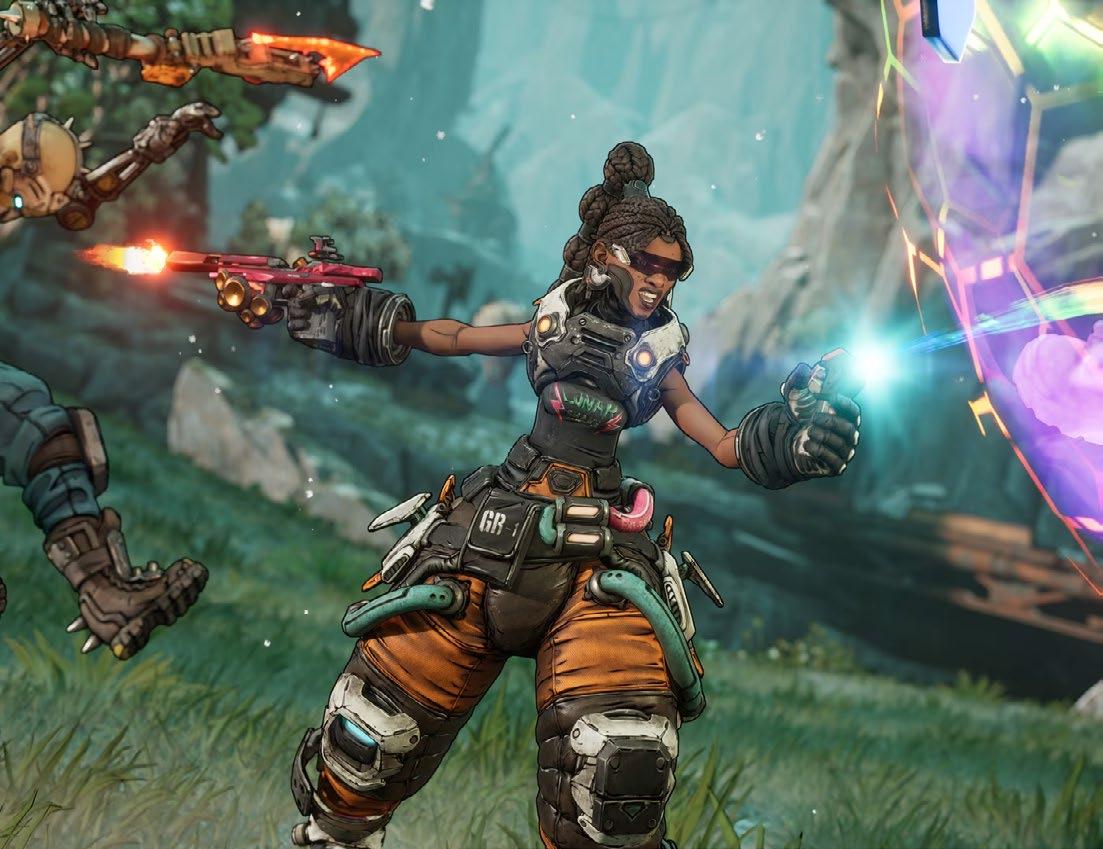

Ultimately, Borderlands 4 delivers a sprawling, vibrant world brimming with unpredictable humour and deep customization, where innovative build crafting and fluid traversal elevate combat encounters to a thrilling dance despite occasional side quest tedium and performance hiccups, and thanks to its addictive loot economy, emotional character moments, and robust endgame it reaffirms Gearbox’s ability to reinvent the vault hunter’s journey while cementing itself as the franchise’s strongest entry since Borderlands 2.
8/10
Borderlands 4’s audio landscape envelopes you from the moment your dropship’s engines roar to life, blending rich environmental ambience with razor-sharp weapon impacts and a sweeping orchestral score that swells during boss encounters and recedes into haunting guitar twangs as you traverse Kairos’s wastelands, and whether it’s the crackle of charged shields, the guttural snarls of feral Seraphim, or the pitch-perfect comedic timing of Claptrap’s voice actor every explosion and whispered secret feels meticulously mixed to deepen immersion, reinforce tension and celebrate the series’ trademark humour in truly cinematic fashion.
8/10
Borderlands 4’s visuals burst with vibrant, cell shaded color, turning ravaged canyons and derelict outposts into living comic-book panels, where rusted metal gleams under a violet sky and bioluminescent flora glows eerily. Character models pop with polished detail, cracked helmets and frayed cloaks standing out against vast dynamic backdrops, while particle effects from electric glaives and explosive rounds dance like microscopic fireworks. Expansive draw distances reveal distant spires, though occasional texture pop ins hint at the engine’s limits. Shifting weather, from sandstorms roaring through camps to ion storms crackling with neon ribbons, adds spectacle and strategic depth to every firefight.
8/10
Playability in Borderlands 4 strikes a finely tuned balance of accessibility and depth, from the precise responsiveness of time warped shotgun blasts to the fluid chaining of vault slide combos across rugged terrain, and whether you’re on PC with keyboard and mouse or on console with a controller the weapon wheel cycles smoothly even in the heat of battle, while adaptive difficulty ensures veteran vault hunters face a worthy challenge as newcomers benefit from forgiving enemy damage and generous loot drops, and co-op seamlessly welcomes friends into your campaign with near instant drop in, drop out sessions, ensuring every firefight feels like a tense, rewarding encounter rather than a repetitive grind, thanks to responsive hitboxes, plentiful checkpoints, and a well-balanced health, shield, and ammo economy.

Borderlands 4 delivers a confident evolution of the franchise, its genuinely strong writing and likable cast anchor a sprawling open world that feels like a natural fit, while its refined loot chase and expanded traversal systems turn every firefight into an exhilarating spectacle; though the narrative occasionally leans on safe antagonists, side activities can slip into familiar fetch quests, and technical hiccups persist, the sum of its parts makes it arguably the best Borderlands since the iconic sequel, reaffirming Gearbox’s ability to reinvent and invigorate the vault-hunter journey.
Reviewed by: Brandon Sawyer

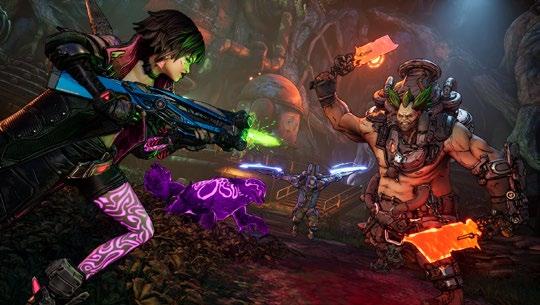

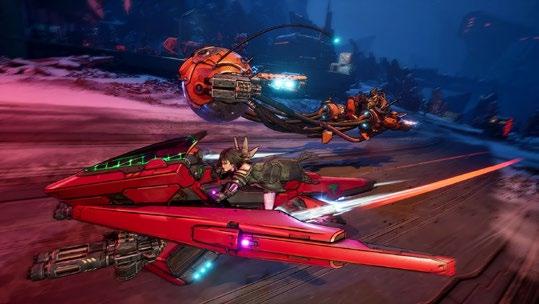

In an era where most games spoon-feed your lore, objectives, and emotional cues, Hell Is Us arrives like a slap in the face, cold, cryptic, and unapologetically hostile. Developed by Rogue Factor and led by Jonathan JacquesBelletête (whose fingerprints are all over Deus Ex: Human Revolution), this game isn’t just a departure from convention, it’s a rebellion. It strips away the scaffolding of modern design and dares you to find meaning in chaos. This is not a game that wants to be liked. It wants to be felt.
You awaken in a country ravaged by civil war and haunted by supernatural entities. There’s no map, no quest log, no exposition dump. The terrain itself is your only guide, an eerie, decaying world that feels like it’s been abandoned by both gods and men. Cracked statues stare blankly into the mist. Blood-stained ruins whisper of atrocities long past. The environment is a character and it’s not here to help you. The art direction is sublime in its discomfort. Think Control meets Stalker, with a dash of Silent Hill’s psychological unease. Every frame is a painting of dread. The colour palette bleeds melancholy, and the sound design, minimalist, ambient, and often silent, makes you hyperaware of every footstep, every distant scream, every flicker of movement in the fog.
Your weapon is a hybrid blade, part ancient relic, part alien tech. It doesn’t level up. You don’t unlock combos. You learn through pain. Combat is deliberate, almost ritualistic. Enemies are not just obstacles; they’re manifestations of trauma, guilt, and unresolved conflict. Each encounter feels like a moral test, a psychological duel. You’re not just fighting

monsters, you’re confronting the consequences of war, both personal and collective. There’s no HUD clutter. No damage numbers. Just you, your instincts, and the grotesque thing trying to kill you. And when you win, it doesn’t feel triumphant. It feels necessary.
Hell Is Us tells its story by refusing to tell it. You piece together fragments—graffiti scrawled on bunker walls, distorted radio transmissions, surreal visions triggered by proximity to haunted relics. The protagonist is a cipher, and the world doesn’t care about your backstory. You’re not the chosen one. You’re just another broken soul wandering a broken land. This narrative approach is bold, and it works because it respects the player’s intelligence. It invites interpretation, demands emotional investment, and rewards curiosity with existential dread. It’s storytelling by implication, and it’s more powerful than any cutscene could be.
There’s a quiet genius in how Hell Is Us handles player agency. You’re never told what to do, but everything in the world subtly nudges you toward discovery. A collapsed bridge might hide a path to a forgotten shrine. A flickering light in the distance might lead to a confrontation you’re not ready for. The game trusts you to explore, to fail, to learn. And in doing so, it creates a sense of ownership over every moment. Even the UI is stripped to the bone. No mini map. No inventory carousel. Just raw immersion. It’s a design philosophy that says: “If you’re here, be here.”
As gaming journalists, we’ve seen countless
titles try to innovate. Few succeed. Hell Is Us doesn’t just innovate, it obliterates the blueprint. It’s a game that demands vulnerability, punishes complacency, and rewards introspection. It’s not here to entertain, it’s here to provoke. This is not a game for everyone. But for those willing

to embrace discomfort, ambiguity, and raw artistic vision, Hell Is Us is a masterpiece of mood and meaning. It’s the kind of game that lingers long after the credits roll, not because of what it says, but because of what it refuses to.


Hell Is Us boasts an uncompromising vision with a haunting execution. It’s a game that challenges the player’s instincts, strips away modern comforts, and replaces them with raw atmosphere, philosophical combat, and narrative ambiguity. Not everyone will love it, but for those who crave meaning over mechanics, it’s a masterclass in mood-driven design and emotional storytelling
9/10
The soundscape is minimalist, eerie, and deeply intentional, every ambient hum, distant echo, and sudden burst of violence is calibrated to heighten tension and disorientation. There’s no orchestral swell to guide your emotions, no musical cues to signal safety or danger. Instead, the game trusts the player to feel the unease organically. When sound does erupt, whether it’s the metallic screech of your blade or the guttural howl of a supernatural enemy, it’s jarring, raw, and unforgettable. The audio design doesn’t just support the atmosphere; it defines it. It’s not background, it’s psychological warfare. That’s why it doesn’t just deserve praise, it earns it.
9/10
Every frame feels like a painting of despair, moody, surreal, and meticulously composed. The world is drenched in decay and ambiguity, with architecture that evokes forgotten rituals and landscapes that feel haunted by memory. Lighting is used not just to illuminate but to unsettle, casting long shadows and bathing scenes in unnatural hues that suggest something is deeply wrong beneath the surface. The creature design is grotesque and symbolic, blending organic horror with abstract trauma. There’s no visual clutter, no UI noise, just raw immersion. It’s not just beautiful, it’s oppressive, intentional, and unforgettable. The game doesn’t show you what to feel; it makes you feel it. That’s why its visual design isn’t just striking, it’s essential.
There are no quest markers, no tutorials, no handholding, just raw, intuitive exploration in a world that refuses to explain itself. Movement feels grounded and deliberate, with weight behind every step and swing of your blade. Combat is tight, punishing, and deeply personal, rewarding timing and observation over reflex or stat-building. The lack of a HUD or inventory clutter forces you to engage with the environment on its own terms, making every discovery feel earned and every mistake feel consequential. It’s not just playable, it’s experiential. The game doesn’t guide you; it challenges you to guide yourself. That’s why its playability isn’t just functional, it’s transformative.

From the moment you step into its fractured world, the game refuses to compromise, there’s no pandering, no shortcuts, just a raw, immersive experience that demands your full attention. Every element, from the minimalist UI to the cryptic narrative structure, works in harmony to create a sense of isolation and introspection. It’s not just a game, it’s a statement. The pacing is deliberate, the atmosphere suffocating, and the emotional payoff deeply personal. It doesn’t aim to please; it aims to provoke. And in doing so, it delivers one of the most cohesive, haunting, and artistically daring experiences in recent memory.

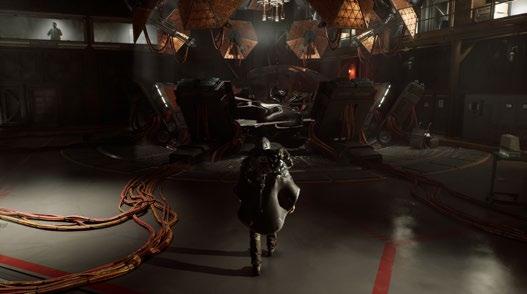

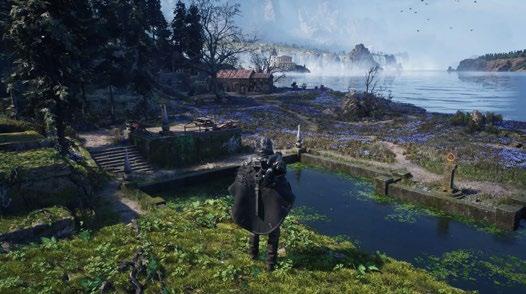

After six years of speculation, memes, and mounting anticipation, Hollow Knight: Silksong has finally emerged from its cocoon and it’s every bit the intricate, haunting, and exhilarating experience fans hoped for. This is not a modest expansion or a safe sequel; it’s a full-scale reinvention that retains the soul of the original while pushing its mechanics, pacing, and world-building into daring new territory.
You step into the role of Hornet, the agile Princess Knight, captured and transported to the mysterious kingdom of Pharloom, a realm “haunted by silk and song.” Unlike Hallownest’s sprawling descent into darkness, Pharloom is a kingdom of ascension. Your journey takes you ever upward toward the Citadel at its peak, uncovering the truth behind a strange curse while surviving a gauntlet of over two hundred enemy types and more than forty bosses. The premise is deceptively simple, but the execution is layered with secrets, diversions, and moments of quiet beauty that make every step feel purposeful.
Where the Knight of the first game was deliberate and weighty, Hornet is a dancer with a blade, quick, agile, and brimming with momentum. Her signature Needle and silken abilities make combat faster, more acrobatic, and more improvisational. The new Silk system replaces the Soul mechanic, allowing Hornet to heal on the move, craft tools mid-battle, and unleash devastating special attacks without

breaking the flow of combat. This change alone transforms the rhythm of encounters, encouraging aggressive play and constant movement rather than cautious retreats.
Hornet’s expanded move set makes traversal feel like a performance. Wall-kicks, aerial dashes, and diagonal strikes blend seamlessly into combat, letting you chain attacks and evasions in a way that feels almost balletic. The addition of a crafting system deepens the preparation phase of the game, materials scavenged from enemies and the environment can be forged into traps, tools, and weapons, giving you a sense of agency over your approach to each challenge. Pharloom’s inhabitants also play a larger role in shaping your journey. Quest-givers offer branching objectives that can alter the world in subtle or dramatic ways, adding replayability and narrative depth.
The difficulty curve is steeper than in Hollow Knight, with enemies that are more aggressive and bosses that demand mastery of Hornet’s mobility. This is a game that expects you to learn, adapt, and refine your skills. For those seeking the ultimate challenge, Steel Soul mode returns, now with even more punishing enemy patterns and no room for error.
Pharloom is a masterclass in environmental storytelling. From mossy grottos dripping with bioluminescence to gilded cities echoing
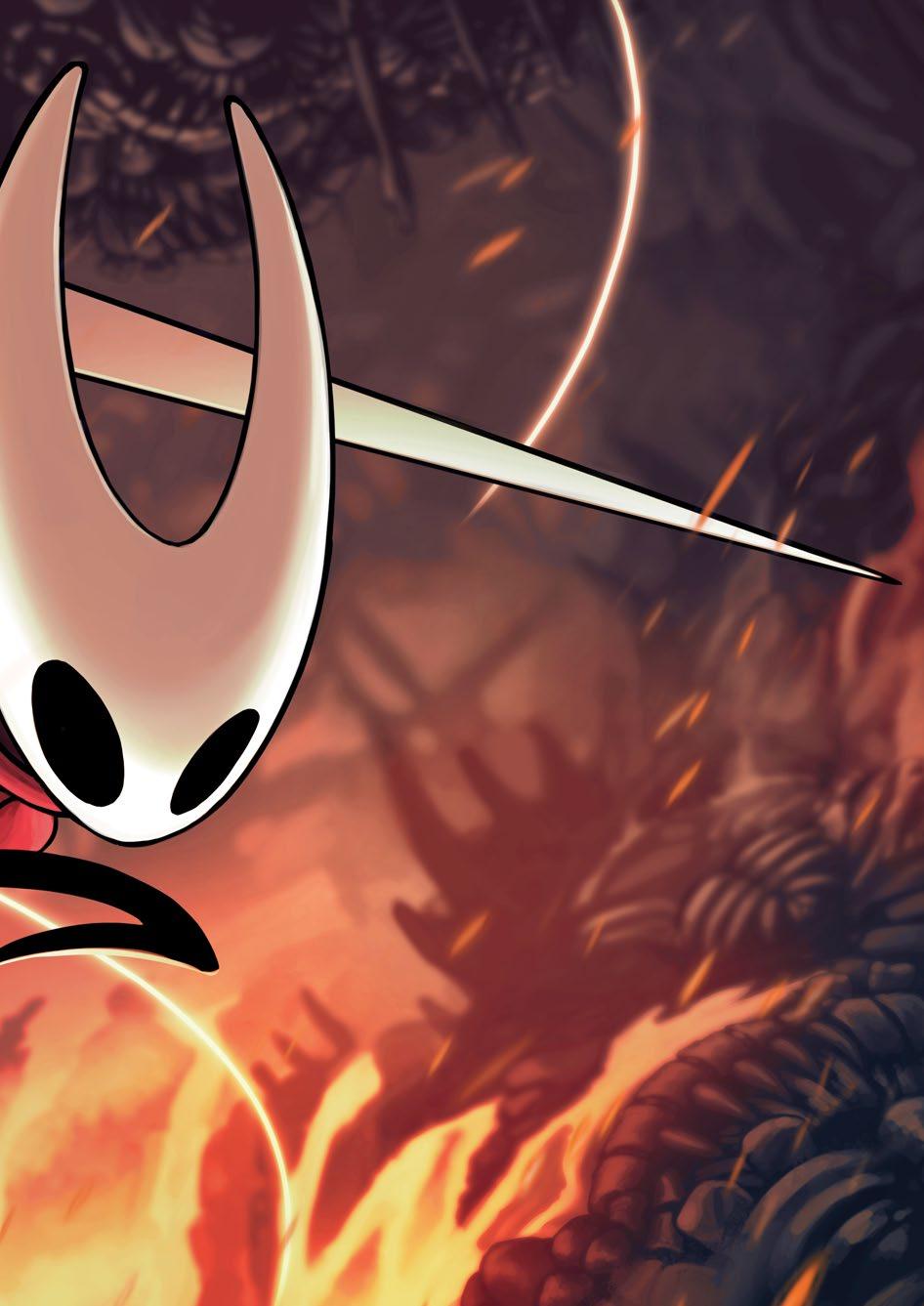
with forgotten hymns, every area feels handcrafted and alive. The kingdom’s verticality is a constant reminder of your goal, the climb to the Citadel and the map is denser and more interconnected than Hallownest, with shortcuts and hidden passages that reward curiosity.
Exploration is never just about finding the next boss. It’s about stumbling upon a hidden chamber where an NPC hums a half-forgotten song or discovering an environmental puzzle that makes clever use of Hornet’s expanded mobility. The placement of fast-travel points feels more deliberate this time, reducing backtracking fatigue without sacrificing the thrill of discovery. Pharloom invites you to linger, to look closer, and to piece together its history from the fragments scattered across its landscapes.
Christopher Larkin’s score is once again a triumph, weaving melancholy and triumph into a soundscape that feels inseparable from the world it inhabits. Boss themes swell with orchestral intensity, pushing you to the edge of your seat, while quieter zones hum with eerie, delicate motifs that make you pause just to listen.
Visually, Silksong is breathtaking. The animation work on Hornet is a study in fluidity, every movement imbued with personality and precision. Backgrounds are layered with detail, from the shifting light in underground caverns to the drifting pollen in sunlit gardens. It’s a game that rewards stillness as much as movement — a rare quality in a genre so focused on momentum.


Hollow Knight: Silksong is a rare sequel that understands exactly what made its predecessor beloved, then dares to reimagine it. The faster combat, layered crafting, and quest-driven structure make it feel fresh, while the art, music, and atmosphere remain unmistakably Hollow Knight. It’s tougher, yes, sometimes punishingly so, but that challenge is part of its identity. For newcomers, the difficulty spike may be daunting. For veterans, it’s a love letter written in silk and steel, a game that demands your full attention and rewards it with moments of pure, unfiltered wonder
9/10
Christopher Larkin’s score shifts effortlessly between sweeping orchestral crescendos during boss battles and delicate, almost whispered melodies in quieter zones, guiding the emotional rhythm of the journey. Every sound effect feels purposeful, from the crisp snap of Hornet’s Needle to the subtle rustle of silk threads and the distant chime of bells, layering the world with a tangible sense of place. Environmental cues, like the drip of water in shadowed caverns or the hum of unseen machinery, often double as navigational hints, rewarding attentive players. The only blemish is that in the most chaotic encounters, overlapping effects can occasionally muddy key audio cues, but this is a minor flaw in an otherwise masterfully orchestrated soundscape.
9/10
Every frame feels hand-painted, with Pharloom’s diverse biomes brought to life through rich palettes, intricate textures, and subtle environmental animations that make the world feel alive even in stillness. Hornet’s animation work is a marvel, her movements are fluid, precise, and brimming with personality, from the flick of her cloak mid-leap to the taut snap of her silk threads. Backgrounds are layered with depth, creating a sense of scale and immersion that draws the eye to both the grand architecture of gilded cities and the minute details of moss-covered stones. Lighting is used masterfully, shifting from the warm glow of lantern-lit streets to the cold shimmer of moonlit caverns, each transition reinforcing the mood of the moment. It’s a visual presentation that doesn’t just complement the gameplay, it elevates it, making every encounter and every discovery feel like a piece of living art.
8/10
The game’s difficulty curve is steep but fair, rewarding persistence and skill mastery without ever feeling arbitrary. Pharloom’s interconnected design encourages exploration without overwhelming the player, aided by thoughtfully placed fast-travel points and intuitive environmental cues. The crafting system and quest-driven progression add layers of strategic choice, allowing players to tailor their approach to both combat and exploration. While newcomers may find the intensity daunting at first, the game’s tight mechanics and consistent feedback loop make it deeply

satisfying to learn and master, ensuring that every victory feels earned and every setback fuels the drive to push further.
The pacing strikes a delicate balance between relentless challenge and moments of quiet reflection, ensuring that the journey through Pharloom never feels monotonous. Narrative threads are subtly woven into exploration and character encounters, rewarding attentive players without overwhelming those who prefer to focus on gameplay. While its steep difficulty curve may test the patience of newcomers, the game’s precision, polish, and emotional resonance make it a masterclass in modern Metroidvania design. Silksong doesn’t just meet the towering expectations set by its predecessor, it ascends beyond them, delivering an unforgettable adventure that lingers long after the final ascent.
Version tested: Xbox Series X - Reviewed by: Brandon Sawyer


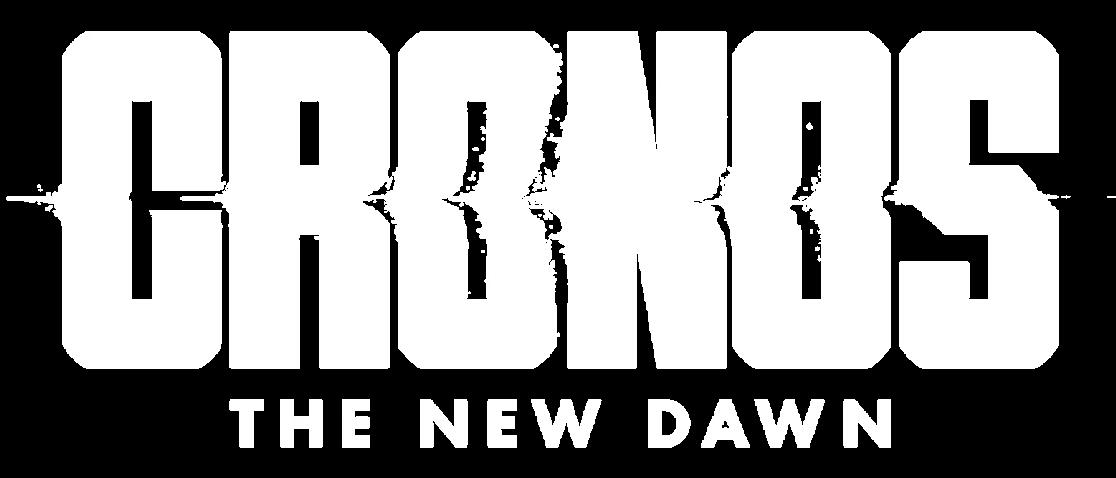
Bloober Team’s CRONOS: The New Dawn is a slow-burning survival horror experience that trades cheap thrills for psychological weight, delivering a haunting journey through a plagueravaged city where time itself has fractured. Set in the decaying remnants of New Dawn, a fictional district inspired by Krakow’s Nowa Huta, the game casts you as The Traveler, a silent agent of The Collective tasked with locating anomalies and extracting key figures from the past before they’re consumed by a realitywarping event known only as “The Change.” It’s a premise that blends the philosophical dread of SOMA with the environmental storytelling of Silent Hill, wrapped in a sci-fi shell that feels uniquely its own.
From the moment you step into the ruins, the game’s atmosphere grips you. The city is a character in itself, crumbling apartment blocks, flickering neon signage, and a pervasive sense of abandonment. Stray cats linger in alleyways, watching silently, while echoes of past lives bleed through the walls. It’s a setting that feels lived-in and lost, and the game never lets you forget it.
Played on Xbox Series X, CRONOS runs smoothly, with responsive controls and a clean interface that keeps immersion intact. The gameplay loop centres around exploration, light combat, and time-shifted interrogations.

Combat is serviceable but not the game’s strong suit, basic gunplay against mutated enemies called Orphans, who can merge with corpses to become stronger. Early encounters are tense, especially when ammo is scarce and the merging mechanic forces you to think strategically. But as your arsenal grows, the fear factor diminishes, and combat becomes more routine than riveting.
Where CRONOS shines are in its pacing and environmental design. Each mission unfolds like a chapter in a mystery novel, with clues scattered across timelines. The Traveler’s ability to shift through time rifts allows you to interact with past residents, uncover secrets, and slowly piece together the city’s tragic descent. These moments are more narrative than mechanical, but they’re deeply engaging, especially when paired with the game’s minimalist storytelling approach.
This is a strictly solo experience, and it leans into that isolation. The Traveler never speaks, never removes her helmet, and signs off each mission with the haunting mantra, “Such is our calling.” It’s a subtle but powerful touch that reinforces the game’s themes of duty, loss, and detachment. The story unfolds through codex entries, audio logs, and fragmented memories, rewarding players who take the time to explore and absorb the lore. It’s not a game for speedrunners, it’s for those who savour atmosphere, ambiguity, and slow-burn storytelling.
Visually, CRONOS is stunning in its restraint. The muted colour palette, oppressive lighting, and decaying architecture create a world that feels both grounded and surreal. The Traveler’s Temporal Shell suit is sleek and alien, a visual anchor in a world that’s constantly falling apart. Enemy designs are grotesque but tragic, reinforcing the idea that these monsters were once people. On Xbox Series X, the game performs flawlessly, with no noticeable frame drops or texture issues, even during intense sequences.
Sound design is subtle but effective. Ambient noise fills the silence with distant echoes, mechanical hums, and unsettling whispers. The soundtrack is minimal, often fading into

the background to let the environment speak for itself. Voice acting is limited to logs and codex entries, but the performances are emotionally grounded, adding weight to the fragments of story you uncover. It’s not a game that relies on musical stingers or jump-scare cues, it lets silence and dread do the heavy lifting.
While CRONOS isn’t packed with branching paths or alternate endings, its emotional depth and layered storytelling make it worth revisiting. Each interrogation reveals new facets of the characters you’re trying to save, and the game’s philosophical undertones invite reflection long after the credits roll. It’s not about collecting trophies, it’s about understanding the cost of survival and the fragility of memory.
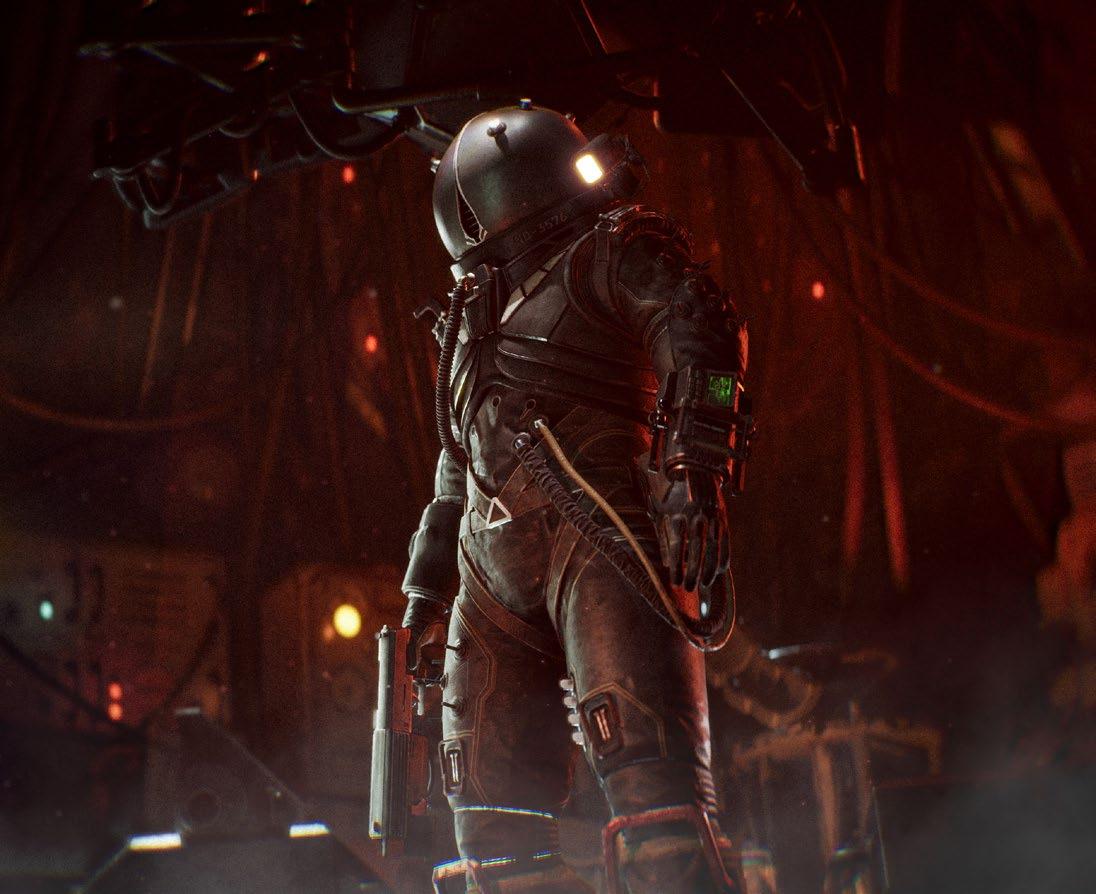

CRONOS: The New Dawn is a haunting, thoughtful survival horror experience that excels in worldbuilding and narrative depth, even if its gameplay doesn’t always match the ambition of its setting. It’s a game that rewards patience, curiosity, and a willingness to sit with discomfort. While combat and puzzle design feel underdeveloped, the story, atmosphere, and emotional resonance more than compensate, delivering a memorable descent into time, trauma, and transformation.
8/10
Its ambient sound design, filled with distant echoes, mechanical hums and eerie silence, amplifies the game’s sense of isolation and dread, while the minimalist soundtrack lets the environment breathe. Voice acting is sparse but emotionally grounded, adding weight to the fragmented narrative without overwhelming it. Though it doesn’t push boundaries or deliver standout musical moments, the audio consistently supports the tone and tension of the experience, making it effective if not exceptional.
8/10
The muted colour palette, decaying architecture and oppressive lighting create a setting that feels both grounded and surreal, perfectly matching the game’s themes of isolation and memory. Character and enemy designs are striking, especially The Traveler’s sleek Temporal Shell suit, which stands out against the crumbling cityscape. On Xbox Series X, the game runs flawlessly, with crisp textures and smooth performance that enhance the atmosphere without distraction. While the visual style is cohesive and evocative, it doesn’t push artistic boundaries or evolve dramatically across the campaign, keeping it just shy of truly groundbreaking.
8/10
On Xbox Series X, controls are responsive and intuitive, making traversal and combat feel fluid even if the action itself remains minimal. The game’s pacing is deliberate, encouraging players to absorb its world and narrative at a thoughtful rhythm, and while combat and puzzles are functional rather than innovative, they serve the story without getting in its way. Time-shifting mechanics add intrigue but are used more for narrative progression than gameplay variety. It’s a game that plays best when you lean into its mood and mystery, offering a polished solo experience that’s easy to navigate and emotionally engaging, even if it never fully challenges your reflexes or problem-solving skills.

From its haunting visual design and minimalist audio to its slow-burn storytelling and time-warped setting, the game consistently commits to its vision without compromise. While combat and puzzles are serviceable rather than standout, they never distract from the core experience, which is built around exploration, isolation and philosophical reflection. On Xbox Series X, performance is smooth and immersive, allowing the game’s mood and mystery to take center stage. It’s not a genre-defining leap, but it’s a confidently executed descent into psychological horror that lingers long after the final mission.
Version tested: Xbox Series X Reviewed by: Brandon Sawyer
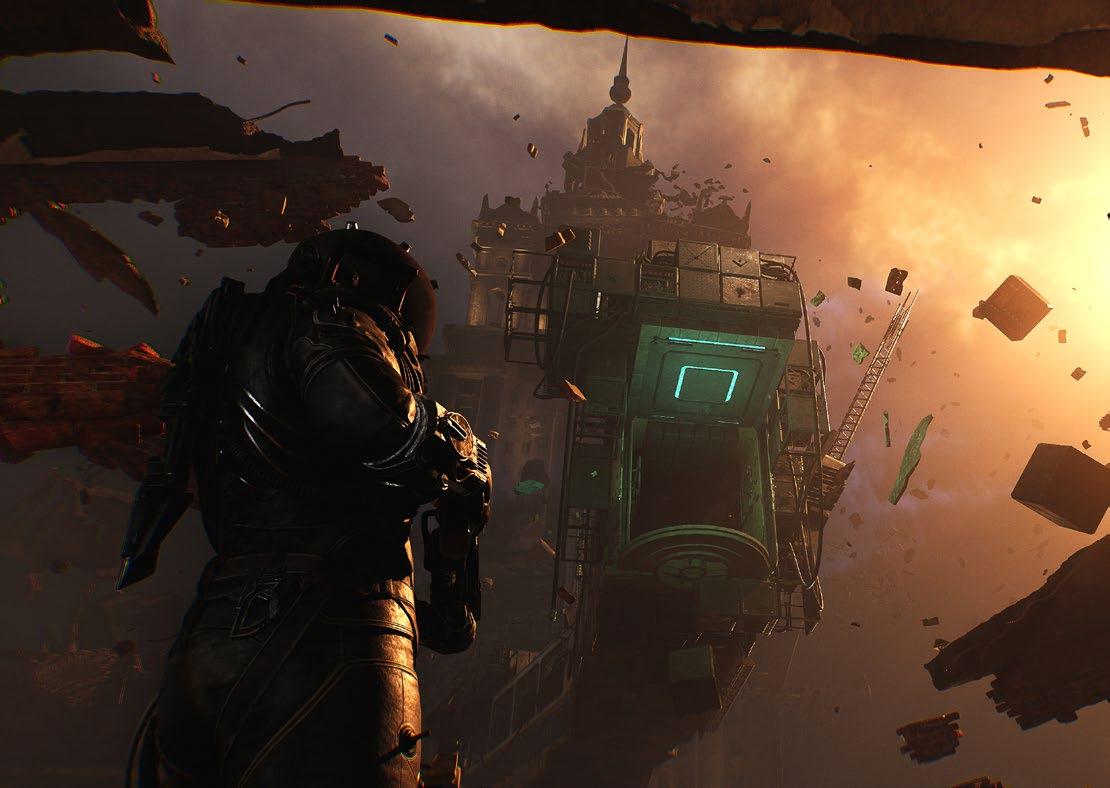
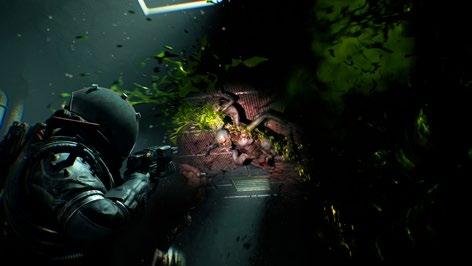

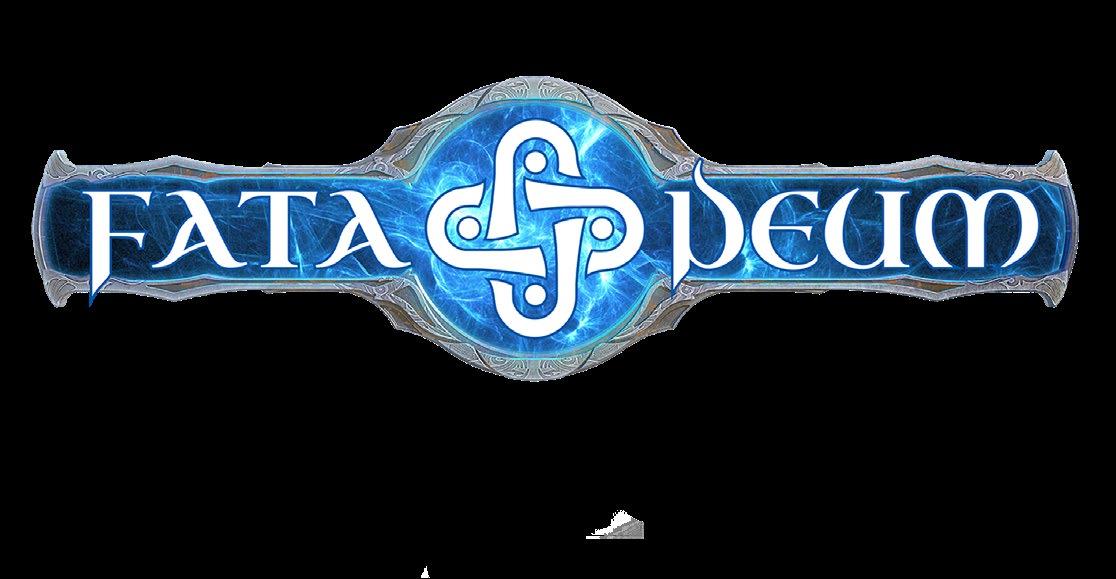
Access launch, developer 42 Bits Entertainment has poured reverence for classics like Black & White into every pixel. You feel that passion as soon as you summon your first miracle there’s genuine joy in the fundamentals here.
The game’s ambition is clear: to blend sandbox freedom with strategic depth. Early Access understandably wears its rough edges, but the core systems hum with potential. As a deity in training, you’re tasked with guiding, safeguarding, and occasionally chastising your flock.
Fata Deum’s narrative framework is delightfully stripped back. It trusts you to weave your own mythos rather than force-feed a linear storyline, creating space for emergent tales of devotion, betrayal, and divine retribution.
Each miracle you bestow feels weighty, starting with humble rainclouds that coax crops into yielding abundance. Watching your followers rejoice beneath a shower of grain is surprisingly moving, a testament to the power of subtlety. Later, when you unleash cataclysmic thunderstorms or seismic upheavals, that same satisfaction scales up exponentially. Mana, the currency of the gods, replenishes slowly each day, forcing you to choose your interventions wisely. This scarcity fosters meaningful decision-making: do you uplift a budding village or strike down a renegade warlord? Moments of restraint often feel as potent as displays of raw divine fury.

As you favour certain virtues compassion, strength, wisdom—your worshippers adapt, unlocking unique building buffs and cultural traits. Watching an ethos-shift ripple through a town’s architecture is endlessly satisfying. Converting rival believers involves both miraculous spectacle and strategic finesse. You might dazzle them with healing waters or intimidate them with storms of ice. Either approach demands patience and perfect timing, adding a layer of tactical depth that elevates everyday interactions into miniature spiritual duels.
Building Babel: Construction and City Management
Your followers erect cottages, farms, and workshops in pre-ordained zones, which streamlines expansion but can sometimes feel restrictive. While you can beautify the landscape with temples and statues, you’re confined by invisible boundaries that curb your creative flow. Still, watching villages sprout under your watchful gaze never gets old. Demolition is just as gratifying as construction. The physicsdriven engine lets you flatten structures with environmental hazards or targeted earthquakes, turning acts of divine wrath into mesmerizing vignettes. It’s a rare mid-game joy to raze and rebuild, experimenting with layout for optimal resource gathering.
When Gods Clash: Combat and Rival Deities
Conflict arrives when your war-god counterpart crashes the party, demanding you flex your
divine muscles in direct skirmishes. These encounters inject urgency, but they can feel abrupt jerking you out of peaceful city-building into militaristic tactics. You’re forced to juggle mana between nurturing your domain and defending it.
Still, duels with rival deities are the game’s most thrilling moments. Unleashing a tempest or hurling mountains at your foe produces cinematic set pieces that justify the occasional frustration. Victory carries real weight, reshaping the world map and shifting the balance of power.
Fata Deum’s stylized medieval art direction feels both charming and purposeful. Villages bustle with life, their thatched roofs and cobblestone paths rendered in warm, painterly hues. From the vantage of the heavens, the world is a living tapestry of rolling hills, dense forests, and winding rivers all responding to your divine touch.
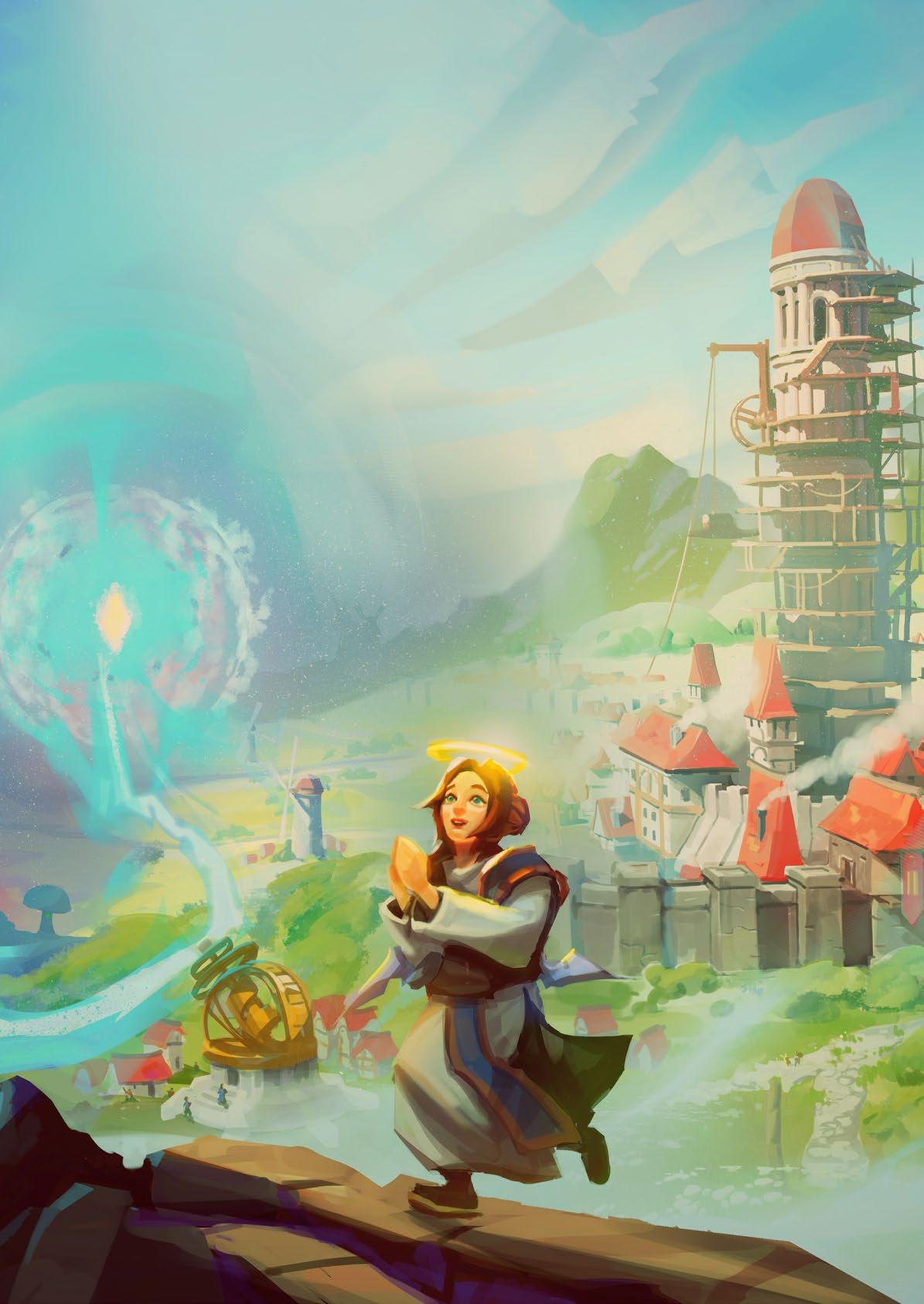
The orchestral score swells with appropriate gravitas, punctuated by ethereal choirs when you perform great miracles. While certain tracks loop a bit too long, the overall soundscape deepens your connection to the world, making every rainstorm or earthquake feel truly monumental.
As an Early Access title, Fata Deum wears its work-in-progress status with optimism. The developers maintain a transparent roadmap brimming with tech improvements, new creature types, and expanded deity powers. Community feedback channels buzz with creative suggestions, from multi-deity co-op to deeper political intrigue.
Patience pays dividends here. If you embrace the current build as a foundation rather than a finished product, you’ll witness 42 Bits iteratively refine systems and add content that could elevate Fata Deum into true god-sim royalty.

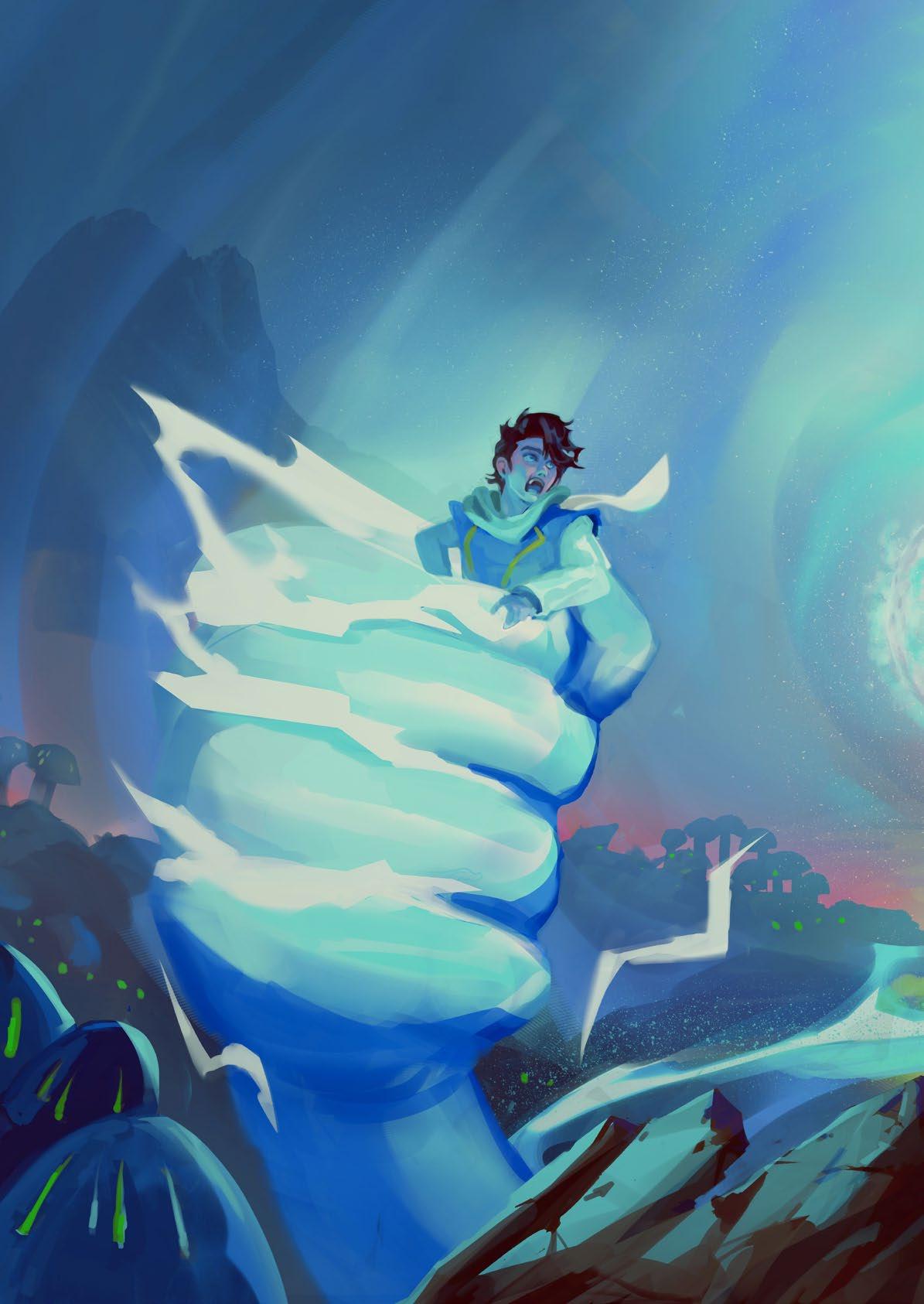
Fata Deum reignites the spark of divine simulation with heartfelt homage and flashes of genuine innovation. It balances sandbox creativity with strategic nuance, even if a few restrictions and rough edges temper the experience. For fans willing to guide an Early Access deity through growth pains, this is a promising journey.
8/10
Fata Deum’s audio elevates every divine act with sweeping orchestral flourishes and ethereal choirs that swell at the crescendo of your miracles. The soundtrack’s cinematic undercurrents and subtle ambient cues anchor you in your role as a god, making thunderous storms and gentle rainfalls feel truly monumental. Although some themes loop a bit too long during extended sessions, the overall sound design lends weight and emotional depth to each moment of creation, worship, and divine wrath.
8/10
Fata Deum’s visuals immerse you in a stylized medieval world rendered in painterly textures and warm, evocative hues. Villages with thatched roofs and winding cobblestone streets bustle beneath your divine gaze, while rolling hills, dense forests, and meandering rivers respond visually to your moral alignment. Temples and statues rise in striking symmetry, their architecture reflecting the ethos you cultivate. Dynamic environmental shifts, quakes that fracture the earth, storms that churn the skies unfold with satisfying physics, making every act of creation or destruction a feast for the eyes.
7/10
Fata Deum’s playability strikes a balance between strategic depth and divine experimentation. The celestial interface lets you cast miracles and survey your realm with ease, while its mana-driven pacing encourages thoughtful choices each in-game day. Building and demolishing structures delivers satisfying, physics-based feedback, even if fixed zoning sometimes constrains creativity. Combat encounters inject thrilling urgency but can feel abrupt after long stretches of peaceful management. Overall, the learning curve welcomes newcomers and offers enough nuance to engage veteran god-sim fans, though periodic micromanagement tedium surfaces during resourceintensive phases.
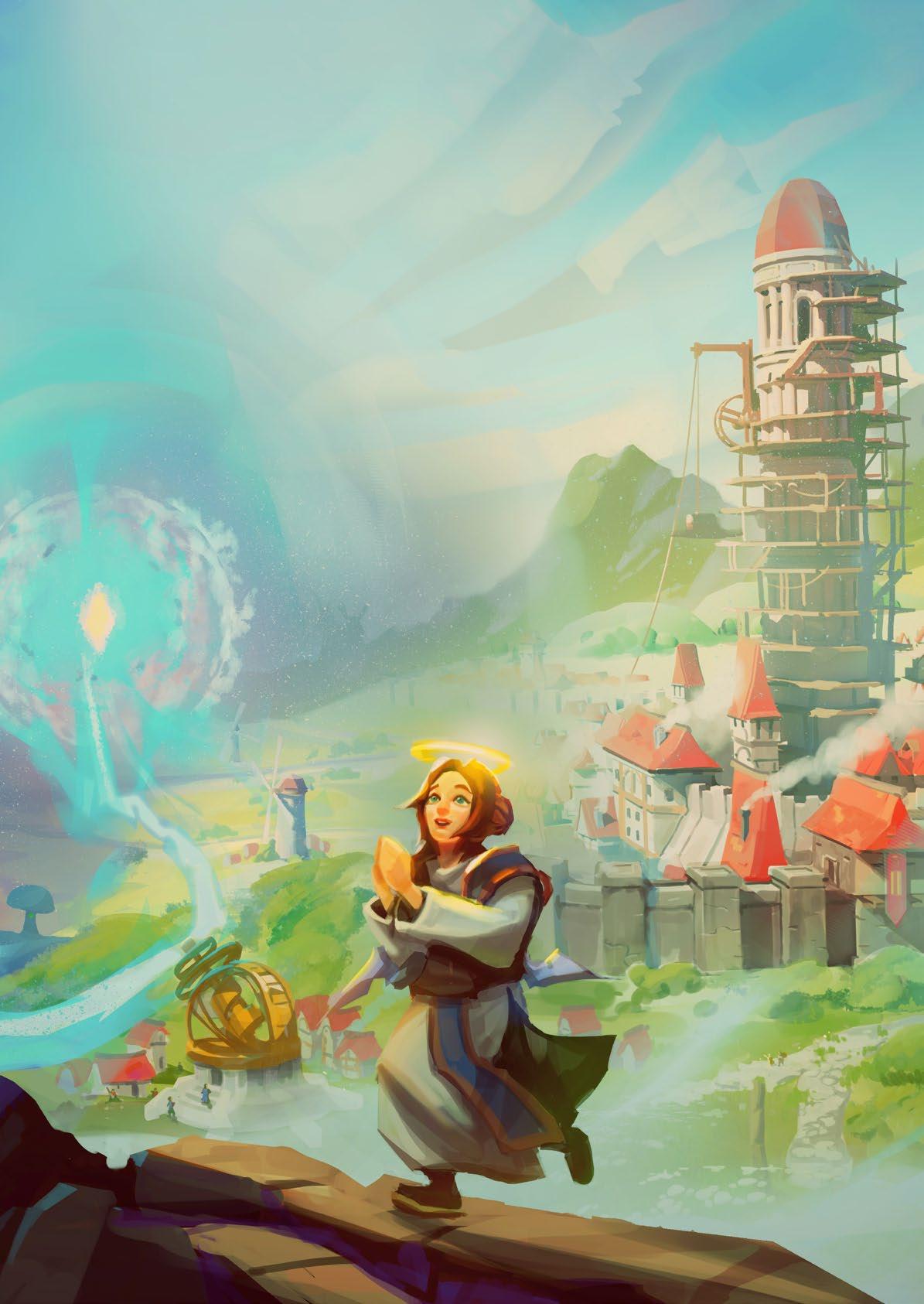
Fata Deum delivers a heartfelt god-sim experience that melds nostalgic charm with thoughtful strategic depth. Its intuitive interface and satisfying miracle mechanics make each session feel impactful, even as early-access limitations occasionally surface. Visually and sonically, the game immerses you in a living medieval realm that dynamically responds to your divine choices, reinforcing the weight of your influence. Though some rough edges remain in city management and combat pacing, Fata Deum’s current build establishes a solid foundation for a promising ascent to god-sim royalty.
Version tested: PC/Steam | Reviewed by: Brandon Sawyer

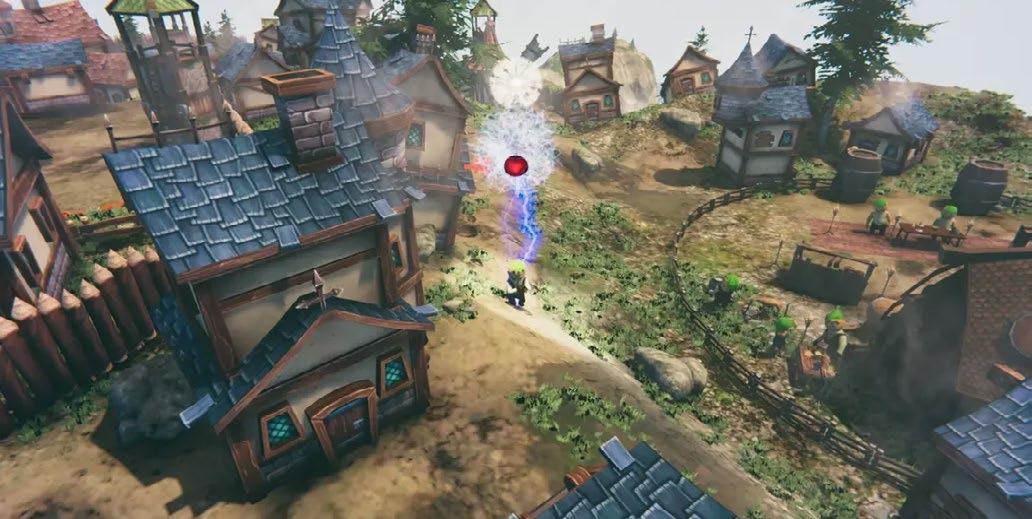

Above Snakes doesn’t just ask you to survive, it asks you to shape the very world you’re surviving in. After 30 hours of hands-on play on Xbox Series X, the game reveals itself as a quiet, methodical survival experience with a tile-based twist that sets it apart from genre staples. You don’t spawn into a pre-built map, instead you unlock and place tiles one by one, choosing which biome to add next, forest, lake, desert, corrupted wasteland, each with its own resources, threats, and visual identity. That mechanic alone gives the game a sense of authorship that most survival titles lack.
The early hours are slow, almost meditative. You gather wood, hunt game, craft tools, and unlock new tiles at a steady pace. There’s a rhythm to it that becomes oddly satisfying, even if the loop doesn’t evolve much over time. The game doesn’t rush you, and that’s part of its charm. It’s a survival experience that values solitude and reflection over adrenaline and spectacle. You’re not just surviving, you’re curating a landscape, and that subtle shift in agency changes how you approach every decision.
Visually, Above Snakes is warm and stylized.

The earthy palette and soft lighting evoke a sense of frontier nostalgia, and on Series X, performance is consistently smooth. No frame drops, no crashes, no major bugs. The UI is clean and intuitive, though inventory management becomes a minor headache once you start stockpiling resources. Sound design is minimal but effective, ambient nature sounds, subtle musical cues, and the occasional eerie silence when you step into corrupted zones. It’s not trying to overwhelm you with cinematic flair, but it succeeds in creating a mood that’s both grounded and quietly eerie.
There’s a tactile quality to the world that makes each tile feel like a meaningful addition. Whether you’re placing a dense forest to farm lumber or a corrupted biome to chase rare loot, the act of expanding your map becomes a kind of storytelling. You’re not just reacting to the world, you’re writing it.
Combat, however, is where the cracks begin to show. Encounters with corrupted wildlife and undead enemies feel undercooked. The mechanics are functional but shallow, and after a few hours, fights become predictable. There’s no real incentive to engage unless you’re forced
to, and the lack of enemy variety makes combat feel more like a hurdle than a highlight. It’s not broken, it’s just forgettable.
There’s potential here, especially in the way corruption spreads and influences tile placement, but the game never fully leans into that tension. You’re rarely forced to make hard choices under pressure, and that lack of urgency makes combat feel disconnected from the rest of the experience. It’s a system that exists but doesn’t evolve.
Where Above Snakes truly shines are in its atmosphere. There’s a quiet beauty to the world, especially once your map begins to reflect your choices. Each tile placed becomes a personal stamp, do you prioritize resources, aesthetics, or strategic layout? That subtle layer of decision-making adds depth to what could’ve been a straightforward survival loop. Narrative elements are present but understated. Through quests and exploration, you uncover fragments of lore hinting at a mysterious corruption spreading across the land. It’s not a gripping story, but it gives just enough context to keep you curious. The game doesn’t spoonfeed exposition, and that autonomy is both refreshing and risky. Without stronger narrative hooks or character development, some players

may lose momentum once the novelty fades.
Crafting and progression are solid. Unlocking new recipes, upgrading gear, and expanding your base feels rewarding, even if the grind occasionally wears thin. The tile system helps break up the monotony, offering new biomes and challenges, but after 30 hours, we found ourselves wishing for more surprises. The systems are well-integrated, but they rarely evolve in unexpected ways. You know what you’re getting, and while that consistency is comforting, it can also feel limiting.
One of the game’s quiet strengths is its pacing. It doesn’t rush you, and it doesn’t overwhelm you. It’s a game best enjoyed in quiet sessions, where the joy comes from shaping the land and surviving on your terms. There’s no pressure to min-max, no looming threat that forces urgency. It’s survival as a slow burn, and that’s a rare thing in today’s market.
Above Snakes is a game that invites you to breathe, to build, and to reflect. It’s not trying to be the next big thing, and that’s exactly why it works. It’s a niche experience, but one that feels personal. You’re not just playing a game, you’re crafting a story tile by tile, and even when the systems fall short, the sense of ownership remains.
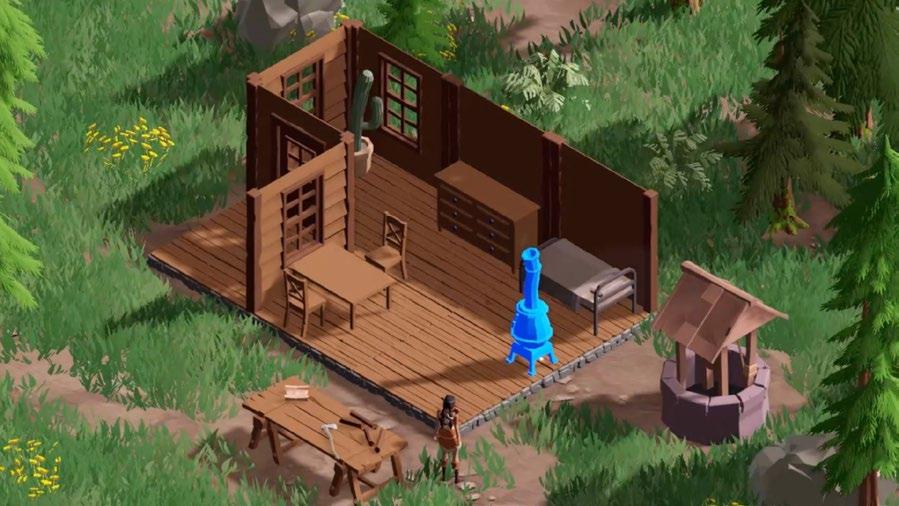

Above Snakes is a niche gem with a strong identity. It won’t be for everyone, but if you’re looking for a survival game that values atmosphere, autonomy, and player-driven exploration over action and intensity, it’s worth saddling up. The combat may be shallow, and the pacing may test your patience, but the tile-based world-building and quiet immersion make it a frontier worth exploring. Not perfect, but undeniably memorable.
The audio in Above Snakes is understated but purposeful, reinforcing the game’s solitary and reflective tone. Ambient nature sounds like rustling leaves, distant wildlife, and the soft crunch of footsteps create a grounded sense of place, while the sparse musical cues drift in and out like passing thoughts, never overwhelming the experience. It’s not a soundtrack that demands attention, but one that quietly supports the mood, especially during long stretches of tile placement and resource gathering. In corrupted zones, the silence becomes eerie, adding subtle tension without resorting to dramatic stingers. It’s minimal, but it works.
Visually, Above Snakes delivers a stylized frontier that feels handcrafted and cohesive, with a warm, earthy palette that evokes the quiet solitude of the wild west. Each tile you place adds a distinct biome, and while the art direction leans into simplicity, it’s that very restraint that gives the game its charm. Forests sway gently, corrupted zones pulse with muted menace, and the lighting shifts subtly across day and night cycles, creating a sense of time and place without overwhelming the player. On Xbox Series X, textures are crisp, animations are smooth, and the overall performance holds steady, allowing the visual identity to shine through without distraction. It’s not a showcase of graphical power, but it’s a world that feels personal, deliberate, and quietly beautiful.
The playability of Above Snakes is defined by its slow, deliberate pacing and its unique tile-placement mechanic, which gives players direct control over how the world unfolds. It’s intuitive and easy to grasp, making the early hours accessible, but it also demands patience, especially as progression leans into repetition. The survival loop, gathering, crafting, exploring, is functional and satisfying in short bursts, though it lacks the dynamism of more complex systems. Controls on Xbox Series X are responsive and well-mapped, with smooth movement and interaction, though inventory management can feel clunky as resources accumulate. While combat is serviceable, it doesn’t evolve or challenge, leaving most of the engagement to exploration and base-building. Overall, it’s a playable and stable experience, best suited for players who enjoy autonomy and quiet immersion over fast-paced action.

The overall delivery of Above Snakes feels intentional, personal, and quietly ambitious. It doesn’t try to compete with blockbuster survival titles, instead carving out its own identity through tile-based exploration, stylized visuals, and a meditative pace that rewards patience over urgency. While its combat and narrative depth fall short of its more innovative systems, the game succeeds in offering a stable, immersive experience that invites players to shape their own frontier. On Xbox Series X, it runs smoothly and consistently, allowing its atmosphere and mechanics to take center stage. It’s a game that knows what it wants to be, and while it doesn’t always hit every mark, it delivers a memorable journey for those willing to slow down and build something meaningful.
Version tested: Xbox Series X | Reviewed by: Brandon Sawyer




From the first thunderous roar of Marcus Fenix’s chainsaw bayonet to the final echo of that haunting string motif, Gears of War: Reloaded pulls me back into Sera’s war-torn landscapes with an intensity I didn’t think possible in a remaster. As a Gears esports veteran, I’ve paced the corridors of Jacinto, plotted flank routes under relentless fire, and felt the raw adrenaline of clutch comebacks. Reloaded doesn’t just polish the original; it reignites every memory and reaffirms why this franchise sits at the pinnacle of cover-shooter design.
Reloaded’s campaign unfurls with cinematic grandeur. The opening cutscene shimmers in high resolution, highlighting tiny droplets of rain on Dom’s battered helmet and the flicker of emergency lights in abandoned military posts. Every chapter transition feels meticulously paced—Act One’s frantic evacuation, Act Two’s claustrophobic refinery, Act Three’s subterranean dread, and Act Four’s icy expanse all blend seamlessly. Subtle lighting tweaks illuminate scars on the environment, revealing stories of past battles that mirror my own tournament skirmishes. These visual cues deepen the narrative weight, reminding me that on Sera, every corridor harbors both danger and history.
Reloaded refines the cover-and-shoot blueprint without sacrificing the franchise’s raw brutality. Sliding into cover is instantaneous, with zero perceptible lag between input and action. Mantling over obstacles feels fluid, as though the game anticipates my next tactical move. Weapon recoil and active-reload windows are recalibrated to reward veteran timing— chain-saw executions deliver that satisfying grind, while Boomshots shake the earth with convincing force. When I nail back-to-back
headshots with the Lancer, I’m reminded of the countless ranked matches where milliseconds separated victory from defeat. This balance between nostalgia and precision makes every firefight feel both familiar and exhilaratingly fresh.
Every texture in Reloaded feels like a lovingly restored relic. The chipped paint on COG armour, the rusted plating of Hammerburst rifles, and the soot-smudged walls of Locust lairs all pop in stunning clarity. I found myself pausing mid-mission to admire shafts of sunlight cutting through smoke—moments that evoke memories of post-match screens where my teammates and I dissected every environmental cue. These visual refinements aren’t superficial; they anchor me back into my earliest Gears experiences, from grassroots LAN parties to packed esports arenas.
Audio design in Reloaded is a masterclass in immersion. The metallic click of a bolt closing, the distant whine of mortars, and Marcus’s gravelly taunts reverberate through my headset with cinematic depth. Late in the “Blood Drive” mission, there’s a fleeting silence before an ambush, punctuated only by a mournful violin. That hush transports me to the tense pre-kickoff moments of finals matches—when the entire arena holds its breath and my heartbeat echoes louder than the crowd. These moments of stillness, framed by impeccable sound design, are as thrilling now as they were in my first pro-circuit triumph.
Reloaded’s multiplayer suite feels tailor-made for the modern pro. Frame rates lock rock solid, input latency drops to imperceptible levels and hit detection has been refined to pixel accuracy. I re-ran every classic map, testing flank routes
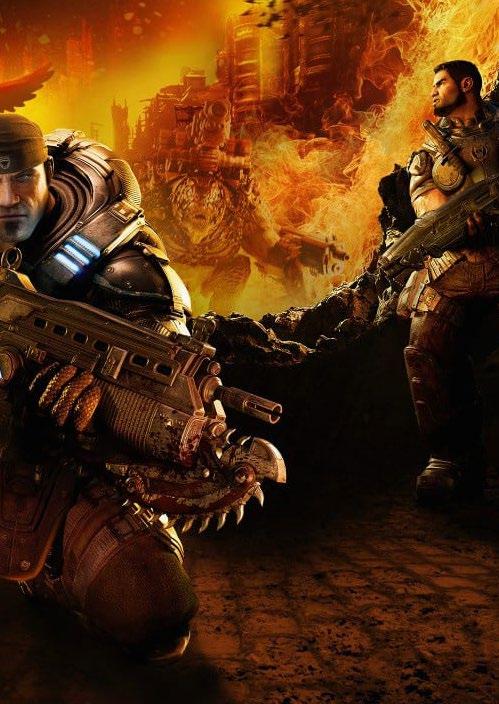
and sightlines I once memorized in tournament play. The result is a gameplay experience that lives up to Gears’ pro-level expectations: frantic executions, perfectly timed active reloads, and strategic grenade arcs that can turn the tide of a match in an instant.
Even newcomers will find a competitive crucible that rewards skill and teamwork in equal measure.
Beyond the core remaster, Reloaded introduces thoughtful quality-of-life improvements. A redesigned HUD provides clearer cooldown indicators and ammo counts, while customizable input presets let players tailor controls to their unique playstyles.
Subtitles and adjustable contrast modes expand accessibility, ensuring that every soldier—veteran or newbie—can dive into Sera’s warzone with confidence. These refinements may fly under the radar, but they underscore a commitment to inclusivity and competitive integrity.
As I replayed the final chapter and watched the credits roll, I felt that familiar swell of nostalgic pride. The memory of clutching a last-second victory in a packed studio hall surged back, along with the camaraderie of shouting strategies over chipped headsets. Reloaded doesn’t just restore a game; it rekindles the bonds, rivalries, and triumphs that define Gears’ enduring legacy. It’s a testament to how a meticulously crafted shooter can become the backdrop for some of my most electrifying career moments.
Gears of War: Reloaded honours its heritage while pushing every mechanical and audiovisual detail to modern heights. It falters only in its reluctance to deliver brand-new campaign chapters, but that quibble pales against the flawless execution of every other aspect. For veterans yearning to relive their greatest battles and newcomers seeking the pinnacle of cover-shooter design, Reloaded is indispensable.

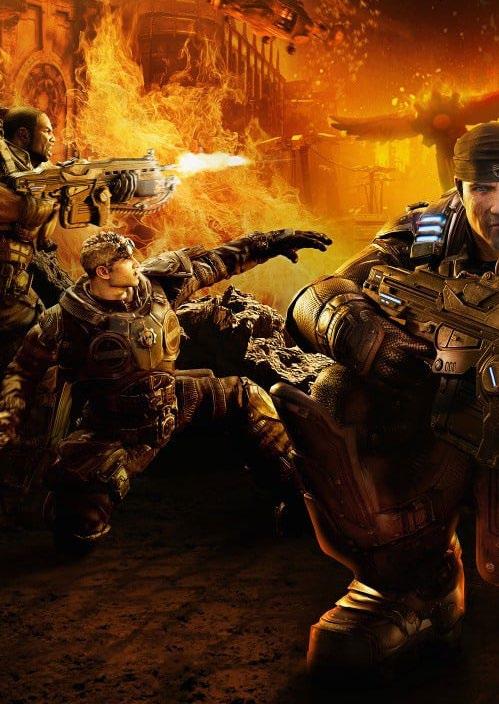
Gears of War: Reloaded stands as a near-perfect homage to its roots, delivering pro-level responsiveness, cinematic polish, and an emotional punch that leaves you itching for one more round. Whether you’re a battle-hardened pro or a newcomer craving high-stakes cover fire, this remaster demands your attention—and your trigger finger.
9/10
Reloaded’s audio earns a 9/10 by immersing you in Sera’s war with crystal-clear weapon impacts, distant mortar echoes, and Marcus’s gravelly taunts delivered in cinematic fidelity; these thunderous highs, meticulous environmental cues, and haunting silences—like the mournful violin in “Blood Drive”—build tension and emotional resonance, making every firefight feel as epic as a pro-circuit final.
9/10
Reloaded’s visuals score a 9/10 thanks to its stunning high-resolution textures and dynamic lighting that makes every sunbeam piercing smoky corridors feel alive, while fine-grained details—from the chipped paint on COG armor to the frost-laden cliffs of Act Four—rekindle the series’ iconic aesthetic. Polished character models and environmental effects immerse you in Sera’s war-torn world, and subtle touches like particle-driven embers and real-time reflections elevate key moments without overshadowing the original’s atmosphere. A few fleeting texture pop-ins in sprawling set pieces prevent a perfect score, but they’re mere ripples in an otherwise breathtaking visual showcase.
9/10
Reloaded’s playability scores a 9/10 thanks to its ultra-responsive controls, razor-sharp cover mechanics, and finely tuned weapon handling that make every slide, vault, and active-reload feel instinctive—rewarding veteran timing without ever stumbling. The only thing holding it back from a perfect ten is its conservative stance on new gameplay innovations; it leans heavily on nostalgia rather than reinventing the wheel.
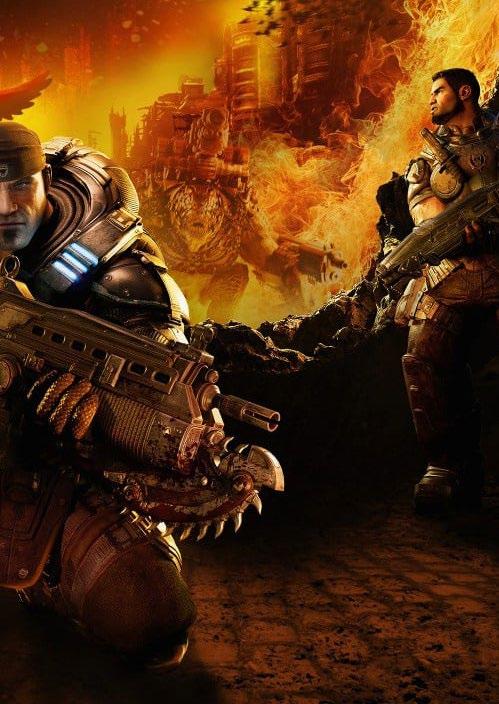
Reloaded’s overall delivery earns a 9/10 by seamlessly fusing polished performance, cinematic visuals, and immersive audio into a near-flawless package that honours every bit of Gears’ legacy while running like a dream in modern pro-level environments; its unwavering faithfulness to the original’s brutal cover-and-shoot DNA and emotional weight outweighs the only real shortcoming—no new campaign chapters—making this remaster a triumphant celebration of Sera’s war.
Version tested: PC/Xbox Series X | Reviewed by: Brandon Sawyer

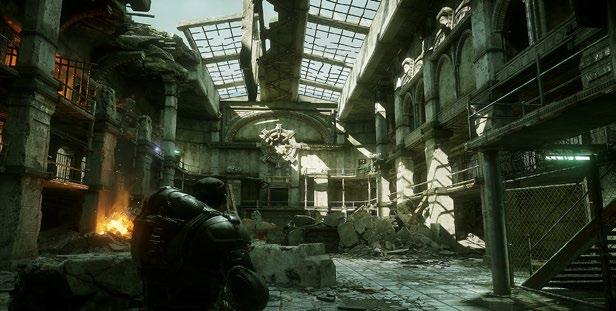


CHIP ‘N CLAWZ vs. THE BRAINIOIDS is the kind of game that feels like it was pulled straight from the golden age of animated chaos, then injected with modern co-op sensibilities and a surprising amount of mechanical depth. Developed by Neuron Punch, this side-scrolling action platformer is a riot of colour, character and kinetic gameplay, blending slapstick absurdity with smart level design and a genuine sense of camaraderie.
We played on Xbox Series X, where the game runs buttery smooth at 60fps with crisp visuals and snappy controls. From the moment Chip’s jetpack tail ignites and Clawz swings into frame with his grappling claws, it’s clear this isn’t just another indie platformer. It’s a full-blown co-op spectacle that knows exactly what it wants to be and delivers it with confidence.
The story is delightfully ridiculous. Earth’s tech has been hijacked by the Brainioids, a hiveminded alien species obsessed with digitizing organic life. Enter Chip, a cyber-squirrel with a penchant for hacking and hover jumps, and Clawz, a streetwise feline with claws sharp enough to slice through steel and sarcasm to match. Together, they’re the last line of defence against the Brainioid invasion, and their journey takes them through neon junkyards, corrupted data vaults and floating cityscapes that feel like a fever dream drawn by a caffeinated animator. The writing is punchy and self-aware, packed with one-liners, visual gags and fourth wallbreaking moments that never overstay their welcome. It’s the kind of humour that lands best when shared, and the game wisely leans into that with its co-op-first design.

CHIP ‘N CLAWZ is unapologetically co-opcentric, and it’s better for it. The Friends Pass feature is a standout, allowing one player to invite another to play for free, which is a brilliant move for accessibility and community building. Whether you’re playing locally or online, the game encourages constant communication and coordination. Chip can disable turrets and hover across gaps, while Clawz can scale walls and disable enemy shields. Many puzzles and combat scenarios are designed to split players up and bring them back together in clever, satisfying ways.
There’s a rhythm to the gameplay that feels almost musical when you’re in sync with your partner. One moment you’re solving a timingbased puzzle involving rotating platforms and laser grids, the next you're tag-teaming a boss fight that requires simultaneous attacks on weak points while dodging bullet hell patterns. It’s chaotic, but never overwhelming, and the difficulty curve is tuned to reward experimentation and teamwork.
While co-op is clearly the intended experience, solo players aren’t left behind. You can swap between Chip and Clawz on the fly, and the AI companion is surprisingly competent. Some puzzles lose their spark without a second human brain, but the game compensates with tighter platforming and more focused combat. The solo mode feels like a different flavour of the same dish—less banter, more precision— but it’s still satisfying and well-balanced.
Combat is fast, fluid and surprisingly layered. Chip’s EMP burst can disable enemy tech, while Clawz’s pounce chains into aerial combos that feel weighty and responsive. As you progress, you unlock new abilities and passive upgrades that let you customize your playstyle. Want to turn Chip into a long-range disruptor while Clawz becomes a melee tank? You can. The upgrade system isn’t overly complex, but it offers enough flexibility to keep things fresh. Enemy variety is solid, with Brainioid drones, corrupted mechs and environmental hazards that force you to adapt. Boss fights are a highlight, combining puzzle mechanics with frantic dodging and coordinated attacks. Each one feels distinct, with unique arenas and attack patterns that push you to use everything you’ve learned.
On Xbox Series X, CHIP ‘N CLAWZ is a visual treat. The animation is fluid and expressive, with exaggerated physics and slapstick reactions that make every hit feel satisfying.

The environments are packed with detail, from flickering neon signs to destructible scenery that reacts to your actions. The game’s art direction is bold and cohesive, channelling the energy of 90s cartoons without feeling dated. The soundtrack is a synth-heavy mix of retro beats and dynamic cues that shift with the action. Voice acting is over-the-top in the best way, giving each character a distinct personality without becoming grating. Load times are minimal, and we encountered no performance hiccups during our playthrough.
There’s a lot to come back for. Hidden collectibles unlock concept art and bonus challenges, and alternate paths in levels encourage replaying with different strategies. The game also features time trials and scorebased challenges that add a competitive edge for players who want to push their skills. More importantly, CHIP ‘N CLAWZ feels like a game built for the community. The Friends Pass; the co-op-first design and the expressive characters all contribute to an experience that’s meant to be shared. It’s the kind of game you finish and immediately want to play again with someone new.


CHIP ‘N CLAWZ vs. THE BRAINIOIDS is a chaotic, clever and surprisingly strategic platformer that rewards teamwork, timing and a sense of humour. It’s not just a gimmick wrapped in nostalgia; it’s a well-crafted experience that understands what makes shared play fun. While solo players might miss some of the magic, the game still delivers a polished and energetic ride from start to finish.
8/10
The audio is lively and thematically spot-on, with a synth-heavy soundtrack that channels retro cartoon energy and punchy sound effects that make every claw swipe and jetpack burst feel satisfying. Voice acting is exaggerated and fun, matching the game’s slapstick tone, though some lines become repetitive over time, especially during extended sessions. While the music complements the action well, it lacks variety across levels and doesn’t evolve much, leaving no standout tracks that linger after the credits roll. Overall, the audio supports the experience effectively but doesn’t elevate it, reflecting the game’s solid but not exceptional 8 out of 10 score.
8/10
Every frame feels hand-crafted to evoke the energy of 90s Saturday morning shows, from the expressive character animations to the neon-drenched environments that pulse with personality. On Xbox Series X, the game runs flawlessly, with crisp resolution and smooth transitions that make every grapple, jetpack burst and Brainioid explosion pop off the screen. Environmental design is playful yet detailed, with interactive elements and layered backgrounds that add depth without clutter. While the art style is bold and cohesive, it occasionally leans too heavily on familiar tropes, and some level themes begin to blur together late in the campaign. Still, the visual identity is strong, memorable and perfectly tuned to the game’s chaotic spirit, earning its place in the 8 out of 10, stylish, satisfying and just shy of groundbreaking.
8/10
On Xbox Series X, the game feels responsive and fluid, with character movement that’s snappy and satisfying, whether you’re jetpacking across hazards or chaining claw combos mid-air. The co-op design is where the game truly shines, encouraging teamwork through split-path puzzles, synchronized combat and clever mechanics that reward coordination. Solo play is fully supported with character swapping and competent AI, though some moments lose their spark without a second player. Level design is inventive and varied, introducing new mechanics at a steady pace while keeping the core gameplay loop fresh. Occasional camera hiccups and minor platforming imprecision hold it back from perfection, but overall, the game delivers a polished and enjoyable experience that’s easy to pick up and hard to put down.
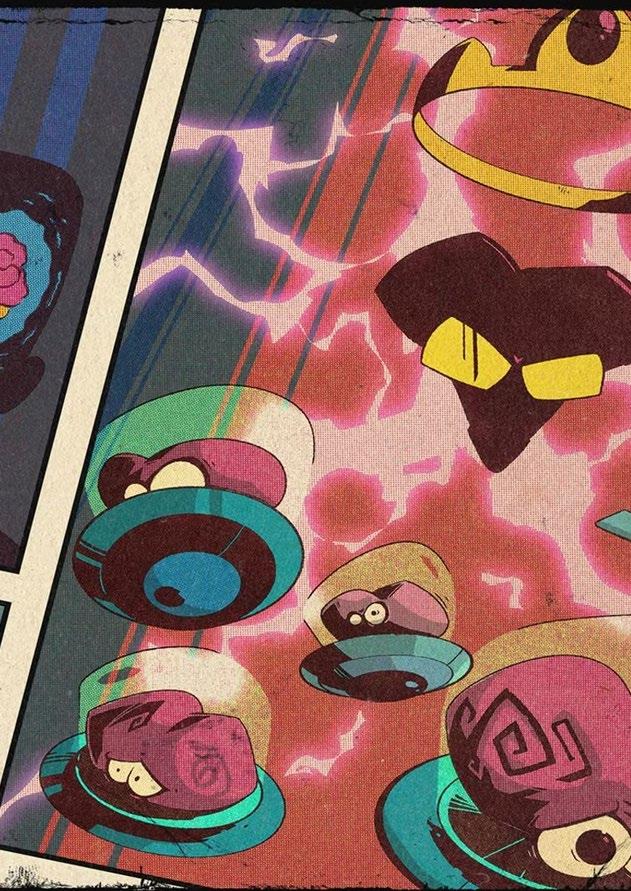
From its vibrant art direction and expressive character design to its tight gameplay loop and clever level structure, the game knows exactly what it wants to be and rarely strays from that vision. On Xbox Series X, performance is smooth and consistent, with responsive controls and minimal load times that keep the momentum flowing. The co-op mechanics are the heart of the experience, and the inclusion of a Friends Pass makes it incredibly accessible, encouraging shared play without barriers. Solo mode is thoughtfully implemented, though it lacks the spark and spontaneity of two-player chaos. While the game doesn’t reinvent the genre, it delivers a polished, energetic and communitydriven adventure that’s easy to recommend. It’s a game that thrives on connection, laughter and the kind of teamwork that turns simple mechanics into memorable moments.
Version tested: Xbox Series X | Reviewed by: Brandon Sawyer

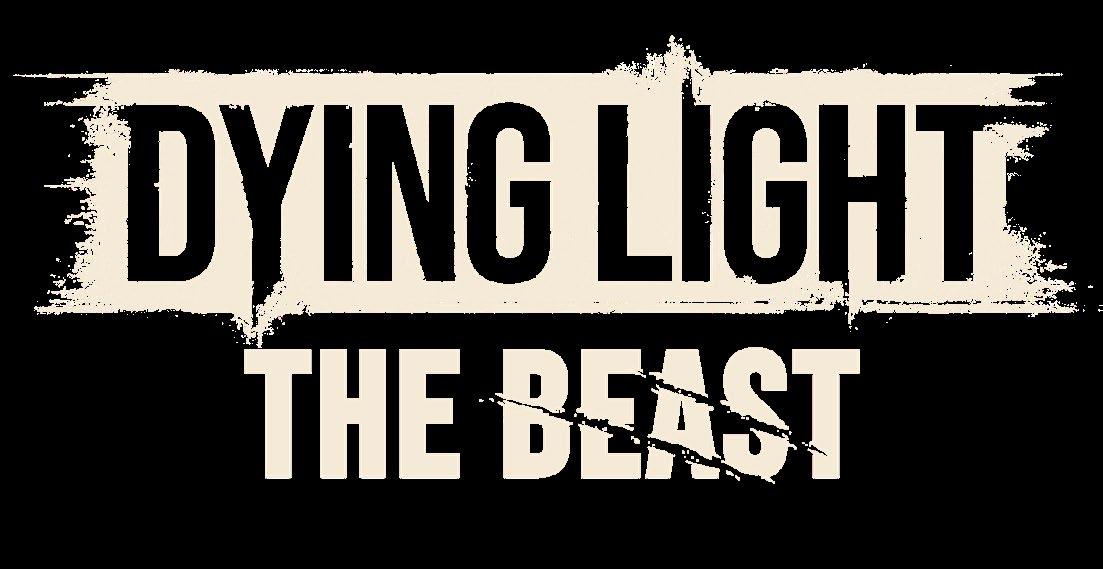
Dying Light The Beast sharpens the franchise’s signature blend of fluid parkour, brutal close quarters combat, and emergent cooperative chaos, then wraps those systems in a story that lands emotionally. After more than forty hours split between solo exploration and long co-op nights with my regular group, this expansion proved to be both familiar and refreshingly purposeful, a package that rewards patience, creativity, and the bonds you build when everything is trying to kill you.
My time with The Beast was a campaign of discovery rather than a rush to the finale. Early sessions were about relearning momentum and testing new enemy patterns. Mid game introduced larger, more deliberate missions and side content that pulled me off the most obvious routes. Late game became surgical, where weapon choice, parkour lines, and team roles mattered in ways that made each run feel earned. Playing with my buddies turned routine objectives into manic, unforgettable sessions. Coordinated distractions, split second revives, and improvised tactics made near misses feel triumphant. The map supports emergent team strategies, letting groups carve signature routes and coordinate diversions that feel uniquely theirs. Technical stability in multiplayer was generally solid with only occasional hiccups that never spoiled an evening.
Movement Combat Loop and Beast Mechanics Movement remains the expansion’s heartbeat.

Parkour feels like a conversation between player and environment, chainable animations and thoughtful geometry turning traversal into a satisfying rhythm. Combat leans into that momentum: improvised weapons hit with satisfying weight while dodges and vaults are meaningful. New environmental threats and encounter types of demand that you mix stealth, speed, and brute force. Beast mechanics are integrated into this loop as a narrative and mechanical extension. They give Crane visceral advantages in combat and traversal while raising ethical and tactical tensions. Moments where using Beast power completes an objective faster but risks civilian harm are staged to force reflection rather than mindless power fantasy.
The Beast reframes Kyle Crane from pragmatic operative into a haunted, complicated force driven by loss, vengeance, and a fragile search for self. The story moves from survival thriller beats to quieter, emotionally charged encounters, using Castor Woods as a mirror for Crane’s interior fracture. Castor Woods is more than a backdrop; it is a living archive of cruelty and community. Ruined clearings, abandoned research outposts, and weathered settlements tell the history of Crane’s captivity without spelling everything out. Crane returns older, scarred, and altered by bioengineering that left him with emergent abilities and an uneasy identity. His arc is driven by revenge, redemption, and the slow reclamation of
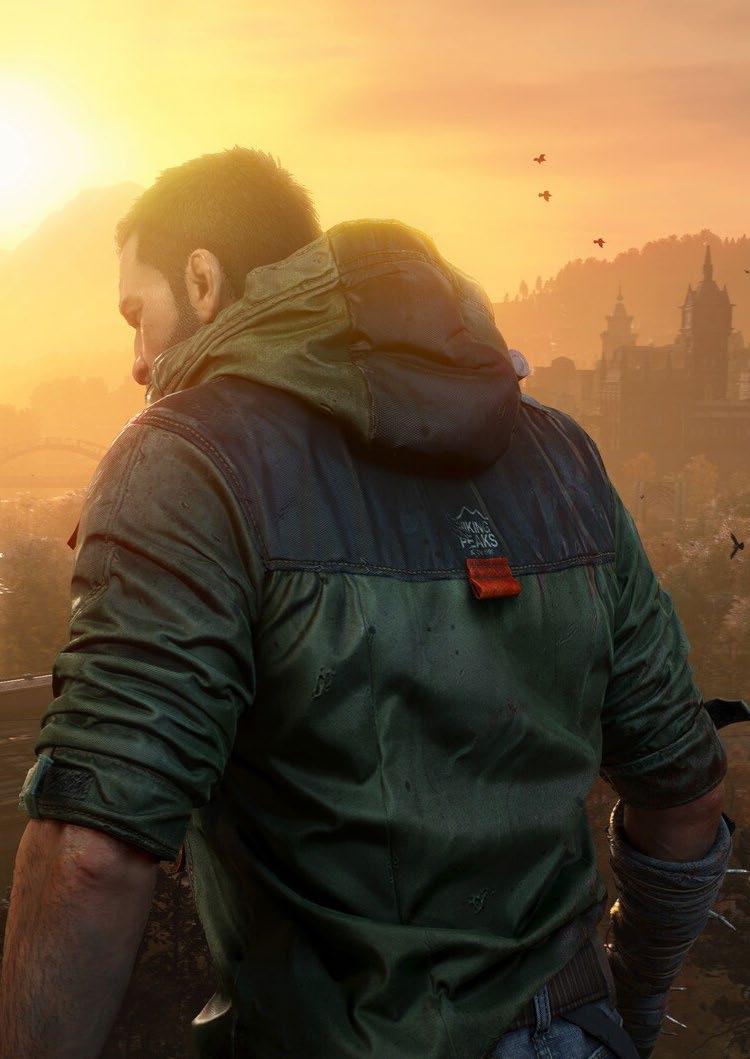
personhood.
Key moments land because they are intimate rather than flashy. A brutal raid will bleed into a quiet scene where Crane confronts the faces of his past. Reunions with people who knew him before Harran reframe motives and force difficult choices. Antagonists are rarely pure evil: scientists rationalize cruelty as progress, faction leaders justify harsh measures as necessary for stability, and survivors cling to routines that preserve hope. That moral complexity makes choices feel meaningful and gives the quieter scenes heavy resonance. The ending resists tidy closure, choosing a bittersweet note that honours Crane’s struggle while acknowledging that some costs cannot be fully undone.
The Beast’s map is large and layered without feeling padded. Ruined urban pockets sit beside dense woodland, and the forested zones are the expansion’s highlight. Trees, undergrowth, and vertical canopy create a different tempo from the city rooftop runs. Ambush points and restricted sightlines force you to consider visibility and sound in ways urban runs do not. Day night swings in those wooded areas change traversal strategy and inject palpable dread into nocturnal missions. Exploration is rewarded with purposeful points of interest and environmental storytelling that ties back into the main arc, revealing pieces of Crane’s history and the institutions that shaped his fate.
Sound design and atmosphere are indispensable here.
Directional audio cues, wind through the canopy, and subtle environmental effects heighten suspense and inform survival choices better than any HUD. Visual touches like rain-soaked foliage, scattered debris, and expressive enemy animations sell the world’s history. On both PC and consoles the expansion nails mood and detail. Animations keep parkour and melee feeling weighty and responsive, while lighting and weather effects amplify tension without overshadowing gameplay.
Both platforms deliver excellent versions tailored to different priorities. On PC higher fidelity textures, sharper shadows, and unlocked framerates make parkour feel hyper responsive on powerful rigs. Smoother frame pacing enhances precision in traversal and firefights, and graphical headroom sharpens foliage and lighting. Console editions provide a polished living room experience with refined controller mapping and stable performance on current generation hardware. Differences are mostly graphical and performance oriented rather than mechanical; neither platform compromises the core thrills. Choose PC for raw visual polish and frame rate, choose console for convenient, couch friendly co-op.
The Beast is not flawless. Pacing can stall between major narrative beats and certain side activities loop toward repetition. A handful of late game balance choices allow specific builds to dominate, trimming the need for adaptation in some runs. Minor technical quirks appeared in rare multiplayer sessions, but none were frequent enough to derail the experience. These issues temper the expansion’s highs but do not erase them.


Dying Light The Beast is a confident expansion that deepens what made the series great while offering a resonant, character driven continuation of Kyle Crane’s story. Movement and combat remain joyful and tactile, co-op elevates both tension and triumph, and the forested map introduces fresh pacing and strategic choices. The narrative treats Crane’s transformation with seriousness, asking players to live with the costs of power as fiercely as the thrill of using it. Both PC and console players get polished, compelling versions.
8.5/10
9/10
The audio in Dying Light The Beast lifts nearly every moment of the expansion, thanks to razorsharp directional cues that inform stealth and survival, layered ambient atmospheres that make forests and ruined settlements feel alive, and crisp Foley and weapon impact that give combat real weight. Voice performances and restrained musical choices amplify the narrative’s quieter emotional beats rather than forcing melodrama, making losses and small victories land harder. A few mix and balance hiccups in dense encounters keep the soundscape from perfection, but overall the audio’s craftsmanship and tactical clarity justify the high mark in the review.
8/10
The visuals in Dying Light The Beast create a striking, lived-in world where environmental detail and weather effects consistently sell the setting, from rain-soaked foliage and drifting ash to crumbling architecture that invites exploration. On PC higher fidelity textures, sharper shadows, and smoother frame rates sharpen the sense of speed and responsiveness during parkour, while consoles deliver a polished, stable presentation that preserves atmosphere and clarity on the TV. Animations, especially in parkour transitions and melee strikes, give movement weight and make encounters feel kinetic, though occasional pop-in and texture streaming in busy scenes prevent a perfect score. Overall, the art direction and technical polish combine to make the world feel both brutal and beautiful.
9/10
Playability is where Dying Light The Beast truly clicks, offering tight, responsive controls that make parkour and combat feel intuitive and rewarding. Movement systems are polished so momentum carries meaningfully across environments and controller and mouse setups both feel well tuned. Cooperative mechanics scale smoothly for groups, encouraging role differentiation without punishing solo players who prefer cautious stealth or aggressive builds. Progression systems provide consistent rewards and meaningful upgrades, though a few late-game balance spikes reduce the need for adaptation. Occasional minor bugs and rare network hiccups appear but rarely disrupt the core loop, leaving playability solid and consistently fun.

The Beast launches as a confident, well packaged expansion that reaches players with polish and clarity. Install size and patch cadence are reasonable for modern standards and updates arrive predictably to smooth out early issues. The onboarding for new content is handled cleanly with clear mission markers and integrated tutorials that respect player agency without handholding. Multiplayer matchmaking and session persistence work reliably for most of my co-op sessions and cross play support feels mature and unobtrusive. The balance of performance patches and quality of life updates since release demonstrates active post launch support and a clear commitment to maintaining the experience.



From the first crackle of adaptive triggers under my thumbs to the final howl of an onryō’s lament, Ghost of Yōtei on PS5 Pro transcends mere sequel status. Sucker Punch has dialled every element up to eleven combat that feels sculpted by wind and ice, visuals that render snowflakes in astonishing detail, and a narrative that entwines you in curses older than memory. This expanded look dives deeper into what makes Ezo’s frozen expanse a must-play on Sony’s most powerful console.
Depth of the Lore: Curses, Clan Histories, and the Tree of Voices
Beyond Atsu’s personal vendetta lies a tapestry of clan rivalries and ancient yokai pacts. Each member of the Yōtei Six carries a distinct ancestral curse some born of blood magic, others woven through ritual sacrifice that shapes their lairs and combat styles. In the ruins of the Icewind Shrine, I uncovered fragmented scrolls detailing the Tree of Voices, a sentient sakaki that whispers prophecies through frozen branches. Piecing these secrets together not only unlocks late-game Spirit Arts but also paints a richer portrait of Ezo’s fractured society, where shamanic shambling’s and samurai honour codes collide under the aurora’s glow.
Enhanced Combat Systems: Ghost, Samurai, and Spirit Arts Revamped
While the core stances return, Ghost of Yōtei introduces three advanced Spirit Arts that redefine engagement flow. The “Wraith Cloak” lets you vanish into a swirl of frost, facilitating silent takedowns even in blizzard-raged

fortresses. “Phantom Barrage” unleashes a volley of ethereal arrows that seek out multiple foes, perfect for thinning the ranks of bandit camps before your katana sings in close quarters. Mastering these alongside the new “Rime Counter” a perfect-timing parry that freezes adversaries mid-strike—transformed each encounter into a dance between blade and spirit, where timing eclipses brute force.
Ezo never feels like a backdrop; it’s an active participant in your quest for vengeance. I tracked bear paw prints through snow-choked forests, leading to hidden hibernation dens where I harvested rare oils for my poisoned kunai. Steam vents under icy plateaus revealed molten heart caves, illuminated by bioluminescent moss that doubles as distraction tools against armoured ronin. Every shrine, from the mossgrown Torii of Fallen Blossoms to the cliffside Hagoromo Gate, weaves mythic context into traversal bridges creak under your shin-bone step, and the crunch of frozen reeds alerts distant sentries.
Stealth has never been more rewarding. Camouflage doesn’t just rely on tall grass; you’ll melt into drifting snow patterns, using wind-propelled banners and flickering lantern shadows to slip behind armoured guardians. Assassination animations vary depending on seasonal weather snow-packed attacks leave frosted blades protruding, while icy rain triggers

bone-chilling slow-motion freezes as your ghostly edge shatters armour. The game’s AI adapts too: I learned to interrupt patrol routes by triggering distant rockslides, forcing guards to investigate while I claimed my silent prize.
Each confrontation with the Yōtei Six unfolds like a ritualized duel. The Bone-Clad Monk near the Frozen Monastery summons spectral acolytes that flank you from multiple vectors, demanding split-second stance swaps. On the jagged cliffs of the Whitefall Citadel, the Onmoraki Warden harnesses windstorms to buffet your guard, requiring you to anchor your blade in the ground before launching counter strike. Beyond the main Six, Ezo teems with mini-bosses—mutated wolf spirits and cursed archers—whose dynamic spawn points ensure no two hunts feel identical.
Ghost of Yōtei’s world hums with emergent storytelling. I aided a bitter ex-shaman trapped in a haunted grotto by severing ghostly vines that bound her spirit, then escorted her back to reclaim a family relic. Roaming “Bell of Souls” events summon invisible foes until you restore broken toll chains, revealing secret Totem of Resolve upgrades. Rakugo storytellers in mountain hamlets regale you with oral legends that double as in-game hints for treasure maps. These layers make every detour feel like an invitation rather than a distraction.
On PS5 Pro, fidelity uses every teraflop to recreate frozen air. In Photo mode’s 12K captures, ice crystals refract dawn’s pink haze, and each torii gate’s wood grain is rendered with tactile warmth. Performance Mode locks at 60 fps even during bone-shuddering storms that blur tree lines in the distance, while ray-
traced shadows stretch eerily across snowdrifts. Composer Aoi Mitsuki’s score echoes through 3D Audio, letting you pinpoint the lament of distant shrine bells or the guttural growl of a hidden oni through your headphones.
This is the DualSense’s finest hour. Spirit Dash pulses through the touchpad as a quick heartbeat, while landing atop frozen rivers gives a distinct crunch under the grips. Drawing your spear tightens the L2 trigger’s tension and releasing it sends an icy shudder through your palms. Even the whisper of snow on mountain ledges registers as a wet, granular vibration, anchoring you deeper into Atsu’s onryō psyche.
After the credits roll, Ezo continues to beckon. “Phantom Trials” dungeons weave randomized obstacle gauntlets and boss gauntlets, pitting you against scaled-up versions of the Yōtei Six with augmented Spirit Arts. My time trials on Rime-Frost Path tracked every parry and stealth kill, ranking me on global leaderboards. New Game+ unlocks “Spirit Echo” modes were fallen Yōtei Six return as ethereal berserkers, inviting you to replay key duels under altered environmental conditions—rain, blizzard, or moonless night.
Sucker Punch has woven accessibility into Ezo’s fabric. Multiple difficulty tiers let you toggle enemy aggression and environmental damage, while color-blind HUD options ensure Shinto symbols and rune markers remain discernible in low-light caves. Subtitle size, contrast filters, and haptic-only combat cues guarantee every player can tailor their spirit’s journey through the snow. May your blade remain sharp, your spirit unbound and your path through Ezo’s frozen wilds carry the echoes of a truly unforgettable onryō legend.

Ghost of Yōtei on PS5 Pro transcends its predecessor by forging an identity all its own cold, unforgiving, yet drenched in elegiac beauty. From the expanded Spirit Arts toolkit to the AI’s snow-smothered stealth dynamics, every element reflects a developer team unafraid to lean into myth and next-gen power. This isn’t just another samurai tale; it’s a haunting requiem worth living.
9/10
The audio design in Ghost of Yōtei is nothing short of transcendent. Aoi Mitsuki’s score weaves taiko drums, shakuhachi flutes, and ethereal choir into a haunting soundscape that heightens both solitude and storm-driven combat. Tempest 3D Audio on PS5 Pro places you inside every crunch of ice, distant shrine bell, and phantom whisper, creating an auditory immersion that few games achieve.
8/10
On PS5 Pro, Ezo’s frozen realm looks like a living diorama. True 4K textures, ray-traced reflections on glassy lakes, and dynamic weather transitions render each snowflake and sunlit torii gate with photoreal clarity. Whether you’re scaling frost-clad cliffs or slipping through dusk-lit forests, the seamless blend of volumetric lighting and razor-sharp detail continually impresses.
9/10
Combat and exploration flow with razor-edge precision. The expanded Spirit Arts, stance swaps, and Rime Counter system reward timing and creativity, while stealth mechanics let you vanish into drifting snow or lure guards with environmental interactions. DualSense haptics and adaptive triggers reinforce every parry and dash, only slightly tempered by a learning curve for newcomers to master the onryō’s full arsenal.
8/10
Ghost of Yōtei is a masterclass in next-gen storytelling and technical polish. Its layered lore, emergent side content, and post-game challenges ensure hours of meaningful engagement, even after the main quest ends. Minor narrative tropes remind you this is still a revenge epic, but Sucker Punch’s vision of a cold, vengeful world remains utterly unforgettable.
Version tested: PS5 Pro | Reviewed by: Brandon Sawyer
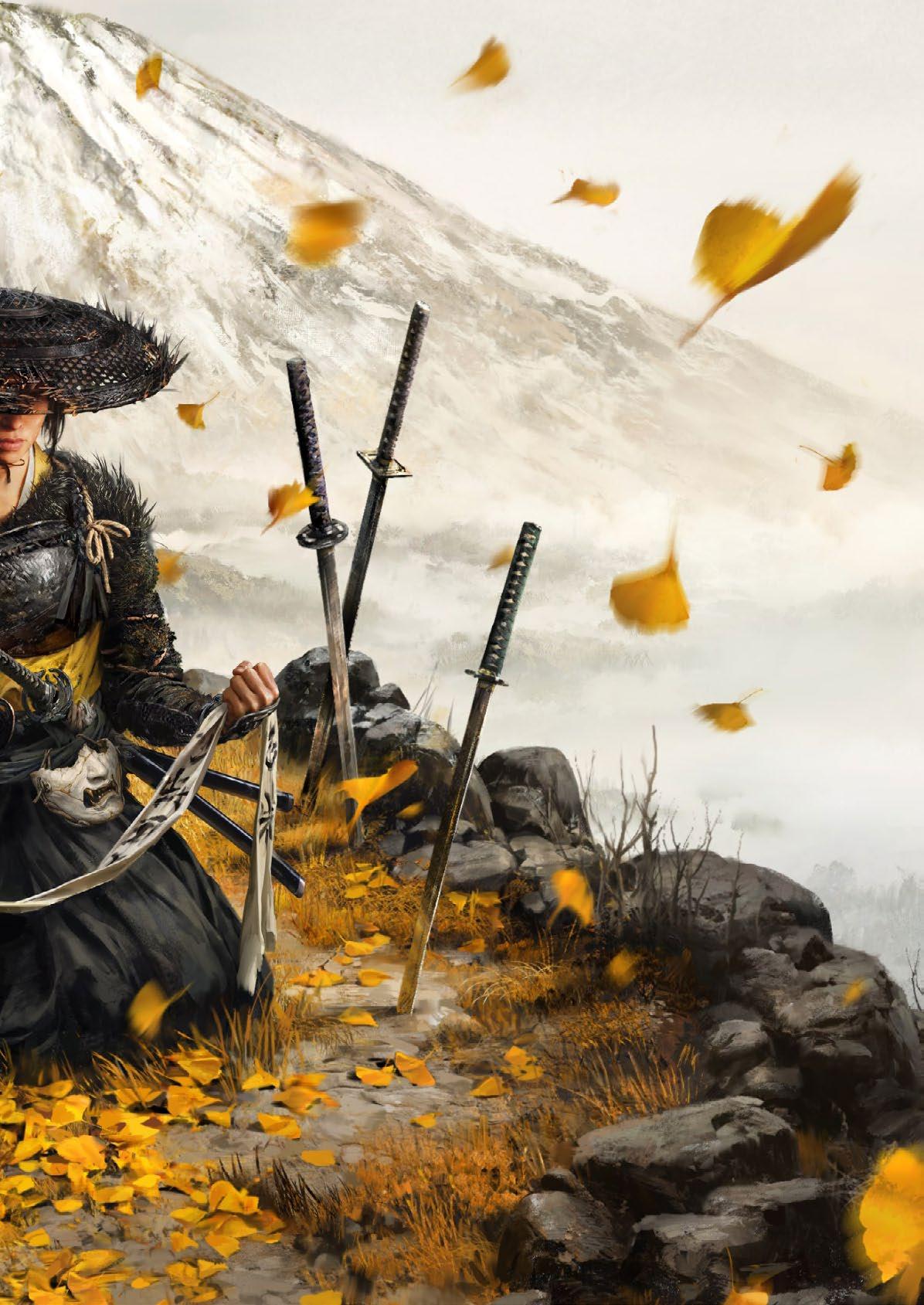




Metal Gear Solid Delta: Snake Eater on Xbox Series X represents Konami’s ambitious Unreal Engine 5 remake of the 2004 PlayStation 2 classic. Presented as an evolutionary leap, this reimagining rebuilds every element of Tselinoyarsk’s Soviet jungle, from the rustling underbrush to Snake’s iconic camouflage, while preserving the Cold War espionage drama that defined the original. With a price tag of £69.99, early adopters also receive the White Tuxedo uniform as a preorder bonus, adding a touch of style to this definitive edition.
From the instant Naked Snake wades through a misty riverbank, the world around him feels alive. Lush vegetation sways with realistic physics, dripping water beads on his fatigues and trickles off as he rolls through foliage, and distant wildlife flits just beyond the trees. Character models are rendered down to individual stitches and fabric frays, while volumetric fog and dynamic lighting lend scenes an almost cinematic sheen. Despite this visual fidelity, occasional texture pop-ins and clipping through dense geometry remind players that even the most powerful hardware must juggle ambition against practical limits.
The audio design in Snake Eater has been overhauled to match its graphical prowess. Every Codec transmission crackles with heightened clarity, and ambient noises, from distant artillery bark to the subtle chorus of jungle insects, are layered through a full 3D audio mix that envelops players in each stealth approach. Cynthia Harrell’s remastered “Snake Eater” theme returns in lush orchestration, underscoring key narrative beats with renewed
emotional resonance. A few rare sync hiccups during rapid scene changes momentarily break immersion but never undermine the game’s soundscape ambition.
At its core, Snake Eater retains the signature tension of its stealth systems, where lineof-sight, stamina monitoring, and realtime camouflage shifts force players into deliberate, patient play. The remake introduces modern control presets that smooth camera responsiveness and refine aiming, ensuring newcomers can dive in without frustration. Seasoned veterans, meanwhile, can switch to a classic control layout that mirrors the original’s timing and feel. These options strike an admirable balance between fidelity and accessibility, even if the underlying level design remains unchanged from 2004.
Survival mechanics remain a centrepiece of the experience, tasking players with hunting snakes, vultures, and boars to craft healing rations and combat raw stamina drains. Konami’s upgraded battle damage system now visually traces each bullet wound and bruised muscle on Snake’s body in real time, telling a unique story of each playthrough. While crafting menus can feel cumbersome in the heat of combat, seeing the scars of every firefight etched onto Snake’s uniform and flesh deepens the sense of personal investment and urgency.
Beyond the core 15-hour campaign, Delta: Snake Eater promises additional modes to
extend replay value. FOX HUNT, a competitive multiplayer mode, is slated for a Fall 2025 release, inviting players into high-tension hideand-seek matches. At launch, a whimsical Snake vs. Bomberman side mode pits Naked Snake against Bomberman in explosive arena skirmishes. These forthcomings and included extras aim to diversify the experience, though their lasting appeal will depend on balance and community engagement once they debut.
The remake faithfully replays Naked Snake’s mission to confront his mentor The Boss and thwart a nuclear superweapon, preserving every philosophical monologue and plot twist of the original. While cutscenes have been polished with modern camera angles and animations, no new narrative content or character backstory expansions have been added. This strict
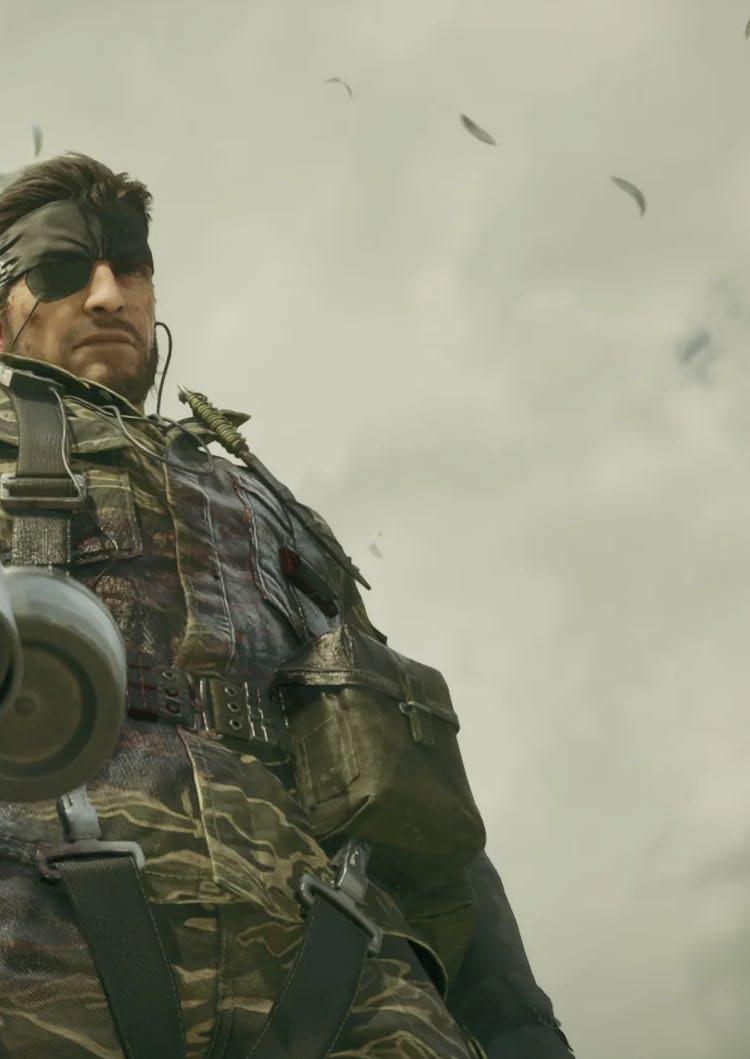
adherence means longtime fans will encounter every familiar beat, nostalgic and occasionally melodramatic, while newcomers may crave deeper context or fresh perspectives on this seminal storyline.
On Xbox Series X, Snake Eater targets a locked 60 FPS but experiences occasional dips in the most foliage-dense environments and during boss confrontations. Loading times are generally swift, yet brief texture pop-ins can occur when fast-travelling through the jungle. A handful of clipping issues emerge when Snake moves close to environmental geometry, and rare audio sync misalignments surface during rapid cutscenes. While none of these technical quirks derail the stealth gameplay, they underscore areas where additional polish would have elevated the presentation even further.


Metal Gear Solid Delta: Snake Eater on Xbox Series X stands as a stellar example of how to honour a gaming legend through modern technology. Its breathtaking visuals, immersive 3D audio, and meticulously faithful stealth-survival mechanics breathe new life into a classic. Yet the strict preservation of original content, without narrative expansions or additional campaign missions, and the presence of minor technical hiccups prevent it from feeling wholly revolutionary. For newcomers, this is arguably the definitive stealth-action experience; for veterans, a gorgeously refurbished journey that hits every familiar beat, for better and worse.
8/10
The audio in Metal Gear Solid Delta: Snake Eater earns an 8/10 thanks to its fully remastered 3D soundscape that immerses players from the moment Snake wades into the jungle. Codec transmissions crackle with renewed clarity, and Cynthia Harrell’s “Snake Eater” theme returns in lush orchestral splendor that underscores every emotional high point. Ambient effects—rustling leaves, distant artillery, and insect choruses—layer seamlessly to heighten tension during stealth approaches. Minor audio‐sync hiccups during rapid cutscenes keep it from perfection, but they’re infrequent enough that the overall sound design still stands as one of the game’s strongest pillars.
8/10
The visuals in Metal Gear Solid Delta: Snake Eater earn an 8/10 thanks to Unreal Engine 5’s breathtaking recreation of the Soviet jungle, where every leaf, droplet of water, and shaft of light feels meticulously crafted. Snake’s camouflage shifts organically as he crawls through lush underbrush, volumetric fog and dynamic weather effects heighten suspense, and character models capture subtle facial expressions and fabric details. Occasional texture pop-ins during rapid traversal and rare clipping in dense foliage prevent a perfect score, but these minor technical hiccups don’t detract from an otherwise stunning graphical showcase.
8/10
The playability in Metal Gear Solid Delta: Snake Eater earns an 8/10 thanks to its finely tuned control schemes and modern presets that strike a perfect balance between accessibility for newcomers and depth for series veterans. Real-time camouflage shifts and stamina management retain the original’s signature tension, while improved camera responsiveness and refined aiming remove outdated frustrations. Survival crafting feels rewarding as you track wildlife and improvise healing rations, though menu navigation can become cumbersome in the heat of combat. Level layouts and encounter designs remain faithful to 2004, which preserves nostalgia but limits innovation. Overall, these minor hiccups don’t overshadow a core gameplay loop that still delivers one of the stealth genre’s most engaging experiences.
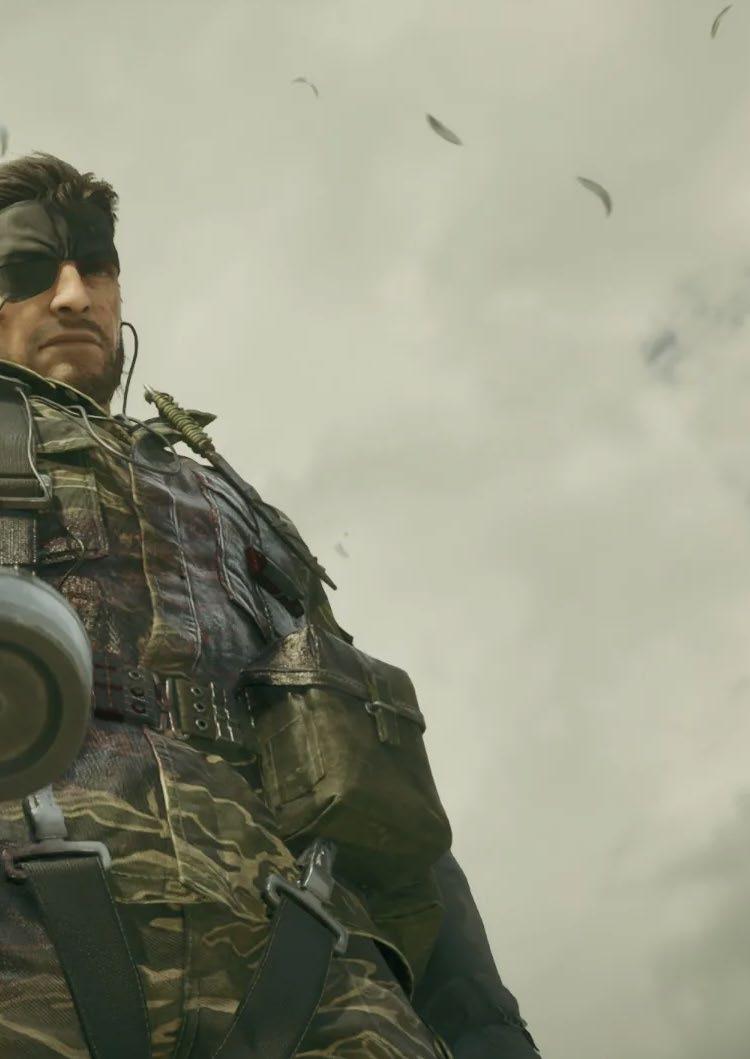
The overall delivery in Metal Gear Solid Delta: Snake Eater earns an 8/10 by seamlessly marrying nostalgic fidelity with modern polish. Stunning Unreal Engine 5 visuals and a 3D audio soundscape draw you into Tselinoyarsk’s jungle, while refined controls, stamina management, and survival crafting sharpen every stealth encounter. The faithful narrative pacing and remastered cutscenes retain the original’s emotional weight, even as the absence of new missions or expanded story content and a handful of technical hiccups keep it from perfection. Still, these minor drawbacks don’t overshadow a masterful, high-calibre stealth-action experience.
Version tested: Xbox Series X | Reviewed by: Brandon Sawyer



When Timmy Turner’s mischievous wish shoves SpongeBob, Jimmy Neutron, Danny Phantom and a host of other Nicktoons into a tabletop-inspired fantasy realm, chaos ensues. This unlikely party must chase down enchanted dice before an imminent apocalypse flattens both their world and ours. It’s a premise brimming with tongue-in-cheek humour and childhood nostalgia, perfectly primed for fans who’ve been dreaming of seeing their favourite cartoon heroes’ squad up one more time.
Combat unfolds like a bite-sized hack-and-slash festival: each character boasts four signature attacks—melee swings, ranged blasts, areaof-effect specials and one delightfully absurd move that screams cartoon logic. Progression leans on a shared experience pool that fuels a six-slot skill wheel, while randomized loot adds tiny stat tweaks and cosmetic flair. The simplicity of the ARPG framework keeps every encounter snappy, and generous respawns ensure you won’t lose momentum when a boss takes you by surprise.
At its core, Dice of Destiny is the perfect gateway ARPG for younger players. Intuitive controls, clear visual telegraphs and forgiving health bars mean even first-timers can bask in the thrill of levelling up without getting stuck.
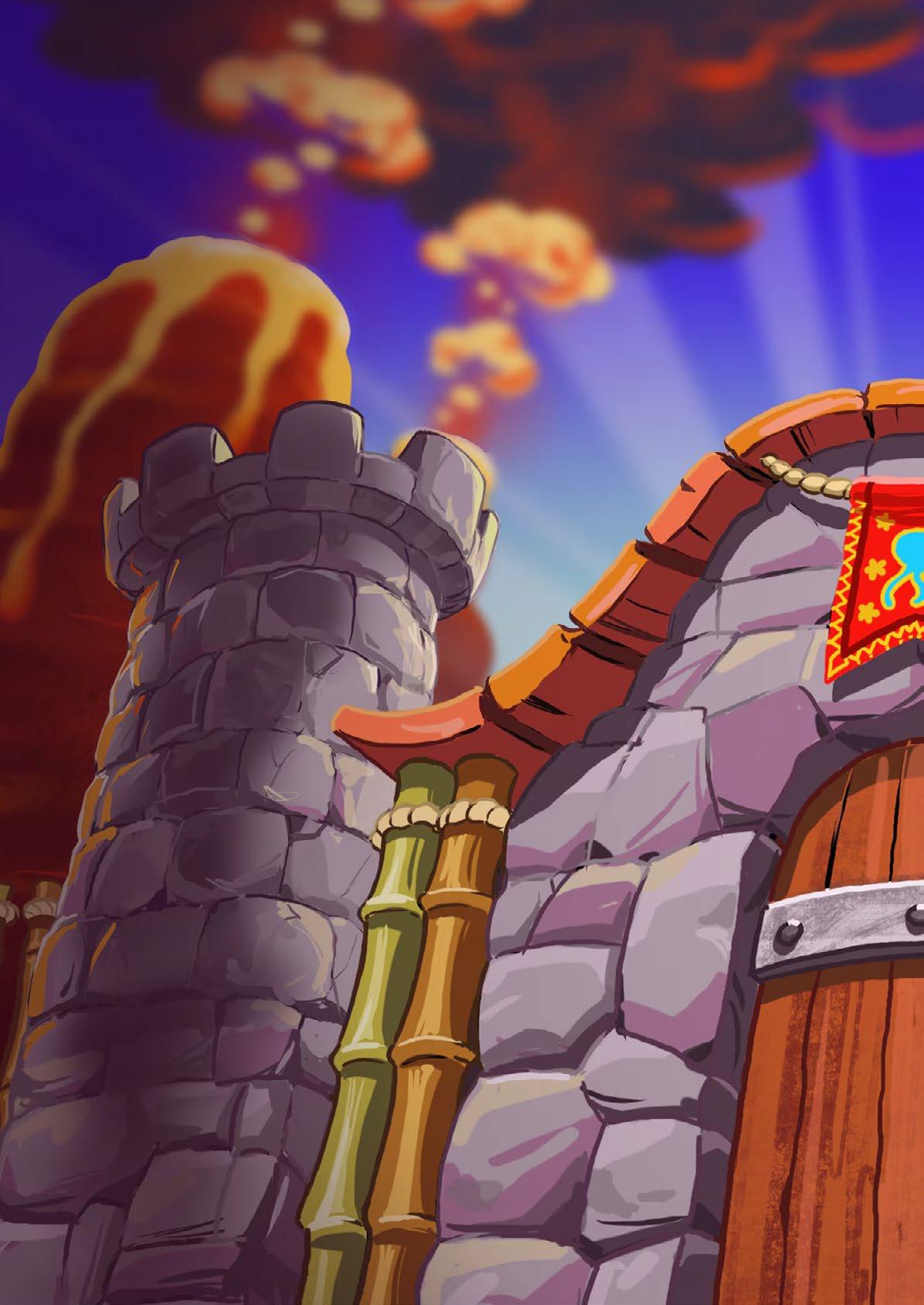
Nostalgia hunters will revel in the sight of classic villains reimagined as dungeon bosses, while groups of friends will find endless laughter in couch co-op, even if there’s no online matchmaking to bridge living rooms.
We spent hours swapping between Sandy Cheeks’ whirlwind hammer smashes and Jimmy Neutron’s rocket-powered gadgets. Main story dungeons fuelled the narrative momentum, but the real joy came from returning to the hub for timed combat trials and treasure hunts. Freeing Patrick from a slime-filled pit felt like winning the lottery, and watching Danny Phantom team up with Samurai Jack against a fire-breathing drake delivered pure, unfiltered cartoon spectacle.
There’s genuine delight in seeing cartoon cameos collide when Carl Wheezer’s faltering voice lines echo through a phantom realm, it genuinely tickles the funny bone. Yet the hub world’s side-quest roster leans heavily on busywork, and the loot you unearth rarely transforms your playstyle. Moments of character synergy—like Jimmy setting up gadgets for SpongeBob’s finishing blow shine brightly, but they’re too few and far between to carry the whole adventure.
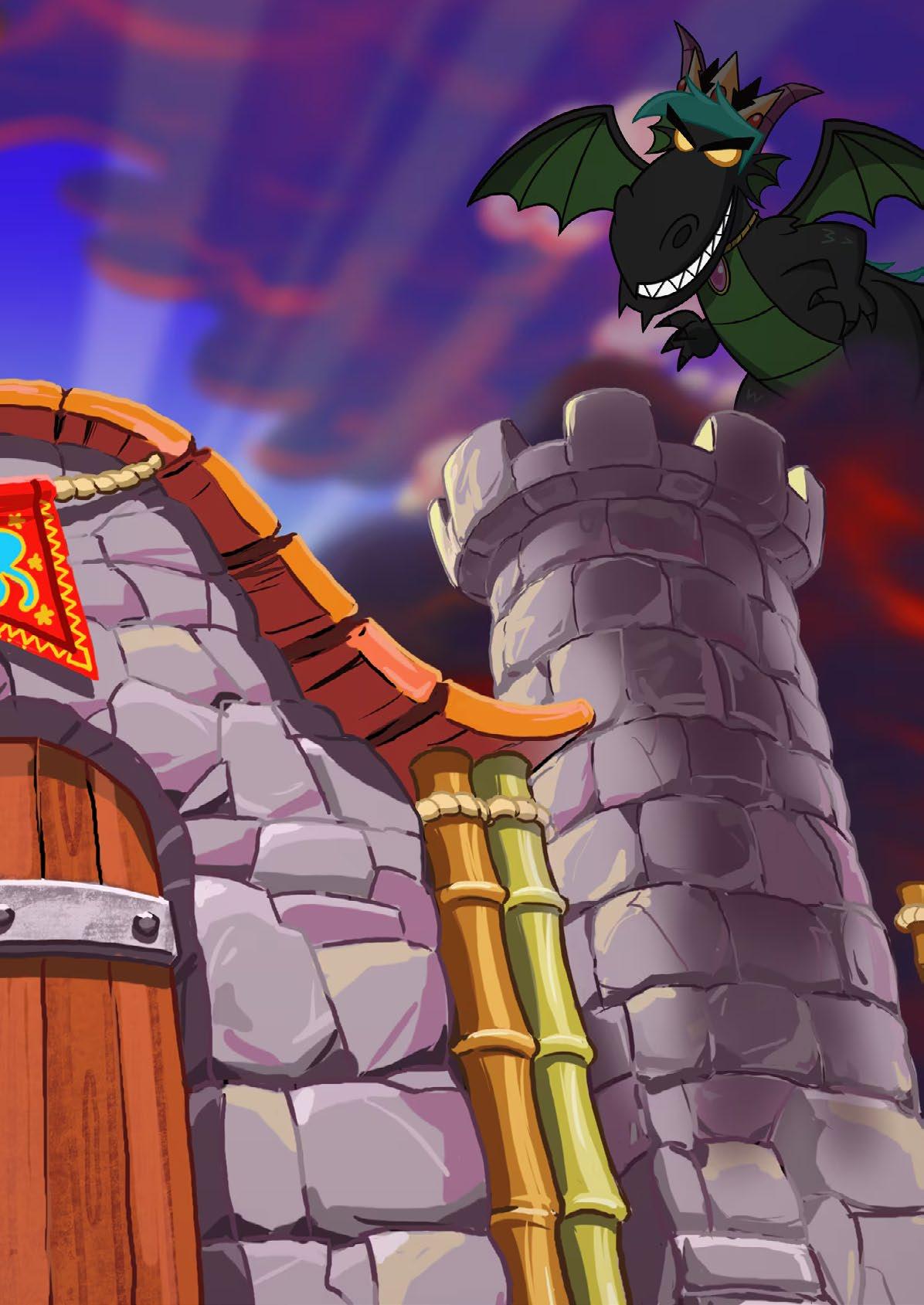


Nicktoons & The Dice of Destiny nails its ambition: delivering accessible ARPG combat wrapped in vibrant nostalgia and anarchic cartoon humour. It stumbles on thin side-content and a lightweight loot loop, but its heart is in the right place. For any Nicktoons aficionado or couch-co-op enthusiast, rolling these dice is well worth the adventure.
8/10
The Audio dazzles with a bouncy, cartoon-infused soundtrack and spot-on voice work for each Nicktoon, capturing every snarky quip and heroic shout. The sound effects land with delightful thwacks and swooshes that feel lifted straight from the shows, keeping the audio experience consistently fun.
7/10
Visually, the game pops with vibrant, cell-shaded worlds that evoke Saturday morning nostalgia, even if some backgrounds and props feel recycled. Character models are expressive and faithful to their origins, though the environmental variety could have pushed the palette further.
7/10
Playability is immediately accessible controls are tight, the difficulty curve is gentle on the easy settings, and couch co-op is an absolute blast. However, the shallow skill tree and modest loot upgrades temper long-term investment, leaving seasoned ARPG fans wanting more depth.
6/10
Delivery of the crossover concept nails the chaotic team-up fantasy, threading genuine nostalgia through clever dialogue and boss encounters. Yet the momentum falters when repetitive hub errands intrude, undermining the overall pacing just when it should peak
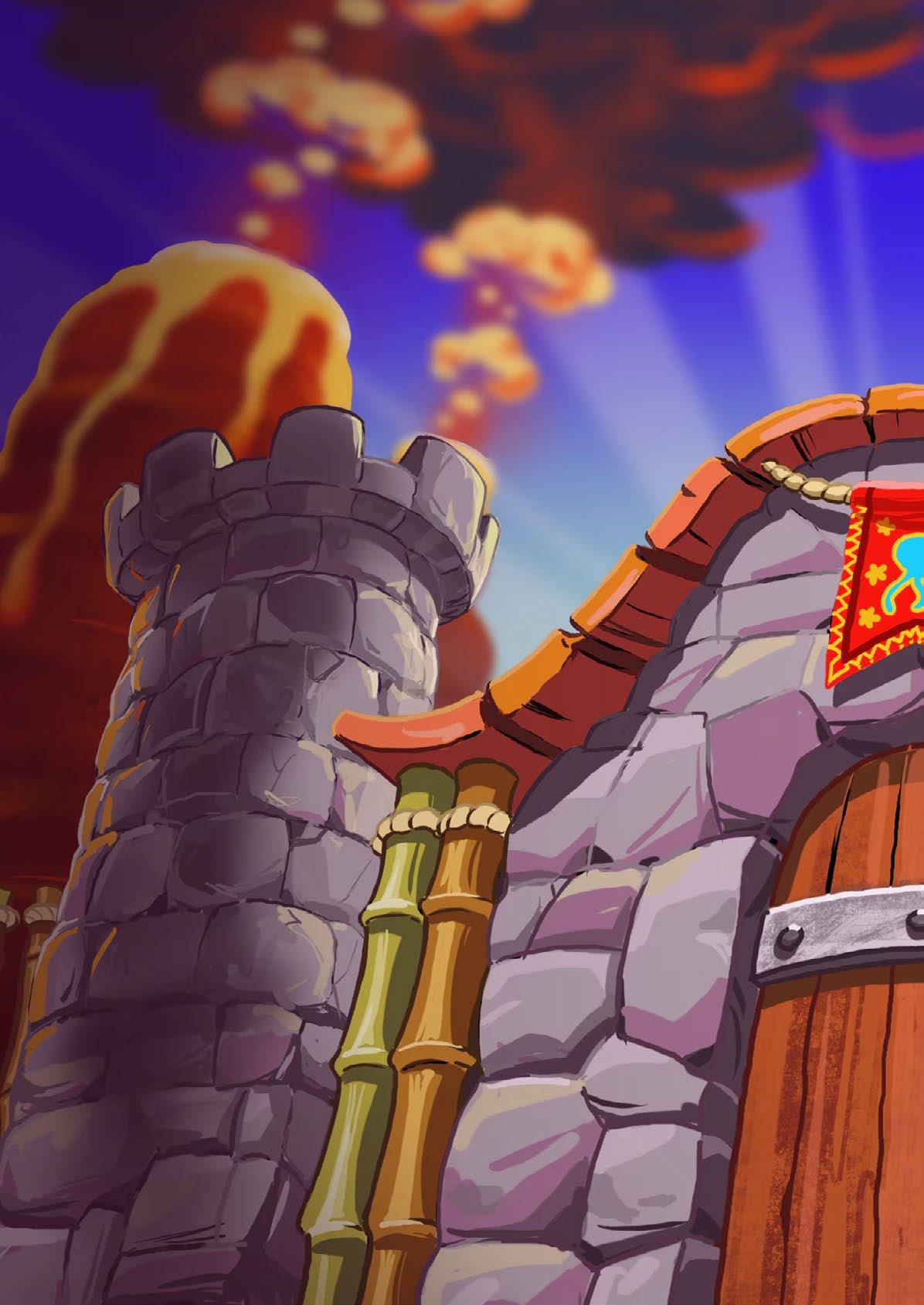
Version tested: Xbox Series X | Reviewed by: Brandon Sawyer


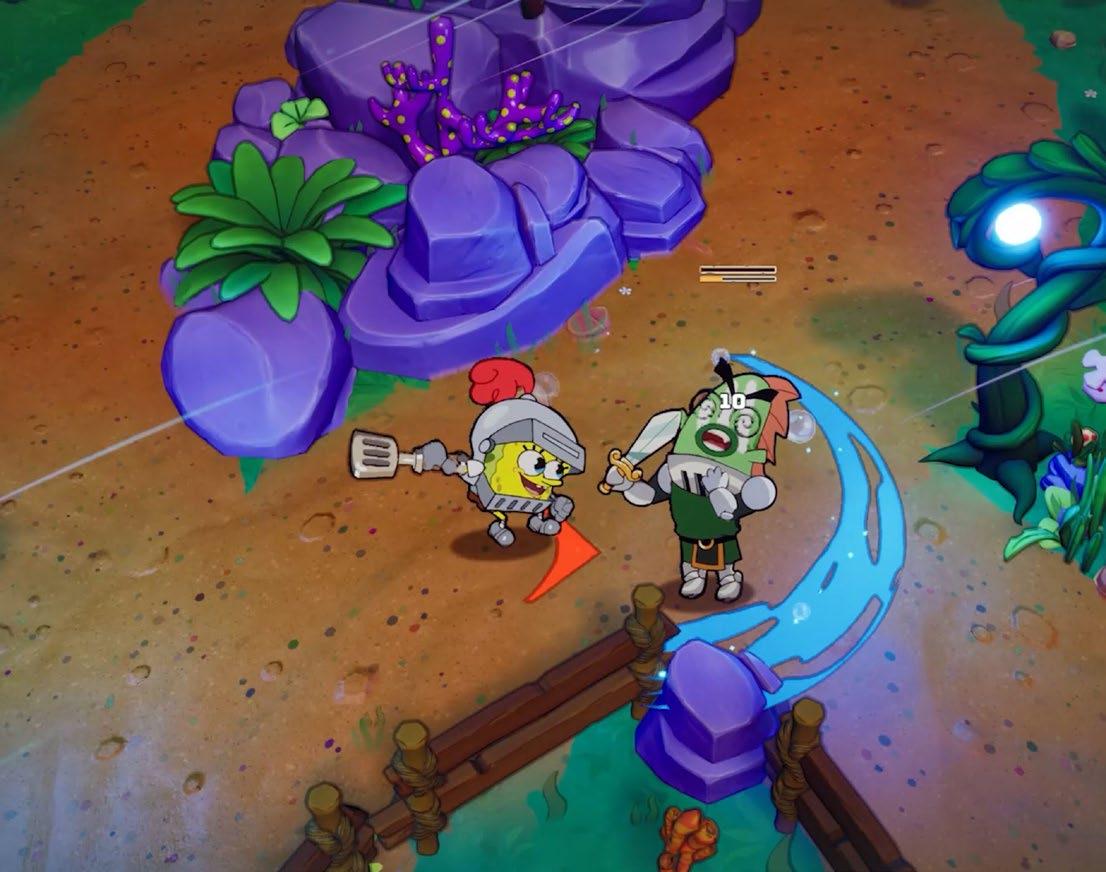

Immortal Edition takes a slice of game history, dresses it up for modern hardware, and reminds you why the original fusion of match-3 mechanics and RPG systems still clicks. After a deep playthrough on Xbox Series X the package feels like a definitive anthology: the core puzzles remain addictive, progression systems reward longterm thinking, and new quality-of-life touches smooth the edges without losing the original’s charm.
Dropping into Immortal Edition on Series X feels instant and familiar; menus snap, transitions are clean, and the UI scales crisply on a 4K set. My time spanned dozens of hours across campaign runs, arena clashes, and side quests, and the collection mentality — original game plus expansions and new content — keeps discovery feeling constant. The beginning hooks you with simple, pleasing loops and then steadily layers in deeper class choices, spells, and companion systems that make repeated runs worth the investment.
At its heart Puzzle Quest remains a brilliant choreography of risk and reward: match three to fill mana, cast spells, swing weapons, and turn a tidy board into a battlefield. The Immortal Edition brings modern polish to progression: clearer skill trees, more meaningful loot, and expanded class variety that affect both combat approach and puzzle strategy. Encounter design forces you to balance short-term board control with long-term character optimisation,
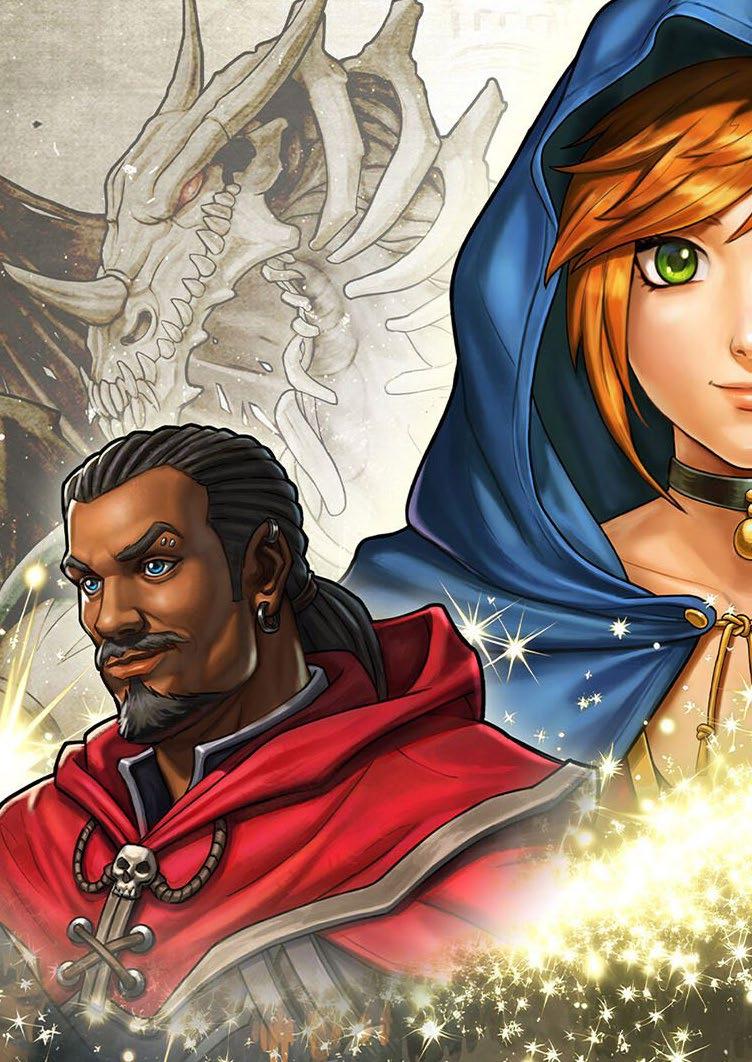
and the addition of new items and an exclusive class in this edition meaningfully alters playstyles rather than just tacking on numbers.
Immortal Edition combines the original narrative with nearly two decades of expansions, so the kingdom of Etheria unfolds with satisfying breadth. Main quests retain that pulp fantasy tone, companion banter lands with personality, and side content like citadel building and creature mounts adds comfortable meta-goals to chase between story beats. The writing isn’t aiming for high drama, but it delivers charm, predictable humour, and enough stakes to keep progression feeling purposeful. The anthology approach means pacing varies — some older quest modules feel slightly padded — but the vault of content rarely disappoints.
Matches are easy to learn and devilish to master. Newer enemies and boss boards introduce mechanics that reshape how you think about swaps: boards with locked tiles, shifting obstacles, and match punishments require planning and occasionally creative sacrifice. Spell combinations and synergies between equipment and class abilities reward experimentation, and the game does a good job of nudging players toward interesting builds without handholding every decision. Arena matches and rematches are compact, tense, and repeatedly satisfying.
Co-op, Competitive, and Community Modes
While Puzzle Quest is fundamentally a single-
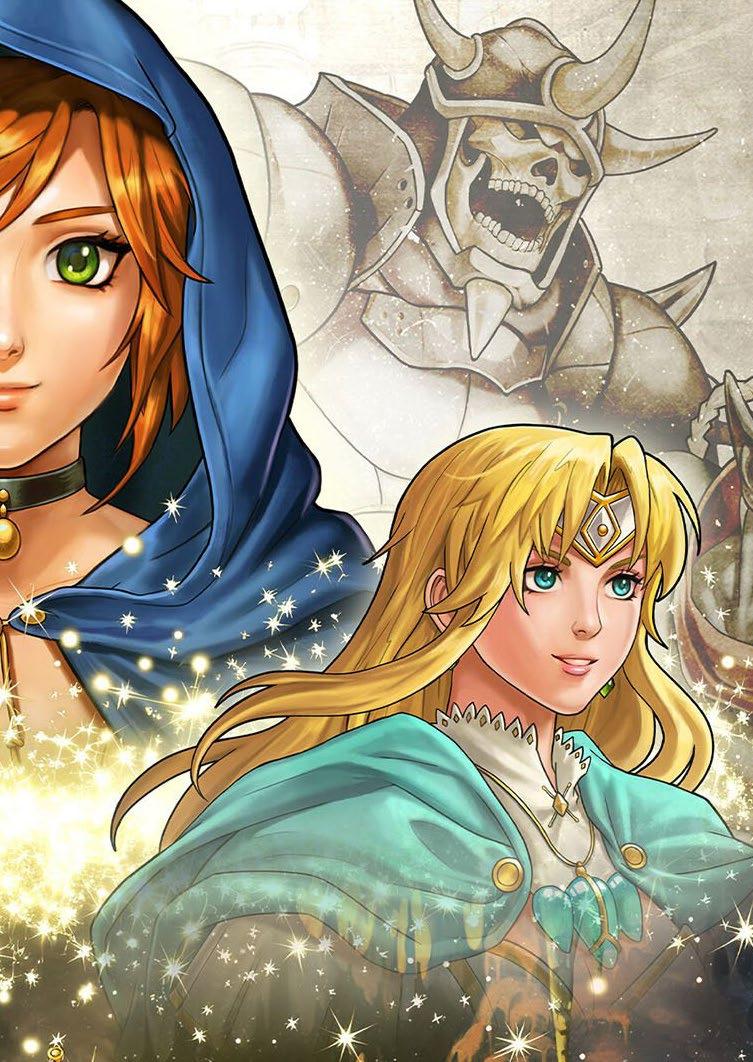
player RPG loop grafted onto match-3 battles, Immortal Edition leans into community features through leaderboards, asynchronous challenges, and improved matchmaking for PvP rematches. On Series X these systems are smooth and integration with Profiles and Achievements is seamless. If you want social competition, the game supplies it in measured, meaningful doses without disrupting the solo campaign experience.
Visually Immortal Edition is clean and purposeful. UI elements are crisp at 4K, particle effects for spells look sharp on the Series X’s output, and board animations are satisfyingly tactile. Performance is rock solid: instant resume, near-instant load times, and a consistently locked frame that gives matches a tactile, responsive feel. The art direction leans on updated illustrations and UI polish rather than sweeping remasters, which suits the game’s focus on readability and combat clarity.
The narrative scaffolding is earnest and serviceable, trading melodrama for steady pacing and frequent little rewards, new companions, revealed lore, and seasonal events that breathe life into the world. Emotional highs are modest; the game’s pleasures are systemic rather than cinematic. That said, character interactions and the progression of a custom hero through Etheria carry a surprising amount of personality across long campaigns.
Immortal Edition is not without quibbles. Legacy content reveals its age in places where pacing feels dated or rewards are light. The sheer volume of collected items and spells can overwhelm new players without a clear onboarding path, and while the new exclusive content adds value, it doesn’t always reinvent late-game loops. A few UI choices occasionally obscure deeper build synergies until you’ve committed to experimentation.


Puzzle Quest Immortal Edition on Xbox Series X is a respectful, well-executed anthology that modernises a classic without losing the addictive core that made the series memorable. It’s the best way to experience Puzzle Quest on a modern console: perfectly playable, deep enough to reward long campaigns, and polished to run beautifully on Series X hardware.
9/10
Audio in Immortal Edition is subtle but effective: clear, punchy effects for matching, satisfying spell cues that communicate impact, and atmospheric background tracks that shift between town bustle and dungeon tension. Voice snippets and companion lines are mixed well and help characters feel alive without dominating the puzzle focus. A few tracks loop a little obviously in longer sessions, but overall the sound design supports readability and mood, enhancing engagement during extended play.
8/10
Visually the game prioritises clarity and warmth. Boards are readable at a glance, particle and spell effects pop crisply on Series X 4K, and UI redesigns in this edition improve inventory and skill navigation. Art direction across menus and portrait work preserves the franchise’s identity while modernising presentation. Occasional legacy assets and modestly aged textures in older expansion chapters prevent a perfect mark, but technical polish and 4K clarity deliver a premium console experience.
9/10
Playability is outstanding: controller mapping on Series X feels natural, matches register instantly, and progression systems reward both short play sessions and deep campaigns. Difficulty curves and enemy design reward tactical thought and build diversity, while the game’s pacing supports both casual sessions and marathon runs. New players may need a little time to parse depth, but the comfortable responsiveness and meaningful decisions make playability a core strength.
8/10
Delivery on Xbox Series X is strong: small install footprint relative to modern titles, extremely fast load times, polished menus, and reliable trophy/achievement integration. The anthology release arrives with sensible patch support and clear notes, and post-launch content has been handled predictably. Some legacy content still shows rough edges in balancing and onboarding, which slightly reduces the delivery score, but overall launch and ongoing support are commendable.
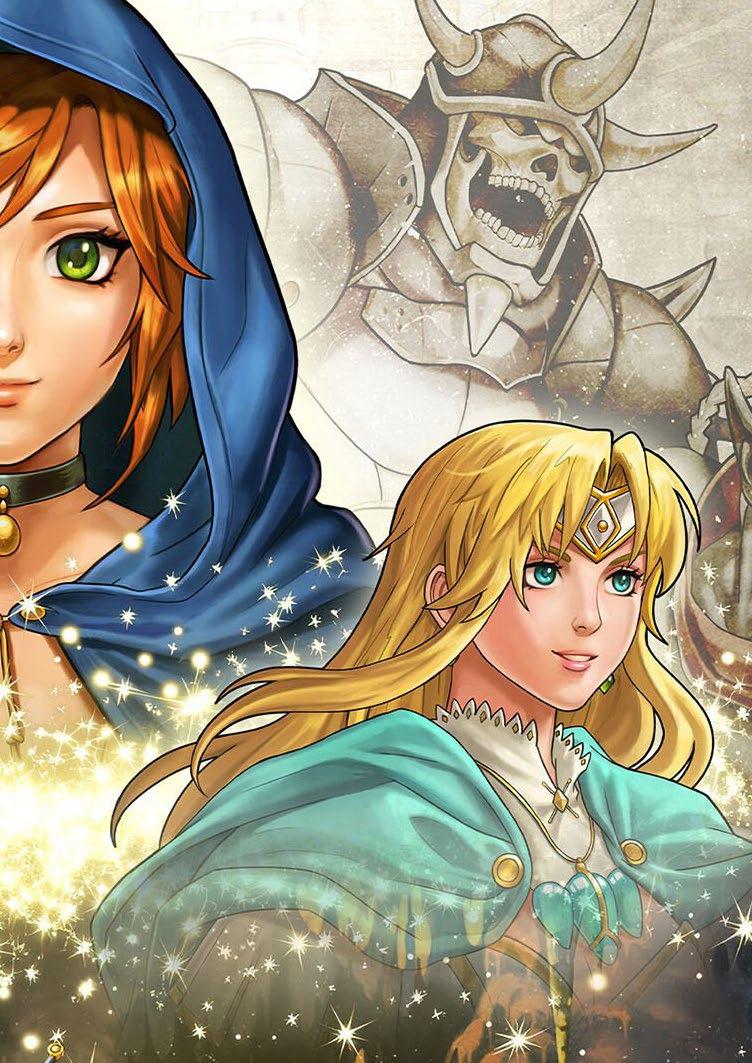
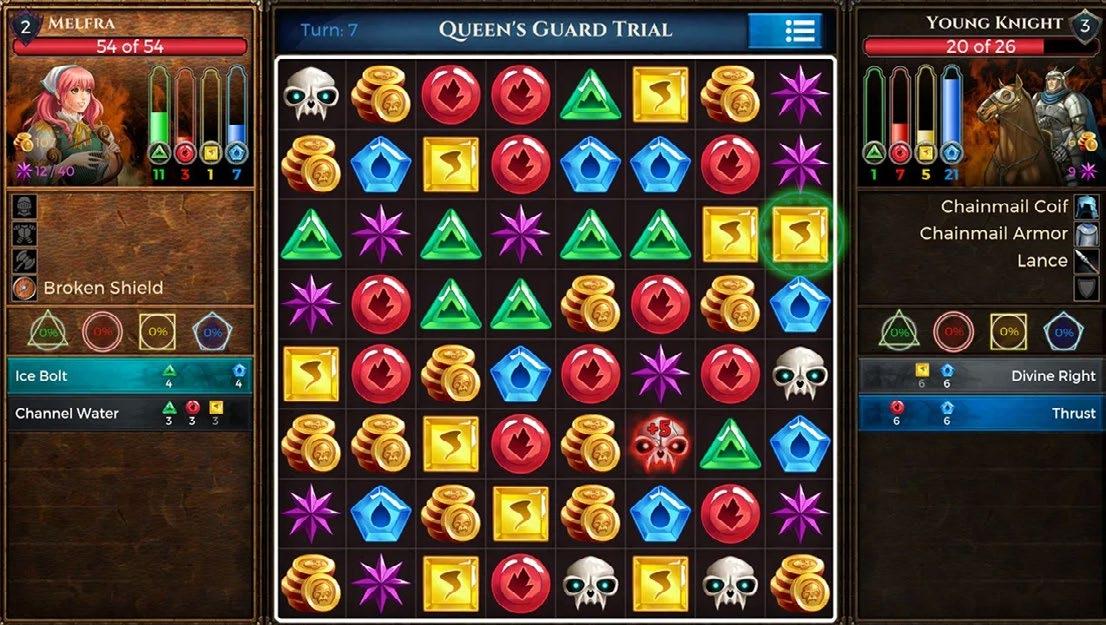
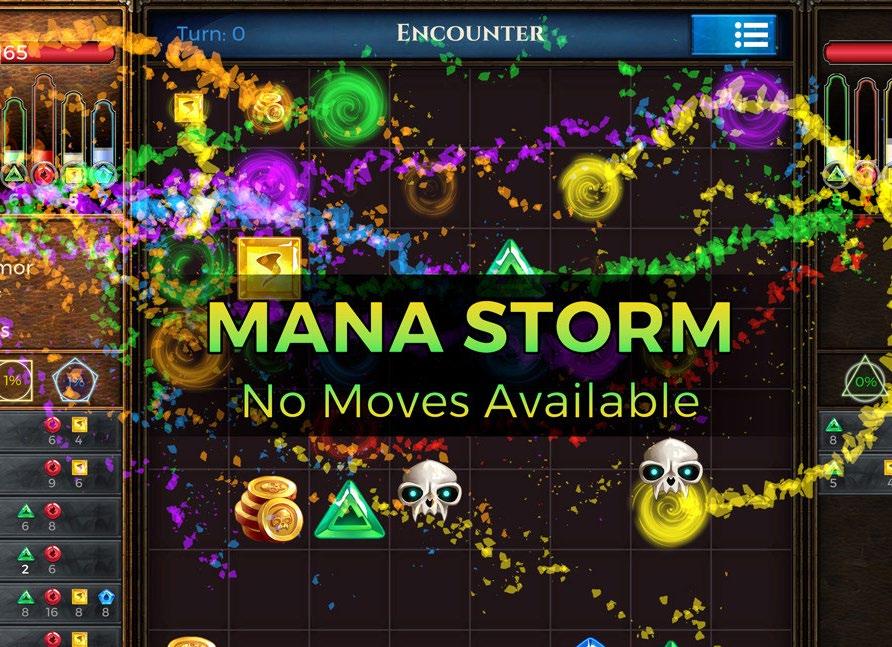
Huge thanks to Infinity Plus 2, 505 Games, Diva Agency and their amazing PR teams for the review code and the team for sending over some delicious cookies too, nice touch!

From the moment you tip off, vibrant cel-shaded arenas and exaggerated physics invite you to forget realism and embrace pure, unfiltered fun. Each match unfolds like a highlight reel, with rim-rocking dunks, gravity-defying rebounds, and lightning-fast possessions that keep your heart pounding and your thumbs itching for more.
Instead of navigating complex playbooks or memorizing sprawling controls, NBA Bounce hands you an intuitive scheme built for spectacle. Passing flows seamlessly as you thread through defenders, and charging your shot with a held tap unleashes satisfying arcs that snap back to earth with perfect bounce timing. When you barrel toward the paint, a dedicated dunk button lets you soar skyward for cartoon-style slams that send shockwaves through the stands. A dynamic combo meter tracks your dribbles, blocks, and no-look assists, rewarding you with style multipliers that light up the scoreboard in bursts of neon flair.
All 30 NBA teams are represented with authentic jerseys and arena designs, but the real stars here are the mascots. Each team’s lovable character takes centre court alongside your custom avatar, letting you blend official branding with over-the-top personality. You’ll unlock new cosmetics by stringing together
electric effects. This mash-up of real-world identity and fictional flair sparks endless creativity, ensuring every matchup delivers fresh visual surprises and laugh-out-loud chaos.
For casual jump-in sessions, Quick Match launches you straight into frenetic 2-on-2 faceoffs or solo challenges, while Practice Mode eases you into dribble drills and timing tests. Season Mode condenses a full NBA campaign into 20 high-octane games, pitting East versus West in a battle for the bounce trophy. Party Mode transforms your living room into a carnival of mini-games—think balloon-popping three-point contests and frantic mascot brawls. Finally, Tournament Mode crowns the ultimate bracket champion, unlocking secret courts and exclusive gear as you advance.
Every dunk triggers a slow-motion flourish, camera angles pivot to dramatize mid-air collisions, and neon lights ripple across the court like an electro-symphony. The soundtrack fuses hip-hop beats with pumped-up announcer calls that react dynamically to your biggest plays. Crowd energy surges from polite claps to full-throated chants led by mascots brandishing giant foam fingers. It’s a sensory feast that amplifies the arcade experience, making each fast break and buzzer-beater feel like the climax of an action movie.





NBA Bounce rewards anyone craving the rush of arcade basketball without the barrier of simulation. It’s simple yet deep mechanics, mascot-charged rosters, and varied modes promise hours of unpredictable mayhem. While fans of traditional sims might miss licensed superstars, the game’s vibrant personality and replay hooks more than compensate. With a few added online features like ranked matchmaking or seasonal events this title could skyrocket into a perennial party favourite.
Audio drives the arcade energy with a pulsing hip-hop soundtrack, reactive announcer hype that peaks with every fast break, and crisp ball-bounce SFX that land with satisfying thumps. Background crowd noise swells or recedes based on your highlight plays, reinforcing the thrill of each momentum swing. Together, these elements create an immersive soundscape that keeps you locked in. play.
Visuals in NBA Bounce explode with neon-infused courts, cel-shaded mascots, and dynamic camera angles that dramatize every rim-shaking dunk. Slow-motion flourishes accentuate mid-air collisions, while vibrant crowd animations shift from polite cheers to full-throated mascot chants. The game’s art direction transforms each matchup into a living cartoon, making every bounce feel electrifying.
Playability shines through intuitive controls and a combo-driven scoring system that rewards creativity. Passing, charging shots, and executing dunks are all mapped to simple taps and holds, so you spend less time fumbling and more time stringing together style-boosting plays. Whether you’re a casual jumper or a seasoned arcade veteran, the mechanics strike a perfect balance between accessibility and depth.
Delivery balances a streamlined season run, chaotic party modes, and a host of unlockable cosmetics that sustain long-term engagement. Season Mode’s condensed 20-game journey keeps things brisk, while Party and Tournament modes inject unpredictable mini-game chaos. Cosmetic rewards for flashy plays and bracket victories ensure there’s always something new to chase, even if sim purists might miss real-player licenses.
Version tested: Xbox Series X | Reviewed by: Brandon Sawyer






From the moment CeltBrenny goes live, you know you’re in for more than just gameplay, you’re stepping into a space where banter flows as easily as the headshots land, and where every viewer feels like part of the squad. Whether he’s clutching a last-second win, diving into a brand-new release, or just hanging out with chat, his streams are a mix of skill, humour, and genuine connection.
At the heart of it all is the Brenny Brigade, his ever-growing Discord community that’s as lively offstream as it is during broadcasts. Here, friendships form over late-night game sessions, inside jokes become legend, and everyone, from first-time lurkers to long-time regulars, has a seat at the table.
We sat down with CeltBrenny to talk about the grind and the glory of streaming, the games that shaped his channel, and the community that’s become his second home. From behind-the-scenes prep to the future of the Brigade, here’s what he had to say.
What first inspired you to start streaming, and how has your style evolved since your early days?
Honestly, I started as a viewer watching content to make a choice whether I should buy games or not as well as watching a lot on the 2nd monitor whilst playing similar games myself wanting to get involved with people online. I joined a bunch of mates, and we started something off called Strictly Average Gaming (SAG) which was just a bunch of mates that played games / collaborated and hung out in a Discord server. In 2019 when I started it was very inconsistent with streaming then but the boom in streaming and spare time allowed me to have a daily routine of speaking to people online and playing games which became my lifeblood still to this day. When life resumed most people disbanded and went back to normal life with a few others who I still speak to focused on a certain game / genre, but I wanted to try and fly the flag of something community based for everyone not just the streamers. I was guilty of trying to chase trends / analytics in my journey to want to become a streamer, but I was never happy and realised that I should be happy with the corner of the internet I have been given and make something out of it which became my main focus rather than most streamers goals and aspirations.
How would you describe the “CeltBrenny” brand to someone who’s never seen your content before?
don’t sell myself too well here, but everything is average! There is no competitive / e-sports type of content you most likely see where
everything must be the best of the best. I rather have an atmosphere where people come and hang, wind down after a long day and just talk about games and hobbies. People like to crack jokes and rip into each other, but it’s all done out of love and banter.
Can you walk us through your typical stream setup, from tech to prep rituals and how you keep the energy high for your audience?
Fitting in with the average theme I like to fly the flag of you don’t need anything flash, 4 monitors and all the streamer tech with silly little add-ons. I have a prebuild from all the way back from Black Friday sales in 2019 that streams for me and most my gaming is done via console and capture cards as most audience members are console and the entry level is a lot lower just to fly the flag of anyone can do it and you don’t need to break the bank for it.
Rituals wise depending on the game in question I either spend 15 mins alone listening to music to prepare or if it’s a group effort with the discord members I will just roll call and have a laugh with them before we click live.
Do you approach streaming differently depending on whether you’re playing a competitive title, a story-driven game, or doing a community hangout?
Everything is the same and I get a lot of responses off the chat for it whether it’s them calling me out for being rubbish or sound alerts to distract me. I do like to try a little more with competitive stuff, but I am sure if you sat down with them, they would roast me for it!

What’s been your most memorable on-stream moment so far, and why did it resonate with you and your viewers?
There's a handful that come to mind but mostly I enjoy our Football manager streams when we want to wind down. We have made a fictional manager called Joris Bohnson who knows nothing but hoofing it up the front. All staff members in the game are named after community members, so they all have a role to fill and they love to rib each other when something goes wrong. It makes it even funnier because half the chat doesn’t know a thing about football so fits in when we make our scouts someone who is clueless.
Which games have been the backbone of your channel, and what draws you to them?
So before streaming I was that guy who played nothing but the same 4 games and a heavy addiction to RuneScape, so I missed a lot of great titles over 10+ years, so I created something called the Brenny Backlog which forced me to play games that I have missed or just never heard of. I play everything on original hardware and have been known to buy older consoles / games and add them to a neverending Google Sheet. As well as this I do try to play some newer titles / franchises I have been passionate about in between to keep content fresh and different.
How do you decide which new games to feature, is it based on personal hype, community requests, or strategic growth?
So, this is the cool thing and something I really enjoy is the chat to decide the games to be played. I tend to buy games on sale or from carboot sales / preowned stores and add to the options of games they can pick. Every 45 minutes in my chat you can use a command to redeem a ticket and the more tickets you have the better odds you have at winning which gives an incentive to stick around. Once we finish the last stream of the week it all goes in a wheel to pick a winner, and they get the weekend to look at the list and pick something for the next couple of weeks. We have had some real bangers over the numerous months as well as a few games no one has even seen gameplay or heard of. We have had a few movie titles
picked and in return we sometimes host a movie night in the Discord just to create a nice environment and get people excited for the games.
Are there any underrated titles you’ve streamed that you think deserve way more attention?
Not so much underrated but the Yakuza franchise has become a major talking point in my streams, and a few games have made us cry with us reliving moments through clips and sound redemptions of funny moments / interactions even when we are playing something completely different.
How do you balance playing trending games with sticking to your personal favourites?
I tend to rotate my schedule and roll the raffle week out so I can play a game of my choice or something that the community can join in, but I will have a hard time over the next few months as there’s a lot of great titles coming out and little time to play it. I also play a short amount offline so if there’s a backlog game that needs a few side quests I chip away at that or relax with something in my rotation.
Have you ever had a game completely surprise you, either by being way better or way worse than expected, during a stream?
Personally, my head has fallen off a few times with games that have pushed my limits or been a little tricky to understand mechanics when playing for the first few streams after a long day at work. It can be frustrating, but Ninja Gaiden and Ghost runner have stood out to me, and you tend to feel a little like Neo in the Matrix when everything just clicks into place and gives you a real nice sense of accomplishment.
What was your vision when you first created the Brenny Brigade, and how has it grown since then?
Relating back to SAG and the Discord we had back in 2019 it’s always been something I wanted to have and a sanctuary for people to discuss gaming news and be a bit more parasocial than most. It can be tricky as a streamer to grow and even more so when you happen to be watched when playing a certain game and think it’s all you stream / talk about.






So, the Discord naturally has grown with the idea of watching me play the backlog and sharing news about anything and everything.
How do you keep the Discord active and welcoming, especially for new members who might be shy?
I pass this onto the amazing regulars and mod team that keep things afloat and always like to be vocal and welcoming to make sure everyone is included regardless of how long you have been around the community for.
Are there any unique traditions, inside jokes, or community events that have become part of the Brenny Brigade’s identity?
Plenty of inside jokes that just occur with dayto-day conversations in the Discord, Stickers to say good morning, sound bites from streams or just mocking of my common Wigan accent and of course my beloved Black Cat Bluebell that is the stream mascot and ties in with the Brenny Brigade / BB acronym.
How do you handle moderation and maintain a positive vibe while still allowing for open conversation?
A great mod team with an understanding for certain situations and still being welcoming and engaging with new members. We sometimes sit in a voice channel and welcome anyone to come in and have a chat or even just sit in silence and kind of podcast along whilst playing games. I feel this is important because most streamers kind of just disappear after a stream and make the interaction a little more human and a chance for me to thank others for spending time
Can you share a moment where the Brenny Brigade really came together to support you or another member?
Every day is a moment as cliché as it sounds with people making effort to wish them a good morning, take interests in their day / hobbies and news articles and helping others who stream in the Discord but if I was to pick an individual one is when we do fundraisers for charities to help others in need and they really rally together to push a great environment.
How do you make sure your viewers feel like part of the stream rather than just spectators?
Being myself as would in real life and not putting on some amped up novelty act whilst realising it’s more about them than it is about me. The game is the main driving factor. I just happen to be the face on screen; I will always talk to chat over the game which sometimes I get in trouble for because I aren’t taking a serious part of a game or miss instructions on how to play.
Do you have regular community nights, tournaments, or collaborative projects?
I try to do as much as I can with the members involved and realise that life is super busy so try and do at least 1 a month that everyone is involved or have some sort of interaction in the Discord like a movie night or allowing others to stream and share their gameplay / interests.
How do you encourage interaction between your Twitch/YouTube audience and your Discord members?
With interaction a lot of it is organic and comes back down to the members who push the mantra and make sure chat both in and out the streams are the same regardless of if I am online or not.
Have you noticed your community influencing the type of content you create?
They are the main driving force and the reason I do the content I do and have helped me over the years to kind of find my corner of the internet. I was very much a cliché streamer trying to ‘main’ a game or hop on a steam party game trend because of its content, but it just gets lost in the abyss.
What’s the most creative or unexpected thing a fan has done for you or the community?
A collaborative effort from the mod teams and members to create regular chances for the community to just hang out and sail the ship whilst I am offline doing adulting without feeling guilty of not being as interactive. It means a lot when I know I can have some downtime over a weekend if I am either busy or just wanting to recharge and know that everyone is chatting
/ playing games together and having a good time.
What’s been the biggest challenge in growing your channel and community, and how did you overcome it?
Chasing numbers and analytics in the start of my streaming career was the hardest thing because I would do things for the sake of it and it felt very hollow and soulless and has impacted me by taking breaks. Since turning the number off, doing things because I want to do it and not because it’s the next biggest thing! The hardest part of my streams and content is I will be playing games that aren’t active in views or popular. For example I was the only person playing a game like Italian Job on the PS2 or Cars 3 on the Xbox 360 but that’s what makes me, me.
How do you measure success, is it numbers, engagement, personal satisfaction, or something else?
Success to me is knowing every time you end the stream you’ve had a laugh, helped others, enjoyed the games you’ve played and use it as a little therapy session to wind down with chatters.
Are there any collaborations or projects you’re excited about in the near future?
I am part of the Twitch Manchester team with a few other members who put on a little networking shindig for Twitch streamers a couple times a year. Rather than collaborating on stream I much prefer being hands on and enjoy helping out with other people’s success and being that middle person to put relationships together. The team likes to put on tournaments, Indie Devs get involved and sometimes we have others that lend a hand with prizes / sponsors to make these grassroot ventures very fun to organise and be a part of.
If you could give one piece of advice to someone starting their own stream and community, what would it be?
Do it for the right reasons, being aware that streaming can be a tricky saturated space to traverse but once you are kind to yourself and realise your worth that it’s the community that
are the main driving force. Things take time and do content you enjoy rather than forcing content because you have a passion for it and it will show in your work.
Where do you see CeltBrenny and the Brenny Brigade in the next 2–3 years?
In the next 2–3 years, I see us continuing to grow a supportive community where people can laugh, share, and belong. My hope is that as we grow, we’ll keep that same welcoming vibe while expanding into bigger streams, maybe even live events or charity projects. At the end of the day, I want the Brenny Brigade to feel like a family and safe space that’s along for the whole journey, wherever it takes us.
As our chat wrapped up, it was clear that CeltBrenny’s success isn’t just about skill with a controller or a knack for picking the right games, it’s about the way he makes people feel welcome, seen, and part of something bigger. The Brenny Brigade isn’t just a Discord server; it’s a living, breathing extension of his streams, a place where the laughs are loud, the games are many, and the friendships are real.
With big plans on the horizon and a community that’s got his back, CeltBrenny’s next chapter looks set to be his most exciting yet. Whether you’re tuning in for the gameplay, the camaraderie, or just to see what chaos unfolds next, one thing’s for sure, the Brigade is only getting stronger.
If you too want to check out CeltBrenny or tune into his stream, then you can find all his socials below. Twitch: @celtbrenny

YouTube: @celtbrenny





There’s a certain magic to AtomicMoonchild’s streams, the kind that makes you feel like you’ve stumbled into a late-night gaming session with a friend who just happens to have a knack for storytelling, a sharp sense of humour, and a deep love for the worlds they explore. Whether it’s diving into sprawling RPGs, testing the limits of indie gems, or sharing candid thoughts on the latest releases, AtomicMoonchild blends gameplay with genuine connection.
Beyond the stream, their community thrives in a welcoming Discord hub where players swap tips, share fan art, and rally around shared passions. It’s a space where newcomers are greeted like old friends, and where the conversation flows long after the stream ends. We sat down with AtomicMoonchild to talk about their creative process, the games that inspire them, and the community that’s become the heart of their content.
What first inspired you to start your channel, and how did you choose your name?
I originally started out with my Xbox gamertag as my live-streaming channel (Mixer and Twitch back then), this was SamboJay28. I slowly learnt the valuable lesson of needing a good internet connection to stream effectively so I put streaming on hold for a few years.
When I eventually started back up streaming again I decided to change my name which was GamingWithMoonchild. I had recently gone through an extreme autistic burn out (at the time I thought it was a mental breakdown but after seeking diagnosis, I became aware it was related to the autism and masking for many years). This burn out was caused by being badly bullied, financially strained and working 100+ work weeks for a career I had fallen out of love with, my mask came off and my world crumbled. I lost a lot of confidence but I never lost my love of gaming, capturing funny moments and enjoying the gaming content world. Stepping into streaming again gave me a reason to seek fun and find other like minded people to enjoy gaming with.
GamingWithMoonchild is the name my content grew with at first but I always used to feel uncomfortable with the full name. I noticed it being a mouthful when I’d interact with others (like when they would read my name in chat etc) so decided to rebrand to a name that

reflects my personality better and be less of a mouthful for others, thus AtomicMoonchild was born and my identity felt solidified. I now feel comfortable with my name and content, I still struggle with confidence but I move in directions to improve this every day.
How would you describe your streaming style to someone who’s never tuned in before?
Ever seen that gif of a chaotic office where something is on fire, everyone is going crazy and someone is riding an ostrich? That is the best way I can describe my streaming style! I am a very open book, a kind of what you see is what you get deal! I love chatting with people, having a laugh, sharing wins, comforting sadness, giving beef and all of the above with each person who stops by and chats to me! I like to say I’m a Heinz variety in terms of content, I like to switch it up and rarely play the same game often. I do a lot of charity fundraising and just enjoy doing something I love but also that helps many great causes! I used to raise money at IRL events/hold my own fundraisers with afternoon teas so taking it to the streaming world was a lot of fun!
Can you walk us through your typical stream setup, from the tech you use to how you prepare mentally before going live?
My stream set up rarely changes. I use my PC (RTX4060 RYZEN 5 5500), Elgato Facecam,

Elgato Key Light Neo, Elgato Stream Deck, HyperX Quadcast mic. The things I switch up are to my Logitech camera for art streams, Elgato Game Capture HD60 X if using Xbox. I am mainly a controller player and use a Turtle Beach Recon R controller. If I have to use a mouse and keyboard I use the Steelseries Apex Pro TKL Mechanical Keyboard and a Logitech G502 Hero mouse.
I have a weird sort of stage fright and anxiety when going live which comes from a lack of confidence that I’m building on slowly so I have to ensure I’m in a good place to stream before anything. I will generally get my title and stream management sorted first, maybe my go live message ready too for posting then I will get ready for stream (sometimes make up, sometimes not depending on my sensory needs that day). Once I’m in a place where I feel happy enough, I hit that go live message and enjoy the ride!
What’s been some of your best moments or achievements with your channel?
My greatest achievement is probably the fundraising I do across many charities, I love being able to spread the word of their amazing causes and hopefully raise some money for them whilst doing it.
Another achievement I’m proud of is being part of the Wired Production Creator Collective, they publish some incredible games and being a part of that and their stream team is truly an honour. In terms of partnerships and ambassador programs, I am also proudly a member of the Sneak (Energy Drink) Legion and a Riot E-Liquid Ambassador.
Being a part of the content creation world has propelled me into working with some amazing people. I help organise a Twitch powered event called MCR MeetUps, we’ve seen some fantastic events over the past year and I’m so proud to have been a part of them as well as to see us grow bigger and better over time. I am a proud caster and co-host for Streamseed, a great company that gets involved all over the content creation world from events and podcasts to apps and stage shows. I am also very pleased to have been invited to many events over the past 3 years as a content
creator, most recently being Timeless Gaming Convention where yourselves presented me with an award for selling the most tickets (thank you so much for that, it made the entire event for me). My newest achievements are being accepted into the Women’s and Pride Twitch Unity Guilds. I'm privileged to be amongst some legendary people who stand, support and love minority groups in streaming. So proud to represent!
Which games have been the pillars of your channel, and what makes them special to you?
My core games in terms of favourites are Fallout 76, Fallout 4, Bioshock (all), Gears of War (all), Borderlands (all) and Cyberpunk. I have a deep love for these games, the stories, the characters, the gameplay. That being said, I don’t have a regular game that I stream or have as a pillar for my channel. I love to explore a lot of indie games, especially cat games and/ or horror. I tend to stream to how I feel and the game I choose to play reflects that.
How do you decide which new titles to feature, is it based on personal interest, community requests, or industry trends?
I choose the games I would enjoy to play. I like to enjoy myself when streaming as part of building my confidence, if I’m comfortable and relaxed then I will realise I’ve nothing to be anxious about. Choosing games I know I will like and enjoy (by description, reviews etc), I know will make for a fun stream in my eyes. I hang out with people in my community almost daily so we also often discuss newly released games too so I get to hear about some gems from them.
Are there any hidden gem games you’ve streamed that you think deserve more recognition?
Copy Cat, I will never forget playing this game EVER. I blubbered like a fish, the whole game was just beautiful! I highly recommend this game for cat lovers and story lovers. No spoilers, just worth checking out!
Tell us about your Discord community, what’s the vibe, and how did it start?
My Discord community is called The Biscuit







Tin. As we like to say, we’re just a bunch of mates that like to hang out. The Discord server is very relaxed, VC is active pretty much everyday where people hang out, game together, game alongside each other, watch things together, listen to music etc etc. A lot of us get together IRL a lot, especially at gaming events and we really are just a very good group of friends that love and support each other.
The Biscuit Tin started from originally being a regular Xbox Party Chat I would do, where a few of us would hang out. When I started PC gaming and discovered Discord and the features they provide, there was no looking back. Discord allowed me and my partner to create a space where we’d be safe to play and watch things together, where we could have like minded friends to join us - very similar to when I used to have people around my house and would cook them tea, we’d watch a film or couch co-op, only online. It creates a space for people who want company and people to chill with.
Are there any unique traditions, events, or inside jokes that have become part of your community’s identity?
Where do I start, there is a whole iceberg of Biscuit traditions and inside jokes. Most come from my funny verbal stims, some from others and something they’ve done. We’re very goofy people so we manage to make the mundane funny so you can imagine the plethora of jokes knocking about.
Stream traditions could include the infamous Boris Adventures, where we all go into VR Chat with a Boris Joshnson avatar and wreak havoc. There is also Party Biscuits (previously named Drunken Biscuits) where we would gather on a Friday for merriment and multiplayers, many laughs were had!
We seem to have adapted Festive traditions too whether it be Bailey coffee mornings or drunken emotions over Christmas shows. I love my bunch of goofs, it’s become a regular thing for us to meet at various gaming events too such as Timeless Gaming Conventions, Notts Video Games Expo and MCR MeetUps.
How do you keep the space inclusive and welcoming for newcomers?
We welcome anyone in like we have known them all our lives. We simply don’t tolerate drama at all and try to always adapt a positive space for everyone! We hold zero expectations of any member in the Discord, there isn’t an obligation to hang out in VCs, chat is channels or anything. We understand that people’s lives are diverse so people are as active as they want to be which we fully respect. Those who want to seek friendships will naturally gravitate and we are here for anyone who needs a friend (this slice of pizza just got extra cheesy).
Do you create content outside of live streaming, such as YouTube videos, reviews, or social media series?
Yes I do, am I consistent? That’s another question. I enjoy doing short form content for Tiktok and Youtube but life can get a bit too busy to edit so I often have breaks between regularly posting. I do have a long form series called ‘Atomic Plays’ on Youtube which is a fun little thing I’ve been doing with small indie game titles that can be completed within a few hours.
I am featured on Streamseed’s channels often whether it is their Twitch show ‘Creator’s of the Donut Table’, their Tiktok shorts or their Spotify podcast ‘Donut Bites’. I also enjoy collabing with others so you can find me on other people’s streams playing multiplayer games.
What’s been the biggest challenge in growing your channel, and how did you overcome it?
My greatest challenge has been myself. Fighting my lack of confidence and imposter syndrome, having to block out a constant voice that tells me I’m not good enough, never will be good enough.
Overcoming this has been a life long challenge that I learn and grow with every day, content creation helps me with this too and especially with the opportunities I have been given. I strive to make people proud and happy but also try to recognise my own achievements and allow myself to celebrate them.
I have always wanted to grow organically, the people who follow me and watch my content, I want to feel safe with them so respectfully I want people who genuinely enjoy my content and me as a person to be there. I have done this by being 100% authentically myself throughout my whole content creation journey.
I'm not a master at marketing and sometimes fall out of regularity if things in life get a bit busy or stressful. This has likely caused a struggle to grow fast but I also have many people who follow me and my content that are understanding of this and hold no judgement towards me. I will grow at my own pace and as organically as possible this in turn will also protect my mental wellbeing.
Are there any upcoming projects or collaborations you’re excited about?
Answer: There are a couple which I can’t reveal unfortunately but I do have game festivals/ shows that I’m getting involved in which are The Hungry Ghost Festival (6th-13th September) and the Southeast Asia Games Onward (all of December). I am also doing the Blue Cross Hallow-Stream event for the whole of October in memory of my kitties I have lost over the years. For Halloween itself I am attending FormatGG as a content creator which will be a fun event. As well as this MCR MeetUp planning will be resuming soon as we head towards our
Christmas event so that will definitely keep me busy for the rest of the year.
If you could give one piece of advice to someone starting their own channel, what would it be?
Enjoy what you’re doing, if you don’t then it will reflect in your content. It’s also important to watch yourself back to check not only if your tech is working correctly and all on stream is coming through ok but also to see how you can work on your content to push it to the level you want it at. If you enjoy your own content then you’re already on to a winner! Be proud of your work!
Where do you see your channel and your community in the next few years?
Community wise, I see us growing stronger together. If more people join along the way then great, more the merrier! I envision more events, more fun hang outs, some great content and many many many celebrations of each other’s achievements.
Channel wise, I just want to stay consistent, enjoy what I do and keep at it. I try not to overpressure myself because I already put my heart and soul into things so being happy with what I do is enough for me, growing with that is an absolute bonus!

As our conversation wrapped up, it was clear that AtomicMoonchild’s success isn’t just about the games they play, it’s about the way they make people feel. Their streams are a blend of skill, warmth, and authenticity, and their community is proof that when you create with heart, people respond in kind.


